
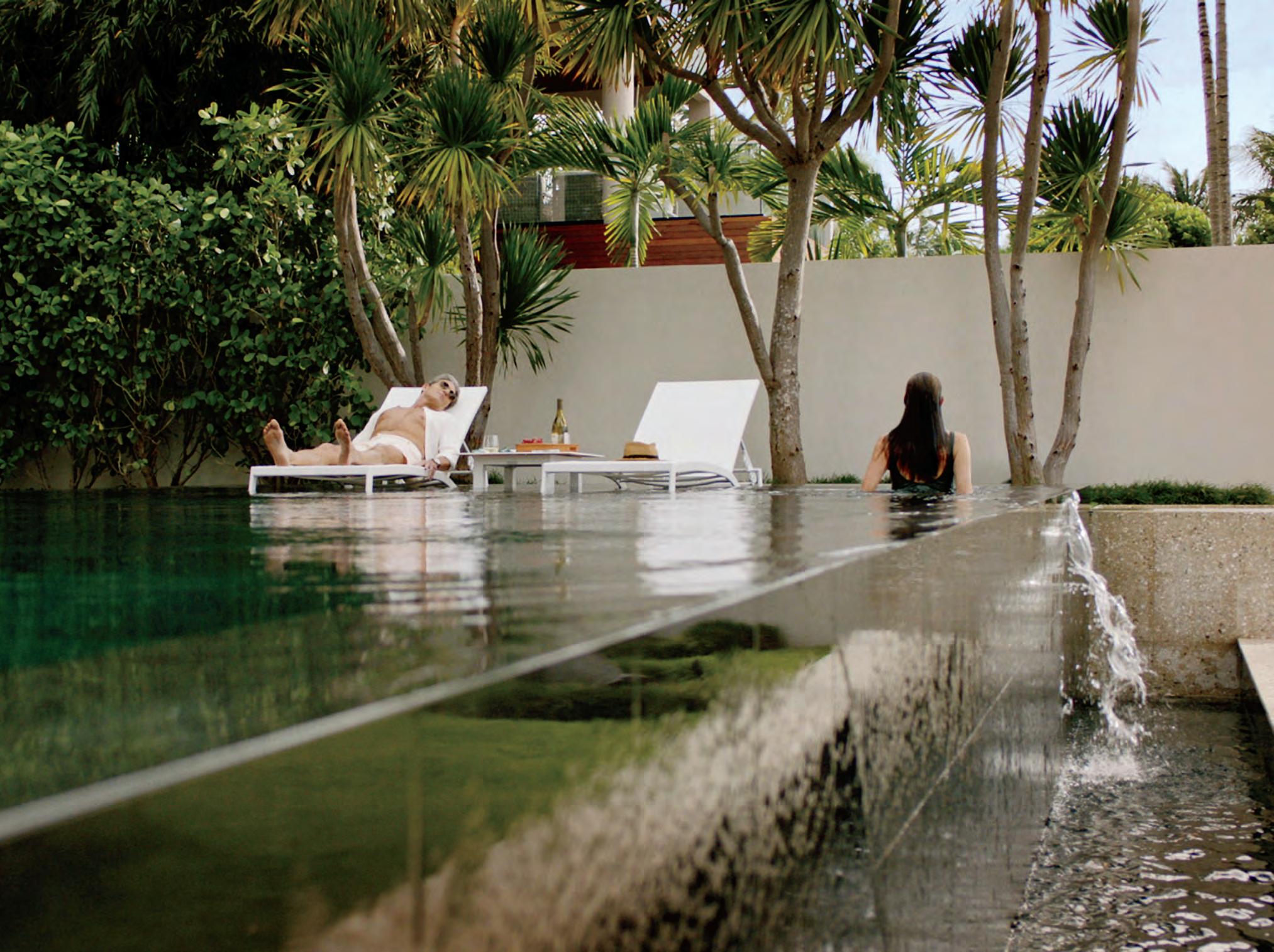
The Corcoran Group is a licensed real estate broker located at 590 Madison Ave, NY, NY 10022

FIND YOUR HOME AT CORCORAN.COM
be dreamy be wordless be one be home.
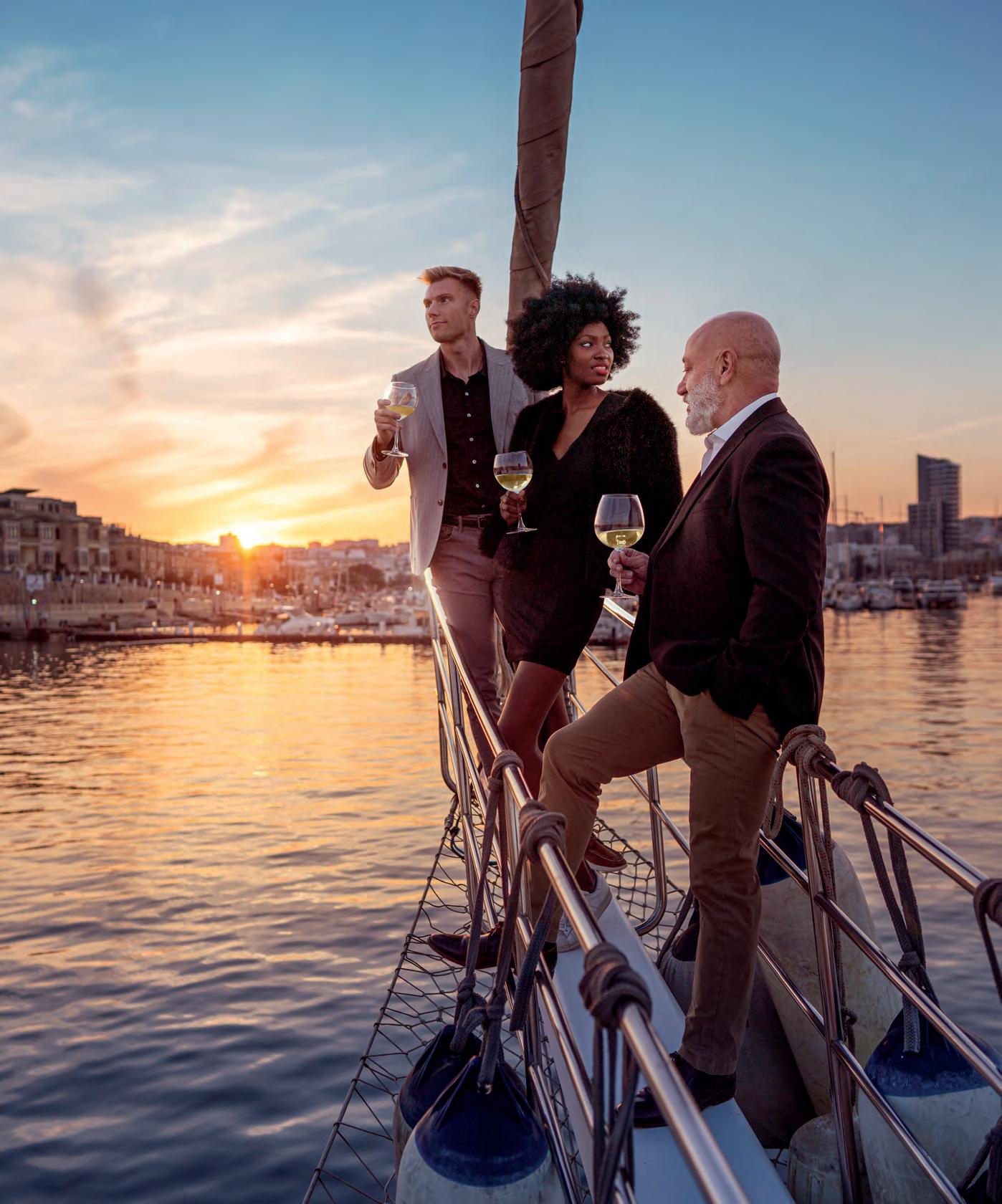
Marsamxett Harbour
luxury
more
Explore
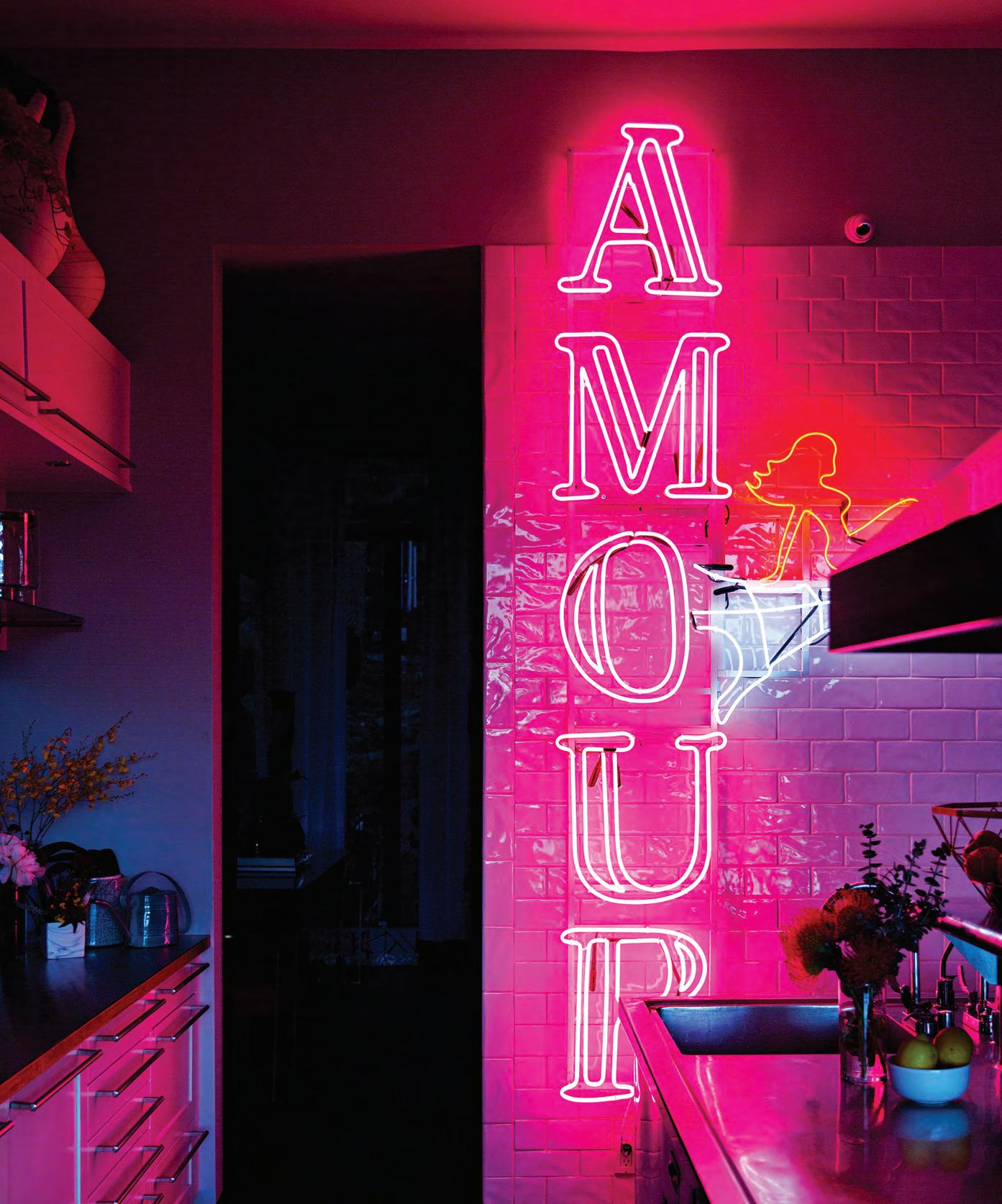
CUISINE DE COEUR A neon-lit kitchen by interior designer Peti Lau. FEATURES 66 INTERIOR LIVES A new guard of interior design icons opens up about redefining classics and bringing innovation—and beauty—to the industry. By Aria Darcella, Ted Hildner, and Hilary Shepherd 74 CLOSE TO HOME Rising design dealer Emma Scully speaks to Avenue about the cultural approach to design she has cultivated in her gallery—just across the street from where she grew up on the Upper East Side. By Ann Binlot CONTENTS SEPT.–OCT. 2023 VOL.47 NO.5 BRITTANY AMBRIDGE
10 AROUND
TOWN
Avenue’s insider preview of all that’s new and noteworthy: The eyes of Iwan Baan and a chic New York coworking space expands south.
BY ANN BINLOT AND JOSHUA GLASS
14
RESTAURANTS
The return of the power lunch, with a twist.
BY ROBIN DOLCH
CULTURE
20
FACTORY GIRL
Outrageous and outspoken artist Ashley Longshore is storming NYC with a new space for the creative class that promises to bring a Warholian spirit to SoHo.
BY ZACHARY WEISS
24 SPACING OUT
26 THE FAIREST OF SEASONS
Showcases to discover emerging artists and designers while also encountering the newest and most coveted work by industry leaders.
BY ANNABEL KEENAN
30
BOOK REVIEWS
The transformative allure of architecture is explored in five new tomes. BY TOM SHONE
86 HOLISTIC HEAVEN
If the luxury wellness retreat Shou Sugi Ban House is a cult, one writer vows to become a devout disciple.
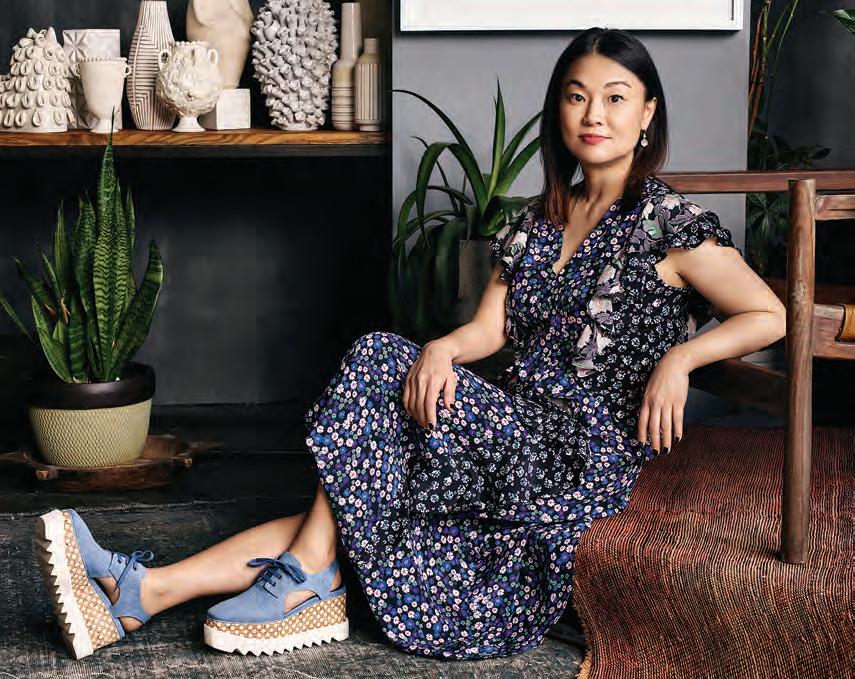 BY PETER DAVIS
BY PETER DAVIS
92
TRAVEL NEWS
How the Hotel La Palma created a picture-perfect escape on the water in Capri.
BY ZACHARY WEISS
THE CITY
33
D&D DIRECTORY
A guide to New York’s eminent design hub.
JOURNEYS
78
94 NEW YORK REAL ESTATE OF MIND
106 NOTORIOUS NEW YORKERS
Jim Fisk’s financial crimes nearly took down a presidency. But his comeuppance came from an unusual source: his mistress’s new boyfriend. Avenue untangles the dirty deeds of the robber baron lost to time, and the affair that undid him.
BY ARIA DARCELLA
108
Q&AVE
PADDLING OUT IN PARADISE
A surf enthusiast treks to Indonesia for a week of hanging ten at Bali’s Uluwatu Surf Villas.
The city is back big time, and the market is booming. Real estate industry leaders and insiders break down the trends, from trophy apartments to the co-op craze to a serious lust for over-the-top amenities.
In 2007, Christian Siriano won Project Runway, launching his career in fashion. These days, the 37-year-old juggles red-carpet gowns with a booming interior design business. Avenue speaks to him about furniture, his famous friends, and why you will never catch him in a pair of Crocs.
BY PETER DAVIS
BY JULIE DANNENBERG
102 WHOLE NEW YOU
KEENAN
Iranian-German artist Nairy Baghramian discusses her discipline-defying works, which are on view this fall in major institutions, from the Met to the Aspen Art Museum. BY ANNABEL
BY JOSHUA DAVID STEIN
From tailors to dermatologists and more, New York has a new crop of luxury services and providers dedicated to keeping you looking your best.
BY PETER DAVIS AND LULU LARKIN
GUTTER CREDITS TKTKTKTKTKTKTKTK; 4 AVENUE MAGAZINE | SEPTEMBER—OCTOBER 2023
COVER:
avenuemagazine.com
Illustration by Cecilia Carlstedt
STAR RISING Interior designer Young Huh.
MICHAEL SCHWARTZ
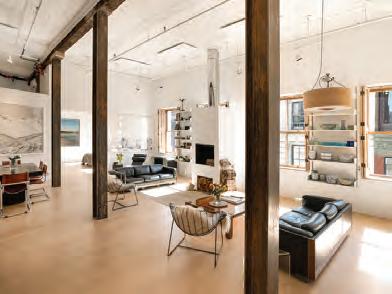
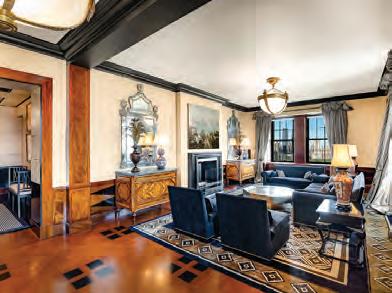
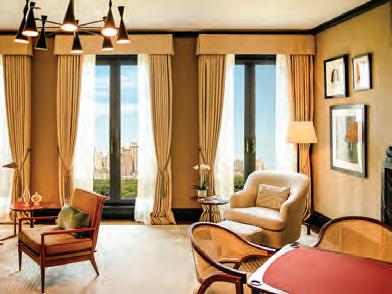
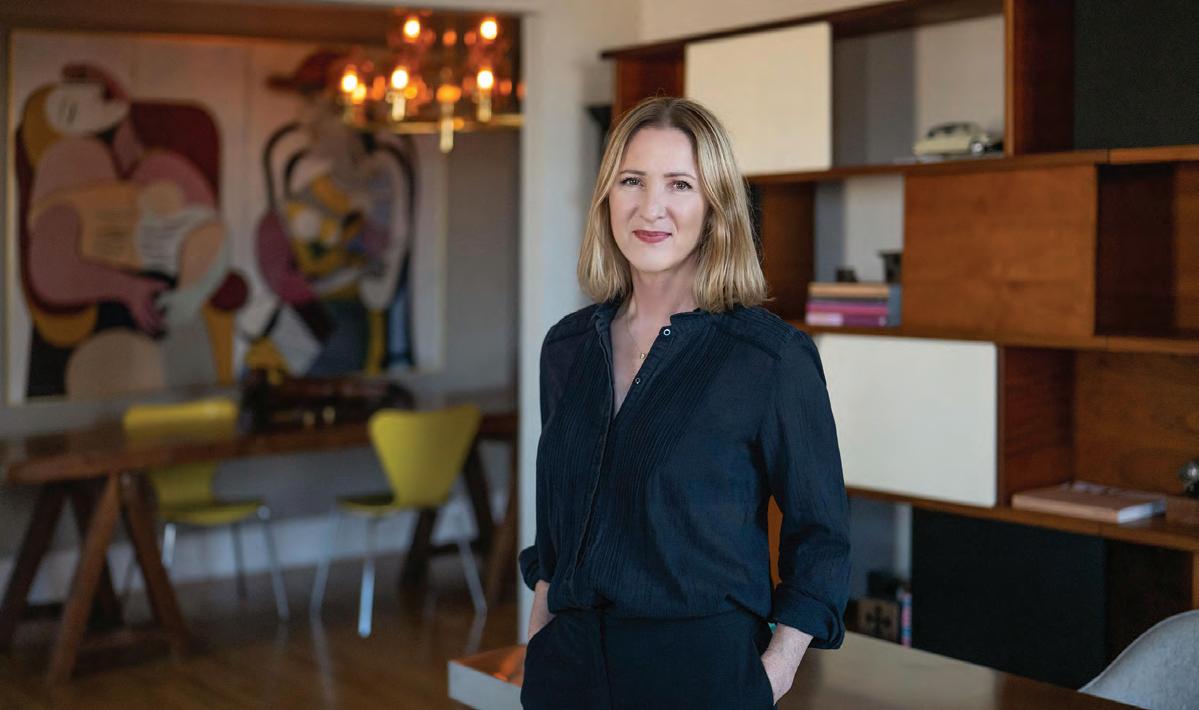

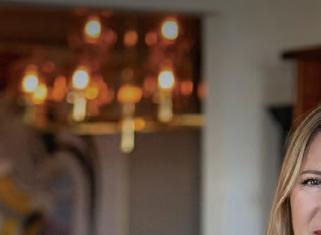
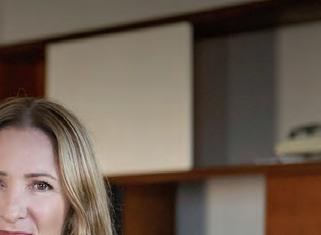
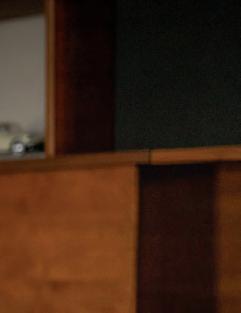



33 GREENE STREET, PHW A SoHo Penthouse Aerie with Expansive Roof Deck Web# 22351747 BROUGHT TO YOU BY MANHATTAN’S PREMIER GLOBAL ADVISORY TEAM FASANO FIFTH AVENUE Thierry Despont Furnished Short Term Residences Web# 22069886 THE PIERRE, RESIDENCE 2704 Central Park Views and Legendary Service Web# 22057108 EXCEPTIONAL AND ARCHITECTURALLY SIGNIFICANT PROPERTIES WORLDWIDE 575 MADISON AVENUE, NY, NY 10022. 212.891.7000 © 2023 DOUGLAS ELLIMAN REAL ESTATE. ALL MATERIAL PRESENTED HEREIN IS INTENDED FOR INFORMATION PURPOSES ONLY. WHILE, THIS INFORMATION IS BELIEVED TO BE CORRECT, IT IS REPRESENTED SUBJECT TO ERRORS, OMISSIONS, CHANGES OR WITHDRAWAL WITHOUT NOTICE. ALL PROPERTY INFORMATION, INCLUDING, BUT NOT LIMITED TO SQUARE FOOTAGE, ROOM COUNT, NUMBER OF BEDROOMS AND THE SCHOOL DISTRICT IN PROPERTY LISTINGS SHOULD BE VERIFIED BY YOUR OWN ATTORNEY, ARCHITECT OR ZONING EXPERT. EQUAL HOUSING OPPORTUNITY. Erin Boisson Aries | Lic. Assoc. R. E. Broker O 212.350.2210 | M 917.701.7012 earies@elliman.com
Editor’s Letter
t Avenue, we see the world through a stylish lens, always searching for the people, places, and things that create and contribute to the fascinating, ever-evolving culture of New York.
This issue we focus on interior design. “New York is back!” is the mantra we keep hearing from real estate power brokers, who are selling more apartments than ever (see our NYC market report on page 94), and the cultural cognoscenti, like artist Ashley Longshore, who is opening a new gallery in SoHo. “[This city is] the absolute creative hub of America, much less the world,” she declares. We could not agree more.
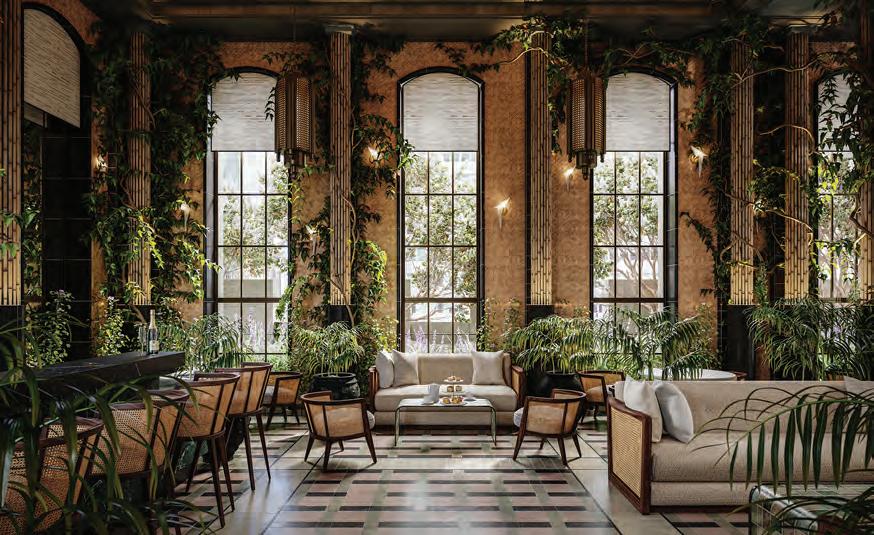
Post-post-pandemic, people are returning to New York in droves. The younger set, eager to make their mark in Manhattan, have driven up the rental market and co-ops have become as hot as the condos in the futuristic skyscrapers offering IMAX-style views of Central Park and the stunning skyline. And with all these new apartments being bought, interior designers have never been busier. In this issue, we introduce you to the New Guard of Design: six rising stars who are reimagining how we live, from the Upper East Side and Florida to the Hamptons and the South of France.
Of course, New York never really went away. Sure, some people took a time-out in Palm Beach—or even tried living in the Hamptons full time. But the city is and always will be the beating heart of international style and culture. As the popular new catchphrase goes: “New York or nowhere.”
See you around town,
PETER DAVIS Editor-in-Chief
Like and follow us at @AVENUEinsider
up for our weekly newsletter at avenuemagazine.com 6 AVENUE MAGAZINE | SEPTEMBER—OCTOBER 2023
Sign
A
NOË AND ASSOCIATES
OF THE
/ COURTESY
BOUNDARY
PARADISE PRIVÉE
The private lounge on the 25th floor of the Waldorf.


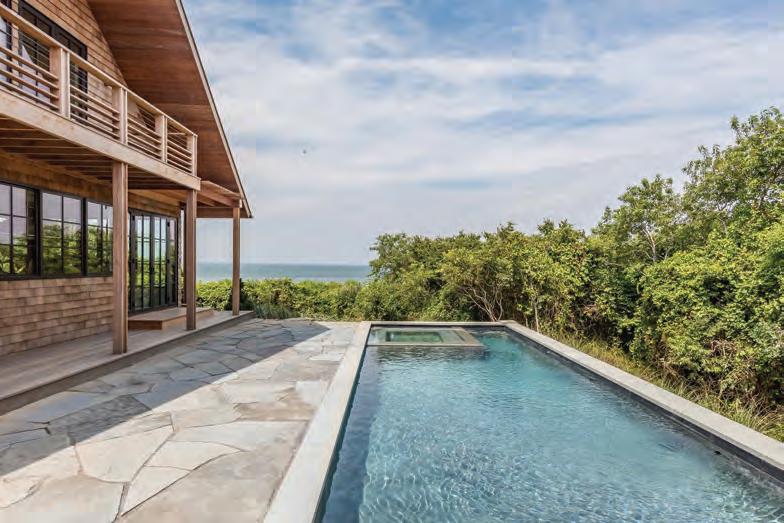


Mickey McCranor is Avenue’s new deputy photography editor. He began taking photos of musicians in high school, bringing his camera to concerts. Eventually he turned pro, with his work appearing in Rolling Stone, Alternative Press, and Billboard, and even traveling across the country with bands. “Working in different areas of the magazine—culture, food, travel—allows me to help our designer develop a specific feel for each issue,” he says of joining Avenue. “The hardest part is always selecting which images to include. There are usually so many good ones.”
Ann Binlot (Beyond the Building, page 10) is a New York-based writer who has covered everything from fashion and art to tech and travel. Her work has appeared in the Wall Street Journal, T magazine, and Document Journal, among other publications. Binlot’s multiple stories for this issue include a piece about Dutch photographer Iwan Baan’s new show at the Vitra Design Museum. “Iwan has a way of seeing how a particular structure or circumstance affects both the place and the people who encounter it,” she says. “His work shows a personal perspective that typical architectural photography often misses.”
Alexander Thompson (Whole New You, page 102) is a New York City photographer who has worked with musicians such as Blondie, Boy George, Yungblud, and Sonic Youth. His work has appeared in i-D, Nylon, and Paper. Additionally, he is the cofounder of Ponyboy magazine and the creative director of Reserved magazine. For this issue, he photographed barber Moses Rubinov. “I love the old-school aesthetic of being in a barber shop,” says Thompson. “Sitting in the chair, having my hair cut, the smell of the hair tonic and aftershave, and seeing other gents—good men’s grooming is a must!”
Hilary Shepherd (Interior Lives, page 66) is a Brooklyn-based fashion writer with bylines in CR Fashion Book, Teen Vogue, and Vice, among other publications. Currently she is a beauty editor for Refinery29. For Avenue, she pivoted from her usual beat to the world of interiors. “Like many, the pandemic forced me to really think about my living space and its impact on my well-being,” she says. “My newfound interest in interior design helped me connect on a deeper level with my interview subjects, but it also made me appreciate them—and their unique visions—so much more.”
EDITOR-IN-CHIEF
Peter Davis
CREATIVE DIRECTOR
Natalie D. Kaczinski
FASHION & FEATURES WRITER
Aria Darcella
DEPUTY PHOTOGRAPHY EDITOR
Mickey McCranor
CONTRIBUTING EDITOR
Joshua Glass

EDITOR-AT-LARGE
Celia McGee
FASHION EDITOR

Nolan Meader
PRODUCTION DIRECTOR
Jessica Lee
COPY CHIEF
Danielle Whalen
CONTRIBUTING WRITERS
Joshua David Stein, Constance C.R. White, Judd Tully, Todd Plummer, Mike Albo, Tom Shone
CONTRIBUTING PHOTOGRAPHERS
Jai Lennard, Nick Mele, Sophie Elgort, Richard Kern, Landon Nordeman, Johnny Miller, Martin Vallin
© 2023 by Cohen Media Publications LLC
AVENUE MAGAZINE
750 LEXINGTON AVENUE, 16TH FLOOR NEW YORK, NY 10022
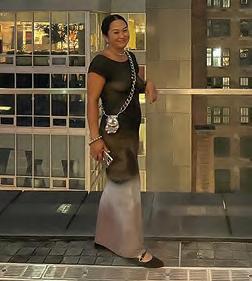
EDITORIAL@AVENUEMAGAZINE.COM
Member of Alliance for Audited Media

PUBLISHER
Julie Dannenberg
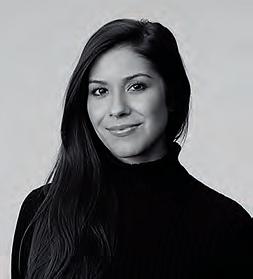
CORPORATE COMMUNICATIONS DIRECTOR
Nick Smith
COHEN MEDIA PUBLICATIONS LLC
CHAIRMAN
Charles S. Cohen
8 AVENUE MAGAZINE | SEPTEMBER—OCTOBER 2023 MICKEY MCCRANOR: COURTESY OF MICKEY MCCRANOR; ANN BINLOT: MONICA SALAZAR; ALEXANDER THOMPSON: COURTESY OF ALEXANDER THOMPSON; HILARY SHEPHERD: COURTESY OF HILARY SHEPHERD
IT’S THE FUTURE. YOUR FLOATING LIVING ROOM GIVES YOU PEACE.
BUT CAN IT NAVIGATE TURBULENT NEGOTIATION WATERS?
THAT STILL TAKES MASTERY. 150 YEARS AND COUNTING.
1. The Bristol, Unit# 2203 West Palm Beach, FL. 5BR. 5.5 Bath. $29M. Web# 2000443459. Pat McInerney 561-758-0759 Sylvia James 561-371-0303
2. Palatial Perfection on the Park Upper West Side, NY. 6BR. 5.5 Bath. $17.99M. Web #20864327. Lisa K. Lippman 212-588-5606

3. Hamptons Oceanfront Dream Amagansett, NY. 4BR. 3 Bath. $13.25M. Web# 901761. James J. MacMillan 516-702-5674
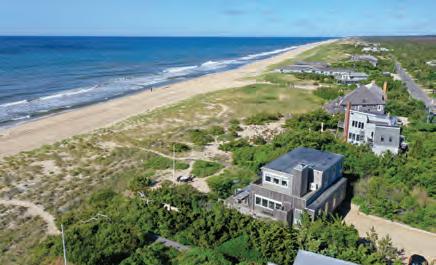

4. Private FloorStunning Park Views Fifth Avenue, NY, NY. 6BR. 5 Bath. $27.5M. Web# 19199709. John Burger 212-906-9274
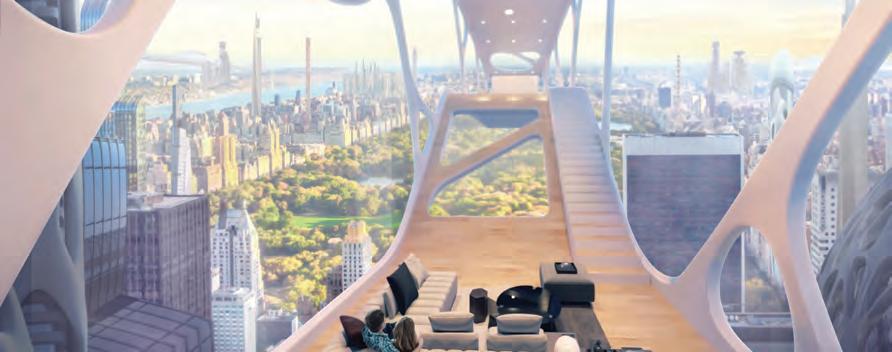
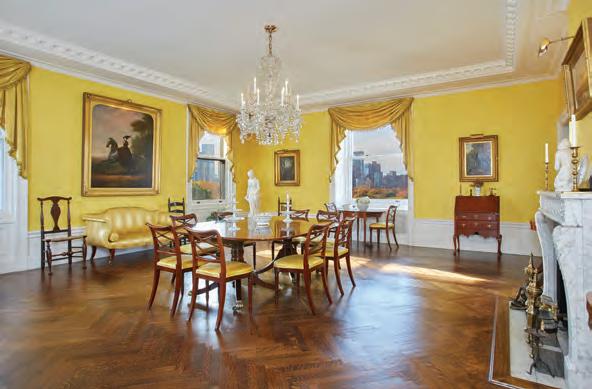
5. Ocean Club’s Most Desirable Location Key Biscayne, FL. 3BR. 3.5 Bath. $4.495M. Web# 11435848. Chris Blackman 305-510-0035
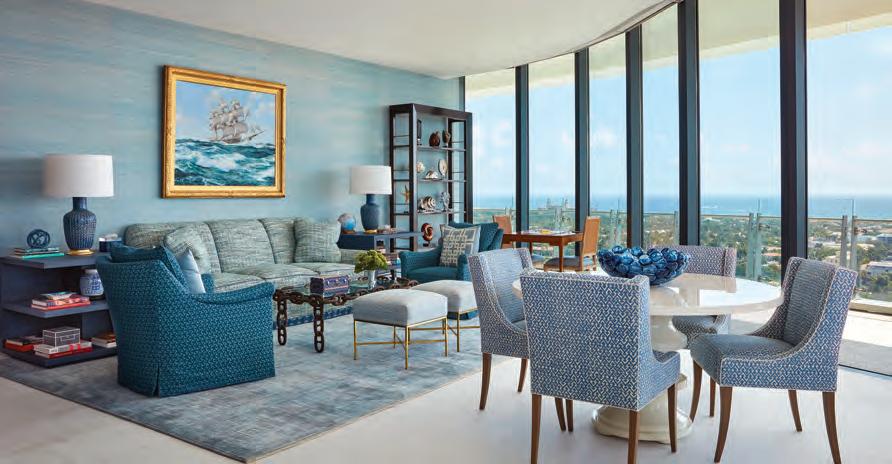

6. Dream Home on Extraordinary Property Wilton, CT. 4BR, 3.5 Bath. $2.699M. Web# 170595127. Lisa Graham-Wanzell 917-892-1700
Mastery of the Craft. It’s Timeless.
1 2 3 5 6 4
AROUND TOWN
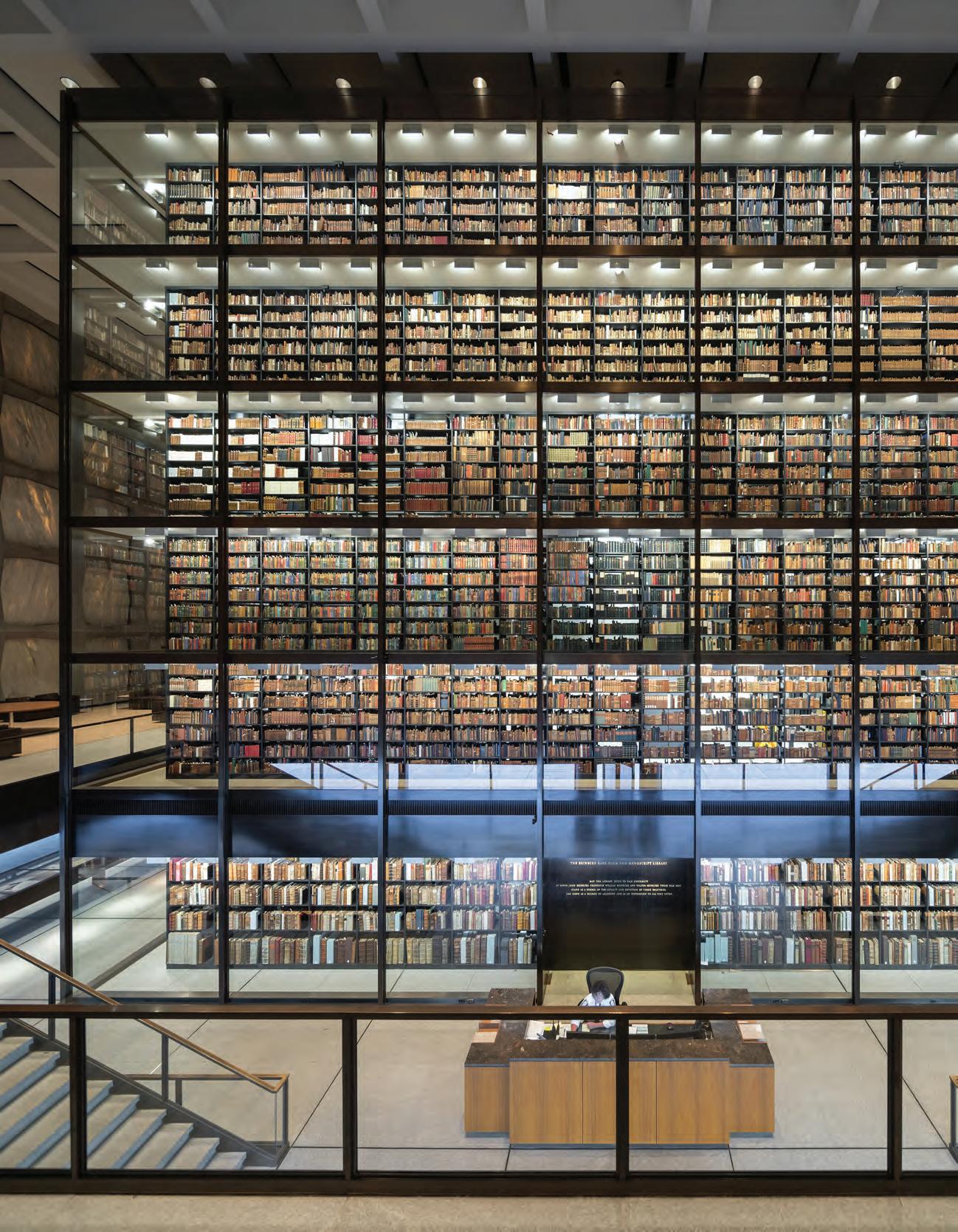
Beyond the Building
For the last 20 years, Dutch photographer Iwan Baan has traveled the globe photographing buildings by the world’s most famed architects: Rem Koolhaas, Zaha Hadid, David Adjaye, and Herzog & de Meuron, to name a few. But don’t call him an architectural photographer. “There’s so much more,” he says emphatically. “It’s much [more] about capturing a moment in time: what’s happening there, how people are enjoying or adapting to a place, and what makes it specific.”

From now through March 2024, the Vitra Design Museum in Weil am Rhein, Germany, is exhibiting a survey of Baan’s work in an eponymous show. The largest retrospective of the Dutch photographer's work to date, the curation spans images from the last three decades of his career, including his most iconic images alongside lesser-known works that show viewers a different side of Baan. “Iwan presents architecture not as an abstract ideal, but rather as the setting of everyday life,” explains museum curator Anna-Mea Hoffmann. “He is particularly interested in what happens after buildings are occupied, how they are used, and how they take on a life of their own beyond the influence of the architects.”
Baan had been working as a documentary photographer without a specific focus in the early-aughts until, in 2004, he was allowed the opportunity to photograph a new building by Koolhaas through a mutual colleague who was working with the Dutch architect. The Office for Metropolitan Architecture (OMA) cofounder was impressed by Baan’s perspective. “Rem asked me to come over and, suddenly, from one day to another, it was all sort of architects around me,” remembers Baan. At the time, OMA had just completed several major projects around the globe—the Seattle Central Library, the McCormick Tribune Campus Center in Chicago, the Netherlands embassy in Berlin, and the Casa da Música in Porto. After that, Koolhaas put Baan on a plane to Seattle, and from there things fell into place. Baan has since become the go-to photographer for starchitects.
New Yorkers who were in the city during Hurricane Sandy in 2012 will immediately recognize Baan’s aerial photograph of a partially blackedout Manhattan. He happened to be in the city when the devastating storm hit that November and, while many pilots would not fly out, Baan already had one booked for another project who was willing to take him up. “I took that picture, and it came out on the day that electricity went back on,” explains Baan. “It suddenly transformed the notion of the viewer of the picture to what the city looked like, and what makes it so unusual and specific for that moment.” His photograph, which juxtaposed the darkness of downtown Manhattan against bright uptown, covered New York magazine’s November 12, 2012, issue, and went on to win the award for the ASME Cover of the Year.
But, of course, Baan’s lens goes beyond grand cityscapes and shiny starchitect-designed buildings. Plans to complete the Centro Financiero Confinanzas, known as the “Torre de David,” a 45-story skyscraper in Caracas, Venezuela, were scrapped in 1993 after the real estate developer behind the project passed away. With the economy in disarray and most Venezuelans living in poverty, people started inhabiting the unfinished structure, creating their own communities and innovative systems of living. Baan documented the structure for six years, noticing how its residents thrived within the building despite their circumstance. “People started to build these highly individualized spaces inside that construction site,” Baan says. “For them, it made total sense and became a much safer place than the regular barrios. Around the city there are these highly unusual ways of how people make a living.” Baan’s photographs show both a macro and micro view of the Torre de David; he captures the grid-like structure of the windows and its concrete curves, while also displaying the humanity inside it—a man lifts a barbell high above the city in one image, while a family sits on a bed watching the glow of a television set in another. The body of work earned him a Golden Lion at the 2012 Venice Biennale of Architecture.
Even though Baan made his name taking photos of buildings by the world’s most famous architects, his images are more about the way lives are impacted through architecture. “I’m really interested in the life after,” says the photographer. “When architects leave, and people take over the place.” —ANN
BINLOT
SEPTEMBER—OCTOBER 2023 | AVENUE MAGAZINE 11
HIGHER ED
A 2019 Iwan Baan photograph of the Beinecke Rare Book & Manuscript Library at Yale University in New Haven, Connecticut, designed by Skidmore, Owings & Merrill.
IWAN BAAN
Nice Work
Ciaran McGuigan is grateful for direct flights between New York and Nashville. The Irelandborn furniture designer and founder of the Malin has a personal connection to both: New York—his second home— is where his design-forward member’s club began, and Nashville is where his wife, Logann, grew up. It’s an entanglement that becomes even more important this fall when the Malin open doors to not one, but two locations in the Tennessee capital.
“Nashville is one of the fastest-growing cities in the United States,” McGuigan tells Avenue . “There are huge discerning taste levels here, something you notice the minute you arrive.”
Aesthetic discernment is perhaps the easiest entryway into the Malin, which McGuigan, who also owns the design brand Orior Furniture, opened in 2021. A high-end solution to the cookiecutter model of the coworking spaces that have spawned across Manhattan and the continental U.S., the Malin is a beautiful reprieve for ideation. It began in a cast-iron loft in SoHo, which just recently expanded to three floors, and then quickly opened two additional locations in creativefrequented neighborhoods: in Williamsburg, in the brutalist hotel the William Vale, and in a historic artist town house in the West Village.
While every club offers its own unique experience, there are several overarching values that each of the Malins share. Most notably, it’s their warm, elevated interiors, spearheaded by the brand’s in-house design team, featuring Calico Wallpaper and Schumacher textiles, with Flos lighting, alongside locally made craft pieces, including Irish crystal tabletops. There are also the standard resources that everyone needs to work—communal spaces to
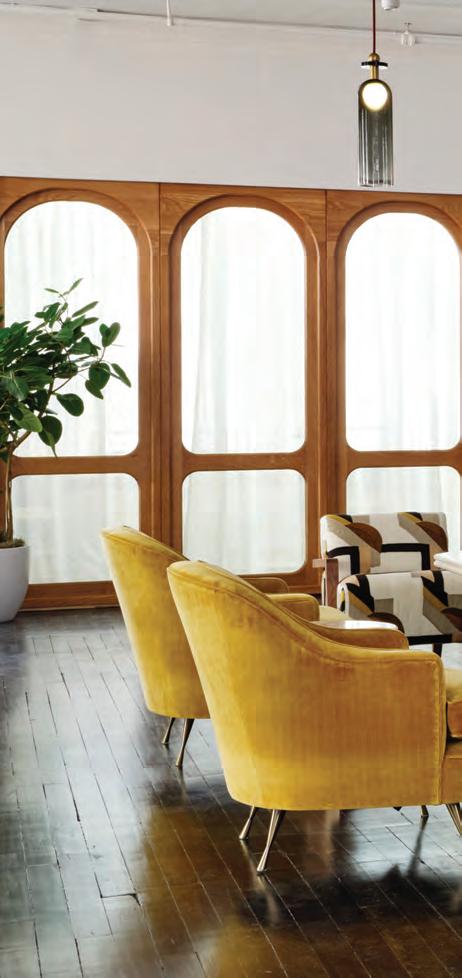
spread out, well-stocked kitchenettes, privacy booths, and dedicated desks—as well as special services offered à la carte. “Our executive assistant program is one of the things I’m most proud about,” says McGuigan, who links the club’s success to a small and curated membership base. “Do you need an expense report filed? An errand ran? Our EAs are trained to do whatever members need. It’s our business to know what our members are working on—not in a nosy way, but to be there to assist them on a daily, weekly, monthly, or whenever basis.”
The Malin’s two new Music City locations— the first in Nashville’s Wedgewood-Houston neighborhood and the second an approximate five-minute drive away in South Gulch—continue the mission of their New York predecessors, with the added bonus of scale. “These are huge!” reports McGuigan from the Wedgewood-Houston location, housed in the onetime Nashville Warehouse Co. building, which sits on 16,000 square feet of space. “Our kitchen here is three times as big as our New York locations, and we have a gorgeous outdoor terrace.” The Malin South Gulch, which was designed by Kingston Lafferty Design, is in the city’s former Voorhees Building, and has 58 dedicated desks, seven private offices, four meeting rooms, three lounges, and one library all held in its 12,000-square-foot space.
The founder is sure that not only will both the Malins excite the local community, but they’ll also serve as a familiar setting for traveling New Yorkers who have become accustomed to beautiful working conditions. “I genuinely believe we are the future of what working will look like,” predicts McGuigan, who has his sights on other cities once he’s made his mark in Nashville. “You have to entice people back to the office, and create an environment unlike any other. That’s what we’re doing.”
—JOSHUA GLASS
THE NEW OFFICE
ETIQUETTE The Malin’s new locations in Nashville continue its mantra of working beautifully—with designer accoutrement.
12 AVENUE MAGAZINE | SEPTEMBER—OCTOBER 2023 AROUND TOWN
“NASHVILLE IS ONE OF THE FASTESTGROWING CITIES IN THE UNITED STATES. THERE ARE HUGE DISCERNING TASTE LEVELS HERE, SOME THING YOU NOTICE THE MINUTE YOU ARRIVE.”
 —CIARAN MC GUIGAN
—CIARAN MC GUIGAN
SEPTEMBER—OCTOBER 2023 | AVENUE MAGAZINE 13
COURTESY OF THE MALIN
“
The Return of the Power Lunch, With a Twist
BY ROBIN DOLCH
The power lunch is making a comeback, but it is a lot more social, rather than just transactional, and more fun,” declares Ahmass Fakahany, CEO of Altamarea Group—the team behind the award-winning Marea—of his newest Asianinspired restaurant, 53.

What’s also different, other than the clientele, is that today’s generation of Midtown power lunch spots are veritable works of art before you even pick up a menu. The three-story space that 53 occupies sits underneath MoMA’s new extended wing and looks like a painting itself, with a series of sweeping, colorful “blades” that flow from the ground floor into the cellar. The arty vibe goes one step further: diners are made to feel like they are on display, with downlights and pendants illuminating each table from above for dramatic effect.
Foodies fear not: the artistry continues with the dishes courtesy of Singaporean chef, Akmal Anuar. Lunch can be ordered prix fixe ($53 per person) or à la carte. Start with the “Duck Pie Tree,” a one-bite treat that is an explosion of exotic flavors. The crispy wontons with shrimp were so addictive that my dining companion asked for a second order, as well as extra helpings of the sweet chili dipping sauce, a duck sauce of sorts that in lesser hands would be mundane, but here is made extraordinary with makrut lime leaves.
For the main course, we were blown away by the jalapeño miso-marinated black cod with ginger, cilantro, and scallion over crispy rice, which was cooked and served in a clay pot, allowing all the flavors to meld together, with Thai chili soy sauce poured over the dish as the waiter stirs the pot tableside. Another standout: the Hainanese chicken, modeled after Singaporean street food and now an instant signature dish. A beloved Southeast Asian
14 AVENUE MAGAZINE | SEPTEMBER—OCTOBER 2023 AROUND TOWN STUDIO 53
NOAH FECKS
The bar at 53 has become a Midtown hot spot.
THE ART OF THE ENTRANCE
classic that is poached to perfection, with ginger, scallion, and crispy skin. It’s not on the lunch menu, but they’ll gladly serve it if you ask nicely.
Don’t leave without dessert, specifically the watermelon granita, an Italian ice-style confection with a yuzu crème fraîche sorbet at the bottom and a strawberry consummé poured on top. Also be sure to try the mango pudding with oro blanco (in the grapefruit family, I didn’t know either), sago, and homemade Greek yogurt ice cream.
If you happen to live in the residences above the restaurant, at the luxury Jean Nouvel condominium tower 53 West 53, you arrive at the restaurant like the ultimate VIP, by a private elevator that bypasses the street entrance, giving a whole new meaning to the “power lunch.”
Nostalgic for old-school Midtown power dining with a modern flair? Look no further than the chic Brazilian import Fasano, now in the former second home of the Four Seasons restaurant on
East 49th Street. Given the pedigree, Fasano was destined to be a power spot. It’s not the business suit haunt of your father. With a “healthy mix of expense accounts, socialites, and Latin American powerhouses, it’s younger and chicer,” reports the sommelier.
This is Fasano Group’s first venture in the U.S., and the over-120-year-old lifestyle/hospitality company spared no expense in the design, courtesy of renowned Brazilian architect Isay Weinfeld, who also did the nearby Le Pavillon. From the large, widely spaced-out tables to the immaculately dressed staff and the dedicated handbag stools, you know you are somewhere expensive, and that doesn’t include the prices (although it’s still more affordable than its Brazilian counterparts).
Fasano serves northern Italian fare, with a three-course Restaurant Week lunch prix fixe option ($60) that is so popular that they plan to keep it on the menu indefinitely. We opted
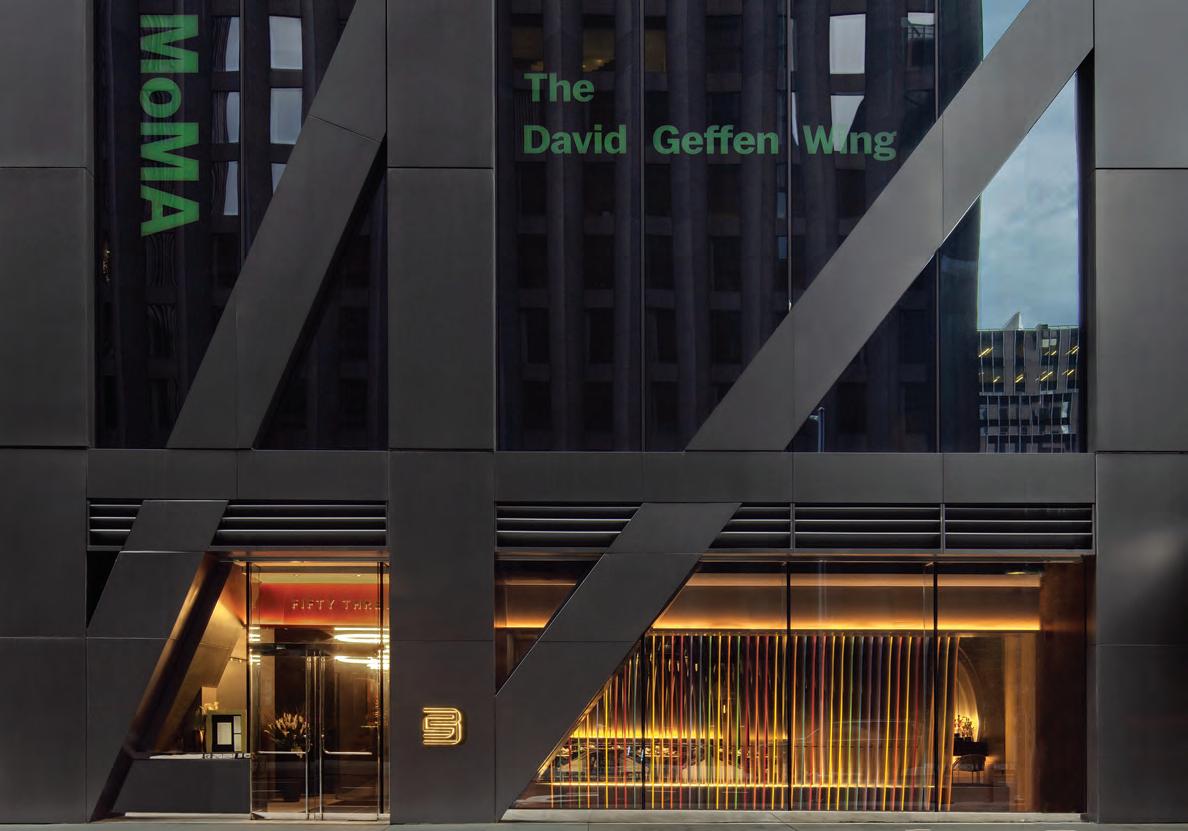
SEPTEMBER—OCTOBER 2023 | AVENUE MAGAZINE 15 NOAH FECKS
From the large, widely spaced-out tables to the immaculately dressed staff and the dedicated handbag stools, you know you are somewhere expensive, and that doesn’t include the prices.
The front door to 53 occupies the same building as the new MoMA annex.
to empty our bank accounts and go à la carte, starting with the filet mignon carpaccio with taggiasche olives and pine nuts and the panzanella which, in my opinion, is the best version of the tomato, mozzarella, and bread salad in the city. This was followed by a midcourse of pastas. You can’t go wrong with the spaghetti alla chitarra, with Sicilian Mazara del Vallo red shrimp and mullet bottarga. They will do half orders of their Primi Piattis by special request, so take advantage of that to try more than one. We had the ravioli ricotta e spinaci with parmigiano, a perfectly rendered version but one-upped with the addition of shaved black truffles on top (and white truffles in the winter). My dining companion, Marco Moreira, a well-traveled Michelin-starred chef, declared: “You can’t find better, even in Italy.”
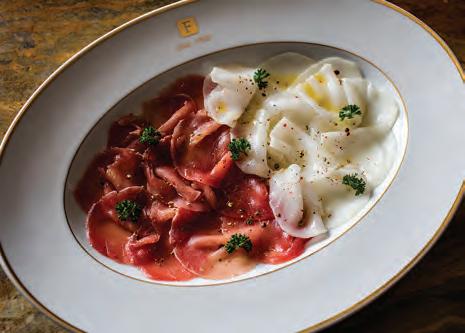
Because it was lunch not dinner, we opted for the dover sole for two, which was filleted table-side with meunière sauce, and served with simple grilled asparagus. We were tempted by the


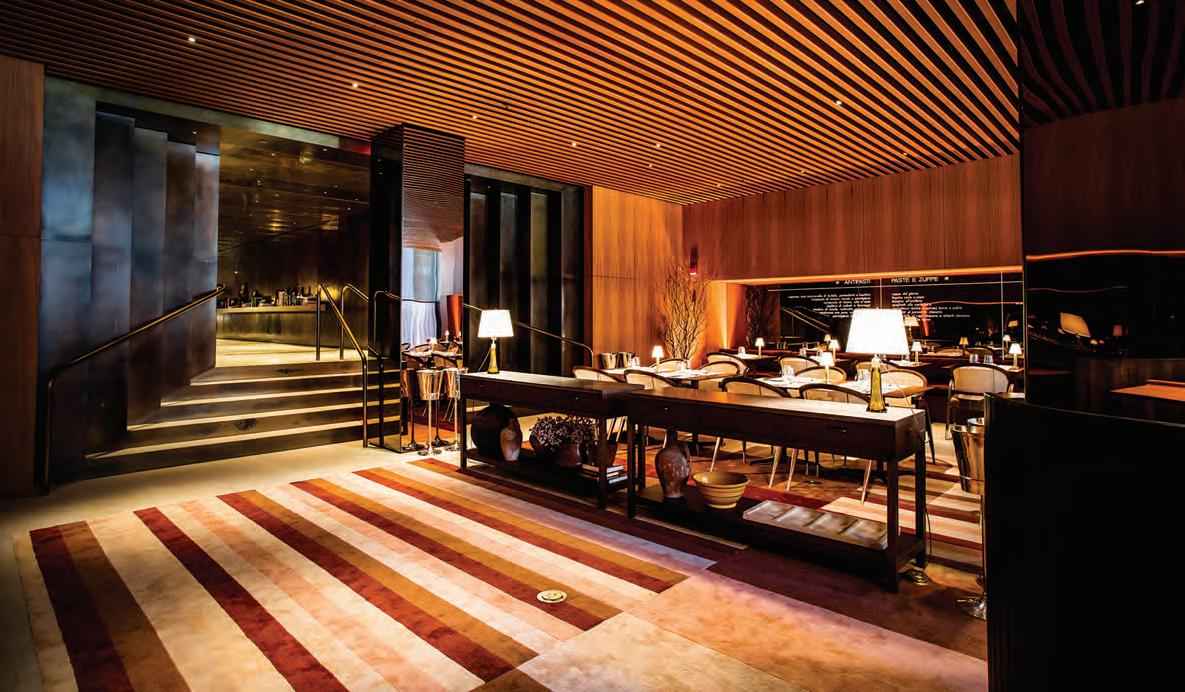
16 AVENUE MAGAZINE | SEPTEMBER—OCTOBER 2023
MATTHIEU SALVAING
AROUND TOWN
BRAZILIAN BEAUTY Fasano, the new Italian restaurant by Gero Fasano (center) is making Midtown a seriously social destination.
be elegant be refined be glam be home.
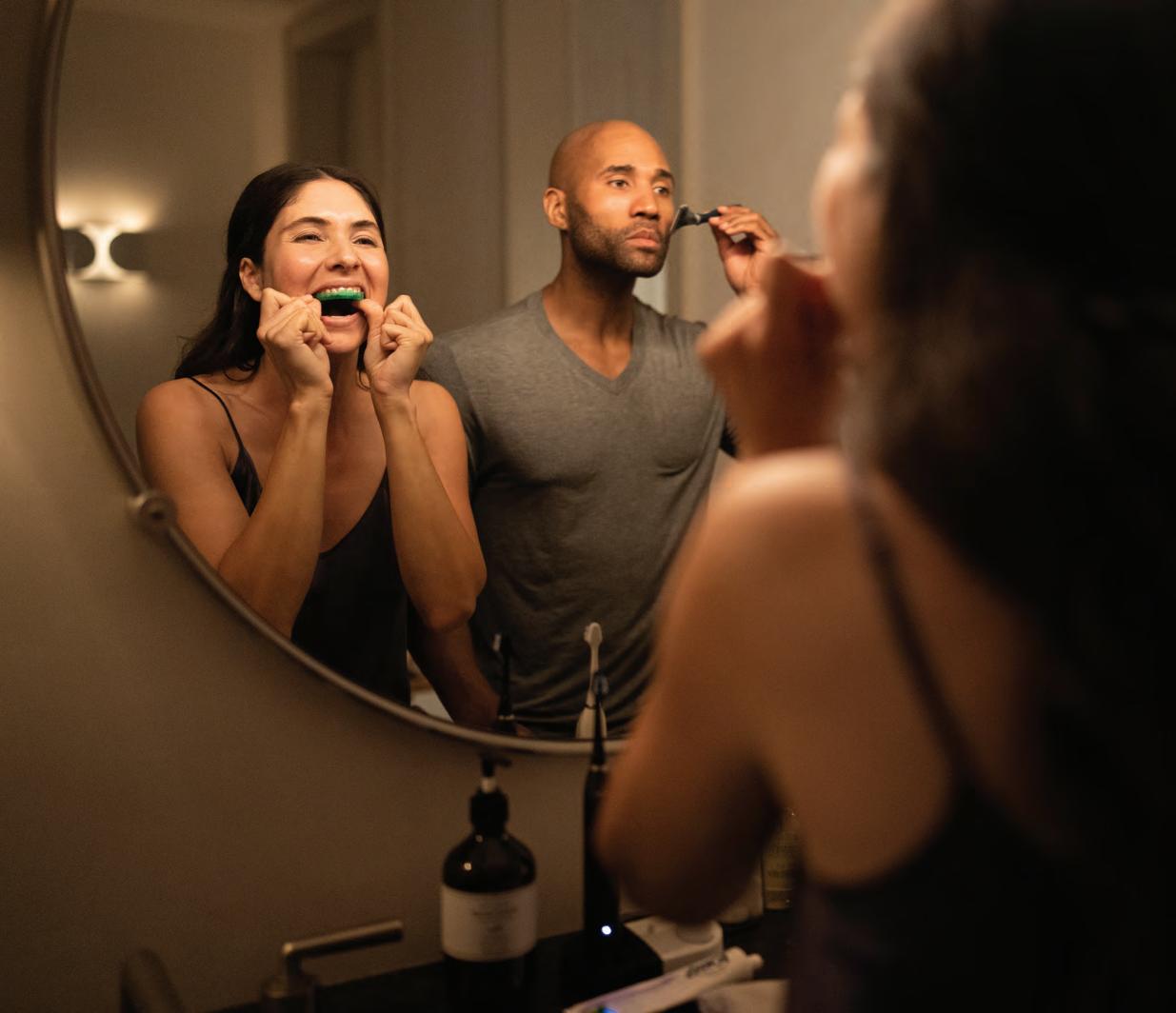
The
is a licensed real
located at 590 Madison Ave, NY, NY 10022
Corcoran Group
estate broker
FIND YOUR HOME AT CORCORAN.COM
Colorado-braised osso buco, enjoyed by the neighboring table, which came with a stunning-looking risotto alla Milanese, served with gremolata.
We barely saved room for the signature desert: the gelato cremoso alla vaniglia, a homemade vanilla ice cream whose consistency was akin to eating a fluffy cloud, and came with meringue, candied almonds, pistachios, and hazelnuts on the side.
“Monday through Thursday are all the guys closing their multimillion deals. We are seeing the two-martini lunch, the two-bottle lunch all the time,” says our sommelier, noting the restaurant’s impressive 1,000 label wine program, consisting of a large selection of vintage Brunellos and Barolos, perfect for that closing toast. Fasano should have no problem filling every seat and might just need another dining room come 2025, when the new
JPMorgan headquarters opens across the street, bringing an expected 14,000 employees.
No article on the Midtown power lunch is complete without mentioning Avra, the Greek stalwart that opened in 2000 on East 48th Street. After 16 years, they opened a second Avra on East 60th Street—Avra Madison—which immediately became a go-to for titans of business and celebrities. “If you are in real estate or finance,” Stephen Kliegerman, the president of Brown Harris Stevens Development Marketing, says of the Madison Avenue location, “this is the place to see and be seen.”
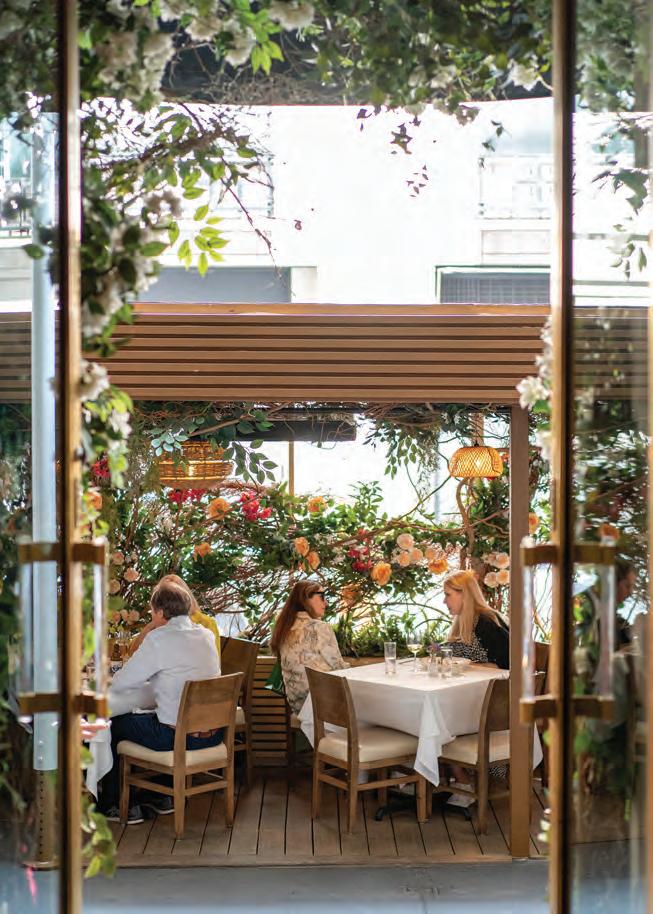
They can’t do much wrong with the food at Avra. The seafood is so fresh it speaks for itself, perfectly grilled with lemon and extra-virgin olive oil. We ordered all the favorites, starting with the
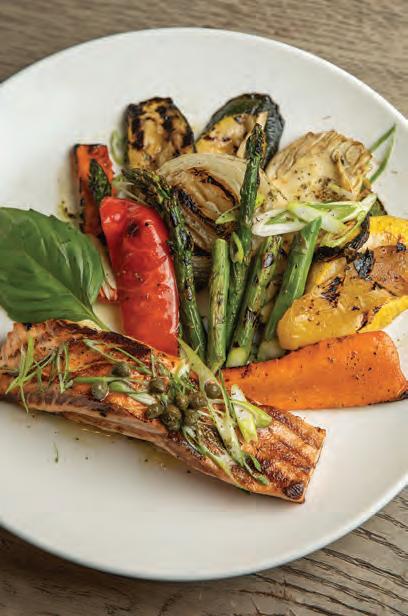
crispy zucchini and eggplant chips, served with a welcome platter of chickpea puree, olives, and grilled bread. Of course, it’s obligatory to order the Greek salad, always with the most magnificent vine-ripened tomatoes, followed by the octopus, branzino, and Carabineros prawns. If you are in the mood for red meat, go for the lamb chops or côte de boeuf, but, then again, why would you when Avra has the best seafood in town?
With a three-course prix fixe of $36.50, seven days a week, Avra stands as a testament to the power of New Yorkers to eat themselves into a great deal, even if there isn’t a great deal to celebrate. During Covid, Avra was always jam-packed and impossible to score a reservation at, even with the largest outdoor dining area in the city. And isn’t that what NYC is all about?
18 AVENUE MAGAZINE | SEPTEMBER—OCTOBER 2023
LIZ CLAYMAN PHOTOGRAPHY
“If you are in real estate or finance, Avra is the place to see and be seen.”
—Stephen Kliegerman
AROUND TOWN
OUTDOOR OASIS The alfresco tables at the Greek eatery Avra are always packed.
TOUCH THE SKY
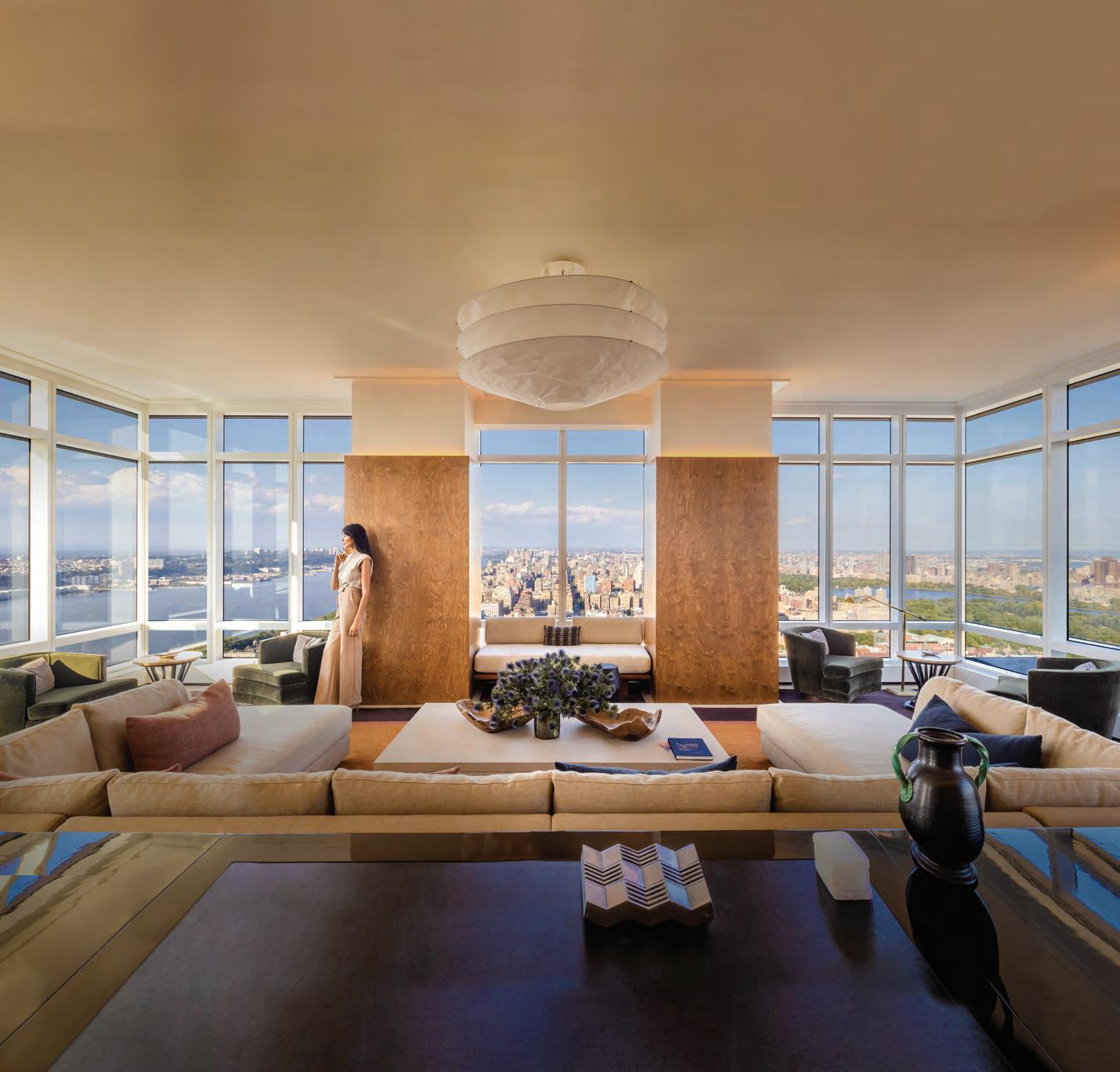
 I AM WOMAN, HEAR ME ROAR Artist Ashley Longshore is ready for the ride.
I AM WOMAN, HEAR ME ROAR Artist Ashley Longshore is ready for the ride.
Factory Girl
Outrageous and outspoken artist Ashley Longshore talks to Zachary Weiss about storming New York with a new space for the creative class that promises to bring a Warholian spirit to SoHo.
There’s no mistaking the work of painter Ashley Longshore. All produced in unapologetically eye-popping colors, there are the portraits of iconic women that have adorned the gallery space at the Diane von Furstenberg store in the meatpacking district since 2019; the series of mylar balloons; and one self-portrait in which the artist is joined poolside by Andy Warhol and David Hockney, though their bodies are substituted for technicolor Care Bears.
There are the glittering exclamations, too. One of her most notable works harkens in all capital letters: “I DO NOT COOK. I DO NOT CLEAN. I DO NOT FLY COMMERCIAL.” Her legions of superfans repeat these words, a mantra of sorts that simultaneously pokes fun at the one percent while also serving as a hopeful manifesto.
This is the essence of an Ashley Longshore work, which can fetch up to $30,000 sold on Instagram alone. Collectors are in on the joke, and so too are those who opt for her more affordable home goods and collaborative products with the likes of Judith Leiber, Rizzoli, Ken Fulk, and Out East wine company.
When Avenue reached the artist at her home in the Louisiana countryside, she was in the final throes of completing a handful of new works,

SEPTEMBER—OCTOBER 2023 | AVENUE MAGAZINE 21
SWAN SONG Longshore’s Floating In a Swan’s Dream, 2023, an acrylic on canvas with mixed media ASHLEY LONGSHORE: MARY ELLEN MATTHEWS; FLOATING IN A SWAN’S DREAM : ACOURTESY ASHLEY LONGSHORE
SHE’LL TAKE MANHATTAN From top: Longshore wants to conquer New York; her ransom note-style piece Cheers to Those Who Wish Us Well All the Rest Can Go to Hell!, 2023, an acrylic on canvas.

but, more importantly, she is overseeing the construction of her new showroom and studio. Due to open this October at 43 Crosby Street in SoHo, it’s a veritable fun house for Longshore loyalists, chock-full of every imaginable hue of paint and glitter and tulle, celebrations spilling into the streets, and surely no shortage of profanity.
You’re in Louisiana right now. When I tell you I’m hot, there’s not a word to express the level of heat that is in Louisiana right now. I’m at my farm in Folsom, and I just keep saying it’s hotter than the devil’s butthole. I’m sitting under a disco ball in my painting studio out in the woods.
You are opening a new space in SoHo. There isn’t an artist on the planet that wouldn’t dream about being in the absolute creative hub of America, much less the world. I’ve had so many collaborations and shows in New York throughout my career, but when I walked into this space, I got chills all over my body, and I saw a flash of the next part of my life, and I was like, “Let’s do this.”
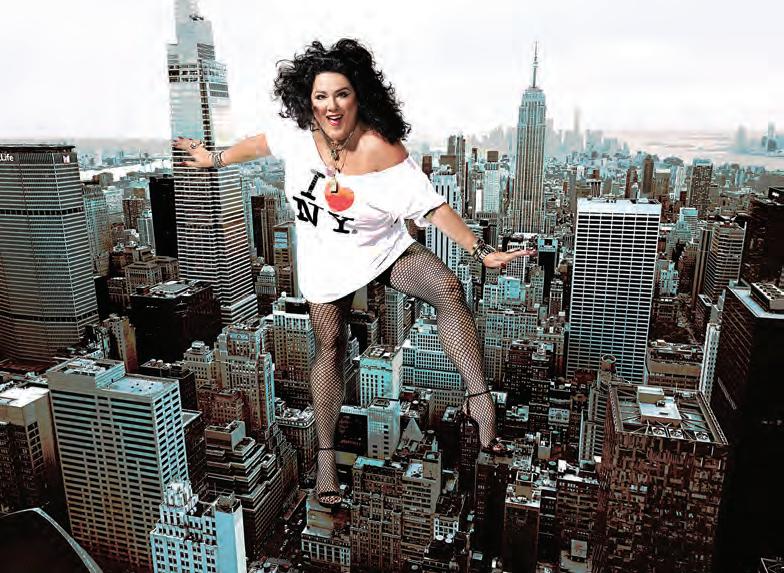
Sounds like your next artistic chapter. Absolutely. We’ve been through this pandemic. “Carpe diem” has never been more important. Being an artist and someone that loves creatives, that thrives on collecting art, and being around artists, I really want this to be a space where I can celebrate them and give them a space to show their work, to have big parties, and raise scholarship money. There’s no better place to do that than New York.
You’re going to have a stage in the space too. The first two people that I want to celebrate in this space are Blaine Krauss and Daveed Baptiste. Krauss is an unbelievable performer. He just had a great show at Joe's Pub. He’s been in Hamilton. The next is Daveed Baptiste, who is an incredible photographer. I would love to give him a space to show his work. There are an infinite number of creatives—everybody’s an artist.
Why SoHo?
Artists belong in SoHo. I want to have a space that is the antithesis of that typical, pretentious gallery scene. The opening installation is as maximalist as it gets. It will be like walking into my brain. It will make you feel something. It may make you fall in love. It may fill your soul with joy. It may make you want to run right out of the door.
22 AVENUE MAGAZINE | SEPTEMBER—OCTOBER 2023 CULTURE
ASHLEY LONGSHORE: MARY ELLEN MATTHEWS; CHEERS TO THOSE WHO WISH US WELL ALL THE RESET CAN GO TO HELL! COURTESY ASHLEY LONGSHORE
SWEET SUCCESS From top: Longshore's painting They Were Drinking Champagne on a Gulfstream. I Was Naked in Bed Eating Cake with My Dog, 2021, acrylic on canvas; Riding Dirty: Portrait of Feet with Turquoise Strappy Heels, Red Toe Nail Polish and Gold Glitter Background, 2018, acrylic on canvas with mixed media and heavy resin topcoat.


You have an impressive collection of art that’s not yours.
Oh yes, there’s Amanda Greive, Wole Lagunju, Pascal Möhlmann, Roxanne Hauenherm, Adam Chuck, Bradley Hart, Chloe Early, and Nora Hall, just to name a few. I want to have a career like Warhol and leave a legacy like Peggy Guggenheim.
It seems like your SoHo space might have a Warhol Factory quality to it.
I want drag queens, full-frontal nudity, bizarre film installations.
New York will love it.
I want that creative freedom in this space. I can’t do that in any city. Let’s say I want some crazy installation. I’m sorry, they don’t have the capability of doing that in Topeka, Kansas, but you know who does? New York City has it all. It’s a buffet of bohemian madness.
Your collectors are very much a part of your cult. They’re not just buying an image. They’re buying my spirit, so I want to give them everything I’ve got. People that get my artwork like to celebrate, and they like to have fun. My mother is the most pretentious person on the planet, so everything I do is in rebellion of that. I was raised to be a little Southern belle. I was raised to bat my eyes and smile if I disagreed with something, and I do the exact opposite.
SEPTEMBER—OCTOBER 2023 | AVENUE MAGAZINE 23
BOTH ARTWORKS: ASHLEY LONGSHORE
“The opening installation is as maximalist as it gets. It will be like walking into my brain. It will make you feel something. It may make you fall in love. It may fill your soul with joy. It may make you want to run right out of the door.”
—Ashley Longshore
Spacing Out
Annabel Keenan talks to Iranian-German artist Nairy Baghramian about her discipline-defying works, which are on view this fall in major institutions, from the Met to the Aspen Art Museum.
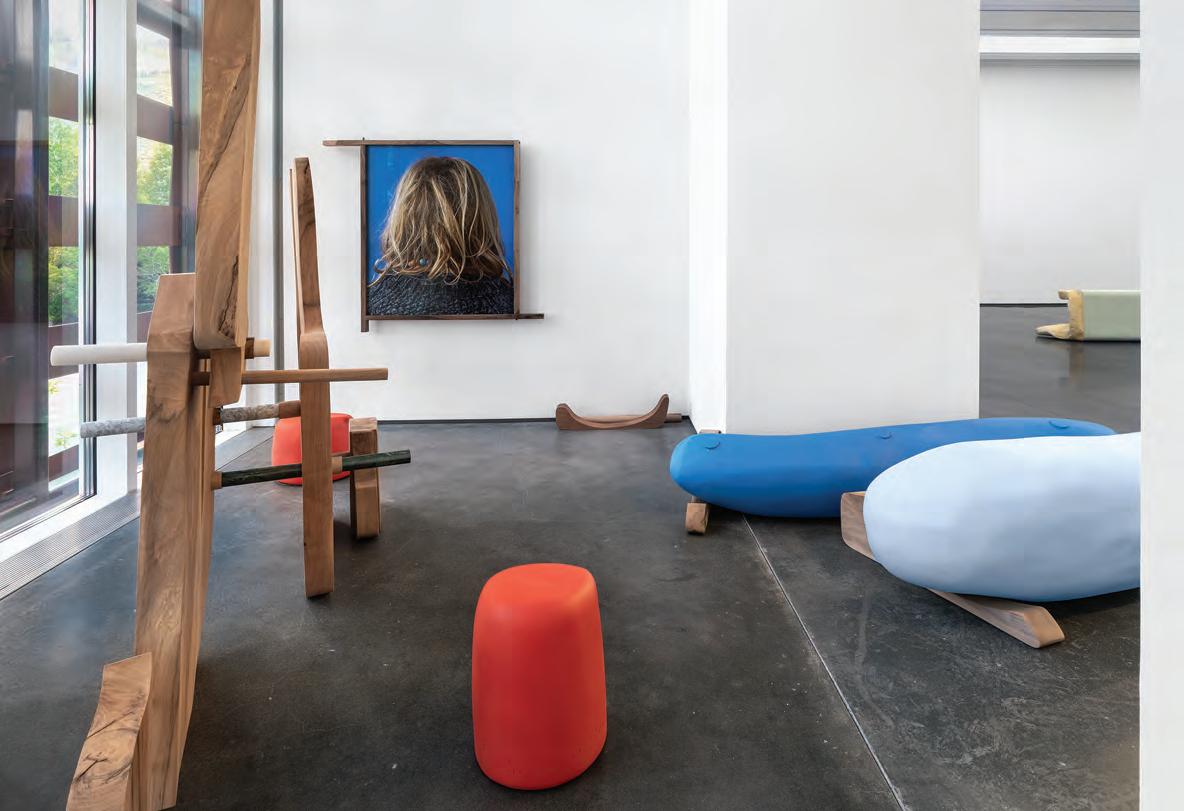
Nairy Baghramian is having quite the year. She has works on view in major institutions across the U.S., including a solo show at the Aspen Art Museum and a new cast-aluminum and stainless-steel sculpture in MoMA’s sculpture garden. This September, the Iranian-German artist embarks on her highest-profile project to date: the coveted commission to create work for the facade of the Metropolitan Museum of Art. Baghramian’s practice pushes the boundaries of disciplines and spans materials: from steel and plaster to resin, wood, and rubber. Her abstract, polychrome sculptures for the Met resemble components seemingly washed up like “flotsam and jetsam.” The commission represents the artist’s first-ever public installation in New York City and marks the fourth time the museum has tapped
contemporary artists to fill the four niches that adorn its iconic entrance.
But the artist has a long relationship with New York. Her debut U.S. solo exhibition was in 2013 at SculptureCenter in Long Island City, an institution she continues to support as a board member. Since then, Baghramian has been featured in several group and solo shows in the city, including at MoMA and with her longtime gallerist, Marian Goodman. “New Yorkers are open to contemporary art, and their approach is one of magnanimity and humor,” Baghramian tells Avenue. “New York City is my big weakness and, honestly, the work for the Met just feels like an homage to the city.”
For her facade commission, Scratching the Back , Baghramian draws inspiration from a variety of sources, including the late conceptual artist Michael Asher, who famously sought to
24 AVENUE MAGAZINE | SEPTEMBER—OCTOBER 2023 CULTURE
PORTRAIT
SPACIAL HARMONY Nairy Baghramian’s exhibit “Jupon de Corps” at the Aspen Art Museum.
BY ELLIOT & ERICK JIMÉNEZ, COURTESY SPINELLO PROJECTS
dismantle institutional art practices and reframe how art is viewed and displayed. Baghramian’s work addresses similar themes from art history and concepts of function and decoration: Scratching the Back responds to the architectural features of the Met and reimagines the function of a niche.
“Niches in general seem representative, and everything placed in my imagination on the pedestals involuntarily turned into a figurative and representative object,” explains Baghramian. “I wanted to escape this narrative, and I gathered sculptures in the niches on lattice structures I designed in front of, around, and on the pedestals, seemingly landed like flotsam in front of the institution. This has transformed the historic niche architecture into more of a contemporary storefront situation or open display case.”
Similar spatial relationships and themes can be seen in Baghramian’s solo show at the Aspen Art Museum, which is on view through
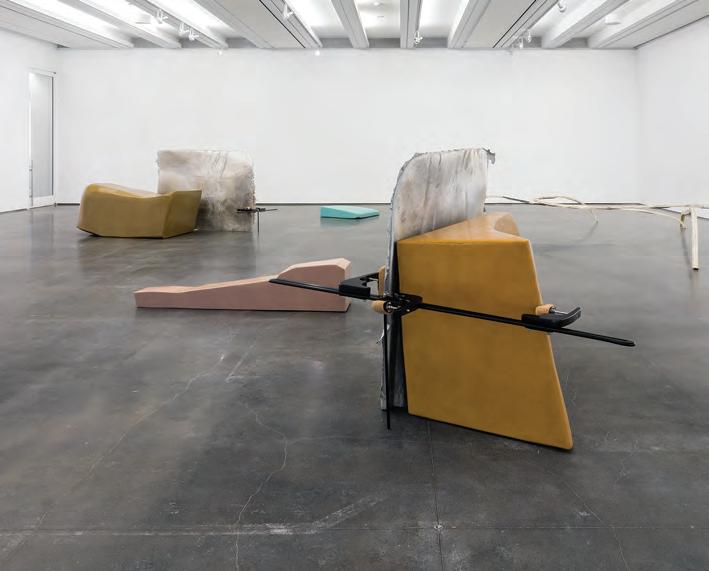
October 22. Spanning the last decade of her career, the works resemble debris and fragments of body parts, such as bones and joints, as well as medical devices, architectural framework, and garments, the last of which is also alluded to in the exhibition title, “Jupon de Corps.” Jupon means “petticoat” in French.
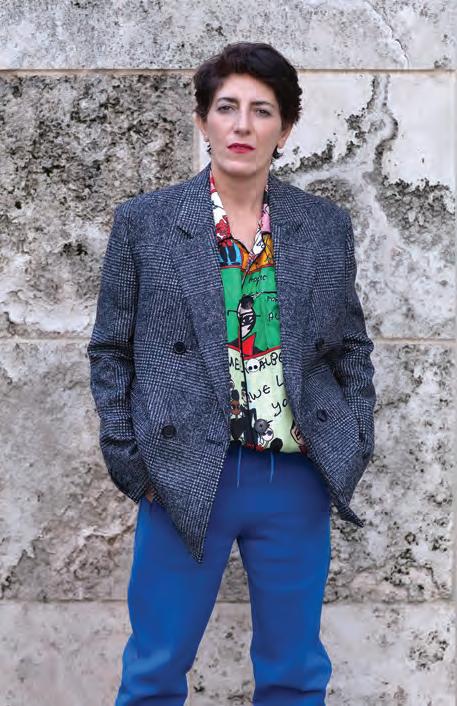
“I consider my work process to be continuous, and I think less in terms of specific temporal stages,” says Baghramian. “The compilation of works for the [Aspen] exhibition does not follow a chronological principle and it was not my intention to describe the last decade of my practice. Rather, the sculptural body was the impetus for seeing these works together. It appealed to me to relate the existing works as studies in the museum, more than a conversation.”
Throughout “Jupon de Corps,” sculptures build on one another as materials, forms, and gestures repeat. New works conceived for the
museum’s outdoor area, for example, respond to Stay Downers, a group of sculptures she made in 2016–17, which themselves were done in response to earlier pieces, such as Class Reunion from 2008. The Aspen exhibition includes three new colorful, bulbous Stay Downers that engage with the space and architecture of the building and greet visitors in the museum’s walkways, in a similar way to her engagement with the Met facade.
As with all Baghramian’s work, there is no linear relationship between individual pieces. Even sculptures that respond to one another evolve as the circumstances in which they are displayed change. What is clear from the presentations of the artist’s work across the U.S. is that her approaches to art-making are fluid, complex, and ever-changing.
SEPTEMBER—OCTOBER 2023 | AVENUE MAGAZINE 25
MATERIAL WORLD From left: the artist, Nairy Baghramian; her 2018 piece, Maintainers D, on display.
“New York City is my big weakness and, honestly, the work for the Met just feels like an homage to the city.”
BOTH WORKS COURTESY THE ARTIST AND RETRO AFRICA
—Nairy Baghramian
Scratching the Back is on view through May 28, 2024, at the Metropolitan Museum of Art; “Jupon de Corps” runs through October 22, 2023, at the Aspen Art Museum.
SHINY OBJECTS
The Fairest of Seasons
Art and design showcases to discover new artists and designers while also encountering the newest and most coveted work by industry leaders.
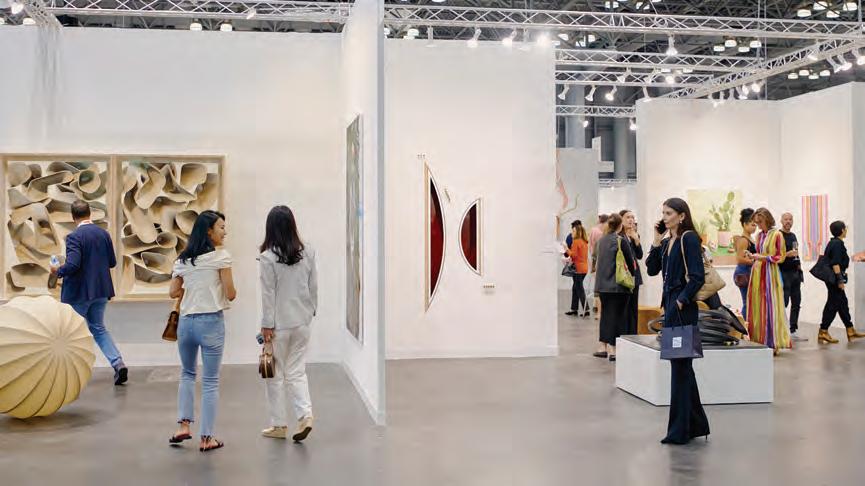 BY ANNABEL KEENAN
BY ANNABEL KEENAN
THE ARMORY SHOW
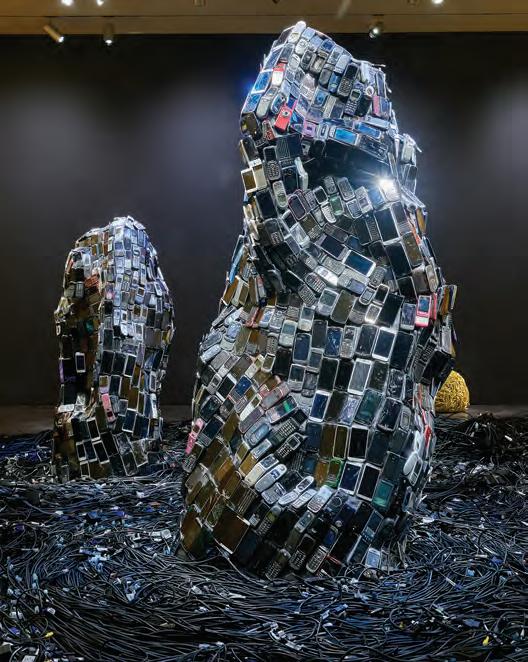
September 7–10
Javits Center, 429 11th Avenue, New York
← The anchor of New York City’s fall art week, the Armory Show returns with over 225 international galleries—roughly 40 of which will be exhibiting for the first time—representing more than 35 countries and highlighting over 800 artists. Participating industry leaders include Lehmann Maupin, Sean Kelly, and Almine Rech, while the likes of Alexander Berggruen, Nina Johnson, and Ochi are some of the exciting newcomers. In the fair’s “Solo” section, where exhibitors highlight a single artist’s practice, acb Gallery is presenting new paintings by Márton Nemes, who will represent Hungary at the 2024 Venice Biennale. Nearby in the “Presents” section, galleries under 10 years old exhibit recent works in solo and dual-artist displays. Included is Los Angeles-based Sow & Tailor, which designed its booth to resemble a psychic storefront that complements new paintings featuring the same subject by Kayla Witt. This year’s Armory Show expands upon the fair’s curatorial mission with the “Focus” and “Platform” sections. Curated by Candice Hopkins, executive director and chief curator of Forge Project, the former uplifts emerging and established voices that examine unknown and hidden historical narratives. Highlights include Fierman and Halsey McKay Gallery’s co-presentation of works by Matthew Kirk that explore his Navajo heritage. In the “Platform” section, curator Eva Respini has selected large-scale installations and site-specific works—including Hank Willis Thomas, presented by Ben Brown Fine Arts, and Yinka Shonibare, presented by James Cohan—to be displayed across the center of the fair. Off-site, the Armory Show has once again partnered with the United States Tennis Association to stage public works at the U.S. Open, which is running concurrently. thearmoryshow.com
26 AVENUE MAGAZINE | SEPTEMBER–OCTOBER 2023 JEAN SHIN: COURTESY OF KEVIN CANDLAND/ASIAN ART MUSEUM; FAIR PHOTO: VINCENT TULLO
CULTURE
From top: Jean Shin’s labor-intensive sculpture Huddled Masses, 2020, and a flashback to last year’s endless offerings.
September 9–17
Venice, Murano, and Mestre, Italy
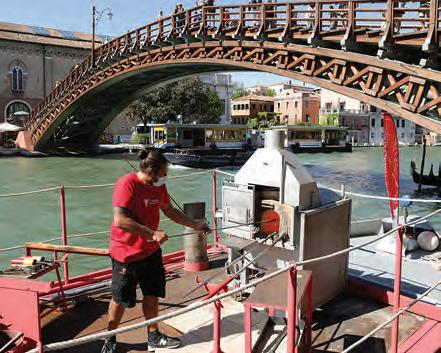
↑ Returning for its seventh edition, the international festival that spreads across Venice, Murano, and Mestre, Italy, brings together some of the biggest names in glassmaking to celebrate the over 1,000 years of the practice’s history in the canal city and showcase innovations in technique and design. This year’s exhibit is titled “#TheArtofFire,” a reference to the furnaces that burn daily in Murano, with the hashtag incorporating a 21st-century twist to encourage social engagement beyond the Venetian lagoon. Programs, events, and exhibitions are held throughout the festival, and this year’s highlights include the return of the Floating Furnace, a barge moored on the Grand Canal with an active glass furnace. Bringing the art of glassblowing, that would normally take place in the furnaces of Murano, to a wider audience, the barge hosts a diverse program of free, live demonstrations in Italian and English with glass masters. The initiative showcases the talent of master glassmakers while also raising awareness of the fragility of the local industry and supporting the students who represent its future. The festival also features free guided tours of the two exhibition spaces in the Palazzo Loredan, where roughly 40 international and local glass artists display their work. theveniceglassweek.com
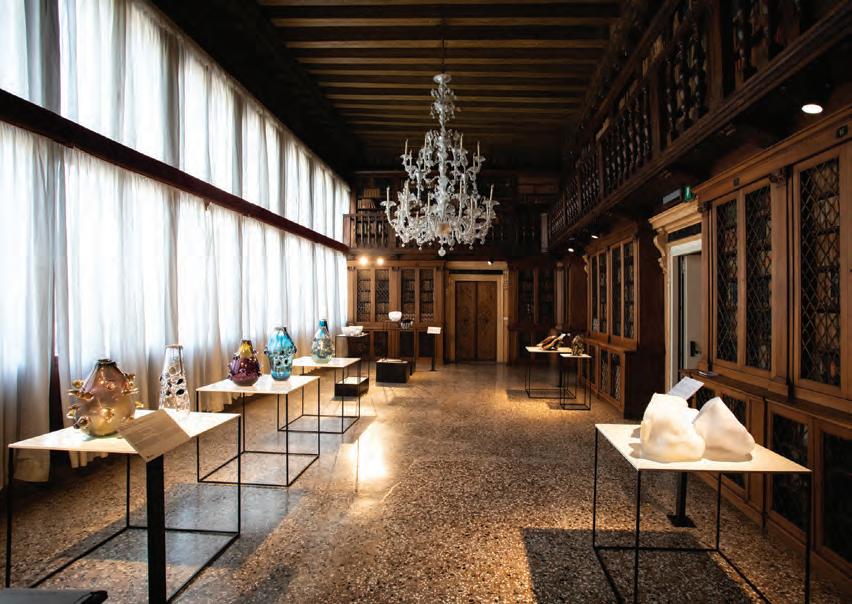
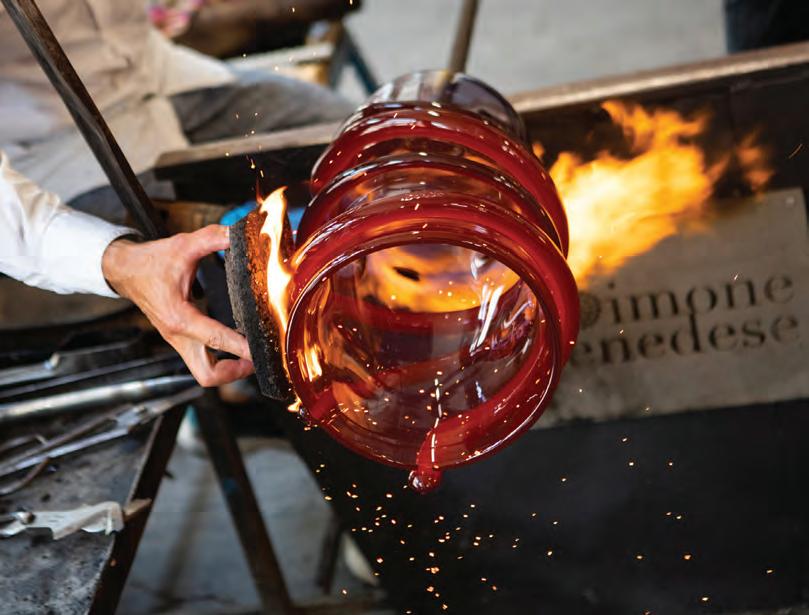
SEPTEMBER–OCTOBER 2023 | AVENUE MAGAZINE 27 MASSIMO PISTORE
THE VENICE GLASS WEEK
GLASS HALF-FULL Scenes from a work of glass art’s inception to its exhibition during the historic week celebrating the art form.
DECORATION & DESIGN BUILDING’S
FALL MARKET 2023
October 4–5
979 Third Avenue, New York
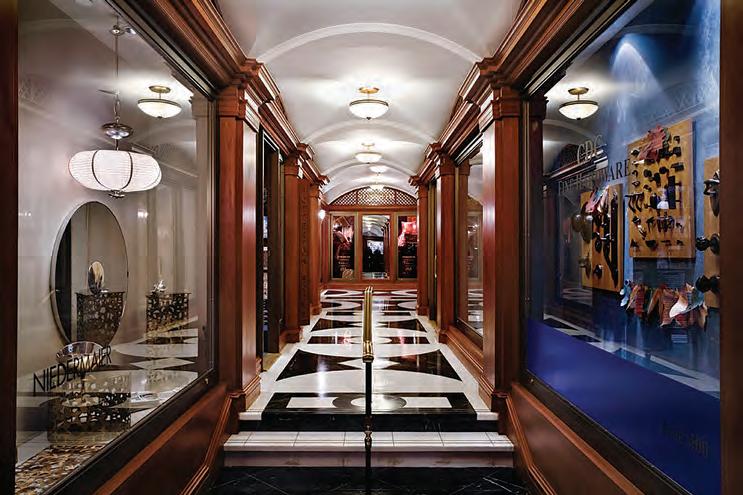
↑ The storied New York Decoration & Design Building, aka the D&D, is home to more than 100 showrooms, and this October it’s hosting its highly anticipated Fall Market. Bringing over 2,000 design professionals together to explore the latest in luxury home furnishings, the two-day event features unparalleled access to industry movers and shakers through educational and networking events hosted by interior designers, editors, and innovators in design. The halls of the D&D will be abuzz as design industry leaders visit showrooms, open houses, and trunk shows that feature eclectic aesthetics and showcase some of the newest products and designs. Keynote discussions, panel conversations, and informational sessions will be held throughout both days, many of which will be followed by receptions and opportunities to hobnob with design stars. A range of topics will be covered to explore all facets of the industry, from maintaining client relations to learning new ways to push businesses and design practices to the next level. ddbuilding.com
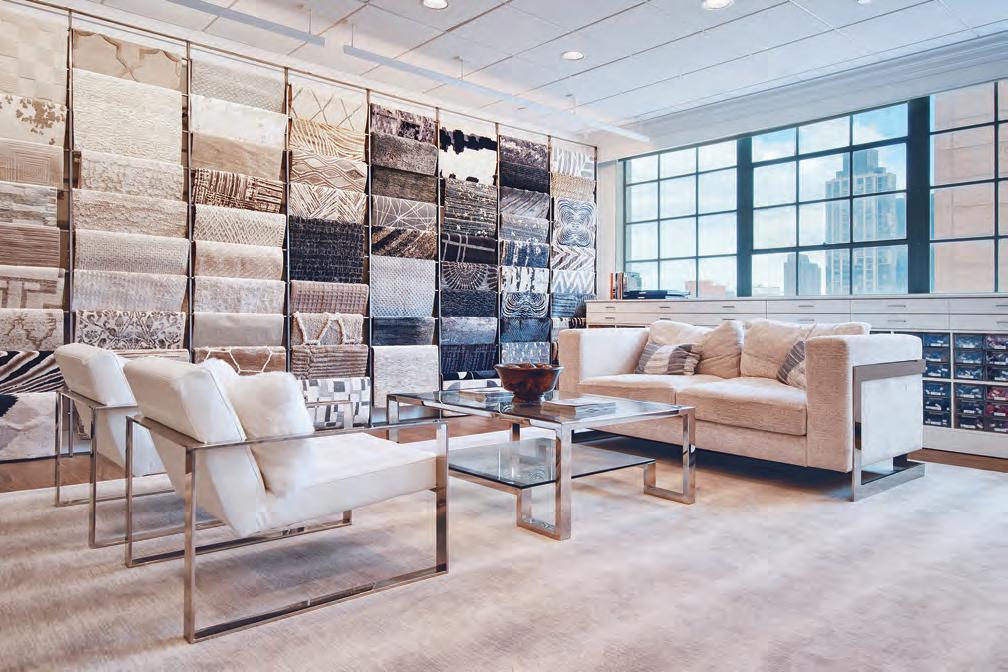
28 AVENUE MAGAZINE | SEPTEMBER–OCTOBER 2023 CULTURE STARK NYC SHOWROOM: COURTESY OF STARK NYC; LOBBY: COURTESY OF D&D BUILDING
CHANGES ABOUND
Left: the Stark NYC showroom in the Design & Decoration Building. Below: the building’s lobby.
October 10–15
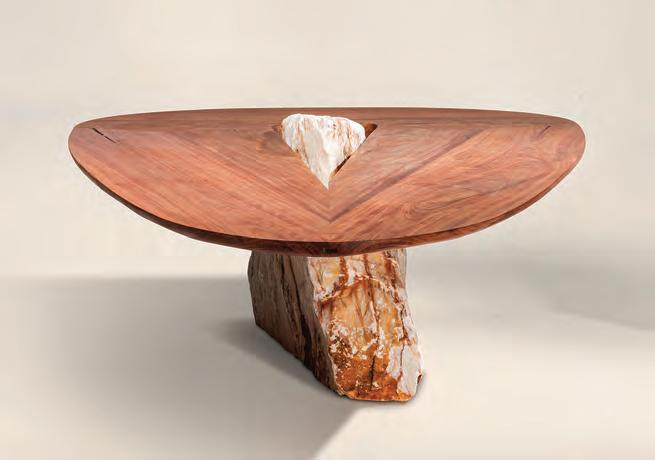


Berkeley Square, Mayfair, London
← The U.K.’s first international fair dedicated to design, PAD London is returning for its 15th anniversary edition. The fair will feature 62 galleries from around the world, including 13 first-time exhibitors, providing an opportunity to see the best and newest in design. The makers and designers in this year’s edition represent a diverse group from over 30 countries specializing in 20th-century and contemporary design, as well as the latest in jewelry. Highlights include Gallery FUMI, which is bringing Light Entanglements, a monumental new chandelier with elegant handblown clusters of glass by Danish glass artist Stine Bidstrup. Also exhibiting an impressive chandelier is Carpenters Workshop Gallery. Designed by Spanish artist Nacho Carbonell, the new work is made of natural materials. Both designers created these works specifically for PAD London, which will feature several other new commissions, including a handwoven tapestry made of fibers, rusted iron, and myrobalan plum by British artist Teresa Hastings at Sarah Myerscough Gallery. Representing Romania, designer Mircea Anghel is showcasing new wooden furniture with Objects With Narratives, a firsttime exhibitor. The gravity-defying pieces will be on view alongside bronze lighting pieces by Bulgarian artist and set designer Vladimir Slavov. Other newcomers are premiering stunning porcelain vessels, including Gallery LVS & Craft, which is exhibiting In Hwa Lee, Deok Ho Kim, and Dong Jun Kim. Seven contemporary and high jewelry galleries are participating, with many showcasing designs inspired by nature, including Elisabetta Cipriani, who is presenting “Sciara”, a ring inspired by Mount Etna and designed by Sicilian artist Massimo Izzo. padesignart.com
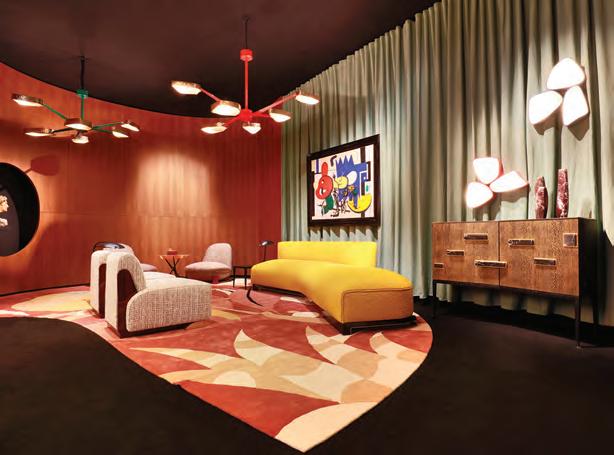
SEPTEMBER–OCTOBER 2023 | AVENUE MAGAZINE 29
PRETTY LITTLE THINGS
Clockwise from top left: a diamond and rubellite Serpent Cuff by Elie Top; Vincent Fournier’s inkjet print Zabnjak Incognita, 2023, on Ilfoflex paper; Achille Salvagni’s retro booth from last year’s occasion; and the stunning “Pico Rosa” table, 2021, by Mircea Anghel.
PAD LONDON
ELIE TOP:
COURTESY OF
ELIE TOP; VINCENT FOURNIER: COURTESY OF VINCENT FOURNIER/SPAZIO NOBILE; ACHILLE SALVAGNI: TOM HARTFORD, COURTESY OF ACHILLE SALVAGNI/PAD LONDON; MIRCEA ANGHEL: NUNO SOUSA DIAS
American Ruins
In the summer of 1809, the sixth Lord Byron returned from Cambridge to his ancestral home of Newstead Abbey, one of some 625 monasteries seized by King Henry VIII in the late 1530s and abandoned. After inheriting it from his great-uncle at age 10, Byron had intended to sell it, but had instead fallen in love with it, redecorating a suite of rooms, erecting a monument to his dog, Boatswain, and installing a plunge pool in the cloisters for use by his new Cambridge friends. Never breakfasting before noon, they spent the afternoons reading, fencing, playing shuttlecock, and practicing their pistols in the halls of the ruined abbey; dining at seven beneath leaky roofs, they dressed in monks’ habits and took turns drinking from the skull of a monk “from which, unlike a living head / Whatever flows is never dull.”
Newstead! What a saddening change of scene is thine!
Thy yawning arch betokens slow decay!
the last and youngest of a noble line
Now holds thy mouldering turrets in his sway.
Wherever you find ruins, you will find the young scampering like mice, repurposing the grandeur to their own ends. For the American equivalent, look no further than Daniel Campo’s Postindustrial DIY: Recovering American Rust Belt Icons (Fordham University Press), a survey of grassroots efforts to repurpose abandoned industrial buildings across middle America. “We generally don’t memorialize post-abandonment history—what happened after the station closed, the steel mill shuttered, or the automobiles stopped rolling off the assembly line,” writes Campo, who has spent 12 years trawling the rust belt in search of off-the-grid artistic activity taking place in the

shadow of American ruins—be they productions of Ibsen, performances of Bach, or filming the latest Transformers movie.
In Buffalo, he drinks a Polish beer and eats perogies with the volunteers who have taken over Central Terminal, Buffalo’s great train station, closed in 1979, its Art Deco 271-foot office tower and magnificent passenger concourse, now the home for peregrine falcons nested in the leaky roof and the audiences of projected horror movies and punk rock concerts. A little down river, Campo enjoys “a near religious moment,” as the sun sets behind Buffalo’s Silo City, a campus of monumental grain silo elevators whose cathedral-like scale now act as an incubator for Buffalo’s avant-garde scene—everything from poetry readings to blues festivals to a production of Ibsen’s The Master Builder. “The acoustics are fantastic, like nothing you have ever heard,” explains Dan Shanahan, one of the artistic directors of Torn Space Theater, which is housed on the property.
Such repurposing is nothing new. In the late 18th and early 19th centuries, the ruins of abbeys and castles all over Europe were given second lives by artists and “men of feeling,” all eager
to experience a shiver of imperial mortality by contemplation of empires past. “Where are they now, the ramparts of Nineveh, the walls of Babylon, the fleets of Tyre?” asked the Comte de Volney in Les ruines, ou Méditation sur les révolutions des empires in 1791. Nothing much has changed now that it’s America’s turn to hunt for the “post-industrial sublime,” except that in place of Lord Byron or the Comte de Volney, it’s Eminem using the debris-strewn waiting room of the Packard Automotive Plant as the video backdrop for his 2009 hit “Beautiful:” “But don’t let ’em say you ain’t beautiful…”
What local residents have to say on having their architectural icons turned into ruin meccas or held up as examples of the “postindustrial dialectic of rust and nature” Campo omits to mention, although he does quote one disgruntled tour guide who does not like the uncommissioned deer sculpture, constructed of half-inch diameter steel tubing in the shadow of the Carrie Blast Furnaces, just outside Pittsburgh. “I don’t like it, but they make me talk about it,” he grumbled. A curious blend of the hip and the dogged, Campo seems a little undecided on whether he favors actual economic regeneration—as opposed to the off-the-grid guerilla kind. “With growth, postindustrial sites become less other and lose some of their wildness, mystery, contradiction, raw beauty, and exhilarating ability to surprise or provoke,” he writes of Bill Ford’s $90 million purchase and renovation of Michigan Central Station as a billiondollar hub for tech companies. You imagine Michiganites are simply grateful for the jobs.
A note of similar elegy is sounded by A FallingOff Place: The Transformation of Lower Manhattan (Empire Station Editions), a collection of black-and-white photographs by Barbara G. Mensch who, for 40 years, has trawled lower Manhattan with her boxy Rolleiflex camera—and, more recently, her iPhone—asking the question, “What fell off as the old was swept away by the new?” Starting with Fulton Fish Market beneath Franklin D. Roosevelt Drive, Mensch records a now-vanished world of waterfront cranes, beeping forklifts, fish laid out in iced crates, and grizzled looking men with weary fatalistic expressions in smoky bars, their grappling hooks alongside shots of anisette. You can practically smell the tobacco and the brackish aroma of stale seawater. No city changes quite as fast or as frequently as New York. Mensch provides the city with a memory.
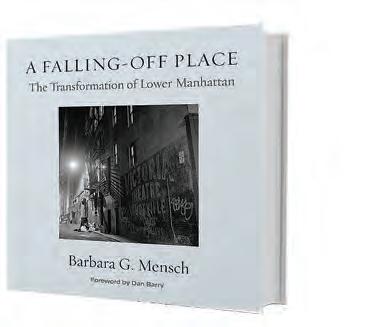
30 AVENUE MAGAZINE | SEPTEMBER—OCTOBER 2023
CULTURE
Tom Shone explores the transformative allure of architecture in five new tomes.
Dining at seven beneath leaky roofs, they dressed in monks’ habits and took turns drinking from the skull of a monk.
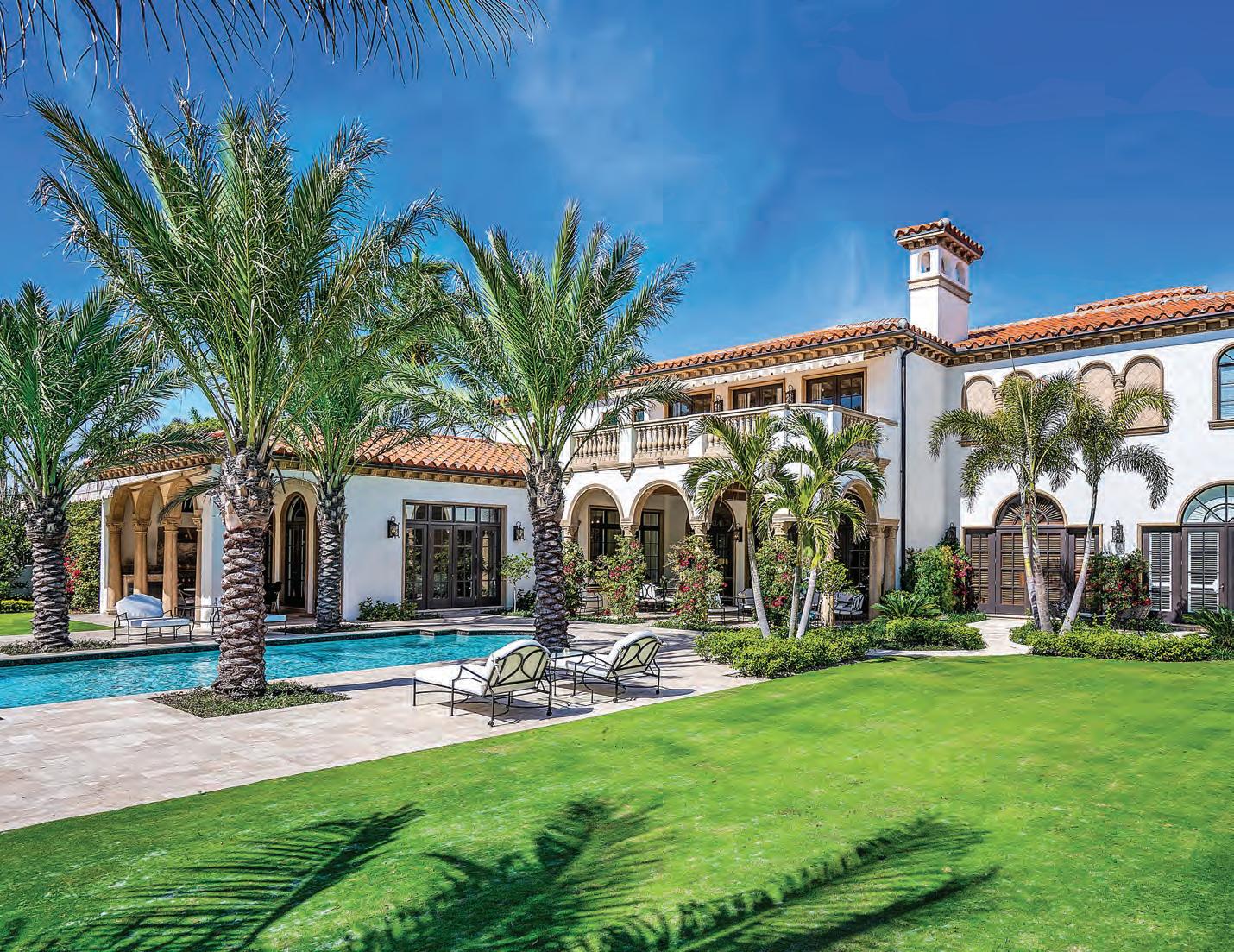

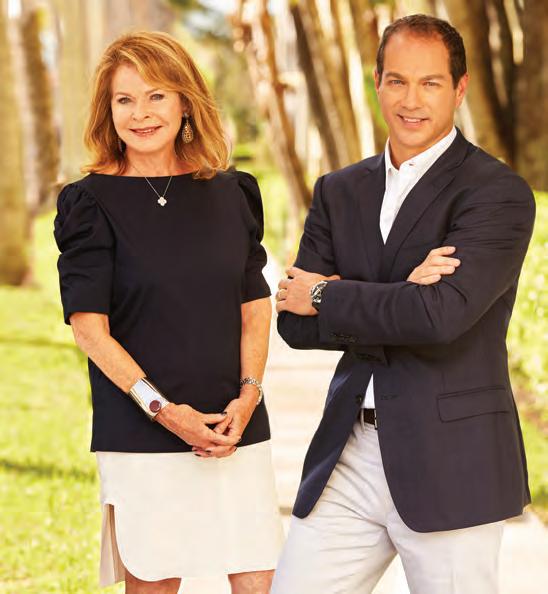
Transform your vacation destination into your own slice of paradise. Owning a home in Palm Beach has never been more valuable. Contact The Koch Team to navigate the market with the Island’s proven real estate leaders. SCAN HERE FOR ADDITIONAL INFORMATION Ranked by sales volume by RealTrends as published in TheWallStreetJournal PALM BEACH 2 # FLORIDA 4 # IN THE U.S. 17 # Uncover the treasures of Palm Beach living. We know what you need. $1.5B+ SOLD SINCE 2020 OVER EXPERIENCE THE DIFFERENCE #THEKOCHEXPERIENCE Paulette Koch Broker Associate m 561.346.8639 | paulette.koch@corcoran.com Equal Housing Opportunity. All information furnished regarding property for sale or rent or regarding financing is from sources deemed reliable, but Corcoran makes no warranty or representation as to the accuracy thereof. All property information is presented subject to errors, omissions, price changes, changed property conditions, and withdrawal of the property from the market, without notice. All dimensions provided are approximate. To obtain exact dimensions, Corcoran advises you to hire a qualified architect or engineer. @ KochTeam Follow us on Instagram, Dana Koch Sales Associate m 561.379.7718 | dana.koch@corcoran.com #17 Nationwide by Wall Street Journal / RealTrends 2023 Mediterranean Estate Featured Listing (above): 8BR | 9.2BA | $36.5M
Previous collections of photographer Christopher Payne’s work have chased similar ghosts of American obsolescence. His new book, Made in America: The Industrial Photography of Christopher Payne (Abrams), is fueled by a desire to capture manufacturing industries before they disappear, but is devoid of nostalgia: it hums with excitement over the manufacture of everything from jelly beans to aircraft turbines and fiberoptic cables. Payne trained as an architect before he became a photographer, and it shows in his love of color, pattern, and form. He makes a stack of pencils look monumental and airplane fuselages look tiny. Beautifully designed and laid out, his book turns the manufacturing process itself into its own enticement.
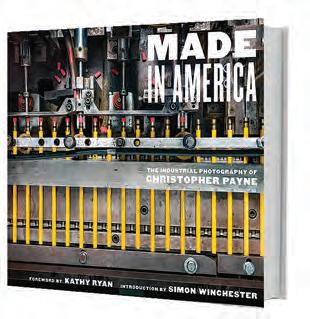
The Covid pandemic may have spearheaded an exodus towards the green, calm, restorative spaces of the countryside, but sociologist Des Fitzgerald has news for you. “What if it’s the city… that represents peace and calm? And what if it’s the forest… that is truly the space of tumult, excess, and anxiety?” he writes in The Living City: Why Cities Don’t Need to Be Green to Be Great, a tetchy polemic against the idea that cities are somehow bad for us—a source of noise, alienation, and stress—and nature a balm to the soul. Fitzgerald doesn’t dispute the “vegetation index” of Danish scientists linking stress to lack of greenery but deems the argument of Edward Wilson’s

Biophilia—that human beings have a need to be around natural living things—“deeply silly” and the idea that urban man pines for the lost African savannah, “a child’s fairy-story for weak-minded evolutionary biologists.”
This preference for ad hominem insult over argument rather stops Fitzgerald from developing his case much beyond a reflex tetchiness towards the environmental lobby buttressed by ferocious bouts of hairsplitting. The beautiful rolling landscapes of the English countryside are actually the side effect of massive human-driven deforestation, he points out. Concrete is no less unnatural than the dams of beavers. Fair point: what we think of as “natural” is a cultural construct. But the bee in Fitzgerald’s bonnet buzzes on. He thinks trees are “antihuman,” New York “dull,” and Paris “overrated.” There are not many sentences from which a book cannot recover from, but “I hate Paris” may be one of them.
One of the researchers quoted in architect Thomas Heatherwick’s Humanize: A Maker’s Guide to Designing Our Cities (Scribner) makes Fitzgerald’s point far more elegantly. The old adage “natural is beautiful” is incomplete: while natural features such as coastlines, mountains, and canals can improve the beauty of a scene, flat and uninteresting green spaces do not. Brain scans by academics at the Harvard Medical School have shown that square and angled objects cause increased activity in the amygdala, which helps us deal with stress and fear. People are much more likely to enter rooms that are curved rather than angular. Old winding streets are actually good for us.
So why are the majority of our award-winning buildings such hymns to the flat, plain, straight, and featureless? “We’re under attack from a plague of boringness,” writes Heatherwick, who was the architect responsible for the Vessel, the stunning spiral staircase at Hudson Yards, also known as the “shawarma building.” Fitzgerald’s book is a familiar enough broadside against the style of modernist architecture—grid-like, repetitive, inhuman—that gets praised by architecture critics for its “subtlety,” “simplicity,” “understatement,” and “rigor,” and makes anyone else feel like throwing themselves out the nearest window. Heatherwick’s book is the opposite: warm, curious, and never boring, full of welcome historical context and quirky personal observation. His book is as inviting as his buildings.
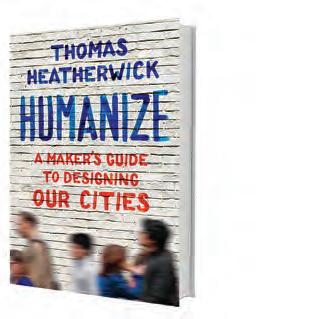
32 AVENUE MAGAZINE | SEPTEMBER—OCTOBER 2023
“What if it’s the city…that represents peace and calm? And what if it’s the forest… that is truly the space of tumult, excess, and anxiety?”
CULTURE
—Des Fitzgerald
D&D BuildingDirectory
CARINI CARPET 1001
Josephcarinicarpets.com
CASTEL 715
Castelmaison.com
CHARLES H. BECKLEY 1521
Chbeckley.com
CHESNEYS 1119
Chesneys.com
CHRISTOPHER HYLAND, INC. 1710
Christopherhyland.com
CHRISTOPHER PEACOCK Annex 5th Floor Peacockhome.com
CLAREMONT FURNISHING FABRICS CO. 1405
Claremontfurnishing.com
CLARENCE HOUSE 205 Clarencehouse.com
COWTAN & TOUT 1022
Cowtan.com
DAWKINS (MICHAEL DAWKINS HOME) 707 Michaeldawkins.com
DAKOTA JACKSON 501 Dakotajackson.com
EDELMAN 207
Edelmanleather.com
ÉLITIS 611
Elitis.fr
FABRICUT 915 Fabricut.com
FARROW & BALL 1519
Farrow-ball.com
FORBES & LOMAX 1502 Forbesandlomax.com
FORTUNY 1632 Fortuny.com
GARRETT LEATHER 1107 Garrettleather.com
GLOSTER FURNITURE 1601 Gloster.com
GRACIE 1411 Graciestudio.com
GRANDE CENTRAL SHOWROOMS OF NY Annex A Centralplumbingspec.com/ kitchen-bath.html
HOLLAND & SHERRY 1402 Interiors.hollandandsherry.com
JOHN ROSSELLI & ASSOCIATES 1800 Johnrosselli.com
KETTAL 333/Annex 222 Kettal.com
KNOLL 1523 Knoll.com
KNOLL LUXE 1702 Knoll.com/shop-textiles
KOROSEAL 842 Koroseal.com
KRAVET 1202 Kravet.com
LEE JOFA | BRUNSCHWIG & FILS 234 Kravet.com/lee-jofa Kravet.com/brunschwig-fils
LORO PIANA 820 Loropiana.com/interiors
LUTRON 319 Lutron.com
M. ALEXANDER 313 Malexanderlighting.com
MADE GOODS 325 Madegoods.com
O’LAMPIA STUDIO 300 Olampia.com
OCHRE 1109 Ochre.net
OSBORNE & LITTLE 520 Osborneandlittle.com
PATTERSON FLYNN 632 Pattersonflynn.com
PAUL FERRANTE 717 Paulferrante.com
PHILLIP JEFFRIES 1115 Phillipjeffries.com
PHOENIX GALLERY 134 Phoenixgalleryny.com
PID FLOORS 323 Pidfloors.com
PIERRE FREY 1611 Pierrefrey.com
QUADRILLE | OOMPH HOME 1415 Quadrillefabrics.com
RESSOURCE HOUSE OF PAINTS 1507 Ressource-peintures.com
SANDERSON DESIGN GROUP 905 Sanderson. sandersondesigngroup.com
SAVEL 1819 Savelinc.com
SCALAMANDRÉ 1002 Scalamandre.com
SCHUMACHER 832 Fschumacher.com
SCOTT GROUP STUDIO 411 Scottgroupstudio.com
STARK 1102 Starkcarpet.com
STUDIO VAN DEN AKKER 1510 Studiovandenakker.com
STUDIO ZEN WALLCOVERINGS 1818 Studiozenwallcoverings.com
THG PARIS 1206 Thg-paris.com
THIBAUT 909 Thibautdesign.com
TOM’S SONS INTERNATIONAL PLEATING 800 Internationalpleating.com
A. RUDIN 1201 Arudin.com
ANCIENT & MODERN 1522 Ancientandmodern.us
ASSOULINE BOOKS AND GIFTS 101 Assouline.com
ATELIER PREMIERE 1208 Atelier-premiere.com
BAUMANN DEKOR 518 Baumanndekorusa.com
BENJAMIN MOORE 421 Benjaminmoore.com
BESPOKE BY LUIGI GENTILE 1205 Bespokebylg.com
DAUM—HAVILAND 903 Us.daum.fr Us.haviland.fr
DAVID MICHAEL INTERIORS 612
Davidmichaelinteriors.com
DAVID SUTHERLAND 401 Perennialsandsutherland.com
DE LE CUONA 914
Delecuona.com
DEDAR MILANO 1009
Dedar.com
DEDON 720 Dedon.de
DONGHIA 1005
Kravet.com/donghia
HOLLY HUNT NEW YORK 503 & 605 Hollyhunt.com
HOULÈS 919 Houles.com
I.J. PEISER’S SONS FINE WOOD FLOORS Concourse 1 Ijpeiser.com
INNOVATIONS 1717 Innovationsusa.com
JAB ANSTOETZ 102 Jab.de
JIM THOMPSON | JERRY PAIR LEATHER 1640 Jimthompsonfabrics.com
JOHN BOONE, INC. 711 Johnbooneinc.com
MAHARAM 1701 Maharam.com
MARC PHILLIPS DECORATIVE RUGS 211 Marcphillipsrugs.com
MARTIN PATRICK EVAN CUSTOM RUGS AND CARPETS 507 Martinpatrickevan.com
MAYA ROMANOFF 922 Mayaromanoff.com
MCKINNON AND HARRIS Annex 111 Mckinnonharris.com
NELLA VETRINA 805 Nellavetrina.com
NOBILIS 512 Nobilis.fr
ROGERS & GOFFIGON LTD. 1718 Rogersandgoffigon.com
ROMO 808 Romo.com
RONIT ANDERSON 1016 Ronitanderson.com
ROSE TARLOW MELROSE HOUSE 1616 Rosetarlow.com
RUG ART INTERNATIONAL 1518 Rugart.nyc
SAINT-LOUIS 816 Saint-louis.com
SAMPSON MILLS LTD. 1540 Sampsonmills.com
VAUGHAN 1511 Vaughandesigns.com
VONDOM 1532 Vondom.com
WALTERS 538 Waltersnyc.com
WARP & WEFT 1203 Warpandweft.com
WIRED CUSTOM LIGHTING 105 Wired-designs.com
WOLF-GORDON 413 Wolfgordon.com
WORLDS AWAY 414 Worlds-away.com
ZIMMER + ROHDE 813 Zimmer-rohde.com/en
SEPTEMBER—OCTOBER 2023 | AVENUE MAGAZINE 33
AROUND TOWN
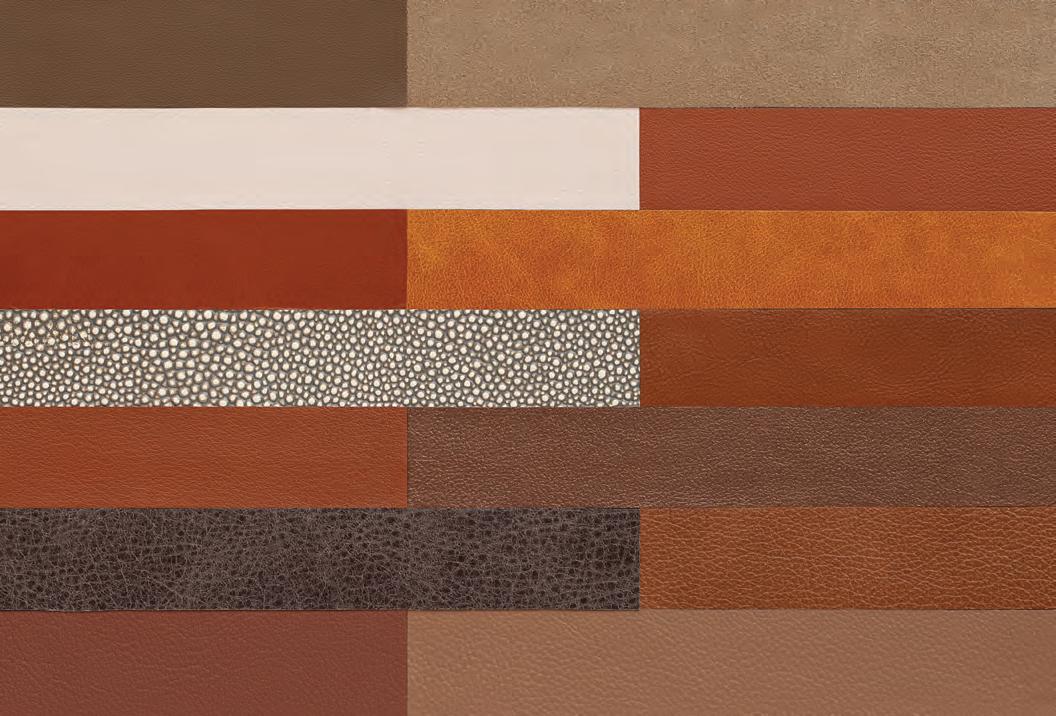
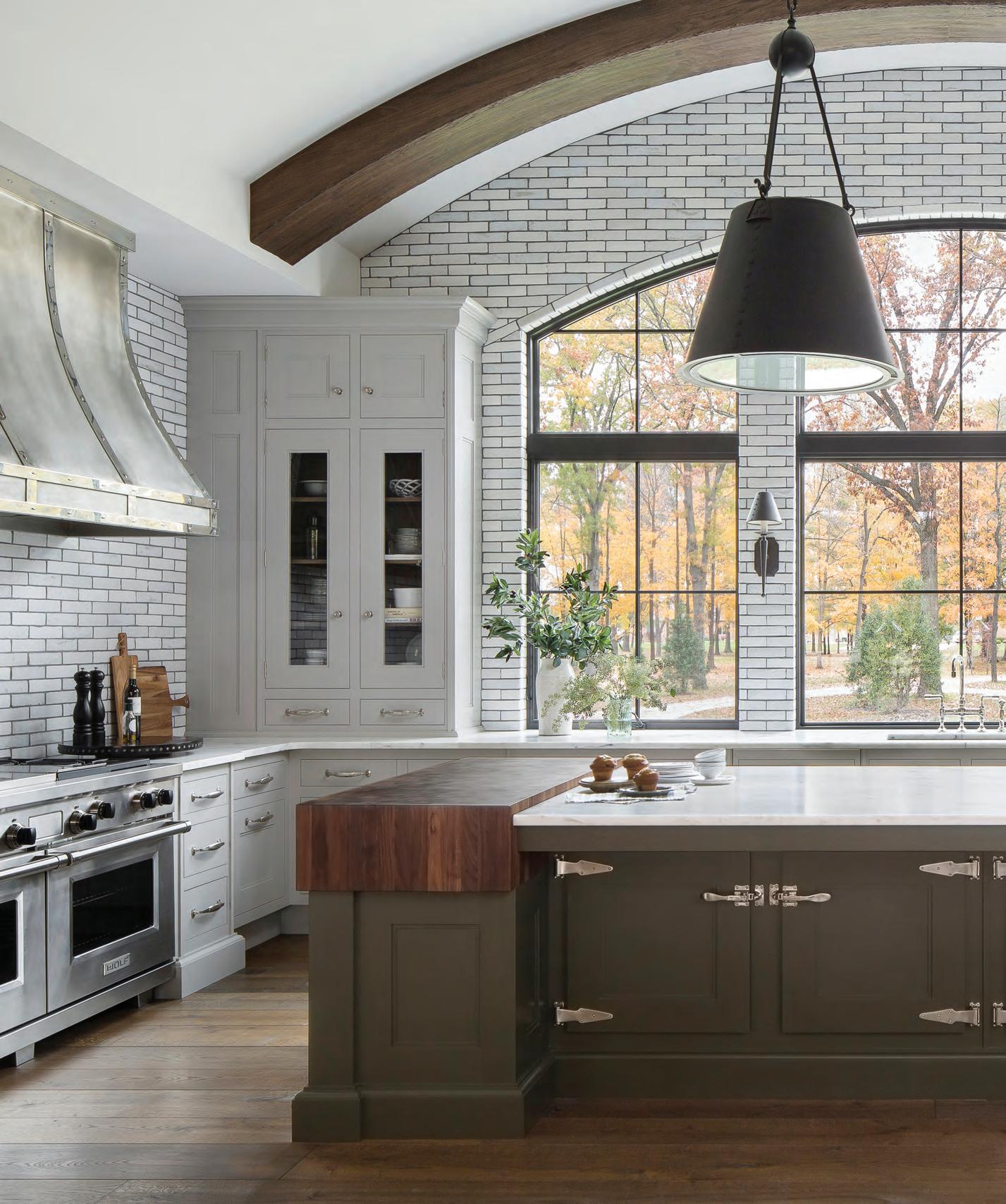


NEW YORK CHICAGO DALLAS NASHVILLE BOSTON SAN FRANCISCO GREENWICH PALM BEACH SHORT HILLS CANNES JAKARTA VISIT OUR NEW YORK CITY SHOWROOM / 222 E 59TH STREET, 5TH FLOOR / 212-580-0223 / NEWYORKCITYINQUIRIES@PEACOCKHOME.COM PEACOCKHOME.COM CHRISTOPHERPEACOCK
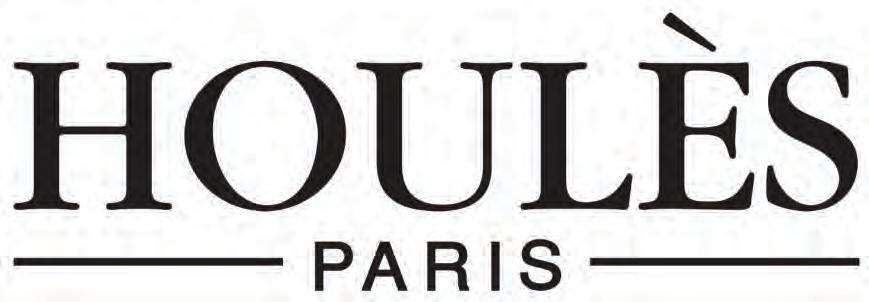
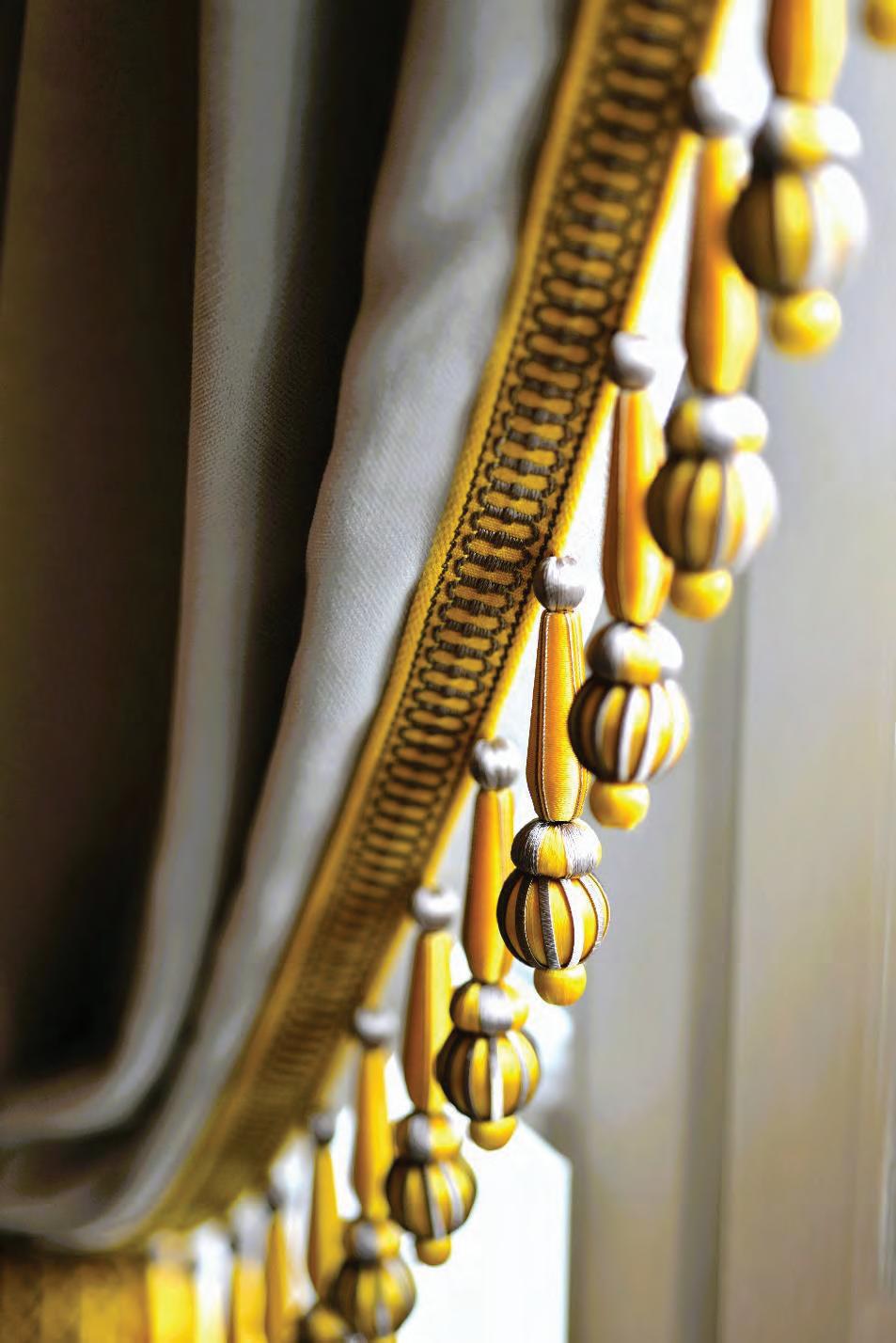
TRIMMINGS ~ HARDWARE ~ FABRIC info@houlesusa.com | Houlesusa.com | 212 935 3900
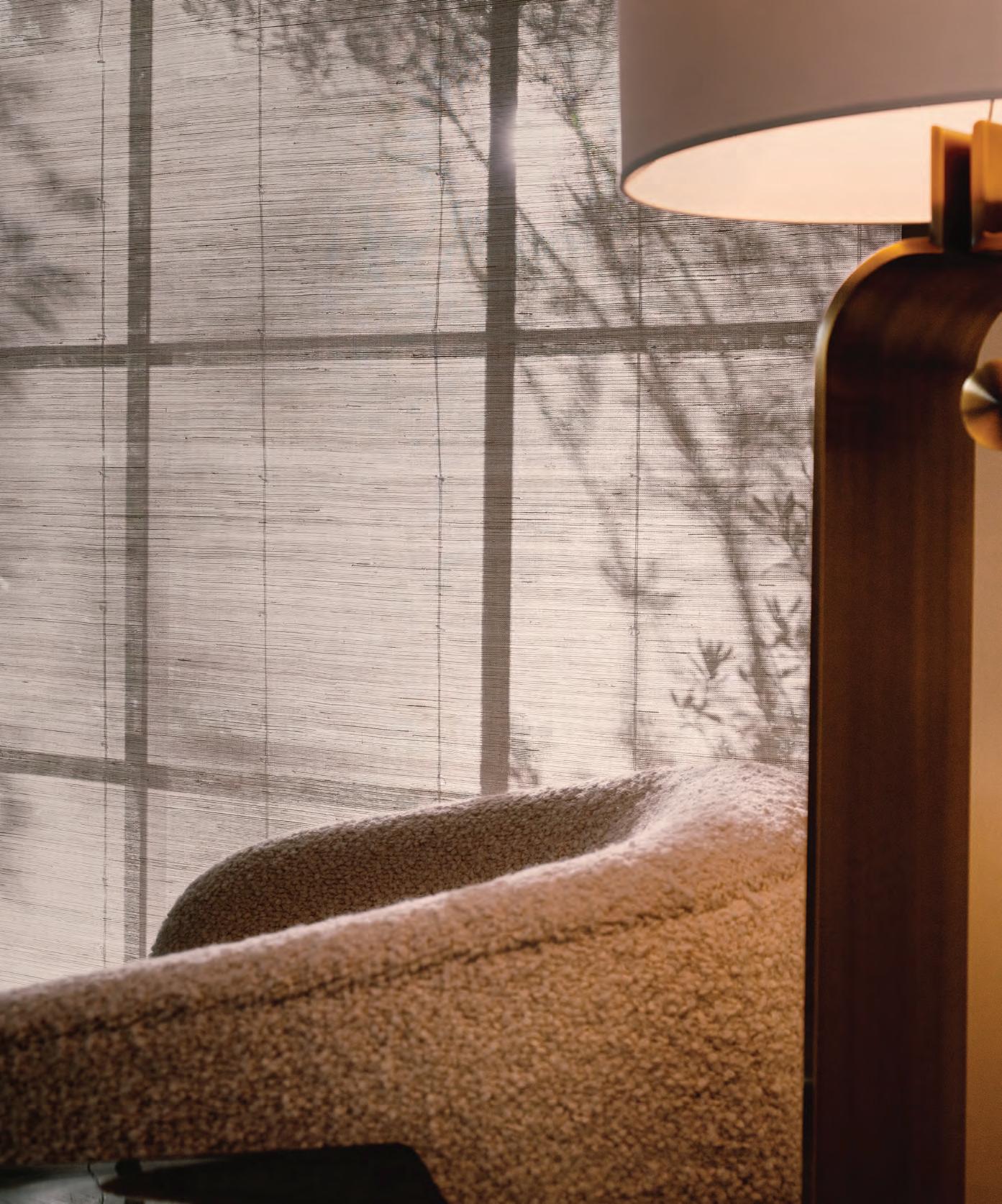
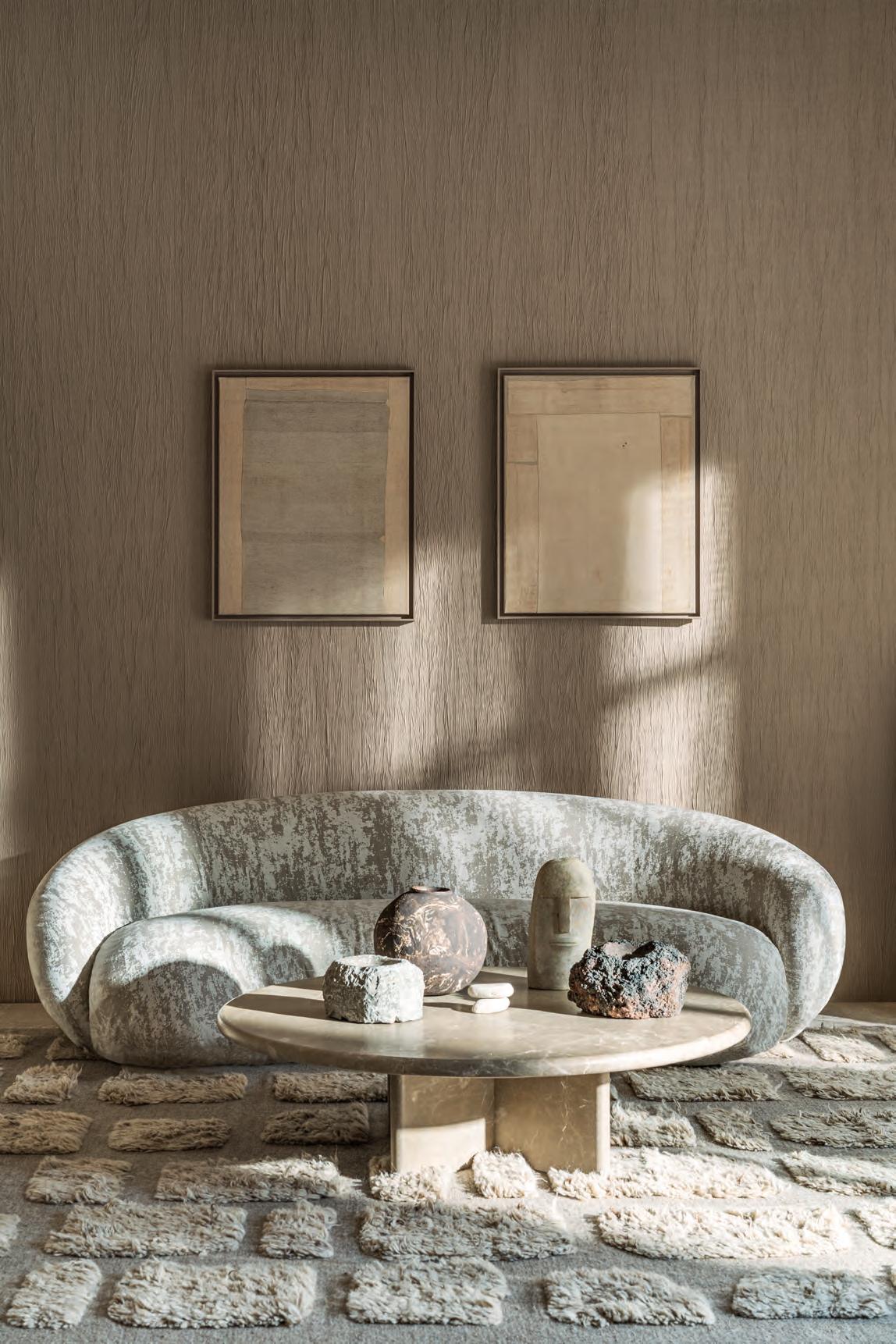
WALLPAPER, FABRIC, WALLCOVERING, L’ACCESSOIRE // SHOWROOMS : NEW YORK // 979 3RD AVENUE SUITE 611, NEW YORK, NY 10022 // LOS ANGELES // 8687 MELROSE AVENUE - SUITE B650 LOS ANGELES, CA 90069 // SOUTH FLORIDA // 2901 SIMMS ST - UNIT H HOLLYWOOD, FL 33020 // WWW.ELITIS.FR Auteur & Éditeur. «LIN PLÂTRÉ» WALLCOVERING / «ÉPHÉMÈRE» FABRIC
CHESNEYS

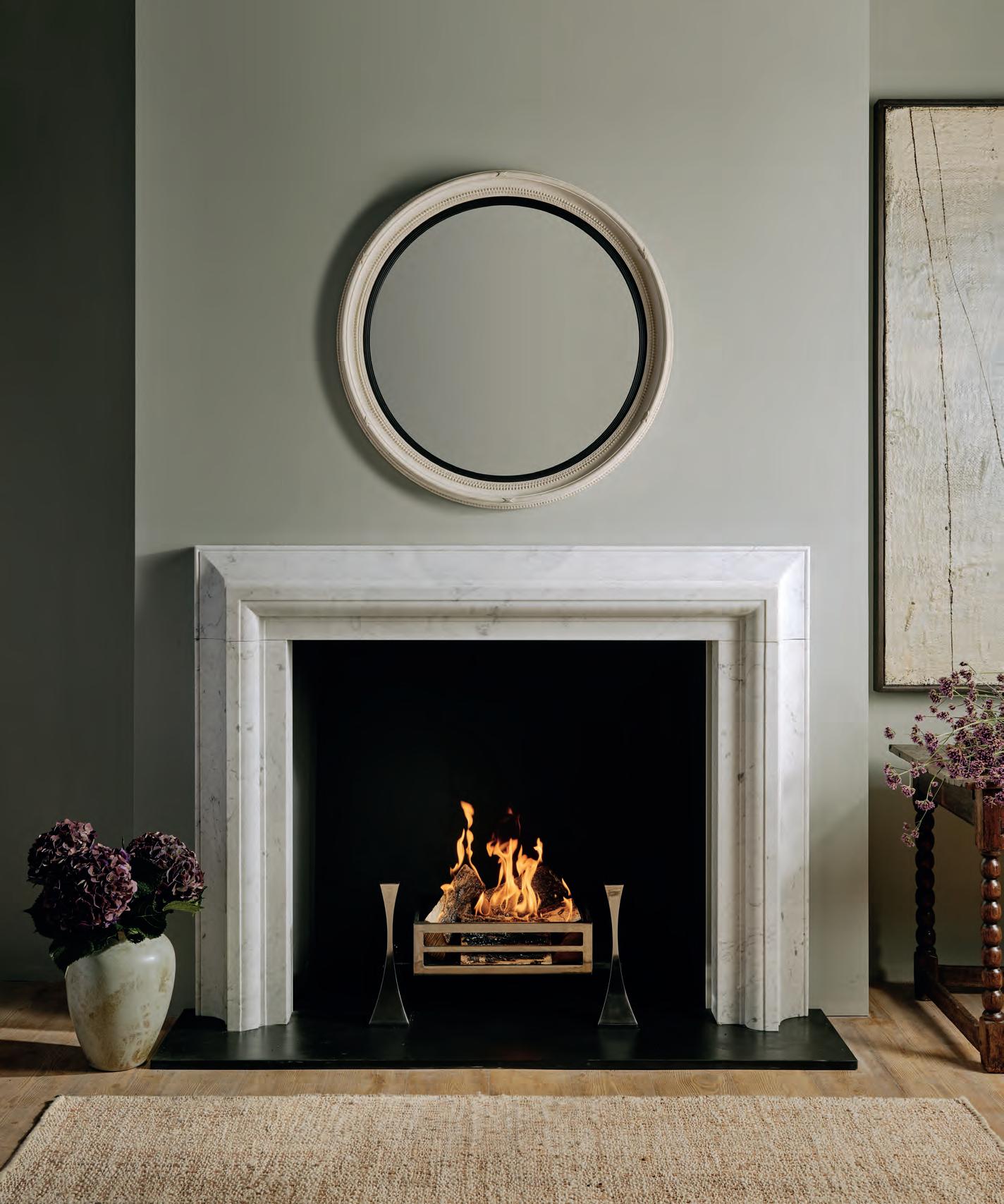 © 2012,Rick Lewis, Jinni
© 2012,Rick Lewis, Jinni
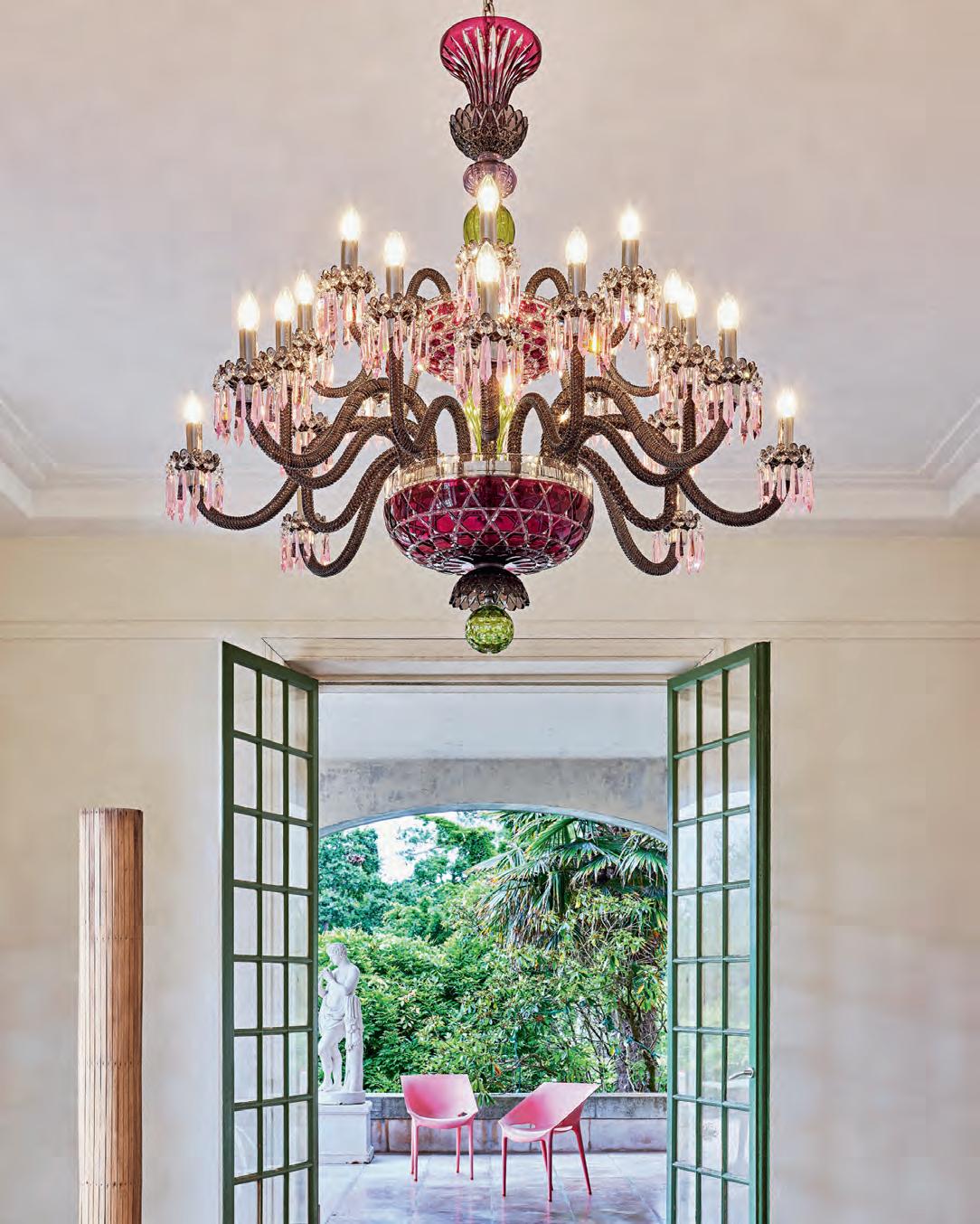

fabrics, trimmings and wallcoverings
clarencehouse.com
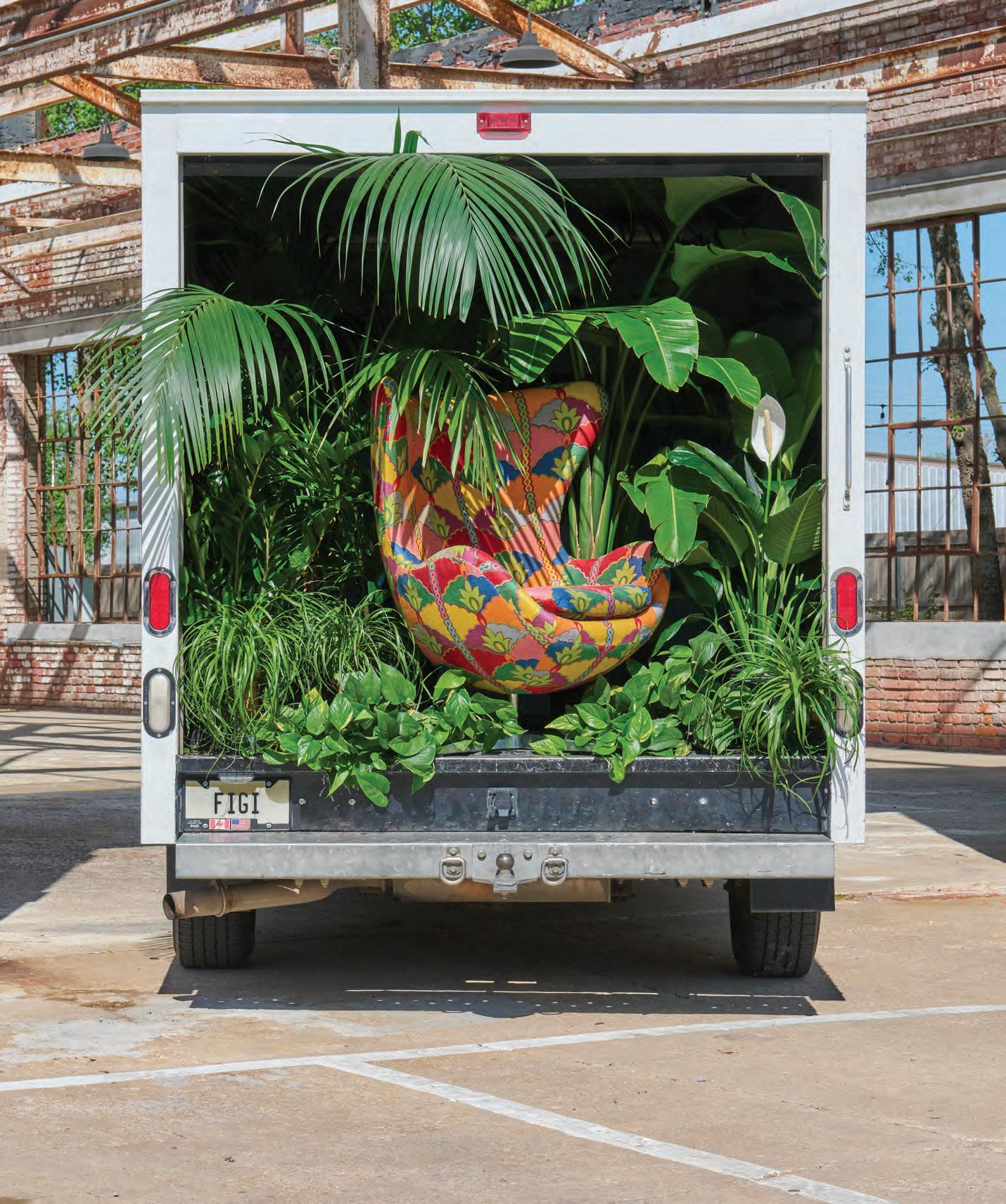
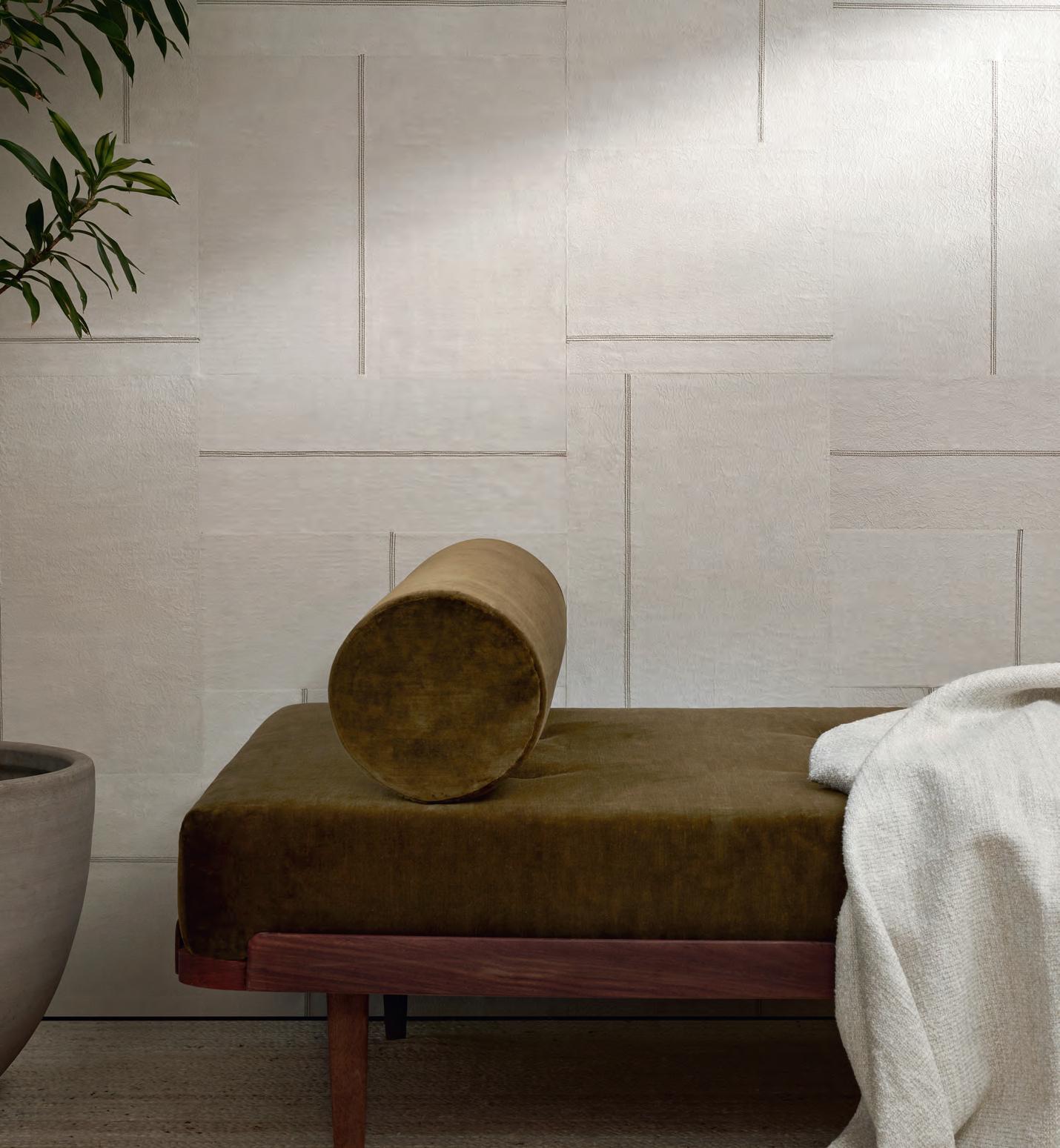
979 Third Avenue, Suite 808, New York, NY 10022. Tel: (212) 319-7666
Introducing the Samsa collection, designed by Maximilian Jencquel. Upholstery and pillows in Perennials fabrics | perennialsandsutherland.com
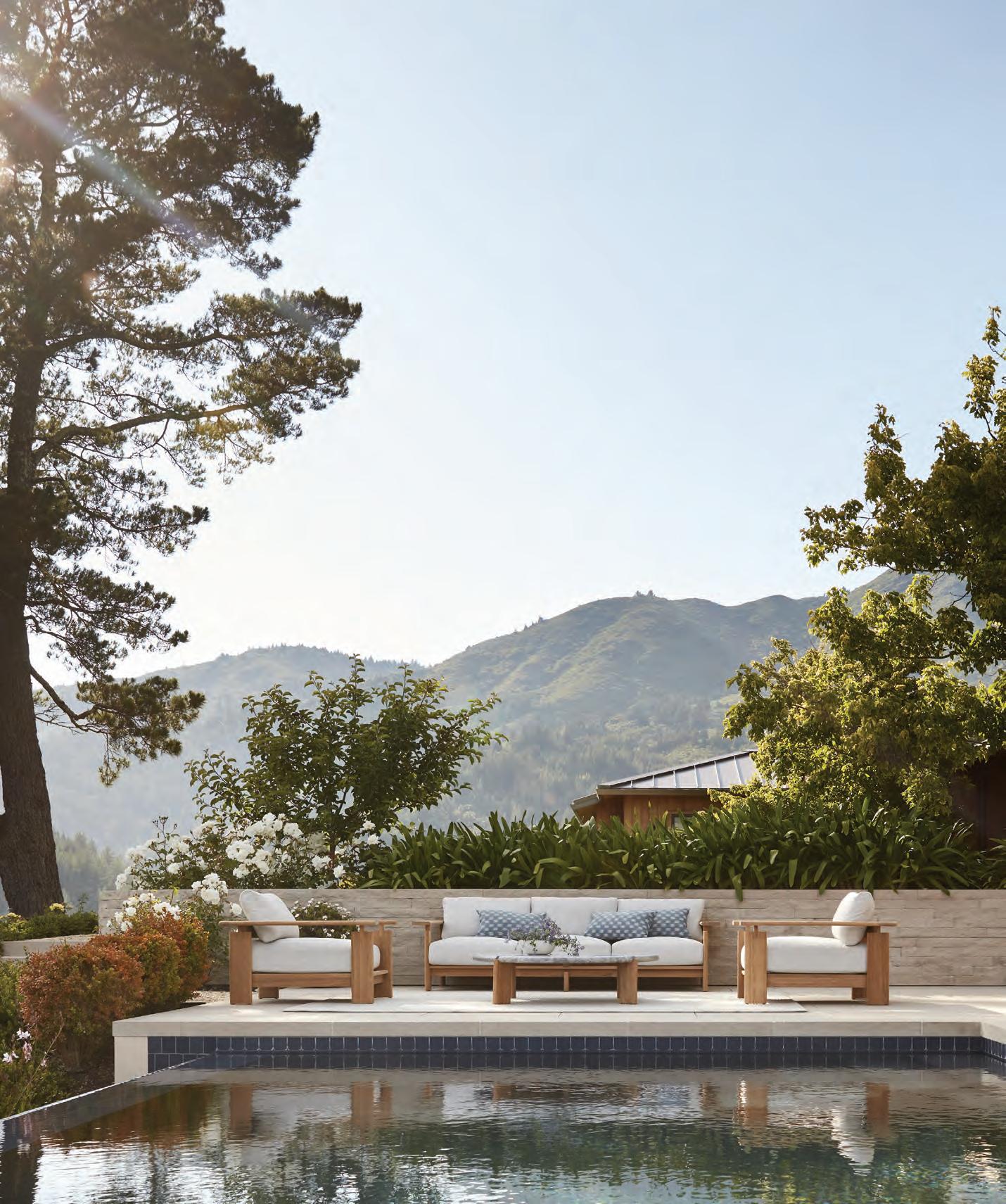
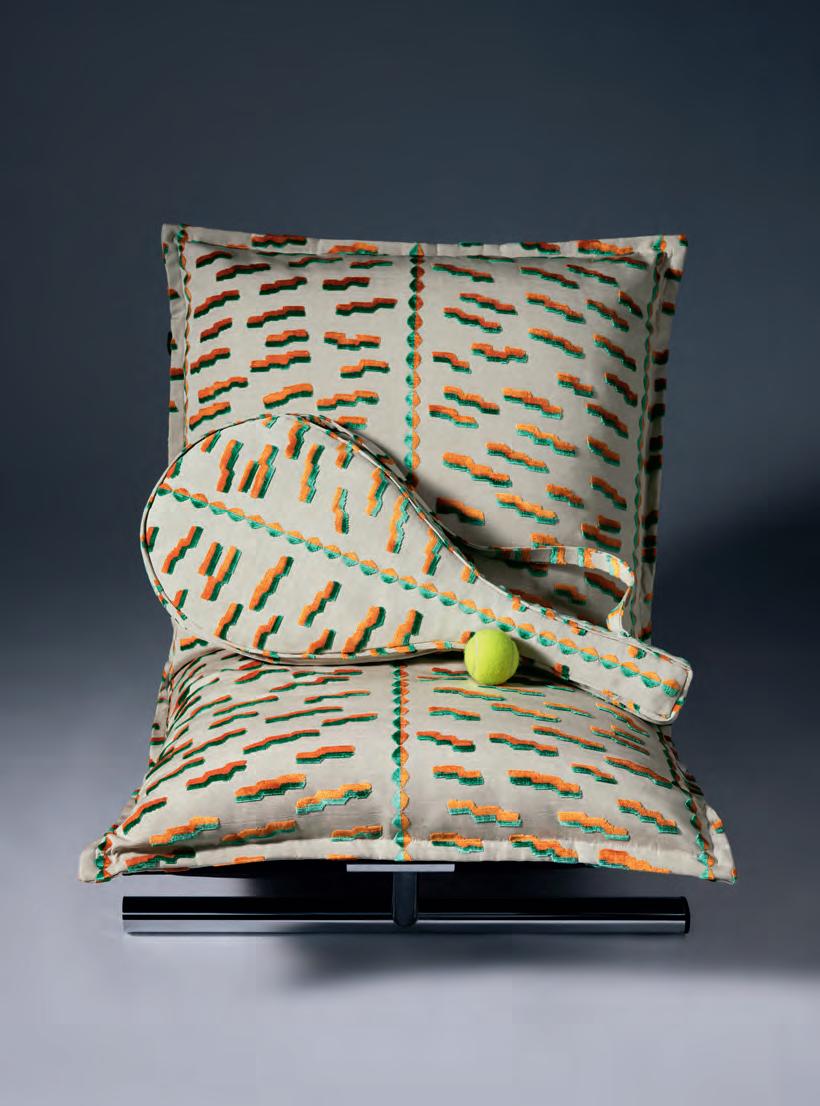






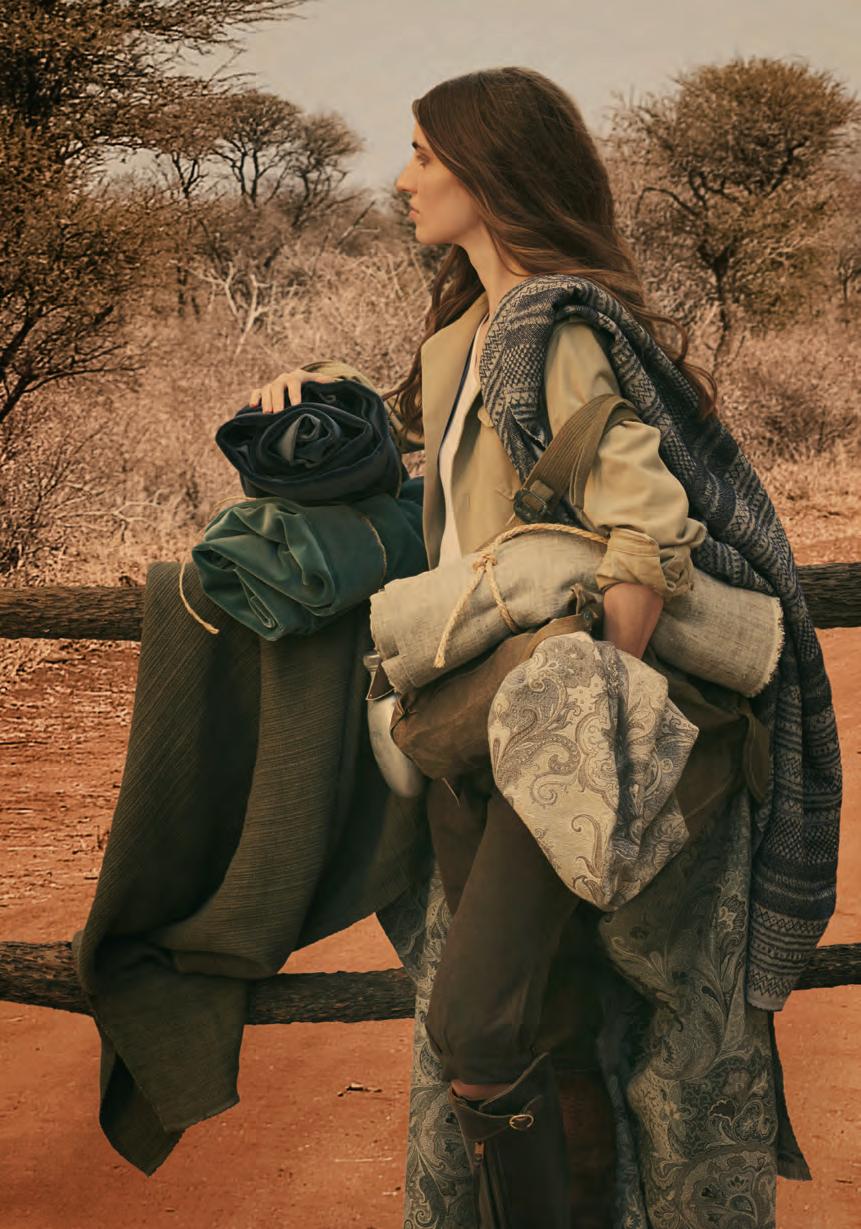
delecuona.com INTERIOR FABRIC ACCESSORIES INTERIOR TAILORING
Road Less Travelled
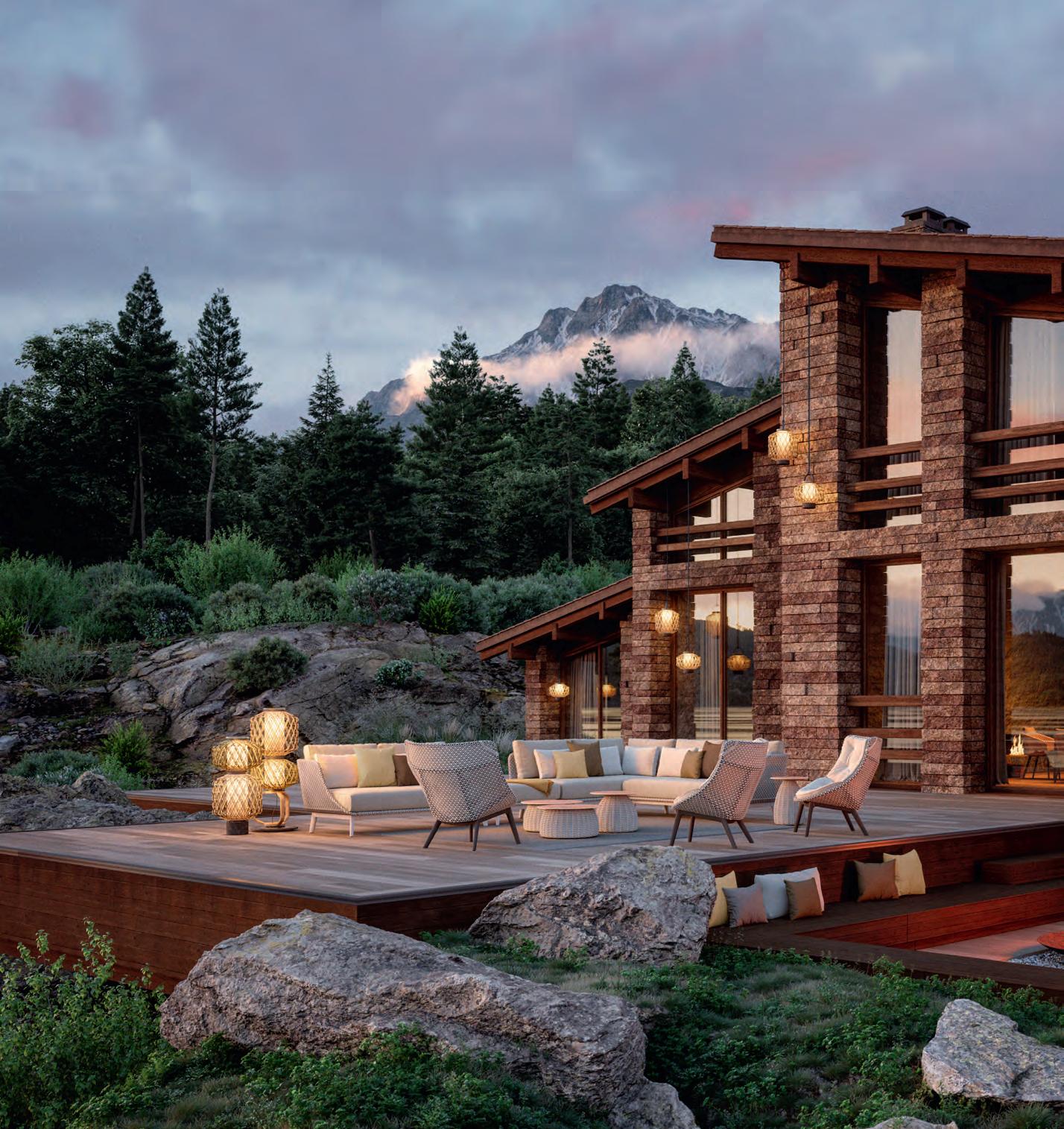
www.dedon.us DEDON Showroom D & D Building 979 3rd Avenue Suite 720 New York, NY 10022, 212-334-3345 newyork@dedon.us Available at:
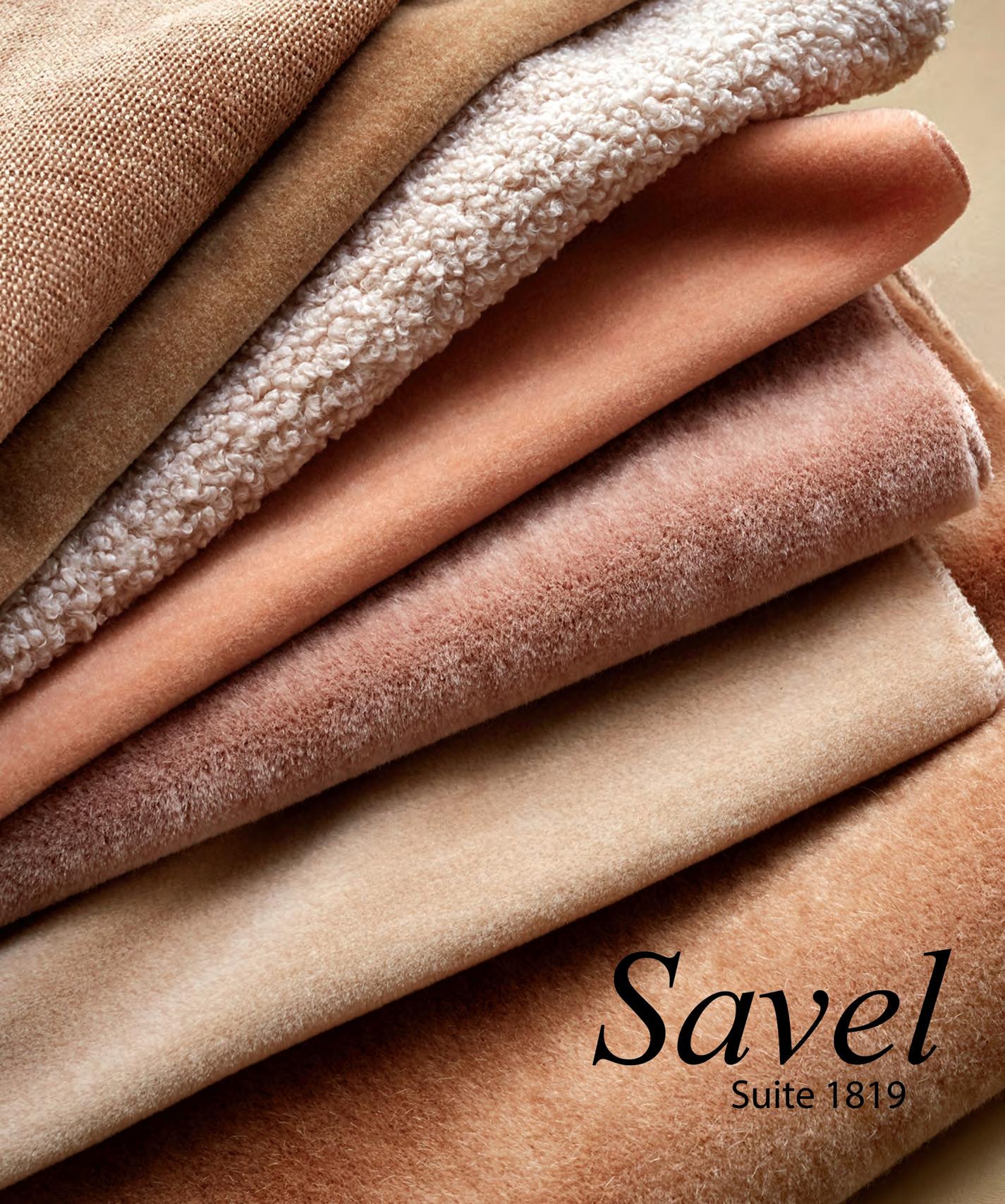
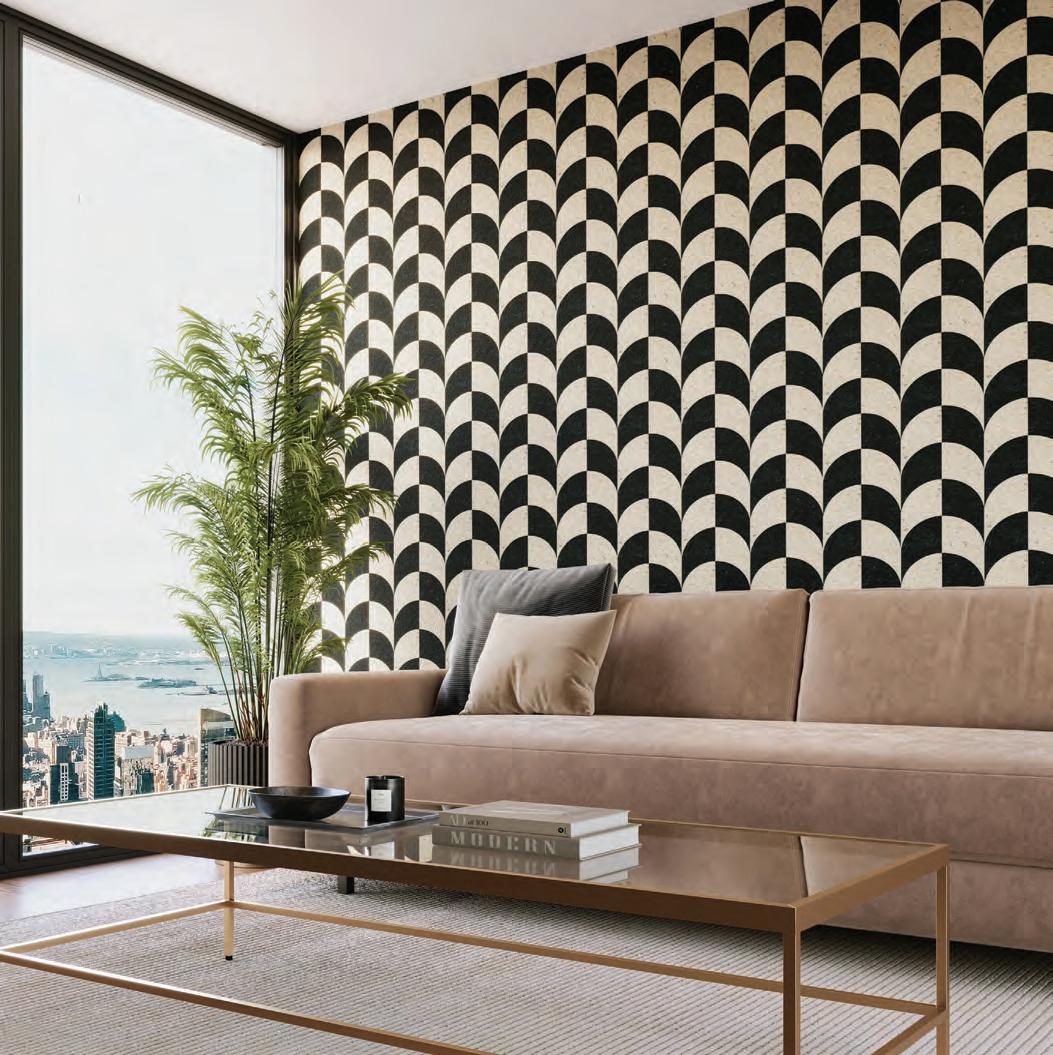
D&D Building Ste 1717 | innovationsusa.com | 212.807.6300
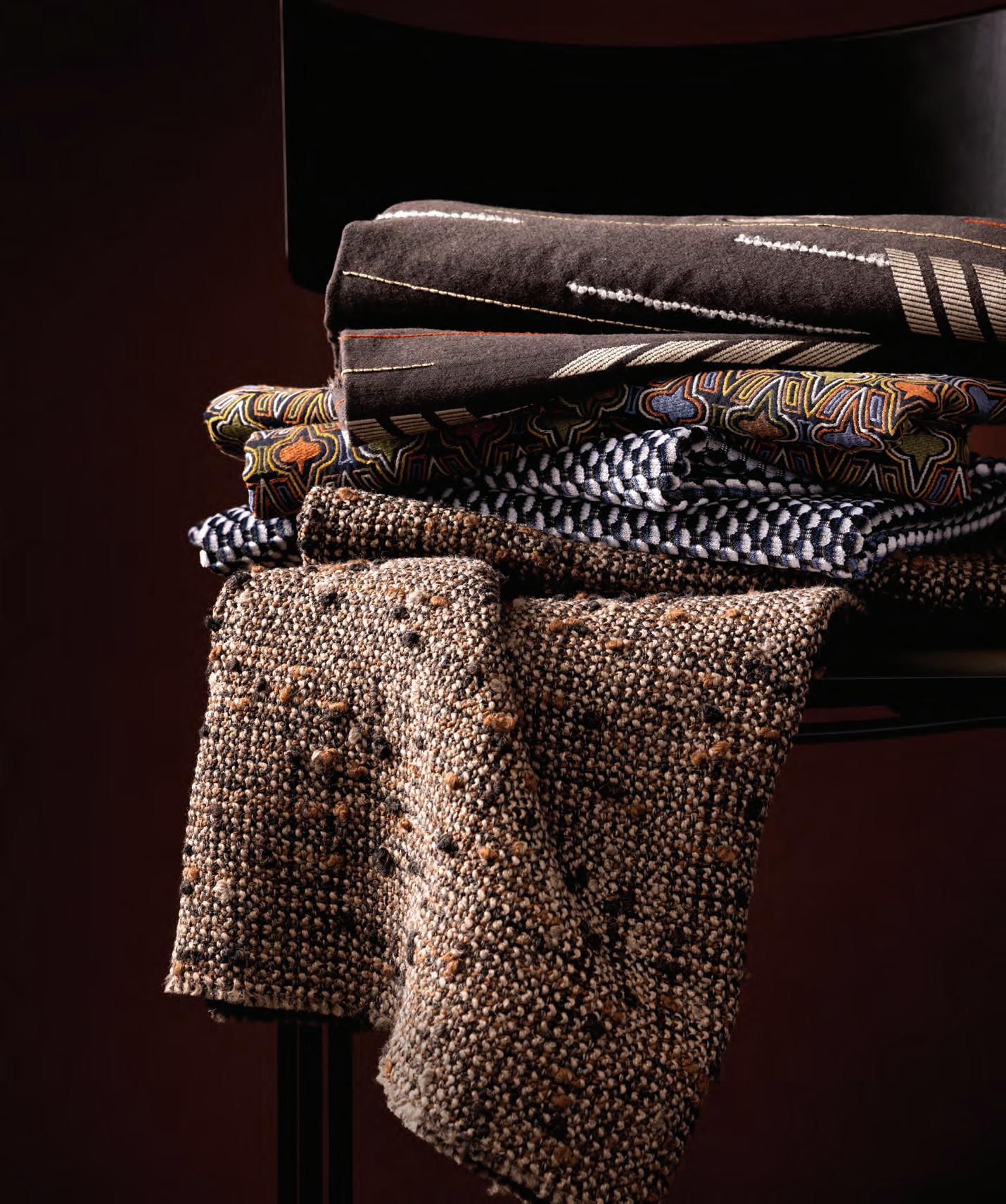
D&D BUILDING SUITE 1005 | 212.753.1539 | DONGHIA.COM
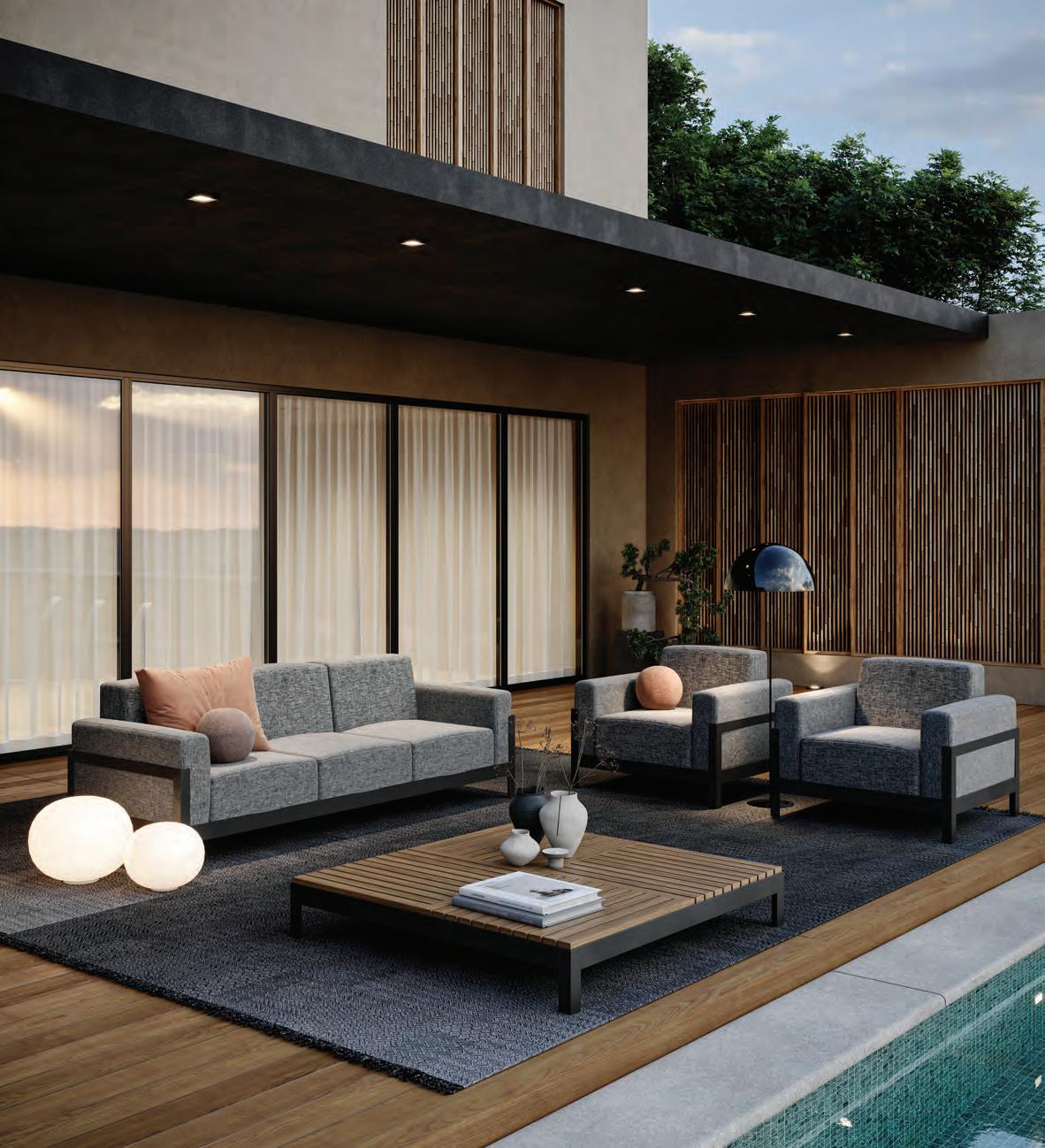
walterswicker.com/more-comfort | info@walterswicker.com
More Comfort by Clodagh
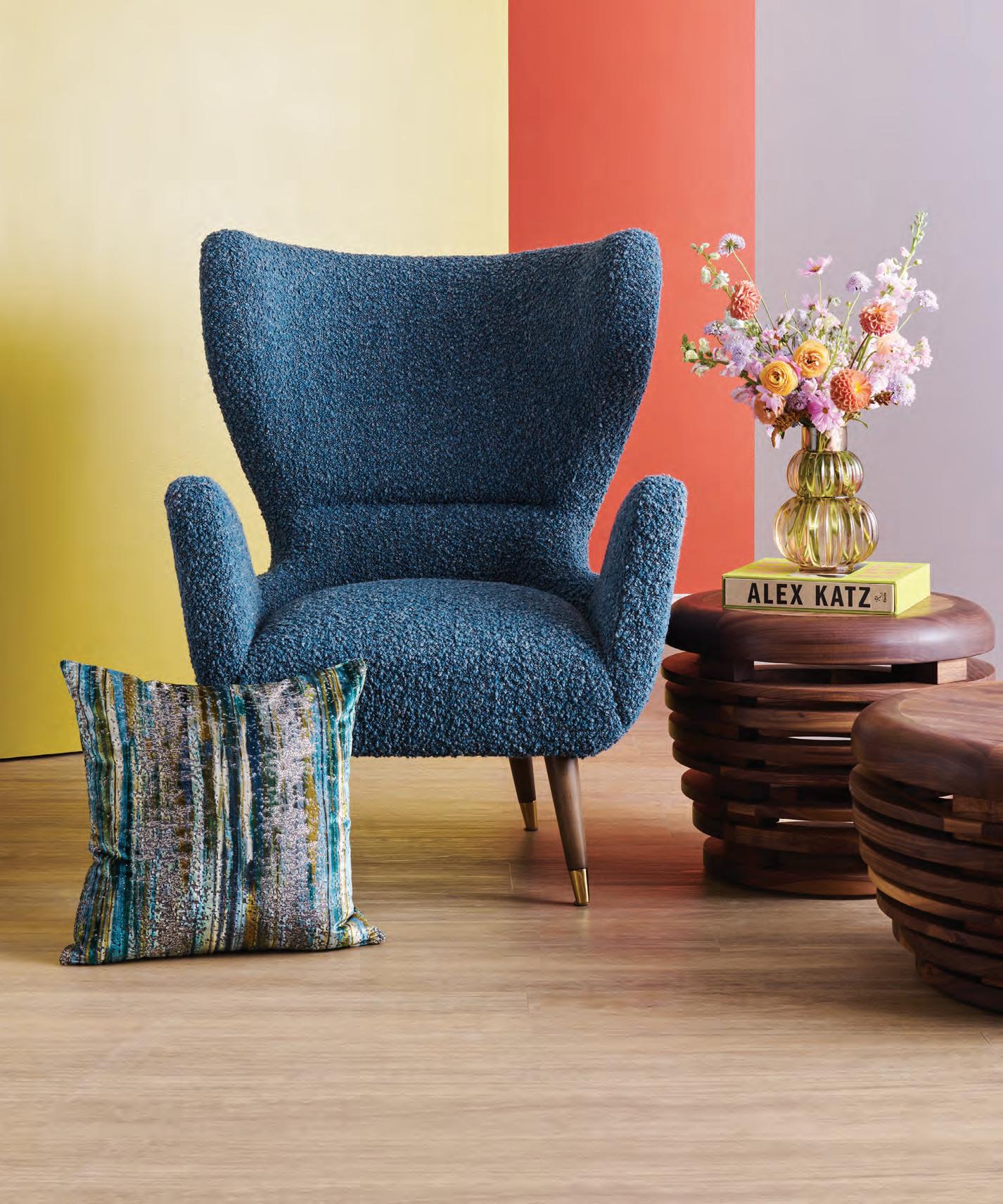
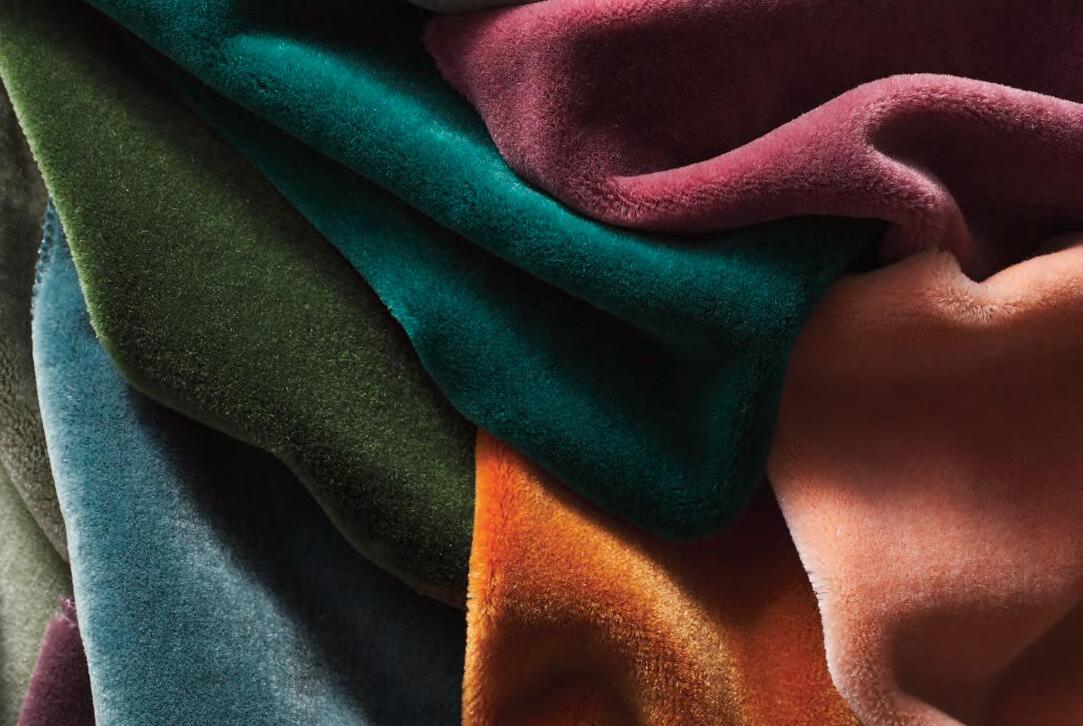
ROGERS & GOFFIGON LTD New York • Greenwich Chicago • Dallas • Dania • Denver • Houston • Los Angeles Seattle • San Francisco • Washington, DC • Toronto • Brussels • London • Paris www.rogersandgoffigon.com www.delanyandlong.com 212.888.3242 Suite 1718

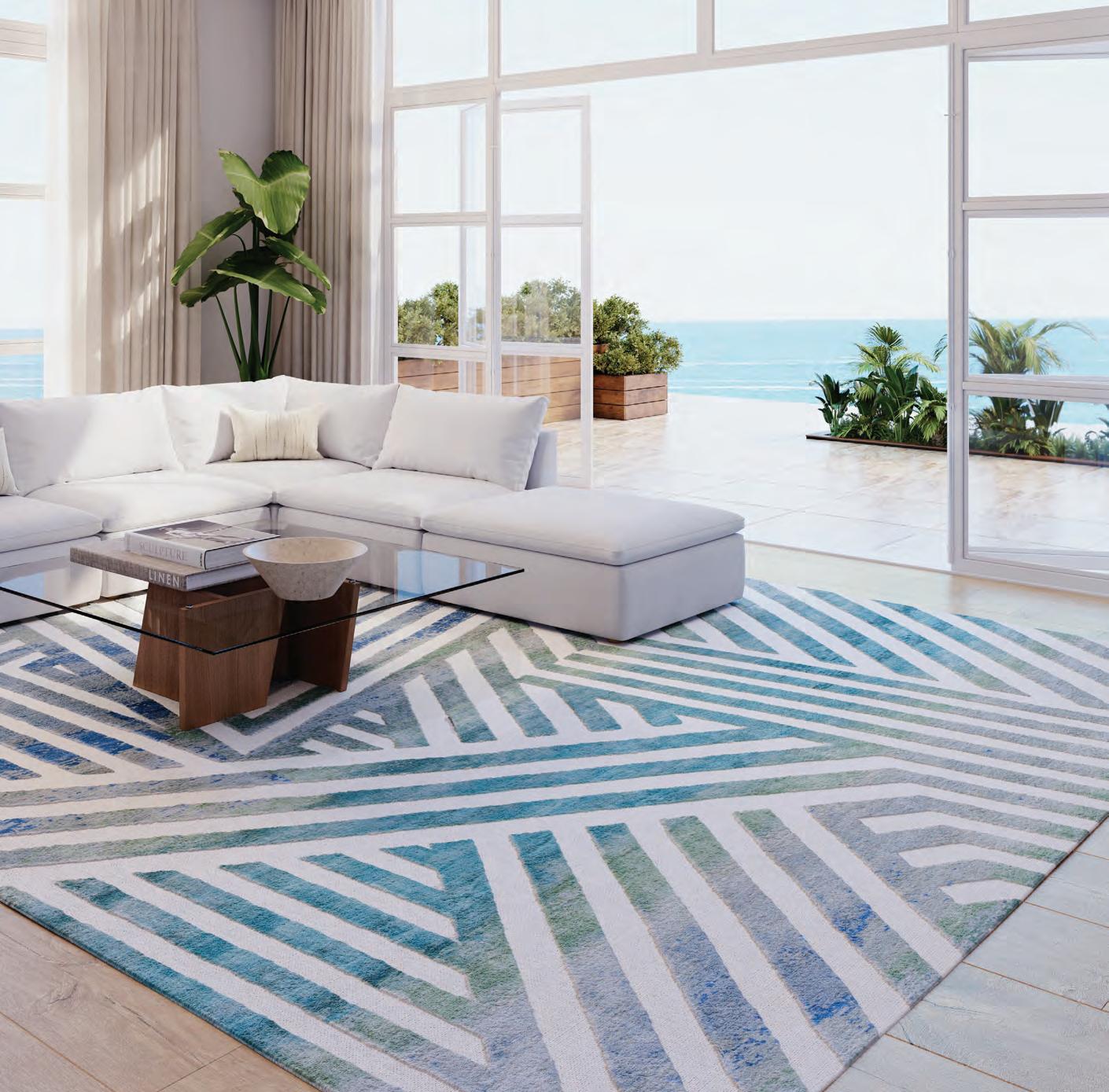
EXPERIENCE THE NEW STARKCARPET.COM LIEV EUCALYPTUS RUG VISIT OUR SHOWROOMS STARK NEW YORK 979 THIRD AVENUE, SUITE 1102 NEW YORK, NY 10022 212.752.9000 CARPETMAN BY STARK 633 COUNTY ROAD, 39A SOUTHAMPTON, NY 11968 631.283.0885 CRYSTAL TREE CARPET BY STARK 1201 US HIGHWAY 1, SUITE #13 NORTH PALM BEACH, FL 33408 561.622.6333

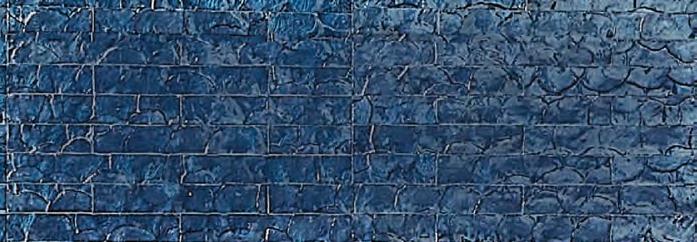

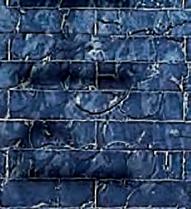

CUMULUS CAPIZ Handpainted Capiz Shell Wallcovering PHILLIP JEFFRIES NEW YORK DECORATION & DESIGN BUILDING • SUITE 1115 PHILLIPJEFFRIES.COM
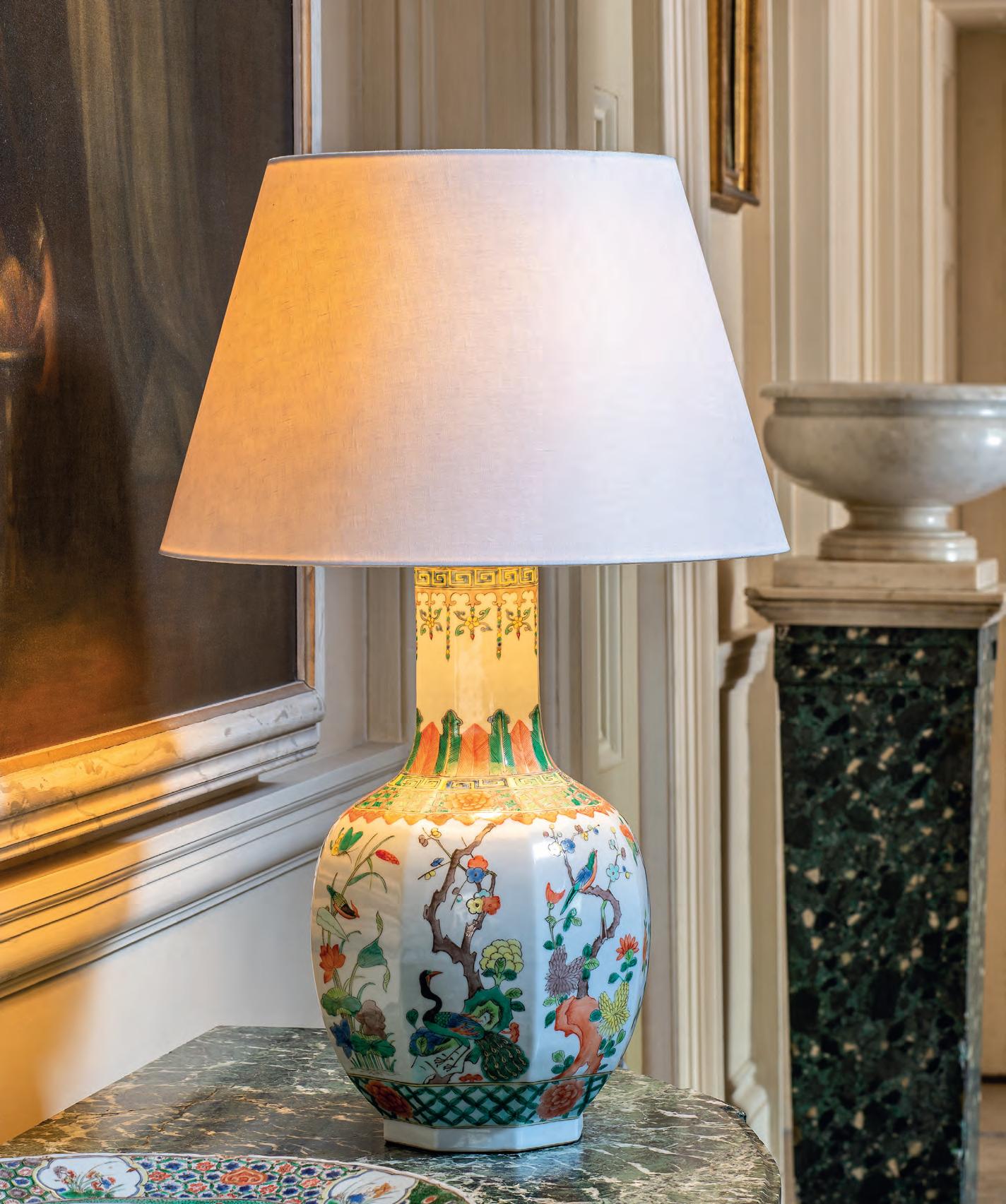
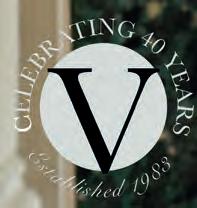
VAUGHAN D&D Building, Suite 1511 New York Design Center, Suite 607 Famille Verte Table Lamp - Birds Bramdean Collection vaughandesigns.com

D&D BUILDING SUITE 234 | 212.688.0444 | LEEJOFA.COM
REAL, RELAXED, REMARKABLE
Bellissimo is designed for active lifestyles with a classic distressed appearance, as well as a scratch resistant and waterproof finish. Many of our leather collections, including Bellissimo, are LBC Red List Free.
garrettleather.com l suite 1107
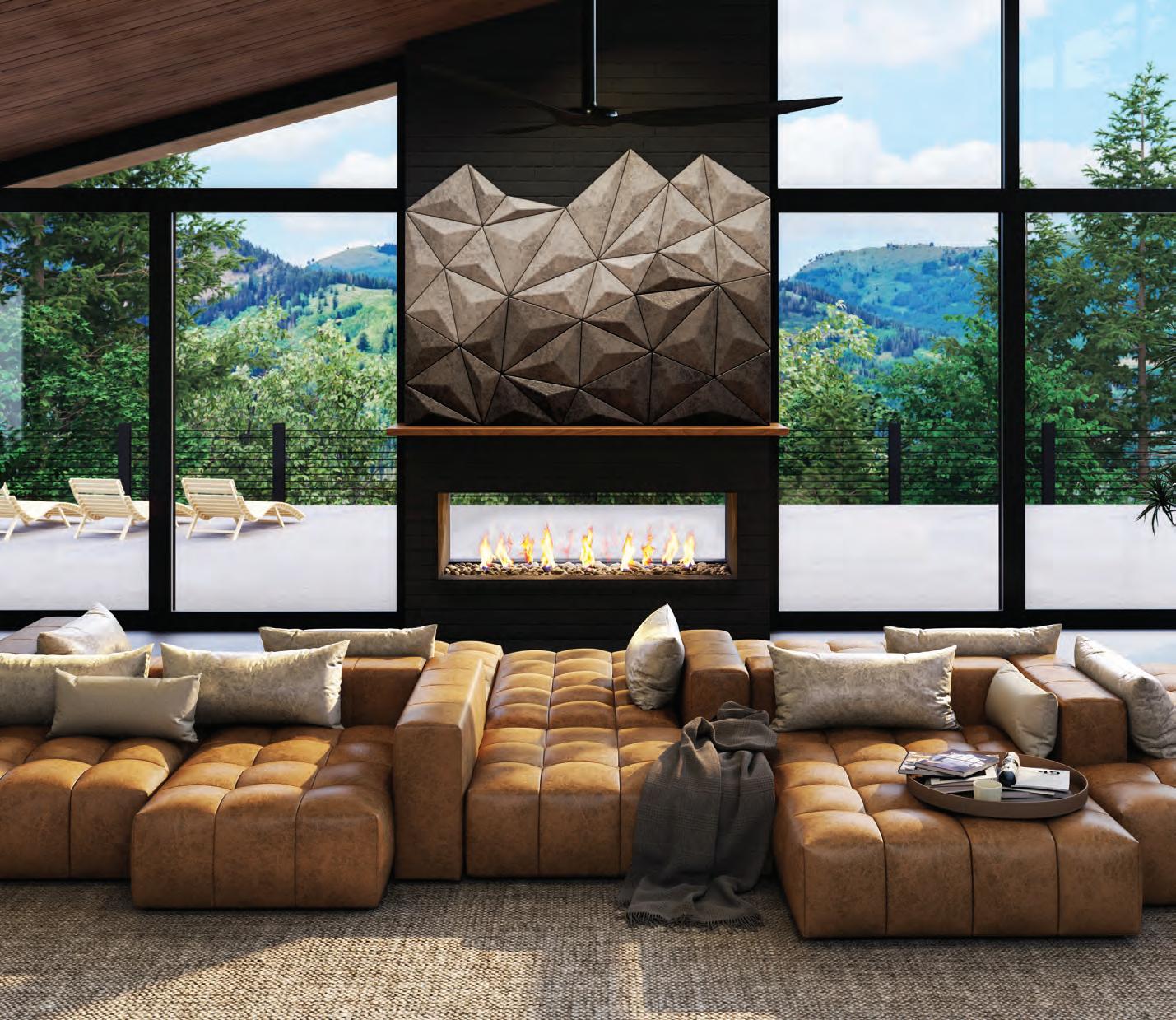 Sofa Bellissimo Brioche Pillows Bellissimo Nickel Wall Panels (top to bottom) Bellissimo Nickel, Porcini and Tiramisu
Sofa Bellissimo Brioche Pillows Bellissimo Nickel Wall Panels (top to bottom) Bellissimo Nickel, Porcini and Tiramisu



Exceptional Custom Rugs & Carpets 979 Third Avenue, Suite 507, New York, NY 10022 - (212)755-5995 - MartinPatrickEvan.com - @MARTINPATRICKEVANLTD
ZIMMER + ROHDE INTRODUCES ADO
ADO has been providing the design community with high-quality fabrics that combine ease of care with design diversity since 1954. A lot of passion and expertise goes into the development of every single product, to create fabrics that inspire.
ADO drapery and upholstery fabrics exult the most desired attributes: high abrasion, high light, and color fastness, stain resistance, water repellence, fl ame-retardance, and antiviral and acoustic properties to name a few.
Visit Zimmer + Rohde Showroom on the 8th floor and discover a wide range of fabrics on our website: www.ado-goldkante.de/en

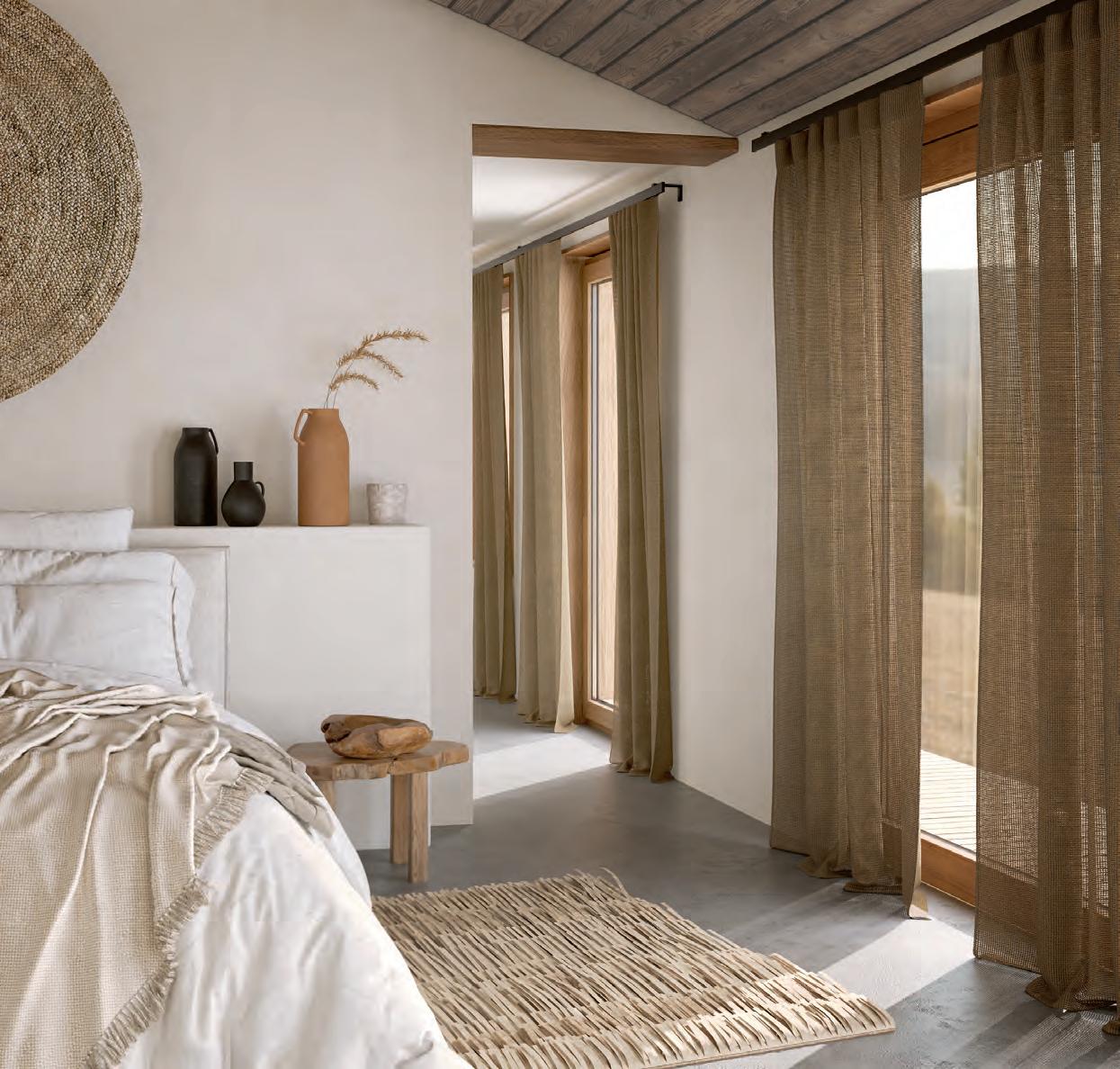
DISCOVER THE NEW COLLECTION
Horizon 3115 / 474
Introducing the Thirza Collection
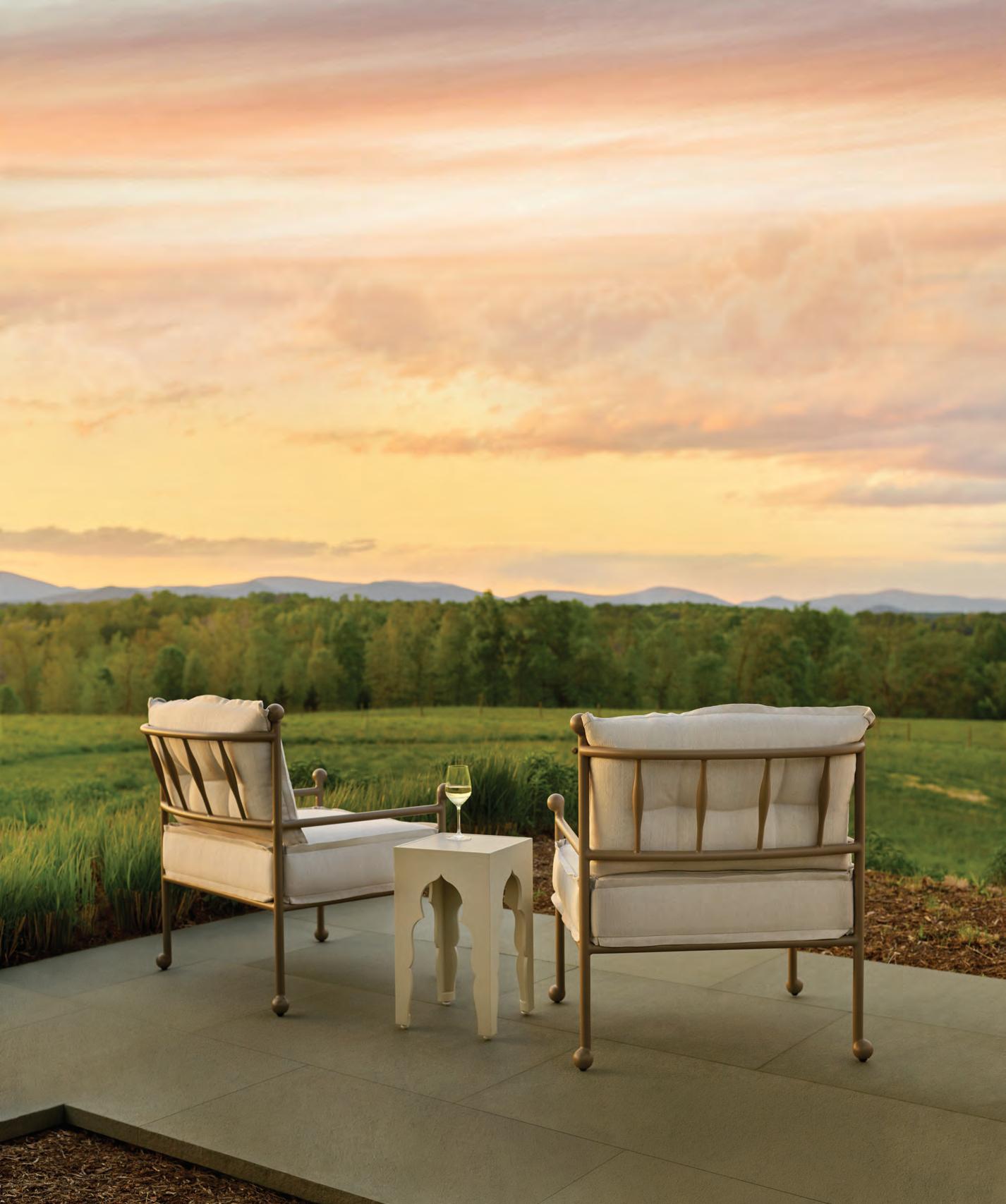
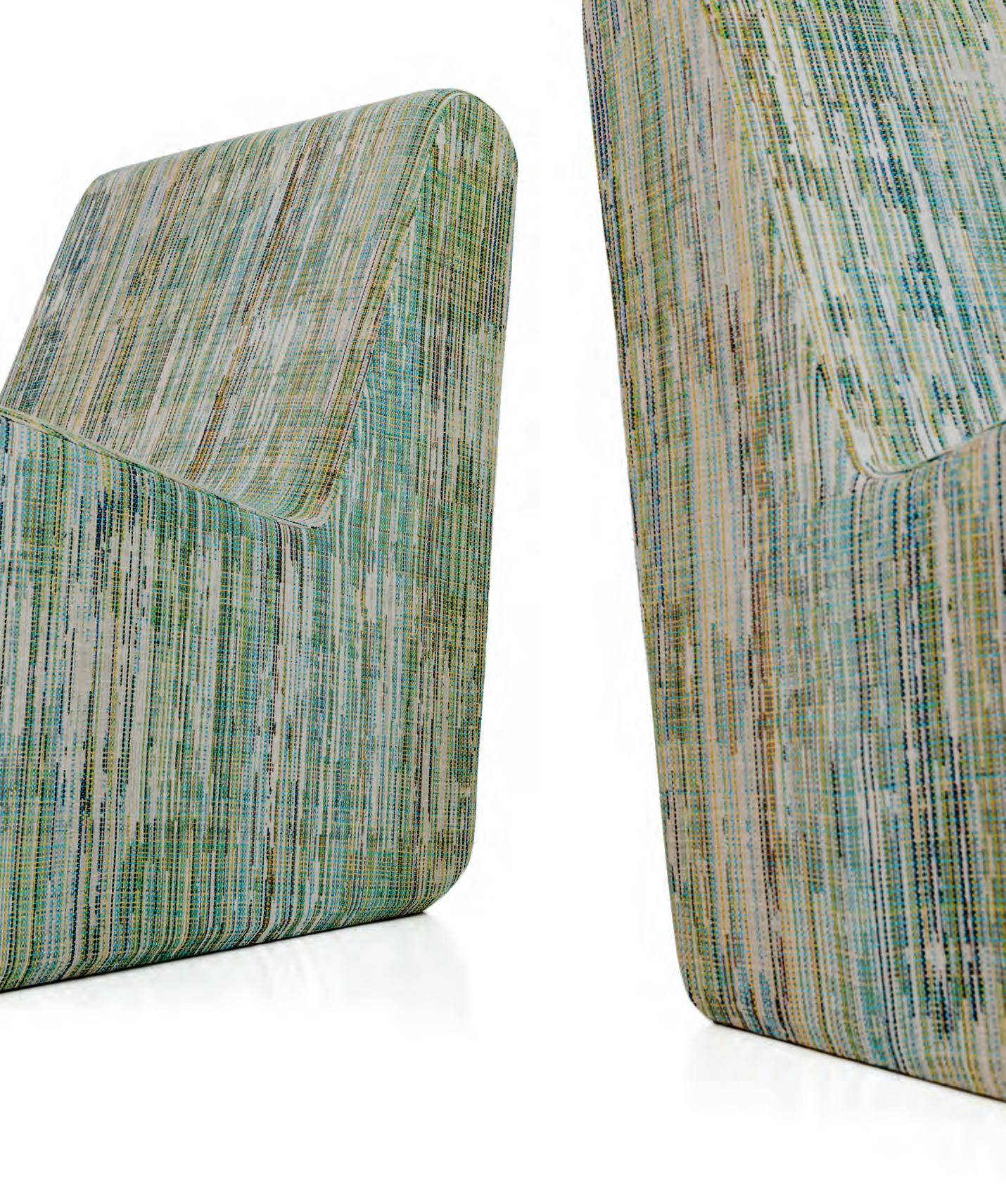 The Nick Cave Collection
The Nick Cave Collection
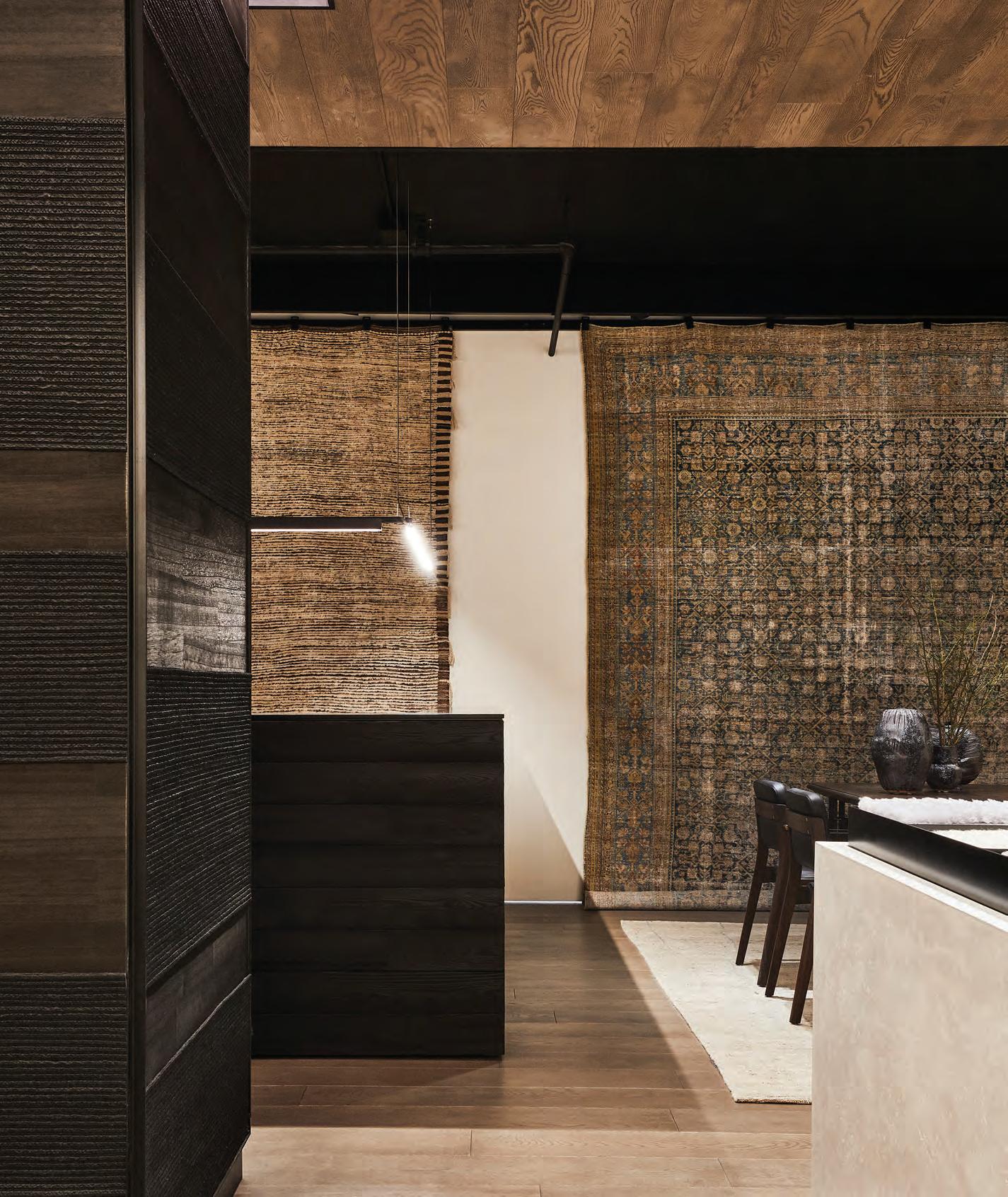

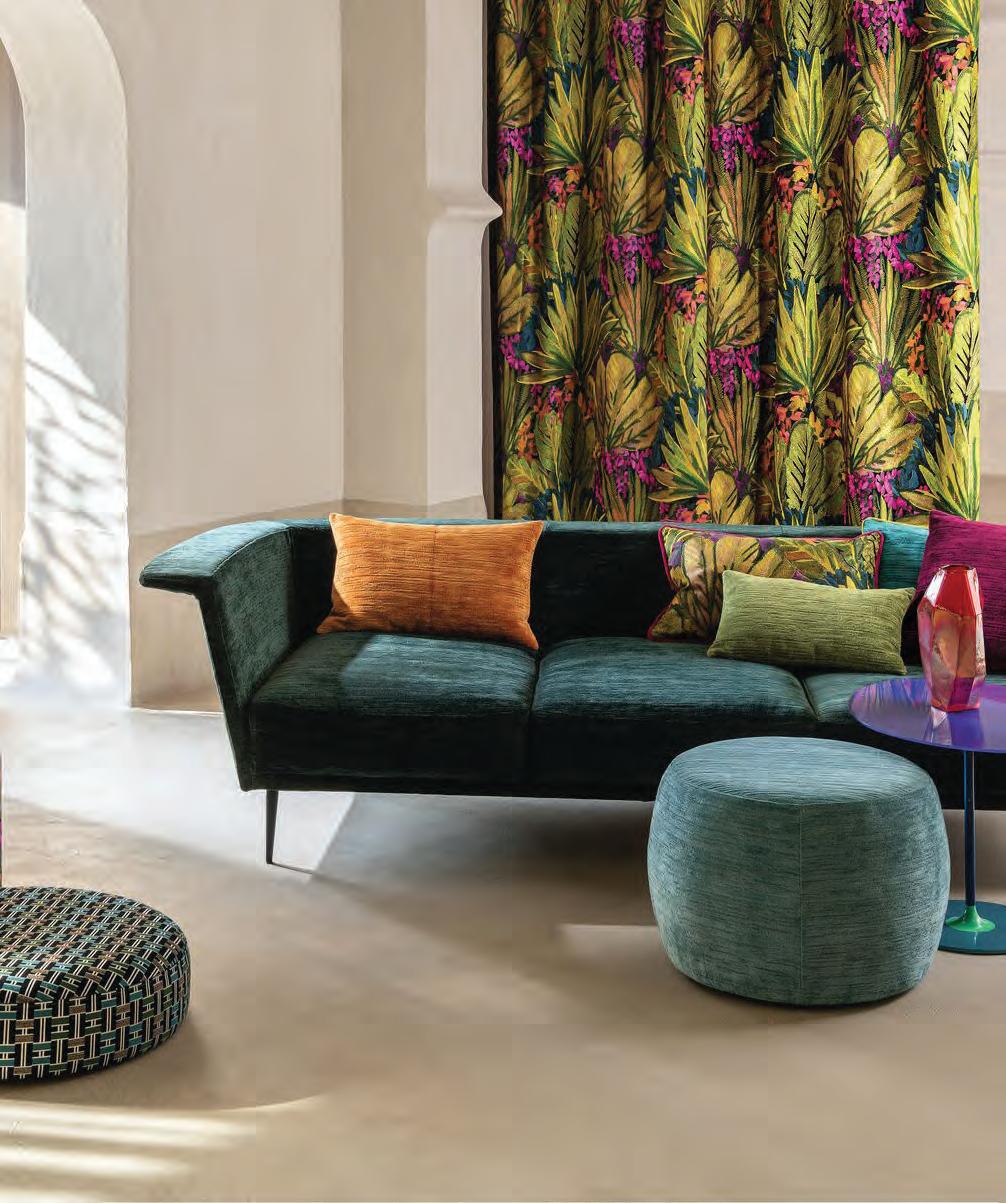
JAB.DE 212.486.1500 979 Third Ave. D&D Building, Suite 102 New York, NY 10022
INTERIOR LIVES
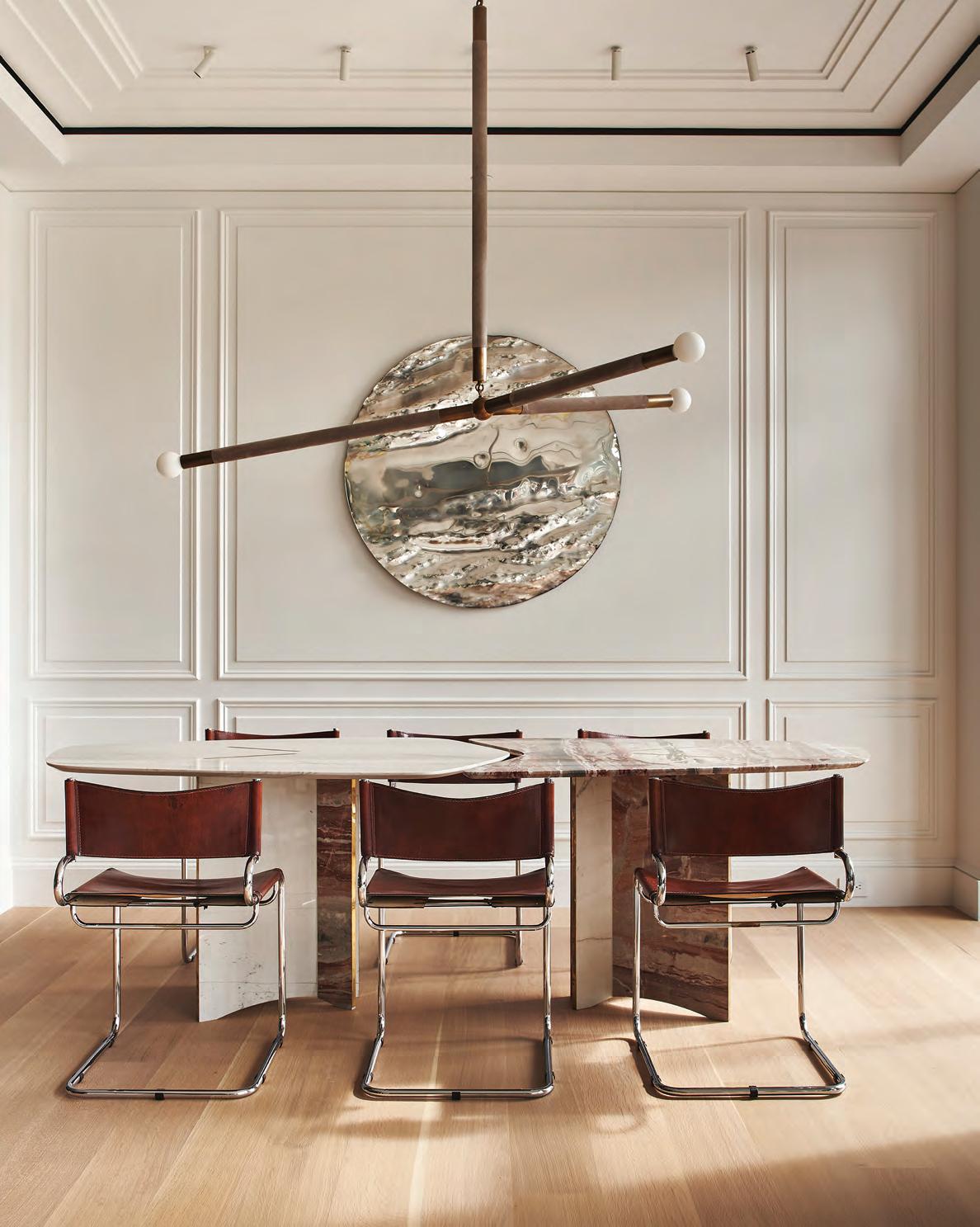
66 AVENUE MAGAZINE | SEPTEMBER—OCTOBER 2023
ADRIAN GAUT
SUR LA TABLE A Dining room
by Todd Raymond.
Tapert Howe
Designing outdoor spaces is something of a catch-22: they should look and feel like a living room en plein air, but there are opposing rules for choosing furniture. It needs to match the general aesthetic of the rest of the house, yet still be its own thing. For Georgia Tapert Howe, who is based in LA, outdoor spaces aren’t an unusual ask—and she’s learned to tow a fine line.
“In a living room, you don’t want any matching other than a pair of chairs, but you don’t want it to feel like you bought a ‘set.’ [With] an exterior space, there does need to be more cohesion,” she explains. “So, maybe what we’ll do is we’ll buy a sofa and a pair of chairs, but then we’ll mix it up with a coffee table from a different company, a custom coffee table, or an old, found, beautiful wood table.” Sourcing vintage pieces and antiques is a frequent element of Tapert Howe’s work. Over the course of our conversation, she makes references to her style, which leans toward warmth, and skews on the classic side. She becomes more declarative when it comes to avoiding trends (“I try not to focus on them,” she says diplomatically) and, more importantly, repeating herself.
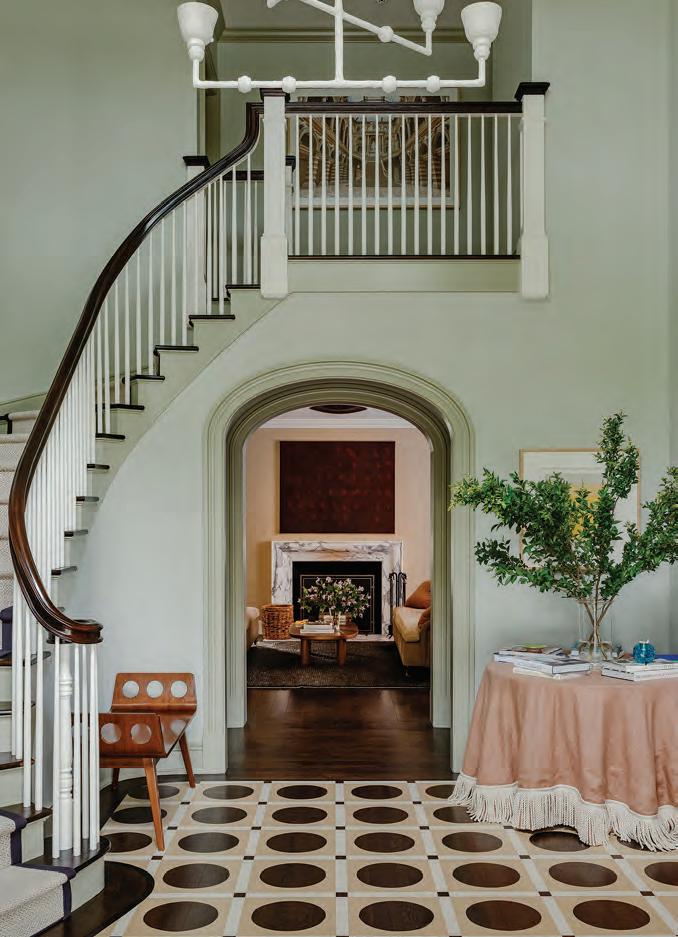
“I don’t want people to look at my website or see an image and say, ‘Oh, that’s got to be Georgia,’” she says. Even when clients use her own work as a reference point, Tapert Howe guides them to something unique. It may evoke the feel of the design they were drawn to, “but it’s going to be [their] version of that.”
Like many in her chosen career, Tapert Howe studied art history. But after working at Pace Gallery, she discovered her heart simply wasn’t in the art world. “I enjoyed it,” she explains. “I just knew I wasn’t going to have a career in it.” She did, however, enjoy interning for the famed architect and interior designer David Easton when she was in college. So, that’s where she returned. Stints at firms like Mica Ertegun and Haynes-Roberts followed, and by 2007 she opened Georgia Tapert Living, her first home accessories boutique, in Manhattan. Three years later— and a move across the country— Tapert Howe launched her eponymous design firm. But at her core, the designer is still an art lover.
“Art is such an important part of the final product,” she says of her
work. “A room can be beautiful— I can fill it with antiques and fabrics and all this stuff with a huge budget, but if there’s no art on the wall, it’s going to fall flat.”
These days, Tapert Howe is bicoastal, oscillating between two wildly different cities, unsure if she prefers one over the other. “LA is easier; there are less limitations,” she admits. Older New York buildings often have pipes in the walls restricting what can be done with the layout. And on a recent project, she had to find a way to transport sofas and tables to the top of a prewar building. But ultimately it was worth it. “You trade in the flexibility for really beautiful historical elements, which I love and gravitate toward.” —aria darcella
SEPTEMBER—OCTOBER 2023 | AVENUE MAGAZINE 67 Georgia
MAX B PHOTO
Meet the new guard of interior design: six talents open up about redefining classics and bringing innovation—and beauty—to the industry.
“People don’t hire me for a ‘preppy’ vibe,” says Caroline Rafferty. That’s about as close as she or anyone else can get to really defining her style. A creative chameleon, her portfolio boasts everything from eclectic modernist apartments in New York to old-world romantic retreats in Palm Beach and everything in between.
As an art history major, the designer became obsessed with the way people in the 16th, 17th, and 18th centuries would travel the world and bring back objects, throwing them together with no forethought to cohesion, yet making it all work just the same. The way it has translated into her work is through her love for
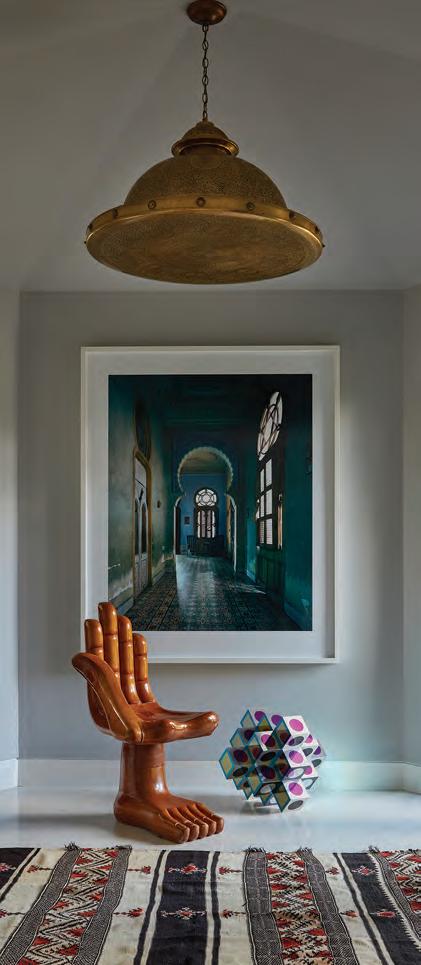
juxtaposition. There’s always a way to make pieces across different time periods and aesthetics fit.
“My favorite thing is when a client already has [ideas or things] they really love, because it’s a great departure point. The homes feel more like they have a soul,” she says. “When someone says, ‘I want a home ready-made,’ I get a little bit itchy. It’s not like something needs to be off, but I always say, ‘Where’s the thing that makes it a little bit weird or different? What really shows us that someone lives here, and that it’s not a catalog?’”
Having an appreciation for different eras is also what has led Rafferty to rethink the term “dated.”
Rafferty
“It’s not always a negative thing,” she explains. “There are some cool, rounded edges from the ’80s that I’m inspired by lately, but I don’t want the whole wall. I’m just looking at the ceiling trim.” She keeps a trove of design books from different decades in her office, focusing on elements that feel truly timeless.
Rafferty began her career in real estate development. When the housing market crashed in 2008, she realized what she enjoyed wasn’t taking big risks, but being creative. That year she went into business with her friend, and fellow interior designer, Georgia Tapert Howe. “We still support each other and lean on each other with questions,” she says of their friendship (both have since started their own businesses). “I don’t know if that’s a rare friendship… I’m a huge cheerleader of hers.”
Caroline Rafferty Interiors was officially launched in 2015 after her family’s move to Palm Beach. Her business has grown to include a highly trained team, including senior designers and a full-time architect. But the most important people in Rafferty’s professional orbit are her clients themselves. The stories they tell her—and their hopes and dreams for their homes—inspire her more than anything else.
“They let you in their life in this intimate way. You’re talking to them about how they sleep in a bed, brush their teeth, and get dressed in the morning,” she says. “People open up to you. It’s a slow roll—you start off with the getting-to-knowyou [part] and by the end, most become my dear friends.” —AD
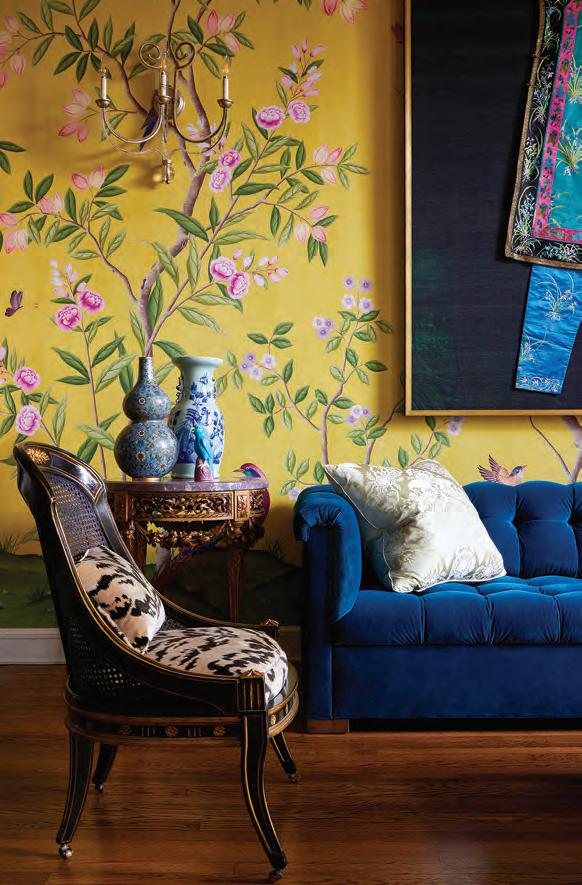
68 AVENUE MAGAZINE | SEPTEMBER—OCTOBER 2023
CARMEL
FASANO BRANTLEY Caroline
Dan Fink
Dan Fink and his self-proclaimed “dream team” of 15 (architects, illustrators, and interior designers) work together to create sophisticated, calming environments. “This is a service business, and I can’t do it alone,” Fink says. “It took time to understand how important it was to foster and build the team—and I have an incredible team.” Fink’s all-star lineup is in high demand for their elegant spaces, which fuse history and tradition with modern and natural elements.
“The most important thing is that it feels calm, it feels cohesive, and it feels balanced,” Fink explains. “When all the disparate parts blend together, that is the definition of elegance in design.” Fink is obsessed with the history
of design, and, like a time traveler, smartly references various eras in his work. He takes the most inspiration from the Art Deco period, which can be seen through his use of polished woods and bold geometric patterns that evoke the richness of the era while still feeling modern. “It was a touchstone moment in design,” he says. “You saw all this new beauty in the design of ships and cars and interiors—everything was magical then. I try to emulate that in our work today.”
Fink’s projects range from Fifth Avenue apartments to homes in the Hollywood Hills, Connecticut’s shoreline, and the beaches of Maui. A recent project brought him to the iconic Carlyle hotel in Manhattan, where he renovated several
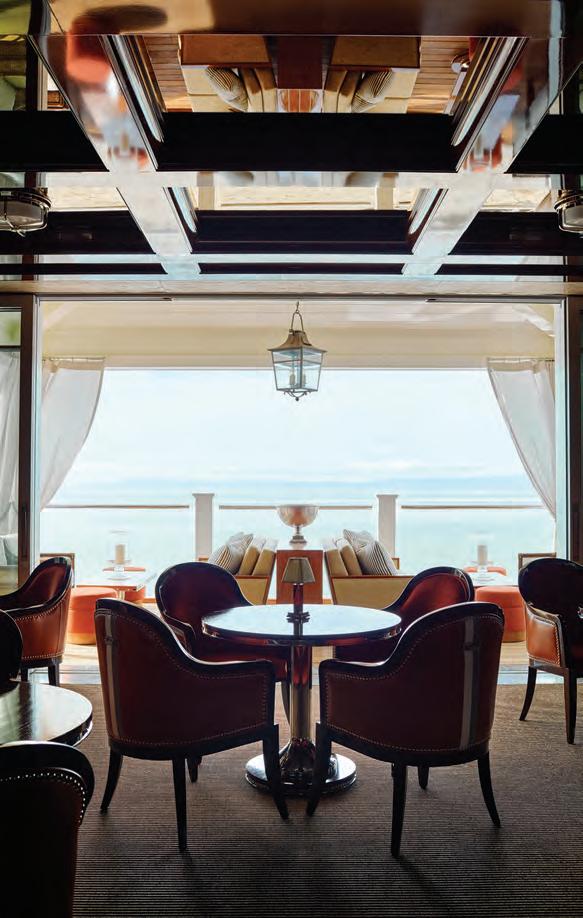
apartments. He used Coco Chanel as a muse, infusing the spaces with French allure while working in modern elements inspired by masters like Eileen Gray.
Fink has won countless accolades, including being included in the AD100, Elle Decor’s A-List, and House Beautiful’s Next Wave. His growing success is based on finding that sweet spot between simplicity (he favors calming colors) and opulence. “When that common thread of time, space, and objects can be found, balance can be achieved,” he explains. “That’s when the space becomes really beautiful and glamorous.”
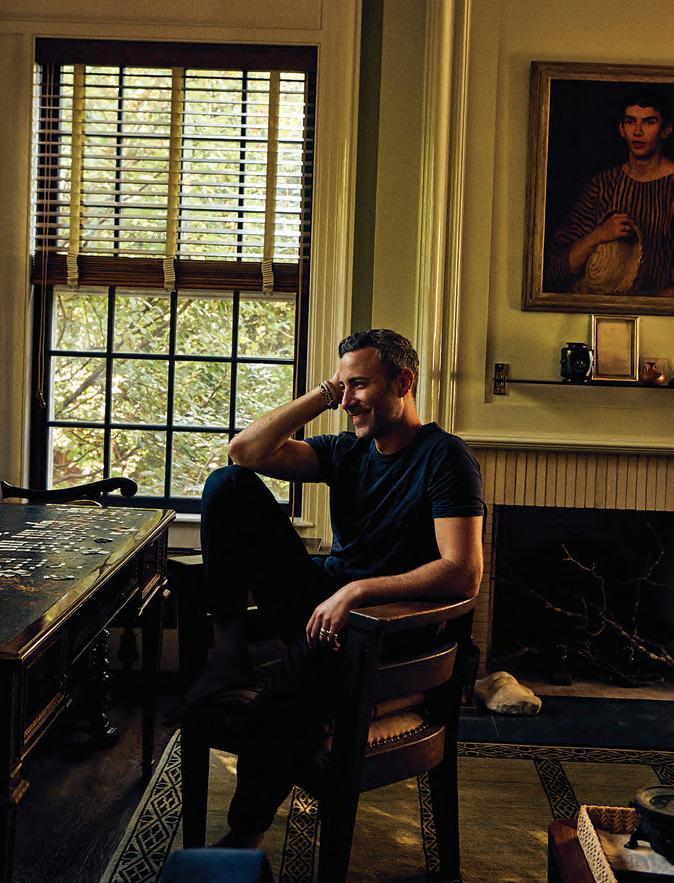 ted hildner
ted hildner
SEPTEMBER—OCTOBER 2023 | AVENUE MAGAZINE 69 PORTRAIT: OLIVER PILCHER; INTERIOR: NICOLE FRANZEN
Young Huh
There’s not a single interior design trend that Young Huh won’t embrace. “Everything has potential if it’s done in a thoughtful way,” she tells Avenue. On second thought, the modern farmhouse aesthetic—in all its rustic, Gaines-ian, barn door-infused glory—does drive her “a little nuts” at times, but only because of how mainstream it’s become. (For what it’s worth, she harbored similar feelings about the accent wall craze a few years ago.) “People just jump on a bandwagon, and it prevents them from thinking carefully, as individuals, about their home and the details in it.” Creating real beauty, she adds, is complicated. “And beauty is so, so important.”
It’s an apt philosophy for Huh, who grew up in Detroit prior to settling in New York. Before her interior design work earned her numerous accolades (and precious real estate in some of the most well-known lifestyle glossies), she’d been reluctantly pursuing law. That is until one evening in 2001, when she chatted up an interior designer at a party and realized her life’s true calling. (Huh describes this as her “lightbulb moment.”)
After that fortuitous encounter, Huh promptly ditched her burgeoning legal career and enrolled in interior design classes at Parsons School of Design, interning at different design firms and honing her craft along the way.
In 2007, she opened her own full-service firm in New York, where Huh and her team specialize in high-end residential and hospitality design all over the world, approaching each project with the kind of disciplined pragmatism of, well, a lawyer. (She embraces this overlap.) “We start with classic design principles, asking, ‘Where is the symmetry? What are some of the architectural conditions we want to resolve? Do we need more light?’” Then, she says, comes the “fun” part: manipulating color and architecture and playing with things like interior details, texture, and negative space.
With several noteworthy projects under her belt, Huh cites much of her success to the Upper East Side loft she transformed in 2019 as part of the 47th annual Kips Bay Decorator Show House. (Huh, along with 21 other designers, was tasked with designing a room in an empty estate for a charitable cause.) With colorful, Braqueinspired wallpaper (custom from Fromental), a marble-topped antique table from the 1930s, a sprawling, six-foot-long brass chandelier, and other elements of worldly bohemia, Huh designed the space to be “a fantastical studio belonging to an eccentric artist who travels all over the world and does whatever she wants.”
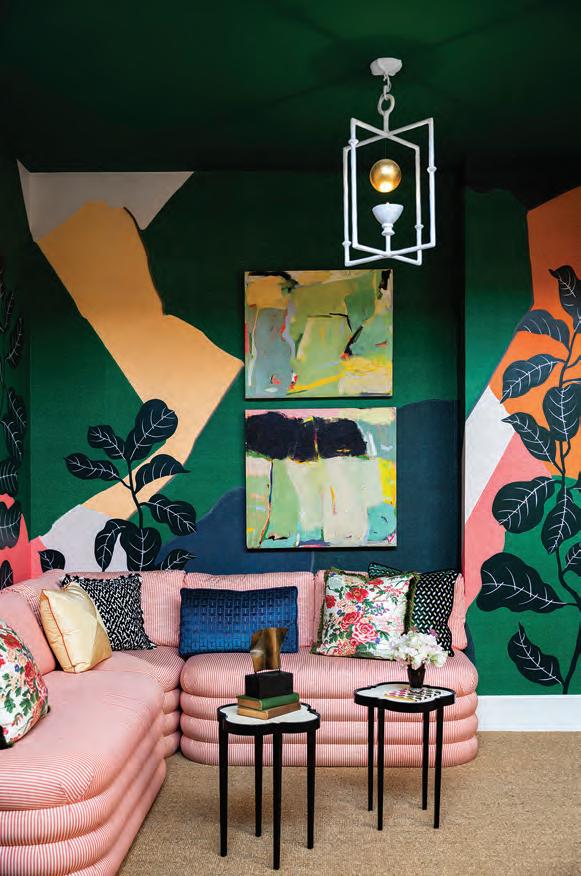
The project introduced a bigger part of the world to Huh’s vision. She finds inspiration from the comingling of cultures, referencing the Silk Road and the “mishmash of things that emerged during that long journey for rare goods” as a current source of fascination. As a Korean American, incorporating global influences into her work is something she’s especially passionate about. “I just really love that interplay,” she muses.
Up next for Huh are historic tudors in Westchester and Chicago, town houses in New York, a ski house in Jackson Hole, and a new extension to the Point Grace resort in Turks and Caicos. (Huh has been working with the five-star property since 2019, giving its suites, cottages, lobby, and restaurant stylish and noteworthy makeovers.) But it’s the world of product design that’s got her buzzing with excitement these days: In a few months, she’ll release a collection of Korean-inspired wallpaper with Fromental; the collaboration follows the collection of tiles she created with AKDO in 2018 and the line of ornate hardware she designed with Modern Matters earlier this year. “It’s just so fun, applied art. You know? Designing something and then using it.”
—hilary shepherd
70 AVENUE MAGAZINE | SEPTEMBER—OCTOBER 2023 BRITTANY AMBRIDGE
“Everything has potential if it’s done in a thoughtful way.”
—Young Huh
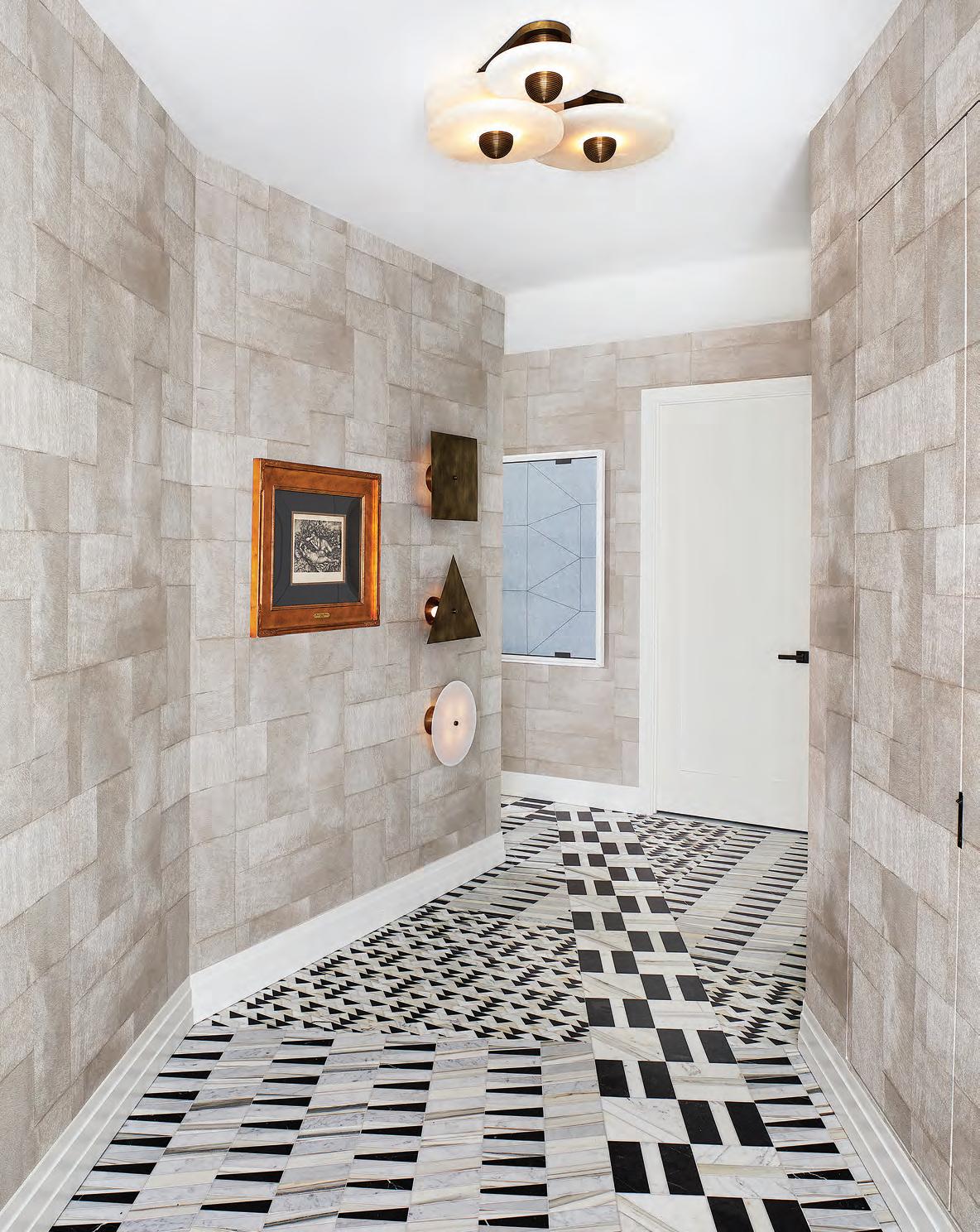
SEPTEMBER—OCTOBER 2022 | AVENUE MAGAZINE 71 FRANCESCO LAGNESE SEPTEMBER—OCTOBER 2023 | AVENUE MAGAZINE 71
Peti Lau
Peti Lau’s eclectic, artful touch is sprinkled all over the world: Thailand, Dubai, West Hollywood, London, New York, and even as far as Mauritius in East Africa. But it’s a city in Florida the interior designer is after these days. “I just think Miami has such interesting architecture. I really like how art-centric and diverse the people there are, too,” she tells Avenue. “I don’t have any design opportunities there, but I’m putting it out there and manifesting it.”
Should the universe grant Lau’s wish—given her impressive portfolio, it probably will—you’ll be hard-pressed to miss whatever she touches in the lively, coastal city. “There’s a lot of personality in my work,” she says, likely alluding to “AristoFreak,” the (admittedly perfect) term she gave her signature, bold style. “Everything I do is very layered, textured, and colorful, but I also think there’s an element of timelessness. I avoid things that are ‘trendy’ because I want my clients to love their space 10 years from now.” Patternmixing is another hallmark of her aesthetic, and something she feels particularly well-equipped to do
based on her childhood singing opera. “The way I see patterns is the same way I hear music,” she says. “Depending on the notes and chords, a song can sound melancholy or melodic. Much like pattern-mixing, and interior design in general, there are all these contrasts at play, but you still need a sense of harmony.”
Lau’s foray into interior design was anything but conventional. She’d been an expat in Thailand for a few years, dabbling in hospitality and fashion and “just being creative on a tropical island.” After designing the restaurant at a local hotel, her work caught the eye of a friend’s father, who asked her for help in designing his new villa. His neighbor, impressed with the work Lau had done, quickly became her very first client and mentor, providing her with key opportunities in places like Mauritius and Dubai. “I was like, ‘Wow, I really love interior design and I think I’d like to take this seriously,” Lau recalls. So, she packed up and moved back to the East Coast (she grew up near Washington, DC) enrolling at the New York School of Interior
Design and graduating in 2011. She bounced around at different design firms until 2013, when she opened one of her own and made a name for herself in the world of high-end residential and commercial design, collecting awards and a cushy spot on HGTV along the way.

Lau says working on the Hollywood Hills home of the Chainsmokers’ Alex Pall in 2018 was a major career highlight, as he allowed her to “really go for it. It was dynamic, collaborative, and fun. He was a really big art collector. His mom is English, so we used House of Hackney wallpaper. We had these bold rock ‘n’ roll moments and also these really sexy ’70s vibes in the living room with a shag rug.” Plus, she adds, “there was an actual tree in the living room.”
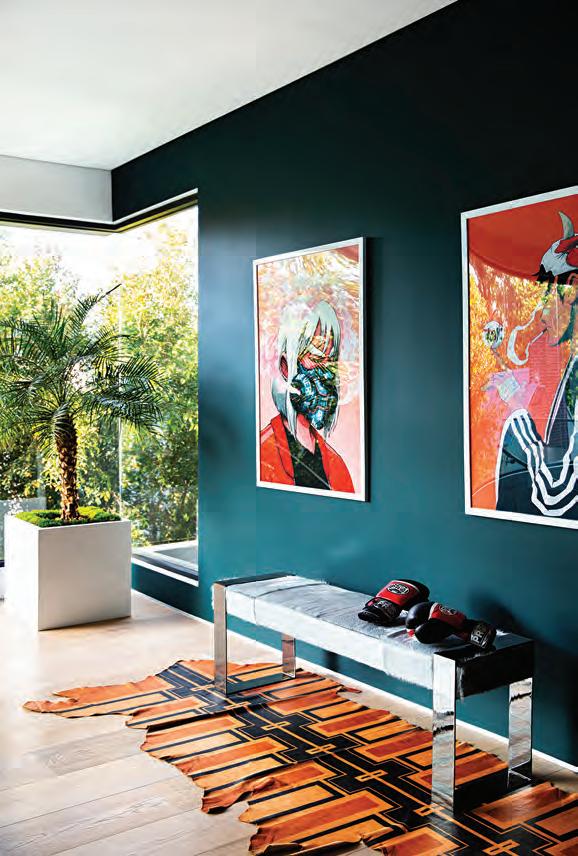
Some of the residential projects Lau’s currently tackling sound equally wild: a New York
apartment overlooking Central Park belonging to an eccentric Burning Man enthusiast (think Lindsey Adelman chain light fixtures, $70,000 worth of peacock feathers, and hand-blown glass). Then there’s a project in Pasadena: the mid-century-meetsHollywood-Regency home of the person who created the famous Beverly Hills Hotel banana leaf wallpaper. (Lau, for what it’s worth, opted for de Gournay on the walls.)
These types of projects are where Lau truly shines, and for good reason: “I’m inspired by people. I think that’s probably why I’m a designer, because I really love understanding them and creating spaces for them. The job we do is almost kind of psychic in a way— you have to be able to read people really well and figure out what it is they want before they even know what they want.” —HS
72 AVENUE MAGAZINE | SEPTEMBER—OCTOBER 2023 PORTRAIT: NICHOLAS ONKEN; INTERIOR: BRITTANY AMBRIDGE
Todd Raymond
About a year into his role as a senior designer for Shawn Henderson, Todd Raymond decided he wanted to do his own thing. The timing felt fortuitous: after graduating from Parsons School of Design in 2014, he made the rounds at firms like Tonychi Studio, Pembrooke & Ives, and Dan Fink Studio, eventually landing at Henderson’s. Raymond gave him several months’ notice of his departure, which would mean his last day would be in April of 2020. Global pandemic notwithstanding, he was still able to get his own residential design firm, Studio Todd Raymond, up and running in New York that same month. He describes this experience as one of those so-incredibly-unfortunateyou-just-have-to-laugh moments. But if there’s some nugget of wisdom hidden in there, perhaps it’s got something to do with

trusting yourself—which Raymond is rather good at.
He believed in his talent enough to switch from hospitality design to residential design early on in his career when he realized the former doesn’t allow for much client interaction. “When you work on a project for a big hotel,” he explains, “there’s a whole army of people all around the world working on this 65-story skyscraper. I just really craved the kinds of intimate connections you form with your clients in the residential design world.” Most crucially, though, he trusted himself enough to pursue interior design in the first place; in his 20s, he went from managing restaurants to taking night classes at Parsons and working shifts at a furniture and fabric showroom during the days.
Now, over a decade after he made that initial jump, Raymond finds himself with a solid clientele base, a thriving business, and an impressive portfolio of residential projects in Palm Springs, Brooklyn, LA, upstate New York, and Manhattan. On the horizon: an apartment overlooking Central Park and a “really big” villa in Qatar.
“Our aesthetic is ‘decidedly modern,’” Raymond notes, “but we like to juxtapose [modernity] with traditional elements.” Case in point, a loft he worked on in SoHo in 2021. “The shell of the space was very traditional. There were French doors and a Juliet balcony, a very European feel,” he says. “We [preserved those elements] but added things like modern furniture, applied moldings, and modern millwork throughout.” Ditto the recent project down in Palm Springs, where Raymond infused modernity into the space by way of furniture and other details, while still maintaining the integrity (and “gorgeous stone fireplace”) of the ’70s-style home.
Inspiration, Raymond says, can strike from seemingly anywhere—a photograph, a sculpture, a city—and he’s got a knack for incorporating those sources of inspiration into a space
in a way that’s clever, subtle, and delightfully unexpected at times. At a home he recently worked on in Manhattan’s Upper East Side, for example, Raymond paid tribute to the client’s Finnish heritage, an idea she was initially hesitant about. “She was like, ‘It’s going to be all Artek furniture. It’s going to be so obvious.’” Instead, he added things like blown-glass fixtures (“The Finns are known for blowing glass,” he says), vintage ceramics from the ’60s and ’70s from Finnish designers, and fabrics woven in Finland. “We wanted to include all these little nods to her heritage to make her feel very special, especially knowing that when she’d have friends over, she could introduce them to all these amazing Finnish artists,” he says.
This thoughtfully subdued approach is perhaps most evident in the way Raymond utilizes color, or lack thereof. “Everyone jokes that we only do neutrals,” he chuckles. “We do use color, but in a more natural way.” (Don’t dare ask about primary colors.) He uses green as an example: “Green will either be met with a beautiful gray undertone or maybe another shade of green. We like things monochromatic. But, in general, I prefer to play up textures rather than color. It’s more fun.”—HS
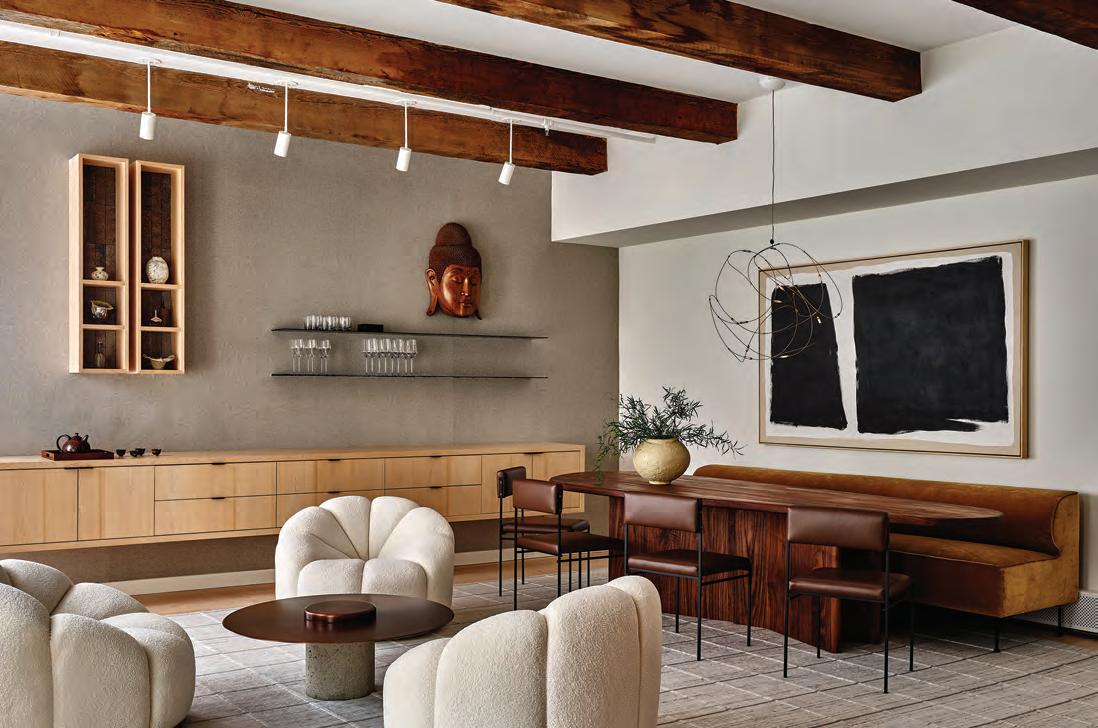
SEPTEMBER—OCTOBER 2023 | AVENUE MAGAZINE 73
PORTRAIT:
DANIEL D'OTTAVIO; INTERIOR: READ MCKENDREE
“I FEEL LIKE THE WORLD BROUGHT ME BACK HERE.”
—EMMA SCULLY
Close to Home
RISING DESIGN DEALER EMMA SCULLY SPEAKS TO ANN BINLOT ABOUT THE CULTURAL APPROACH TO DESIGN SHE HAS CULTIVATED IN HER GALLERY—JUST ACROSS THE STREET FROM WHERE SHE GREW UP ON THE UPPER EAST SIDE.
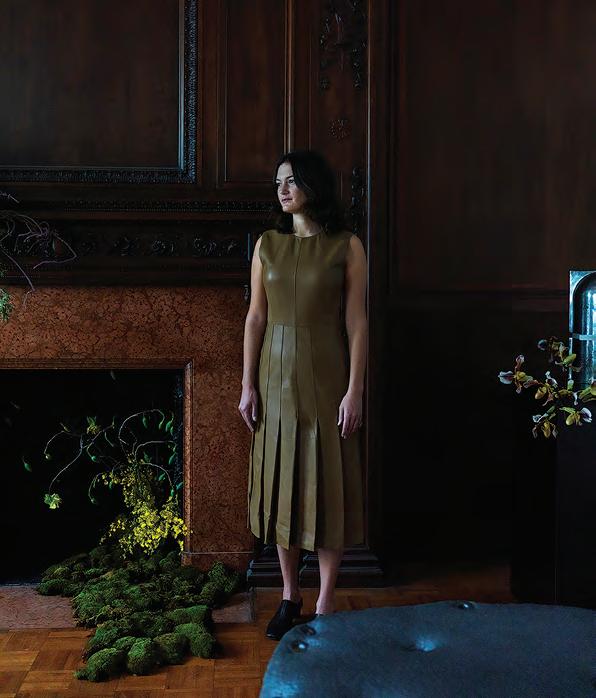
Emma Scully has come home—sort of. The 33-year-old grew up on East 79th Street, and in May of 2021 she opened her eponymous gallery in a 19th-century town house across the street from where she was raised . She walked past the building—which back then housed Rosenfeld Gallery, a secondary market dealer selling contemporary and modern art—nearly every day of her youth before decamping to Princeton for undergrad and Bard for her master’s. Eventually, Scully returned to New York before leaving once again, this time to Los Angeles to work for designer Rose Tarlow. “I feel like the world brought me back here,” she says.
As a design dealer, Scully aims to disrupt the space held by the long-running mainstays that include Friedman Benda, Carpenters Workshop Gallery, and R & Company. Cultivating new artists, Scully’s curatorial approach fuses the academic with the aesthetic. It’s something that began in her youth: her parents’ passion to immerse themselves in all things cultural sparked Scully’s fascination with design. She interned at the American Wing and European Sculpture and Decorative Arts departments of the Metropolitan Museum of Art, Christie’s European Decorative Arts department, and the education department of the Brooklyn Museum, then worked for an antiques dealer, before going on to online platform 1stDibs. She sometimes staged exhibitions in Los Angeles with her own collection at the trendy Sunset Tower Hotel.
The idea of a gallery of her own was born during the pandemic while Scully was locked in her downtown Los Angeles loft. She loved the durability and look of cast iron, a challenging material that was an innovation when it first became popular in the 19th century. “When cast iron rusts, that rust doesn’t structurally corrode the materials,” Scully explains, pointing out that every New York subway manhole cover is made from cast iron. Scully selected a group of eight diverse artists and designers for her gallery’s
74 AVENUE MAGAZINE | SEPTEMBER—OCTOBER 2023 CHRIS MOTTALINI
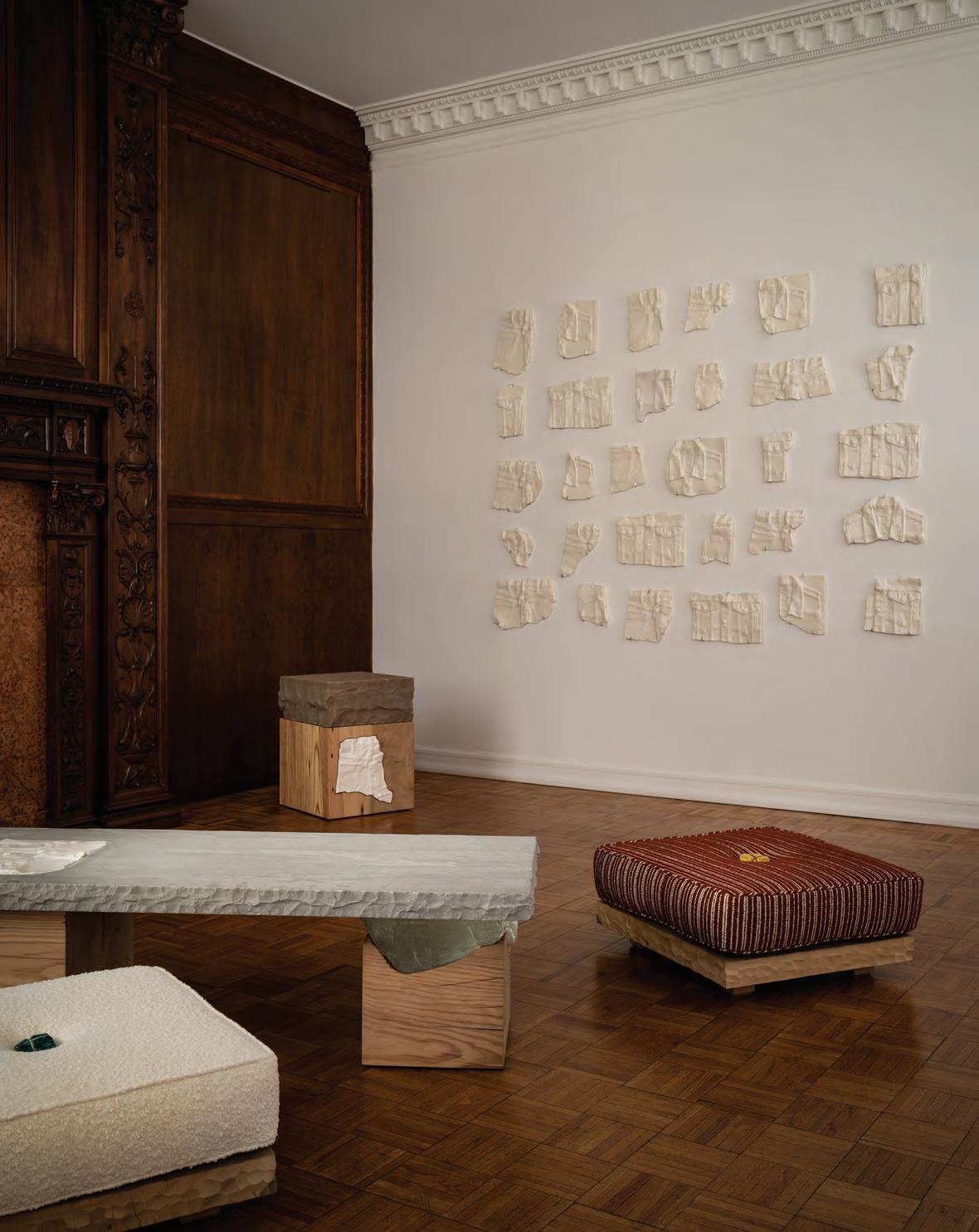
SEPTEMBER—OCTOBER 2023 | AVENUE MAGAZINE 75 RAFAEL PRIETO, “TOGETHER OVER TIME.” PHOTOGRAPHY BY JOE KRAMM. IMAGE COURTESY OF EMMA SCULLY GALLERY
PRIVACY POLICY Avant-garde designer Rafael Prieto staged his debut solo exhibition at Emma Scully Gallery this past spring.
inaugural show, all of whom made new work in cast iron. New York studio Chen Chen & Kai Williams imagined a hollow cylinder-shaped chair with a bronze vein running through it. “You should try sitting on it,” Scully suggests. “It’s super comfortable.” New Orleans-based designer Bradley L. Bowers conceived Cala, composed of three round vessels that look as if they’ve been placed atop one another and squished. “This can be outdoors for 200 years and never need any finish work,” Scully mentions. “Of course, it can’t be outdoors on white terraces, but grass would never be a problem.”
For her debut exhibition, the gallerist took on the duty of fabricating all the pieces, both a blessing and a curse. It took away the pressure from the artists, but, due to Covid, a lot of fabricators couldn’t handle new requests. Scully found a way. “Making things is not easy,” she notes. Scully called and
dealt with fabricators for three months before finding one that could produce the pieces in a timely manner. Then came the challenge of space. Although she lived in Los Angeles, Scully envisioned New York as the right place for the exhibition. “At the end of the day, I felt like if I launched in LA, and it didn’t go well, I would always wonder, ‘What if?’” she ponders. By kismet, Rosenfeld—the building across the street from the apartment where her parents still lived at the time—was available to rent. Scully signed a threemonth lease and now she’s in the middle of a threeyear rental agreement.
The second exhibition at Emma Scully Gallery was by the ultra-cool Georgian duo Rooms Studio, founded by Nata Janberidze and Keti Toloraia. The pieces included an oversized chess table made from reclaimed oak. “They sent me a lot of imagery, like traditional Georgian
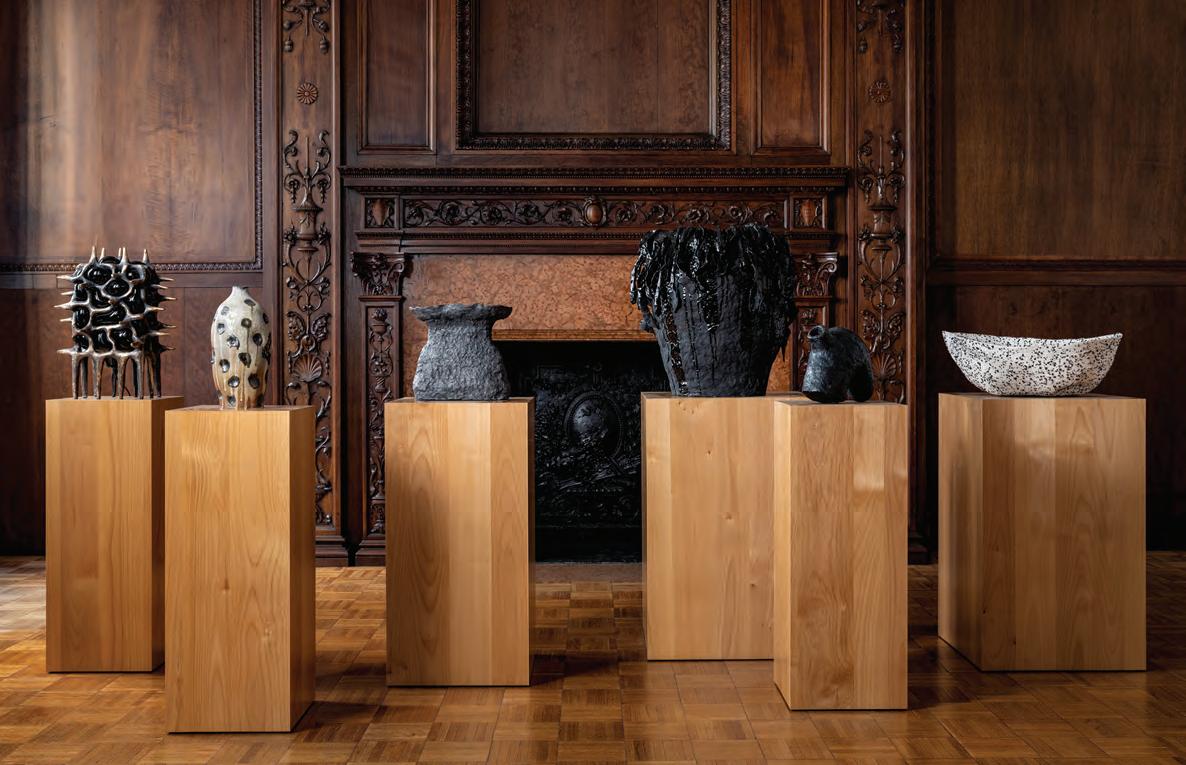 POWER OF NATURE Organic works from the group show “Green World” earlier this year at Emma Scully Gallery.
POWER OF NATURE Organic works from the group show “Green World” earlier this year at Emma Scully Gallery.
“AT THE END OF THE DAY, IF I LAUNCHED IN LA, AND IT DIDN’T GO WELL, I WOULD ALWAYS WONDER, ‘WHAT IF?’”
76 AVENUE MAGAZINE | SEPTEMBER—OCTOBER 2023 PHOTOGRAPHY
—EMMA S CULLY
BY JOE KRAMM. IMAGES COURTESY OF EMMA SCULLY GALLERY
GALLERY CAN SUPPORT A FUTURE IN A
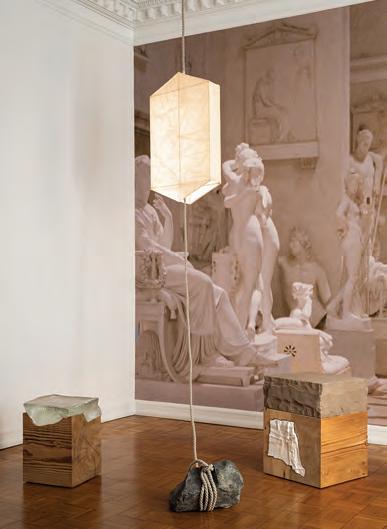
A REAL COLLABORATION HAVING A RELATIONSHIP WITH ANY LIVING ARTIST.”
—EMMA S CULLY
design, and also Soviet-era design,” says Scully. “There are so many considerations when I do a show. I feel like the gallery can support a future in a thoughtful way. It’s a real collaboration having a relationship with any living artist.”
One such collaboration was with Jane Atfield, a British designer who, depending on who you talk to, may have designed the first chair made with postconsumer recycled plastic in 1992— the RCP2. It was shown at her graduation from the Royal College of Art in London and has been exhibited at the Victoria and Albert Museum, London’s Design Museum, and the U.K. Crafts Council. The pattern on the colorful, speckled chairs resembles a smudged terrazzo or something an Impressionist might have painted. Scully commissioned a reedition of Atfield’s RCP2 plastic chair, reproducing a limited edition of 30 in several colorways. “This was the 30th anniversary
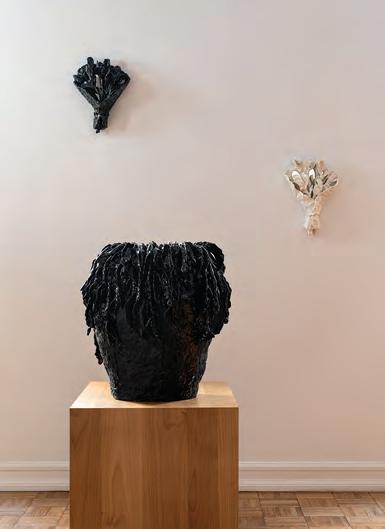

of this chair,” reports Scully, who gave the designer her due after three decades. “Outside of people who are real design nerds—like myself—no one knows who she was or that she’d done it.”
Coming up this fall is a solo show by ceramicist Simone Bodmer-Turner, a favorite of the fashion set. The pair are working together to bring BodmerTurner’s career to a new level, beyond the smaller tabletop pieces that you can find in many style-savvy women’s living rooms or even on their ears (she recently did a collaboration with jewelry brand Agmes). “Simone wanted some freedom and flexibility to experiment and be really creative and push the work,” Scully explains. The gallerist’s intelligent and unique way of staging design shows is now introducing the idea of collecting to new audiences, helping to elevate purchasing a chair or a chess table towards the status of collecting fine art.
SEPTEMBER—OCTOBER 2023 | AVENUE MAGAZINE 77
PHOTOGRAPHY BY JOE KRAMM AND RICHARD ROUND-TURNER. IMAGES COURTESY OF EMMA SCULLY GALLERY
“THE
THOUGHTFUL WAY. IT’S
SMELL THE FLOWERS Simone Bodmer-Turner’s Tulip Lamp III that Emma Scully Gallery recently presented at The North American Pavilion this summer at Frieze London.
FRESH FINDS Emma Scully’s progressive programming is cultivating a new type of design experience that fuses the academic with the aesthetic and compelling young creatives like Rafael Prieto.
JO UR NE YS

78 AVENUE MAGAZINE | SEPTEMBER—OCTOBER 2023
PADDLING OUT IN PARADISE
Surf enthusiast JOSHUA DAVID STEIN treks to Indonesia for a week of hanging ten at Bali’s Uluwatu Surf Villas
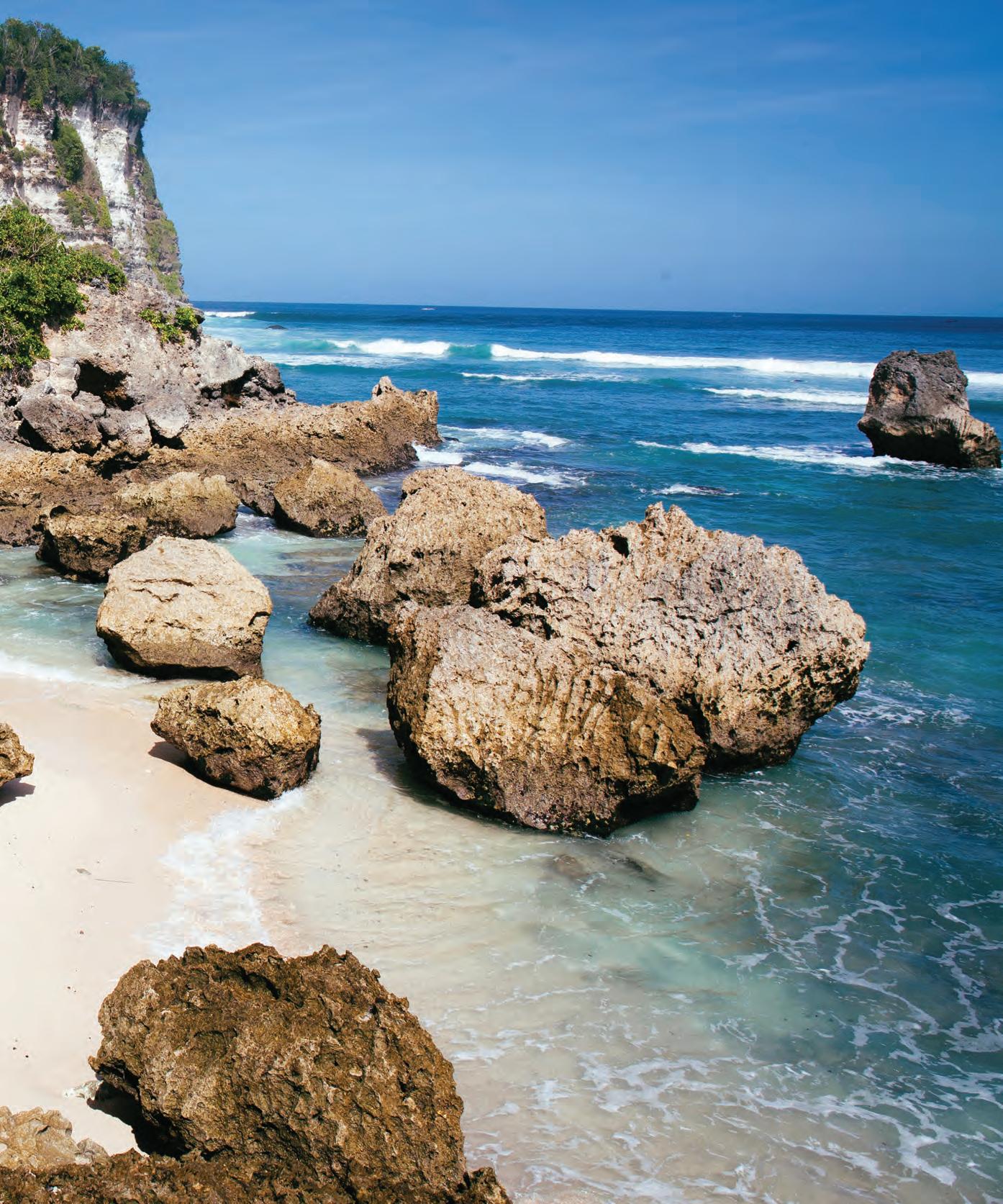
SEPTEMBER—OCTOBER 2023 | AVENUE MAGAZINE 79 TOMMY SCHULTZ
The sun has not yet risen in Uluwatu. The grassy cliffs on the very southern tip of Bali are covered in darkness and dew. The Indian Ocean, hundreds of feet below, is slate gray and the sound of the waves crashing against the rocks floats up only as a whisper. Still, in the loam, I can make out the faint silhouettes of a dozen or so small black figures amongst the break of a long wave. This is one of the best surf spots in the world, and surfing is done best in the ins and outs of days.
Bali, an island in the vast Indonesian archipelago, is a haven for spiritual questers, beauty chasers, and towheaded bohemian jet-setters. (Since 2022, it has also become a refuge for Russians, who have set up their own street signs and Russian-speaking enclaves—but that is another story.) Even in the 1970s, as Westerners flocked to other spots like Ubud and Canggu, the breathtaking stretch of Uluwatu’s cliffs and jungle remained largely untouched by visiting hands. Certainly, the waves were untamed. It was only in 1972, after Australian documentarian Alby Falzon brought two surfers—a young American named Rusty Miller and 15-year-old Australian phenom Stephen Cooney—to first glide across the waves at Uluwatu on their longboards, that the village developed its reputation as a surfer’s paradise. Even then, only the most intrepid surfers found themselves in Uluwatu.
I am not an intrepid surfer. I am an intermittent one. I am what surfers like Rusty Miller and Stephen Cooney would call a “kook,” slang for a beginner. Kooks, in general, have a bad reputation for poor wave etiquette, a general lack of control, and, though it’s not a technical term, chronic lameness. In defense of kooks everywhere, I’ll only say that everyone, from Kelly Slater to Laird Hamilton, was once a kook. The only problem with being a kook is if you remain one, and I’ve tried not to. I surf as often as I can at my local beach, the gritty Rockaways in Brooklyn. Though only a few miles from my apartment, to get there is still an hour-long odyssey involving a bike, a car, and a train. In Bali, the commute from my villa in Uluwatu is just five minutes down a very steep set of stairs. There is no excuse not to, except that the villa is, well, spectacular and my bed is nearly as vast as the ocean and a lot flatter. And I’m on vacation and it’s 6 A.M. and maybe I should just surf tomorrow.
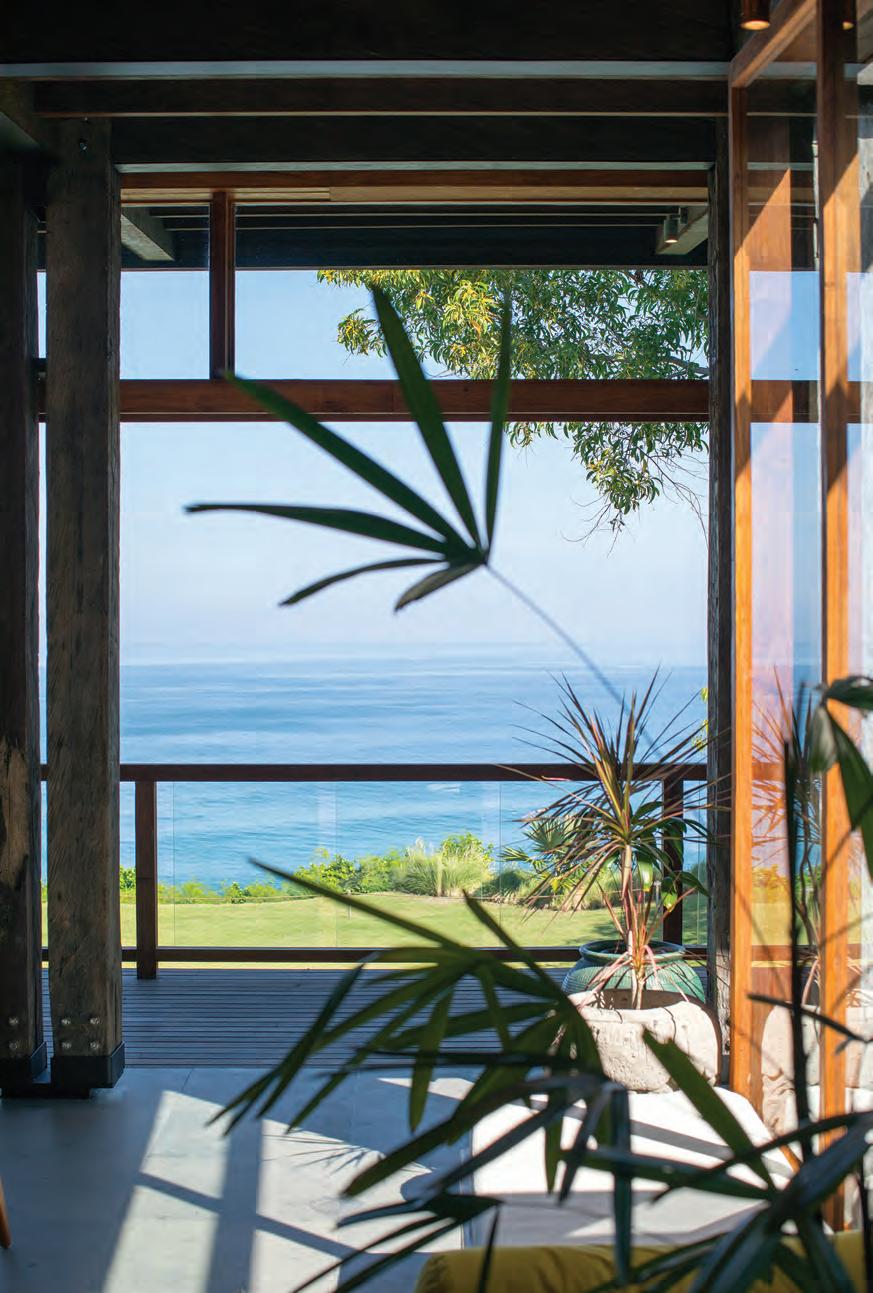
80 AVENUE MAGAZINE | SEPTEMBER—OCTOBER 2023 JOURNEYS
MYSTIC MORNING
A glimpse of the Indian Ocean at Uluwatu.
NATHAN LAWRENCE
Tim Russo, the founder of Uluwatu Surf Villas, is a tall former music promoter from Maryland. Like everyone else in Bali, he’s ruggedly handsome and deeply tan with a rakish smile. (Beauty seems to be a visa requirement.) When Russo happened on the property in 2002, the collection of rundown villas spread over the 7.5-acre property was owned by a group of South African friends. Over the next six years, Russo convinced each one to sell their individual villas then helped to construct 10 luxurious casitas, many using reclaimed teak from former Dutch colonial buildings and traditional alang-alang thatched roofs. In 2020, shortly before the pandemic almost hermetically sealed off the island, Uluwatu unveiled its latest development: six modern tropical villas atop a cliff, ranging from three to five bedrooms. Each had been conceived of by Russo, a German architect named Alexis Dornier, and Abbie Labrum, an English designer. Each incorporates Western and Balinese elements, such as a Balinese understanding of the permeable relationship between inner and outer space. In one villa, mine, Cliff Front 6,
a towering pandan pudak grows from the ground floor up to the second while the wall-less living room is open on one side, giving a view of a fullsize swimming pool, a reach of verdant lawn, and then nothing but the ocean far below.
Fifty years ago, Uluwatu was mostly uninhabited by man. (The terrain makes rice growing, Bali’s primary rural industry, impossible.) But, if you braved the flora and fauna, you would be rewarded with powerful waves that roll easily along, breaking with the same even consistency as tearing open a string-sealed bag. Today, Uluwatu is a small, sweet town (with a population of just 7,000) and these surf villas cater to both pro surfers and the sort of fantastically wealthy, still able-bodied captains of industry who like to surf. (Many oligarchs like to kite surf, but relatively few of them surf-surf because it’s hard.) Russo’s idea, and a good one it turns out, was to transform the villas from a relatively ascetic outpost for hardcore surfers into a place to bring one’s entire family, surfers, and non-surfers alike. For instance, in 2014, he built the Morning Light Yoga
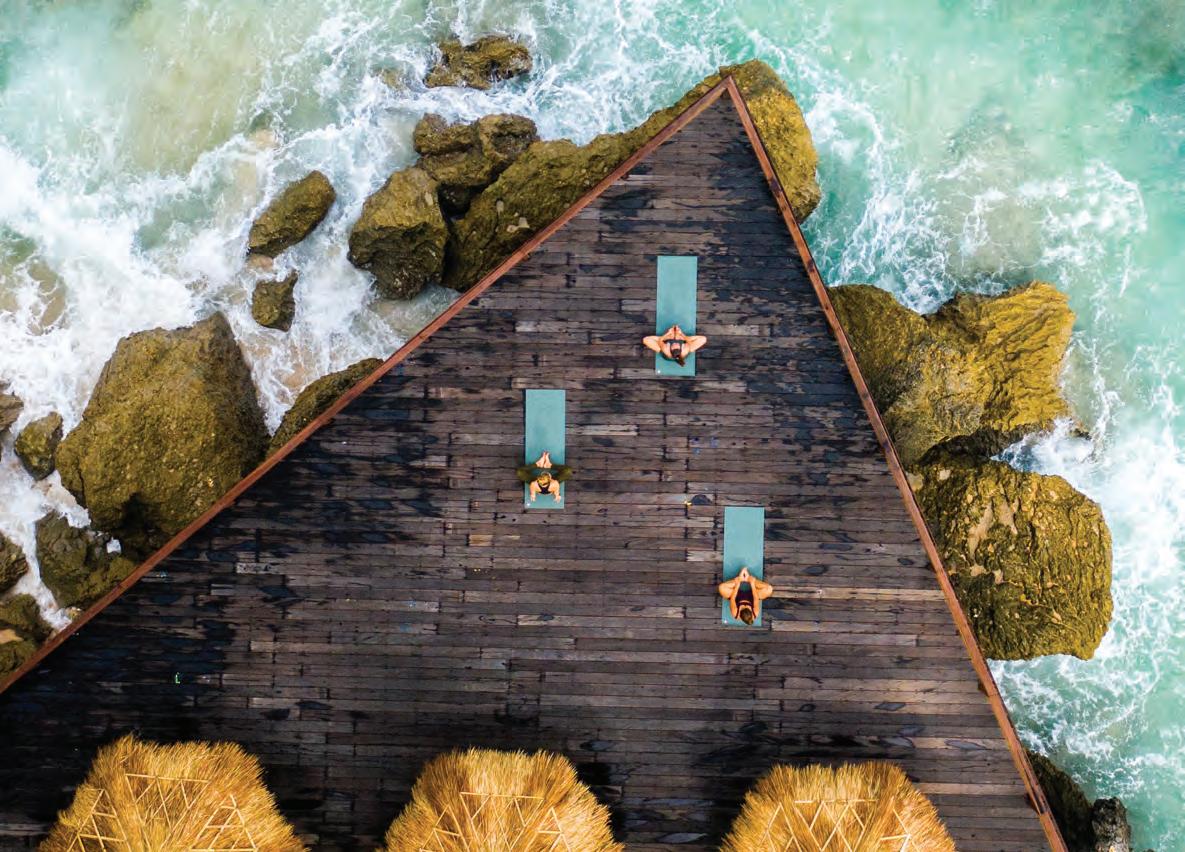 STRIKE A POSE The daily yoga class on a deck perched above Indonesia’s Bukit Peninsula.
STRIKE A POSE The daily yoga class on a deck perched above Indonesia’s Bukit Peninsula.
SEPTEMBER—OCTOBER 2023 | AVENUE MAGAZINE 81 NATHAN LAWRENCE
BALI, AN ISLAND IN THE VAST INDONESIAN ARCHIPELAGO, IS A HAVEN FOR SPIRITUAL QUESTERS, BEAUTY CHASERS, AND TOWHEADED BOHEMIAN JET-SETTERS.
THESE SURF VILLAS CATER TO BOTH PRO SURFERS AND THE SORT OF F ANTASTICALLY WEALTHY, STILL ABLE-BODIED CAPTAINS OF INDUSTRY WHO LIKE TO SURF.
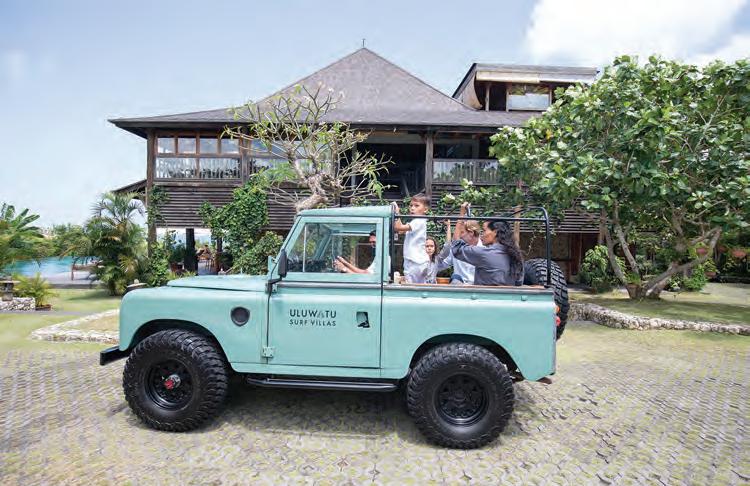
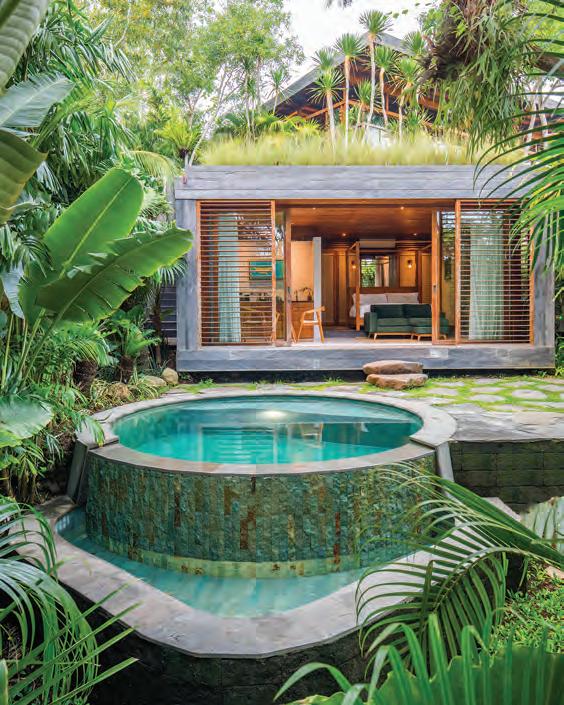
shala, an outdoor pavilion made from reclaimed teakwood, which offers twice daily classes. Just last year he opened a skate park in the jungle. (Picture the coolest version of a skate park in a jungle, filled with foreign and Balinese kids absolutely shredding, and then multiply that by 10 and you have a good idea of what it’s like.) There’s always the communal pool, where the view includes not just the shimmering ocean but the most lithe and lovely long-limbed nymphs and well-defined Adonises this side of the Wallace Line. That activity, however, bears the risk of rendering one exceedingly aware of one’s own middle-aged and somewhat dissolute body; that is to say, of the sense that time is passing and one’s nose and ears (and the hairs therein) are only growing and, as seen through the eyes of these Bali-based dreamers, one is at the denouement of one’s life story which, seeing that it does not include chasing epic waves around the world or moving to Bali, is exceedingly conventional and lame.
But I can feel the ravages of time anywhere. I had come to Bali to surf. So, by and large, I eschewed the calm beauty of the pool for the more awesome beauty of the ocean. What makes surf villas surf villas aren’t so much a proximity to waves as all the support that they can provide for a surfer. At Uluwatu, this means a board room—that is, a room with surfboards in it, not a conference room with crummy pastries and a VoIP phone—populated with boards shaped by some of the world’s greatest shapers. Another is the stairway (not made from reclaimed teak, thankfully!) down a vertiginous cliff straight to where you paddle out. The Balinese are terrific, nimble, and skilled builders, Russo tells me, and they built this steep stairwell clinging to the limestone cliffs in only two weeks. But it has saved hours and hours of time for guests. (And only guests are allowed to use it.) Normally, to get to the best (and most crowded) wave—called Racetracks, a powerful left-hand reef break—one must walk to the far side of town, past an almost medieval seeming warren of shops and stores, and paddle out from the mouth of a cave, where the ocean doubles up on itself, brave an often rollicking and rough white water, then paddle 20 minutes down the coast.
That’s not to say paddling out from the villas is a piece of cake either. Thankfully, I have a guide, and he may even be my friend now. His name is Curtis Lowe. He’s a tall Floridian lad and, yes, he’s ruggedly handsome, deeply tan, and has a rakish smile. Technically, I think, Lowe is the marketing director for Uluwatu Surf Villas but, really, he’s
82 AVENUE MAGAZINE | SEPTEMBER—OCTOBER 2023
JOURNEYS
NATHAN LAWRENCE
BALI HAI It’s your choice to be mobile or mellow at Uluwatu Surf Villas.
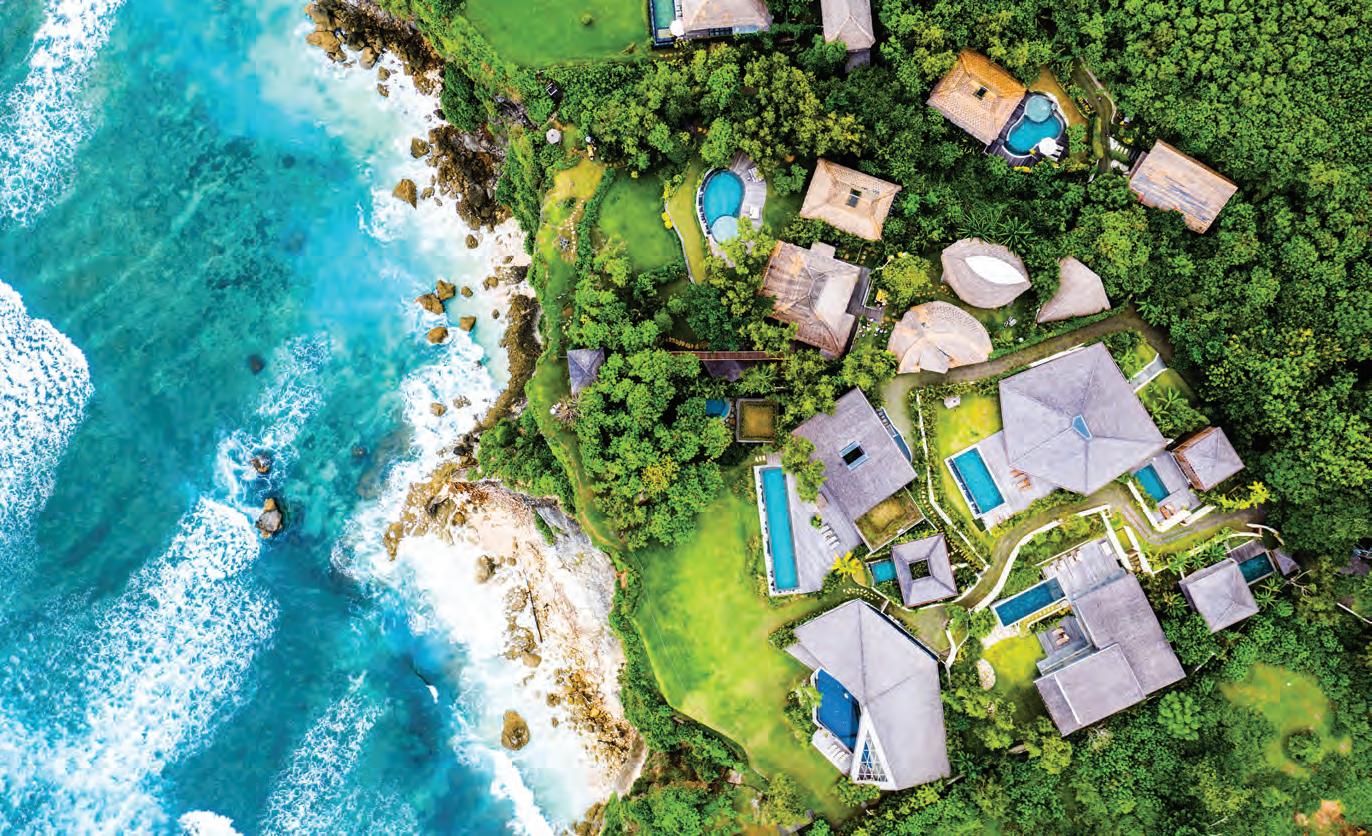
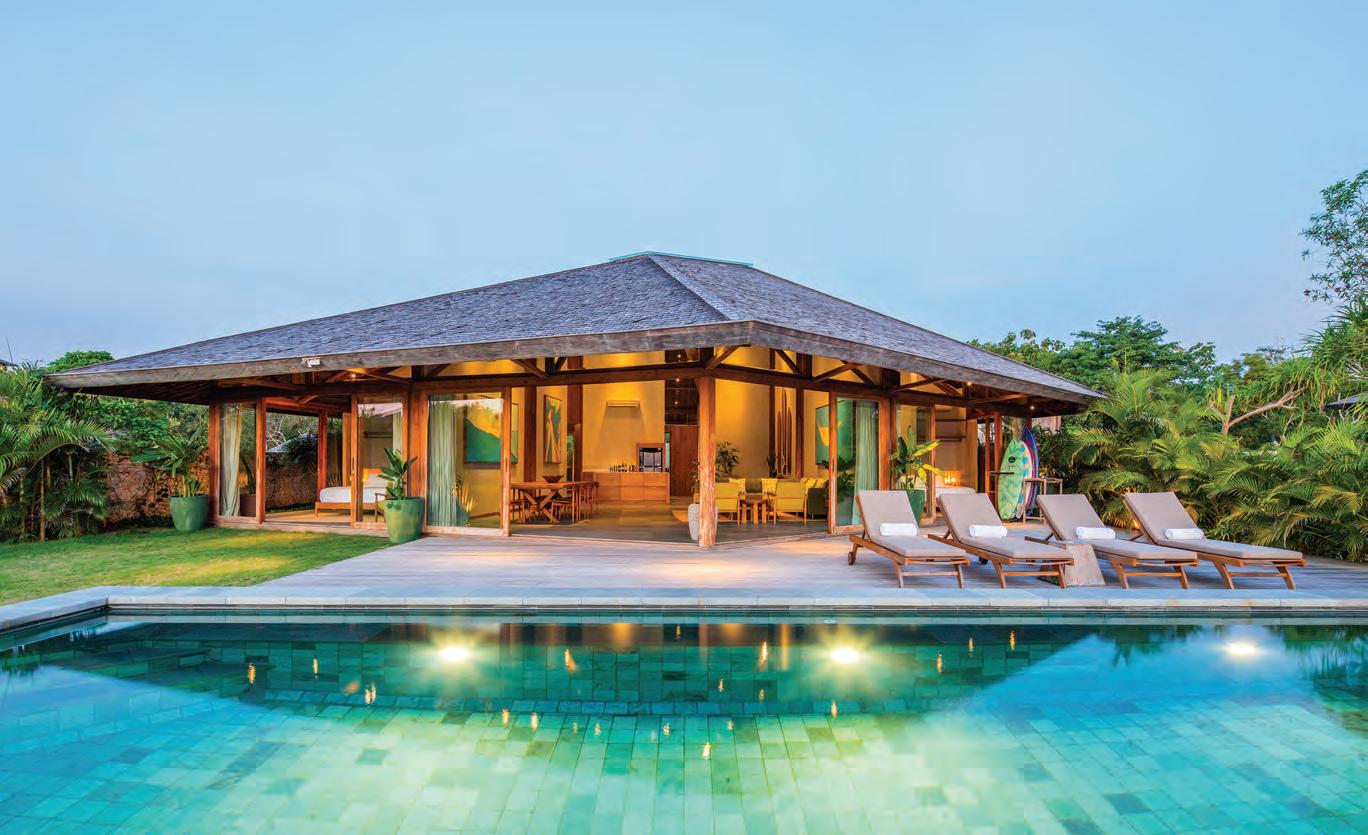
SEPTEMBER—OCTOBER 2023 | AVENUE MAGAZINE 83 NATHAN
LAWRENCE
PAVILLIONS IN PARADISE A pool sets a serene scene in Uluwatu.
COWABUNGA COMPOUND
A sky-high view of Uluwatu Surf Villas on the southern tip of Bali.
the genius loci. He helps with the film programs at the villa’s restaurant Mana (a recent entry was a documentary about a trio of surfers in Siberia), concerts on the lawns, and, occasionally, squires journalist kooks into the ocean.
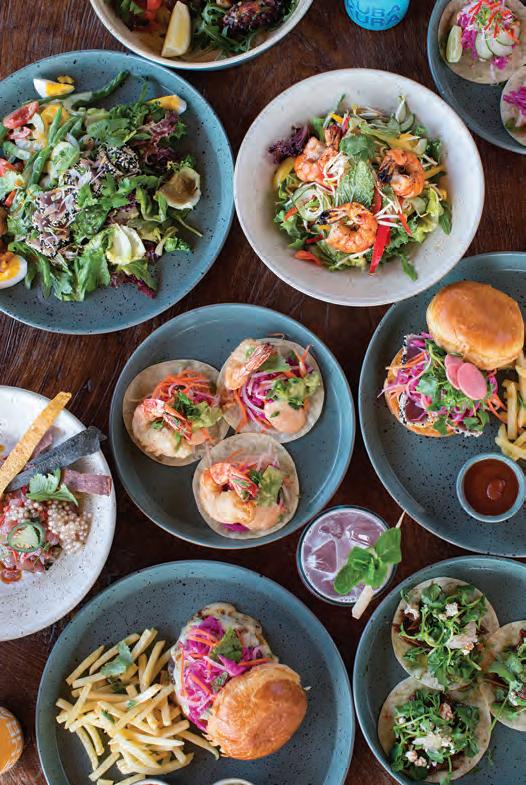
Just as I’m standing on the cliff top, contemplating whether to go back to bed or maybe grab an early breakfast at Mana (they have the best espresso in Bali and probably the only decaf) or maybe whether I should make an early morning yoga class or book a massage, Lowe approaches me, board in hand. “You ready to get after it?” he asks. And, as I contemplate the waves and the ocean and the fact that my bed will still be there when I come back to shore, I nod to say that I am, and we head down the stairs and out toward the sea.
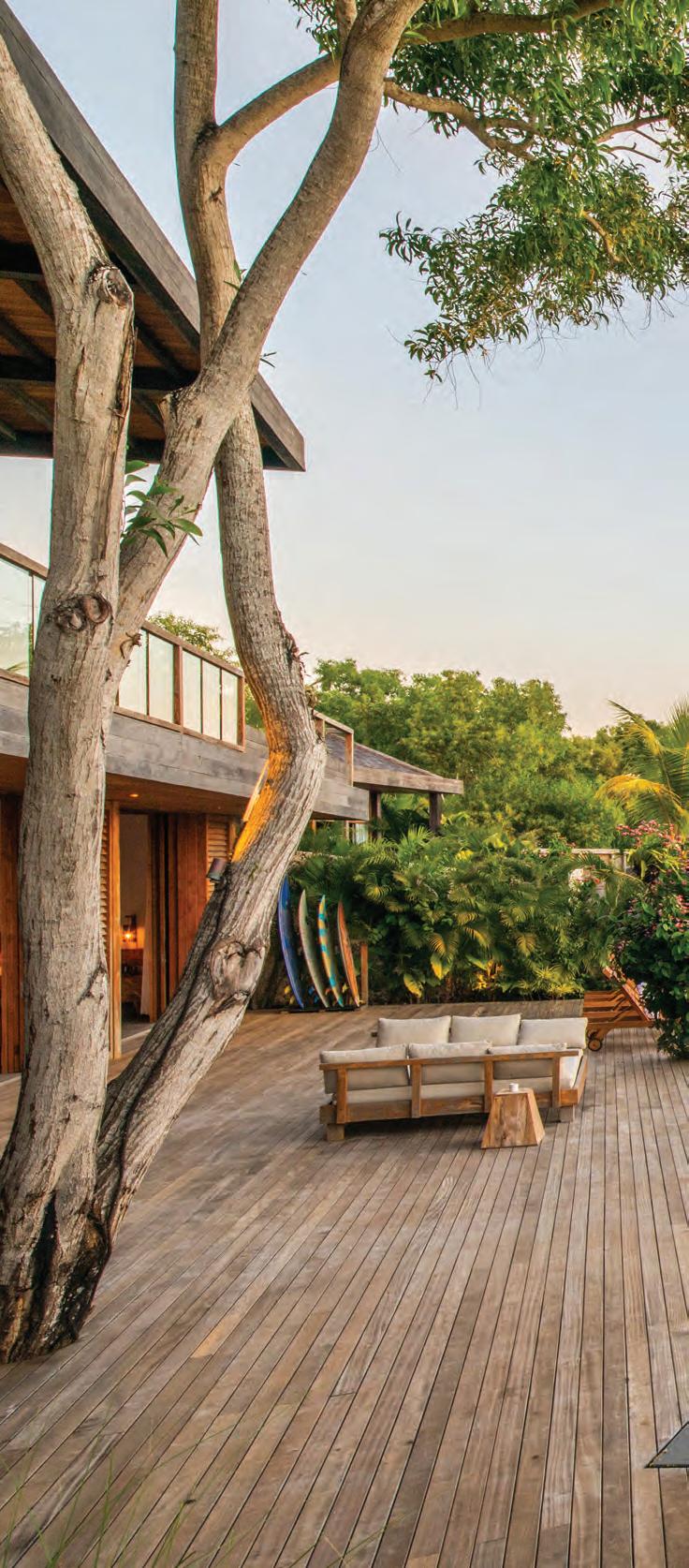
84 AVENUE MAGAZINE | SEPTEMBER—OCTOBER 2023
JOURNEYS
TIME OUT Balinese delicacies and tropical swims at Uluwatu.
NATHAN LAWRENCE
TO GET TO THE BEST (AND MOST CROWDED) WAVE—CALLED RACETRACKS, A POWERFUL LEFT-HAND REEF BREAK—ONE MUST WALK TO THE F AR SIDE OF TOWN, PAST AN ALMOST MEDIEVAL SEEMING WARREN OF SHOPS AND STORES, AND PADDLE OUT FROM THE MOUTH OF A CAVE, WHERE THE OCEAN DOUBLES UP ON ITSELF, BRAVE AN OFTEN ROLLICKING AND ROUGH WHITE WATER, THEN PADDLE 20 MINUTES DOWN THE COAST.
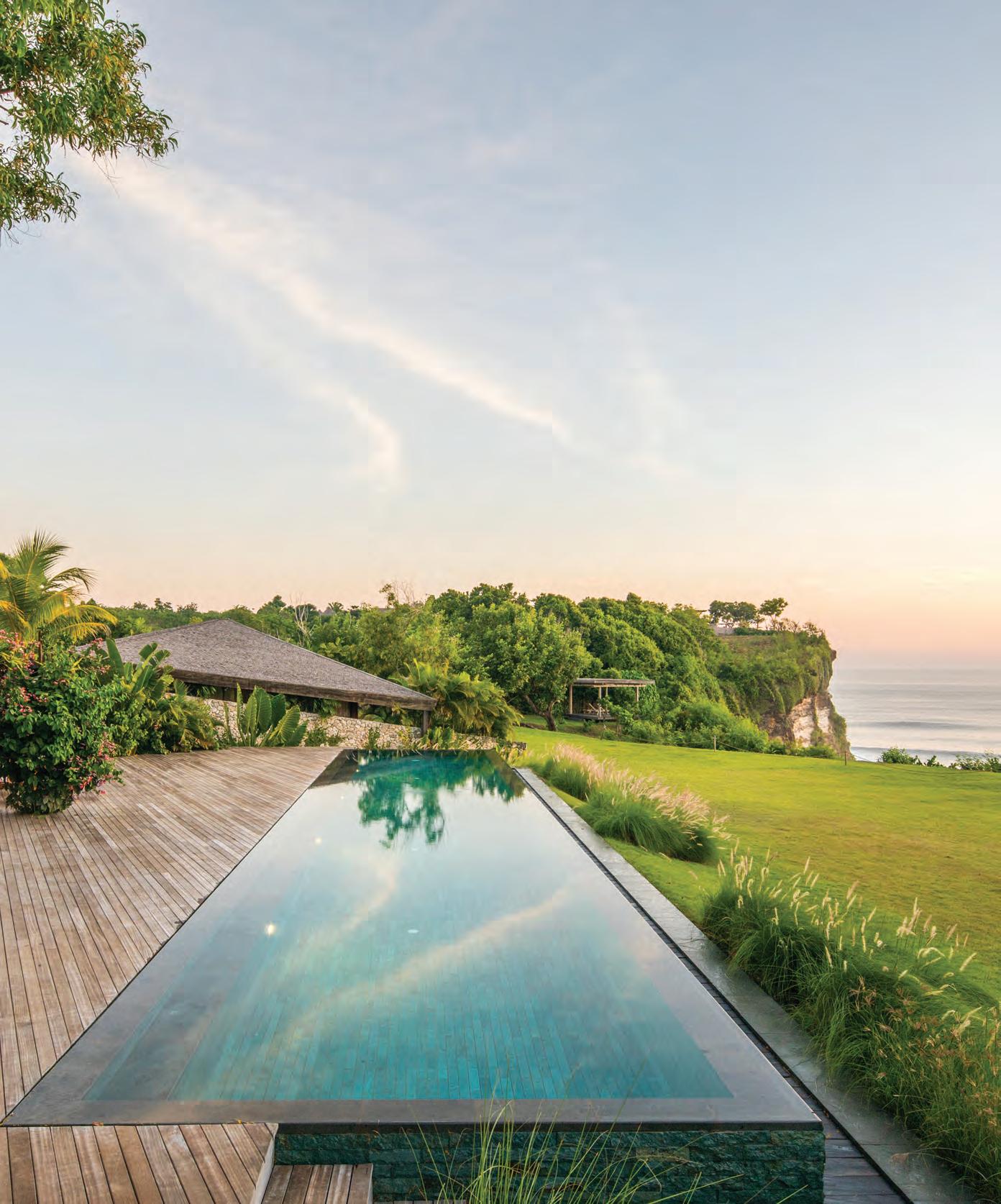
SEPTEMBER—OCTOBER 2023 | AVENUE MAGAZINE 85
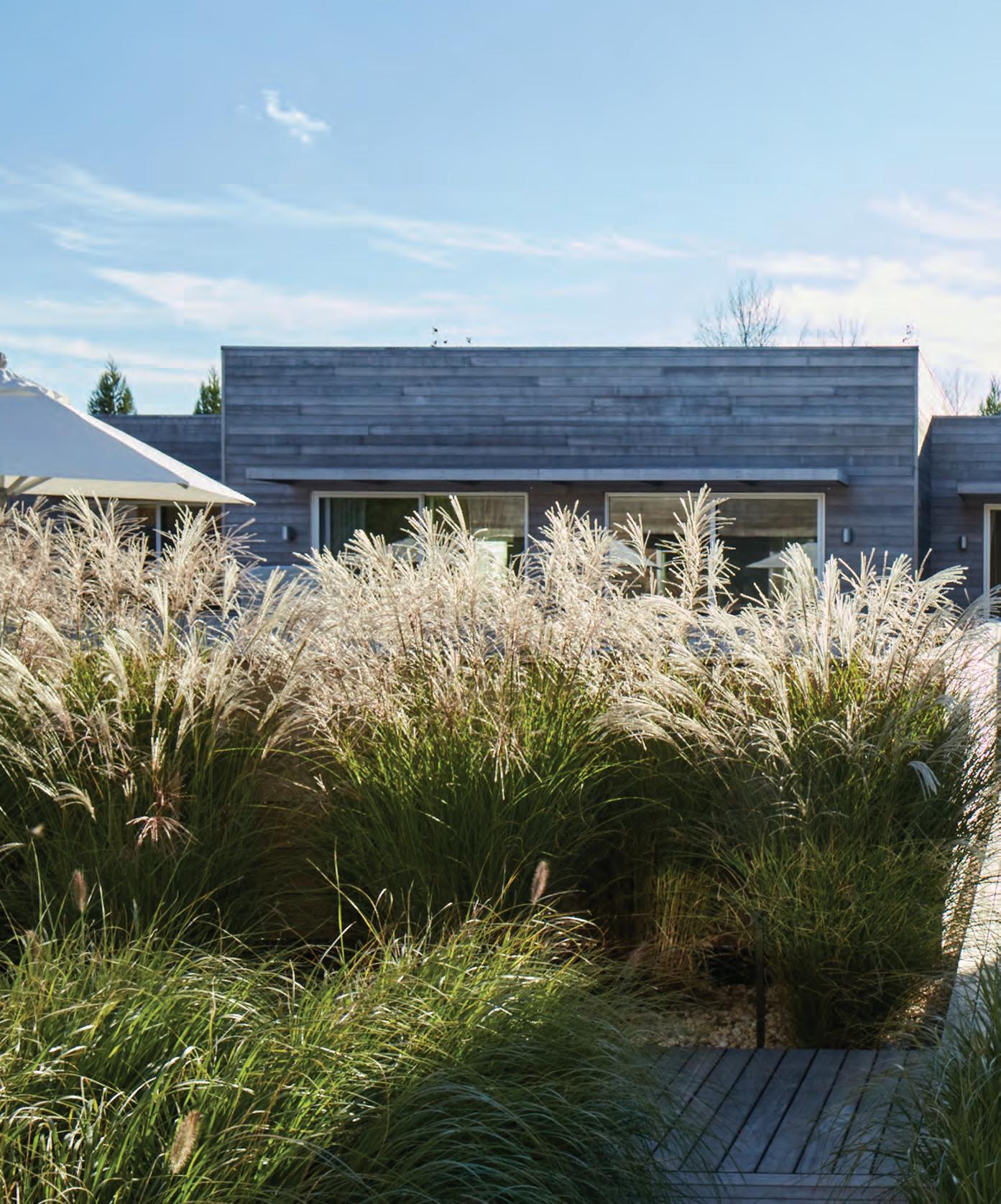
86 AVENUE MAGAZINE | SEPTEMBER—OCTOBER 2023 JOURNEYS
HIDDEN ESCAPE
The 13 suites are tucked behind lush grass.
HOLISTIC HEAVEN
If the luxury wellness retreat Shou Sugi Ban House is a cult, Peter Davis vows to become a devout disciple

SEPTEMBER—OCTOBER 2023 | AVENUE MAGAZINE 87
Growing up visiting Southampton year-round, I was pretty sure I knew every corner out east. I’m also a bit of a Hamptons snob, preferring oldschool spots like Sip’n Soda and Shippy’s over newer establishments. But, one late summer weekend, I was pleasantly surprised, if not astounded, to discover what could be the Hamptons’ most hidden gem: the Shou Sugi Ban House, a spa and inn in Water Mill.
My fiancé, Ted, and I zipped down Montauk Highway, past the über-modern Parrish Art Museum, missing the discreet driveway a few times. “I thought you knew this area,” Ted groaned as I fumbled with the GPS. It’s easy to pass by this well-camouflaged wellness paradise. Shou Sugi Ban House is guarded behind a long wooden gate, only opened for registered guests. Don’t expect to just drop in without a reservation.
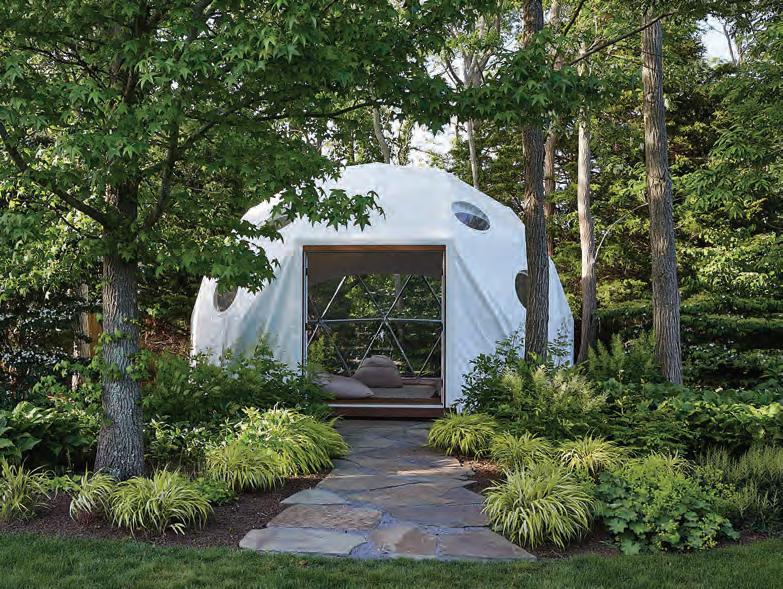
When we finally pulled up to ring the buzzer, it was like entering the Zen estate of a wellguarded movie star—which is the idea, as the spa is a favorite escape for the rich and/or famous. Enveloped by over 250 deciduous and evergreen trees, and 20,000 grasses of five different varieties, a large stone Buddha statue, hands clasped in prayer, greeted us as we arrived to the “Healing Arts Barn.” Nam-myoho-renge-kyo rang through my ears as an attendant in flowing, gauzy, all-white garb greeted us with her own prayer-handed bow and serene smile. It all felt a little cultish. I almost expected Masha, Nicole Kidman’s mushroom-taking wellness warrior from Nine Perfect Strangers, to pop out from behind a bush. As we walked to the long wooden barn with a treatment spa—a high-tech hydrotherapy circuit, thermal suite, and solarium—I decided this is the one cult worth considering (at least for the weekend).
Named for the ancient Japanese weathering technique of charring a wood surface, scraping
88 AVENUE MAGAZINE | SEPTEMBER—OCTOBER 2023 JOURNEYS
MEDITATIVE MOOD
A geodesic dome tucked away at Shou Sugi Ban House.
IMAGES COURTESY OF FREDRIKA STJÄRNE FOR SHOU SUGI BAN HOUSE
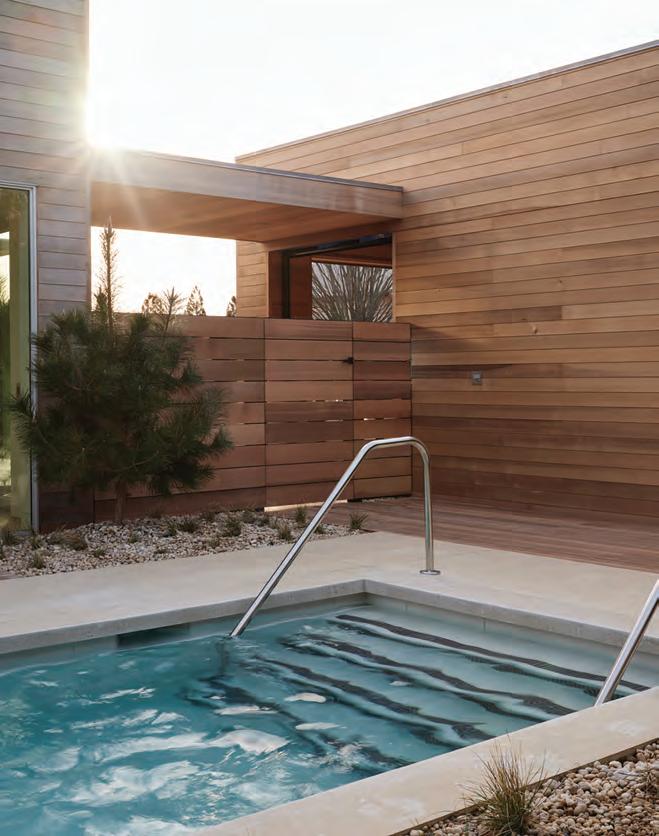

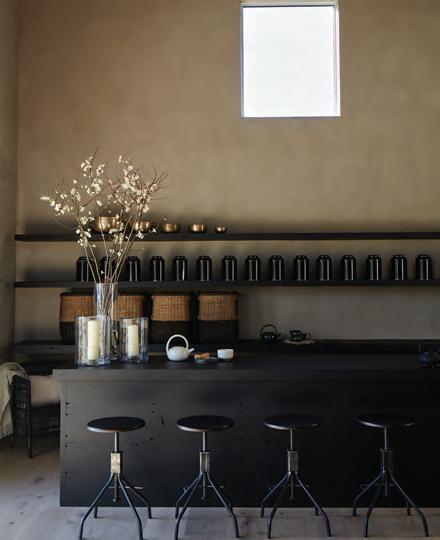
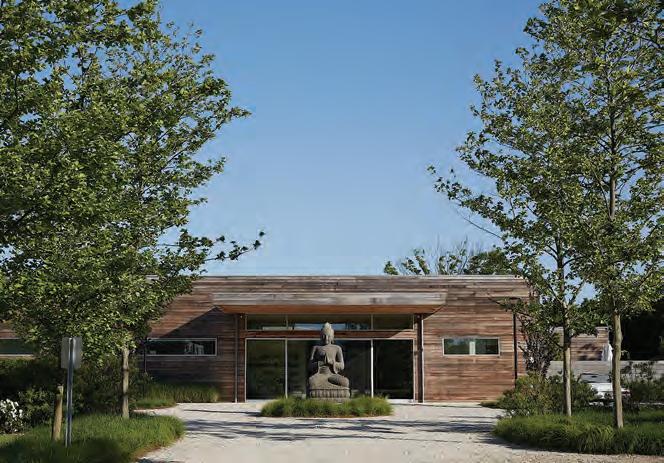 HYDROTHERAPEUTIC HAMPTONS A healing pool at the spa.
BATHING BEAUTY
A Japanese hinoki ofuro tub is in every suite.
TEA TIME Shou Sugi Ban House’s serene scene.
WATER MILL AWAKENING
HYDROTHERAPEUTIC HAMPTONS A healing pool at the spa.
BATHING BEAUTY
A Japanese hinoki ofuro tub is in every suite.
TEA TIME Shou Sugi Ban House’s serene scene.
WATER MILL AWAKENING
SEPTEMBER—OCTOBER 2023 | AVENUE MAGAZINE 89 IMAGES COURTESY OF FREDRIKA STJÄRNE FOR SHOU SUGI BAN HOUSE
A stone Buddha greets guests at the end of Shou Sugi Ban House’s hidden driveway in the Hamptons.
it down, and then oiling it to make it more resistant to fire and decay, Shou Sugi Ban House is a minimalist’s dream. Designed by Debbie Kropf of DSK Architects, it takes inspiration from Japanese culture and wabi-sabi principles. It’s a worldview based on the acceptance of transience and imperfection, but there is nothing even slightly imperfect here.
As we walked around the lush property, it was easy to forget that we were even in the Hamptons— or America for that matter. The guest suites have floor-to-ceiling windows looking out onto a saltwater pool. As we unpacked, mellow, hypnotic music floated through the room, and I was officially under the Shou Sugi Ban spell. The Kobe-style bed, made by local design firm All Things Dirt, promised plenty of deep, restorative sleep. The color scheme, a stone and biscuit-hued palette, soothes the eyes, and no art decorates the walls. A gas fireplace sits adjacent to a tokonoma, a raised alcove which is a traditional fixture in Japanese houses. The bathroom is almost as big as the whole suite.
I slipped into the hinoki ofuro soaking tub (another nod to Japan), which replicates a hot spring experience, and gazed out at my private garden patio, covered in fauna, where one can have a private massage or just meditate. After a bath, Ted and I donned Sasawashi slippers (which blend traditional Japanese paper and leaves from the kuma-zasa plant) and headed to the Healing Arts Barn. Wellness waits for no one.
We hit the thermal suite, which had instructions on the wall for a circuit: an infrared sauna (to detoxify the body); a dry sauna; a chromotherapy shower with colored LED lights and a cascading waterfall overhead (for stress relief); a eucalyptus steam room; then three Watsu hydrotherapy saltwater plunge pools outside (hot, warm, and ice cold), which boost circulation and dilate the vascular system. The whole process takes just over an hour. Afterwards, we strolled slowly over the pebble pathways back to our room, too chilled-out to even think about staying awake.
Shou Sugi Ban House’s philosophy is grounded
in nature, with a firm belief that food is medicine. We arrived for dinner, sitting at a wood table in a loft-like room. Black-and-white moving images of grass in the wind and rippling water were projected on a large white wall. In the nearby open demonstration kitchen, Chef Mads Refslund (a cofounder of Copenhagen’s two-time Michelin-star restaurant, Noma) was busy preparing our meal. Periodically throughout the evening he visited our table to explain each dish, all of which were plant-rich, locally sourced, and presented like pieces of art. Like everything at the resort, the low timber of his voice is weirdly hypnotic. I never imagined being transfixed by new potatoes with dill and pickled cherry leaves. Having already decided on a digital cleanse for the weekend, I didn’t snap pics of the tuna on a thin bed of seaweed with citrus and chili that resembled a Helen Frankenthaler painting. The main course of dry-aged ribeye with chimichurri came with a side of the sweetest corn I have ever bitten into, wrapped with koji and toasted kelp. For dessert, Chef Refslund brought out a fluffy
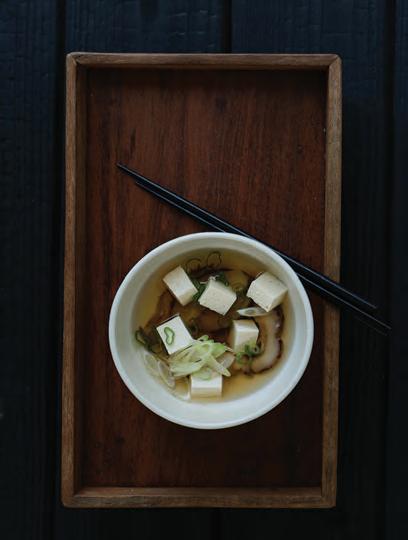
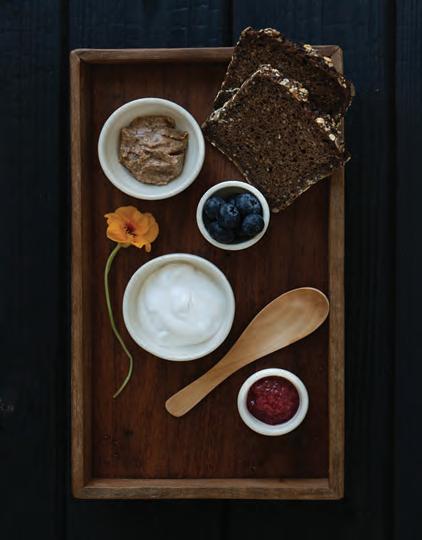
IT WAS LIKE ENTERING THE ZEN ESTATE OF A WELL-GUARDED MOVIE STAR—WHICH IS THE IDEA AS THE SPA IS A FAVORITE ESCAPE FOR THE RICH AND/OR FAMOUS.
JOURNEYS IMAGES COURTESY OF
FREDRIKA STJÄRNE FOR SHOU SUGI BAN HOUSE
90 AVENUE MAGAZINE | SEPTEMBER—OCTOBER 2023
MAD FOR MADS Chef Mads Refslund’s artful dishes.
chocolate mousse that felt like eating sweet brown clouds. As much as I craved the greasy burgers and sugary ice cream at Sip’n Soda, the cuisine here was hands down the best I’ve ever eaten out east—if not the world.
The next morning was all about movement. We walked to an open-air pavilion facing a ceremonial fire circle for a yoga class. There were only three other guests on the mats. A brass gong sat at the front of the long room. Our young instructor’s soothing voice led us through the poses. Afterwards, we headed next door for a breakfast of coconut yogurt (I am hooked on this stuff), fresh berries from the farm stand down the road, and house-made granola. If food is medicine, I felt like I was being cured, vowing to quit my Haribo gummy bear habit for good.
The resort also has a state-of-the-art fitness center, but I was way too relaxed from yoga and the subtle symphony of seagrass blowing in the wind to even entertain the idea of a treadmill or lifting weights. Instead, we lounged around the pool, letting the sea salt soak up the toxins from
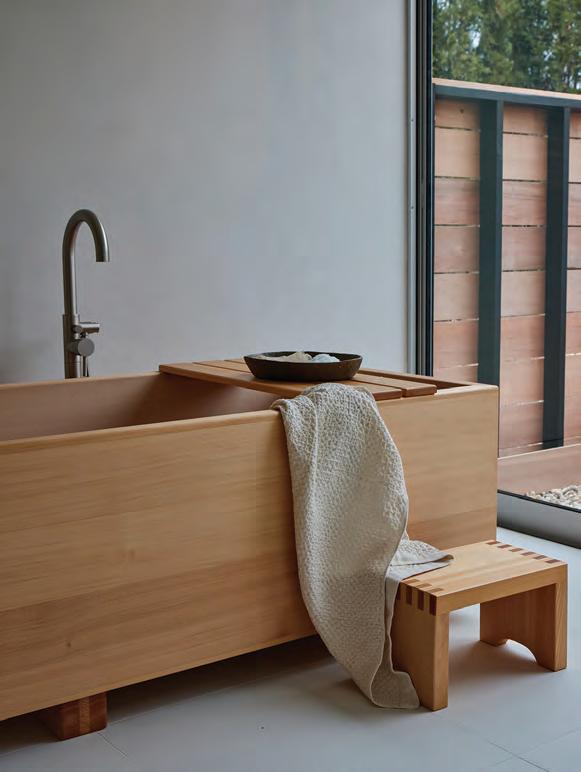
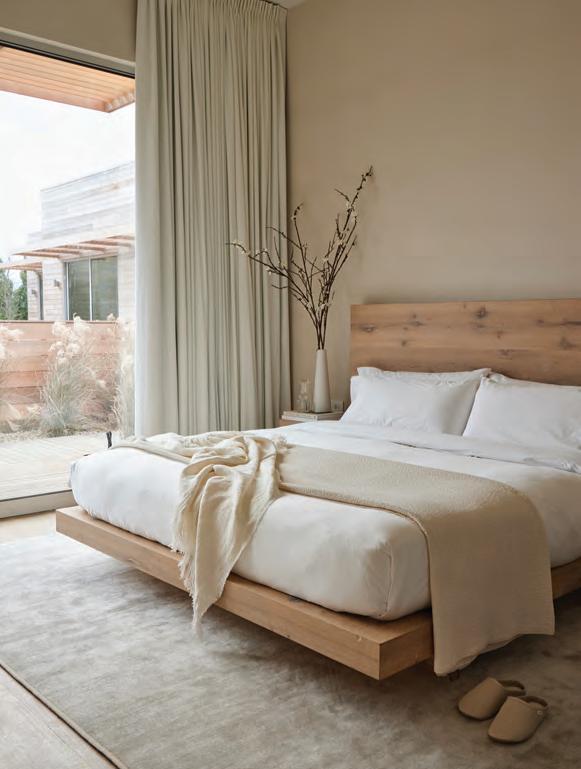
the weekend before, filled with fatty foods and cocktail parties.
The next day, Ted decided to try cupping. He returned to our suite with a back full of large red circles that resembled a fiery moon chart. “I am not sure what just happened,” he confessed as I broke my iPhone detox to photograph his back. “But I feel amazing.” The Healing Arts menu at Shou Sugi Ban House is extensive. There are crystal journeys (sacred crystals are chosen and placed on the body to open inner pathways), “Shamanic Healing” sessions, and craniosacral therapy, to name just a few. I am not one for body rubs or scrubs or mystical spa treatments (I once ended a fancy massage in Bali after five minutes because I felt too exposed) but I refused to depart this holistic heaven without experiencing something mind-blowingly transformational. So, I signed us up for a sound bath. Strapping on my Birkenstocks, a bathing suit, and T-shirt, we headed to the pavilion. Ted and I lay on yoga mats like small children while an instructor handed us black eye masks. The room became dark and
filled with a 360-degree concert of sound as our instructor weaved together a composition of tuning forks, gongs, and Himalayan and crystal bowls. “It’s ok if you fall asleep,” she said. Within minutes, the pings of a tuning fork were interrupted by Ted’s snoring. After an hour of absorbing the soundwaves, which we were told created a vibrational frequency that heals the body, my brain felt relaxed and recharged. This is all supposed to help clear blockages and restore inner balance. If that translates to feeling so Zen-full that it’s hard to imagine ever leaving my yoga mat, then it’s a major win.
We were so relaxed during our final meal that Ted and I barely spoke while eating perfectly grilled chicken with fresh lemon and thyme, with house-made ricotta and avocado on rye bread. I couldn’t stop thinking about the sound bath and the completely immersive and therapeutic experience of our stay. As we walked back to our suite, I told Ted that if Shou Sugi Ban House isa cult after all, I am more than happy to be a lifelong member.
SEPTEMBER—OCTOBER 2023 | AVENUE MAGAZINE 91
YOUR
OWN PRIVATE PARADISE
The suites are all designed in neutral, soothing tones. IMAGES COURTESY OF FREDRIKA STJÄRNE FOR SHOU SUGI BAN HOUSE
The jet set’s new favorite destination: Hotel La Palma in Capri.
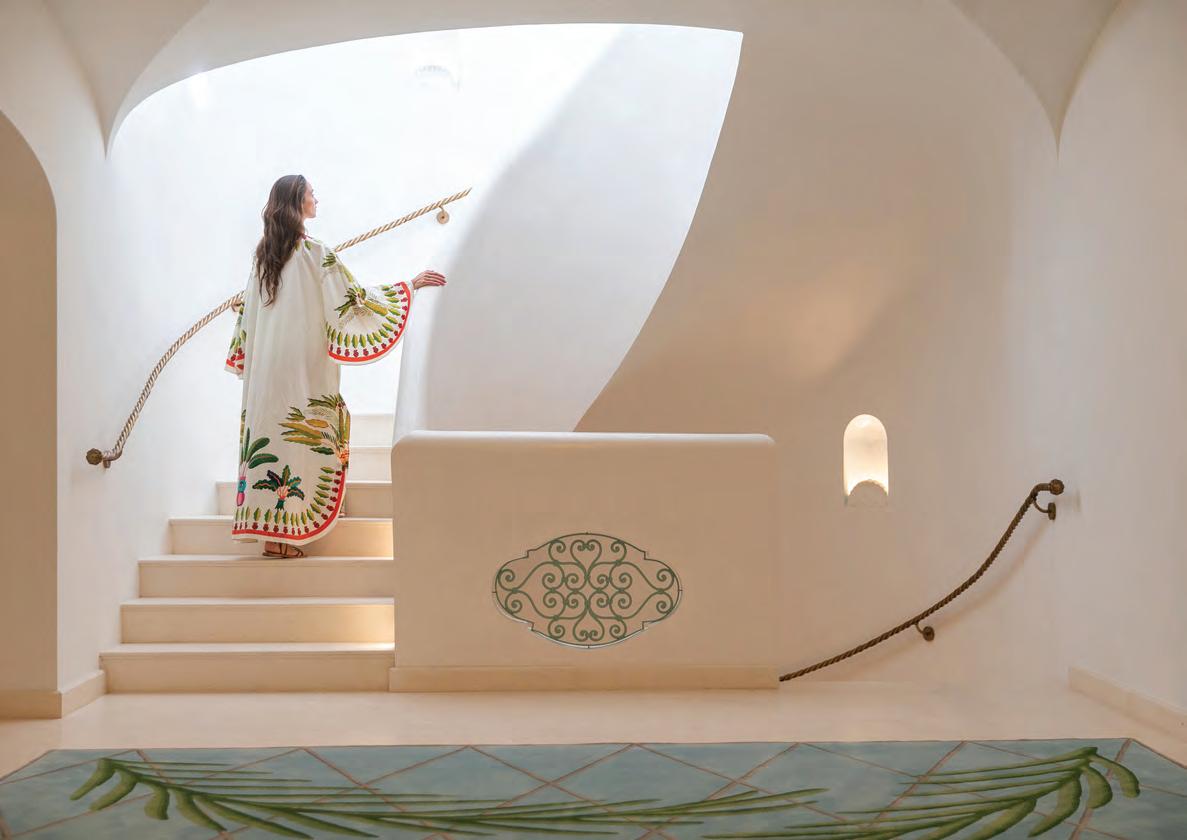
By the Sea
A picture-perfect escape on the water in Capri.
BY ZACHARY WEISS
Italian resort towns are hallowed ground for the jet set. Like any other island haven, whether it be Nantucket, Anguilla, or Sardinia, Capri requires an arduous journey to get there and a steadfast dedication to complete leisure.
Hotel La Palma, the first property in Italy from the Oetker Collection, who are famed for their stewardship of Hotel du Cap-Eden-Roc in Antibes, Le Bristol Paris, and many more gilded locales around the globe, is nestled in the heart of Capri. Just off the island’s bustling Piazza Umberto Primo, Hotel La Palma was originally the Locanda Pagano, the island’s first hotel which opened in 1822.
With just 32 rooms and 18 suites renovated by interior designer Francis Sultana, it’s an intimate Mediterranean hideaway that still boasts all
92 AVENUE MAGAZINE | SEPTEMBER—OCTOBER 2023
JOURNEYS UPWARDLY MOBILE
HLP + CAPSULE COLLECTION
AN AFTERNOON AT DA GIOIA BEACH
the hallmarks of five-star hospitality one expects from a grand hotel, making it equally suitable for a weeklong romantic jaunt, a long poolside lunch enjoyed on the rooftop overlooking Via Vittorio Emanuele, or an afternoon at Da Gioia beach club, situated just a stone’s throw away in Marina Piccola—a prime location for spying on incoming mega-yachts.
If a glistening new hotel and chic beach club weren’t enough to entice you, to celebrate its opening, Hotel La Palma has also released a bespoke collection of luxury products all hailing from Italy and curated by lauded style and decor editor, Gianluca Longo. The trove of treasures includes clothes by La DoubleJ, with a custom pattern inspired by Hotel La Palma’s design, Aquazzura palm tree motif sandals, and a backgammon set by Fenili. Sprezzatura!
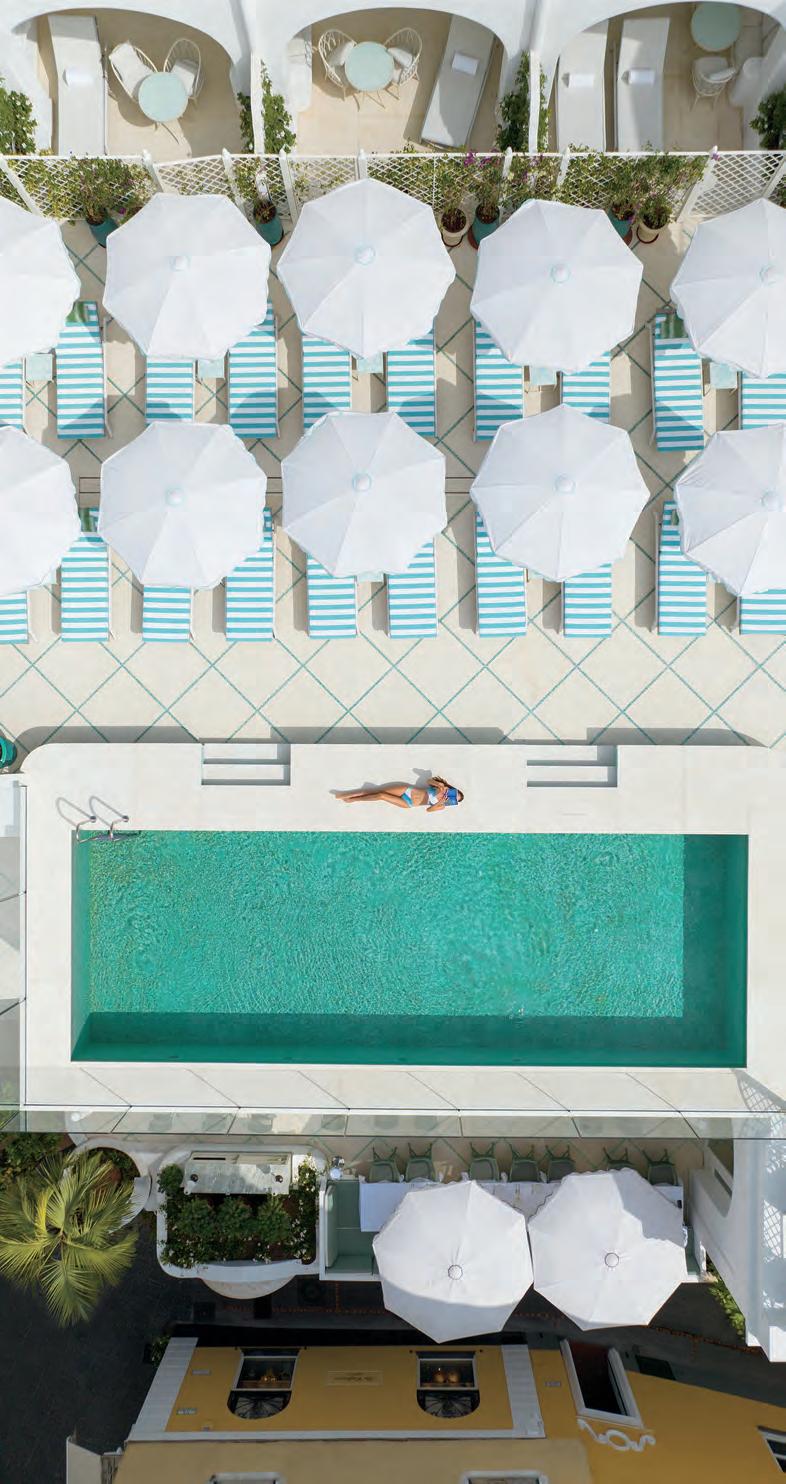
SEPTEMBER—OCTOBER 2023 | AVENUE MAGAZINE 93
HOTEL LA PALMA/ROMAIN REGLADE
THE LUXE LIFE The pool at Da Gioia beach club before the buzzy international social scene takes over.
CL UB, SITUATED JUST A STONE’S THR OW AWAY FROM MARINA PICCOLA, IS A PRIME LOCATION FOR SPYING ON INCOMING MEGA-YACHTS.
THE CITY
NEW YORK REAL ESTATE OF MIND
THE CITY IS BACK BIG TIME, AND THE MARKET IS BOOMING. REAL ESTATE INDUSTRY LEADERS AND INSIDERS BREAK DOWN THE TRENDS FOR AVENUE, FROM TROPHY APARTMENTS TO THE VALUE OF BUYING A CO-OP TO A SERIOUS LUST FOR OVER-THETOP AMENITIES AND MORE.
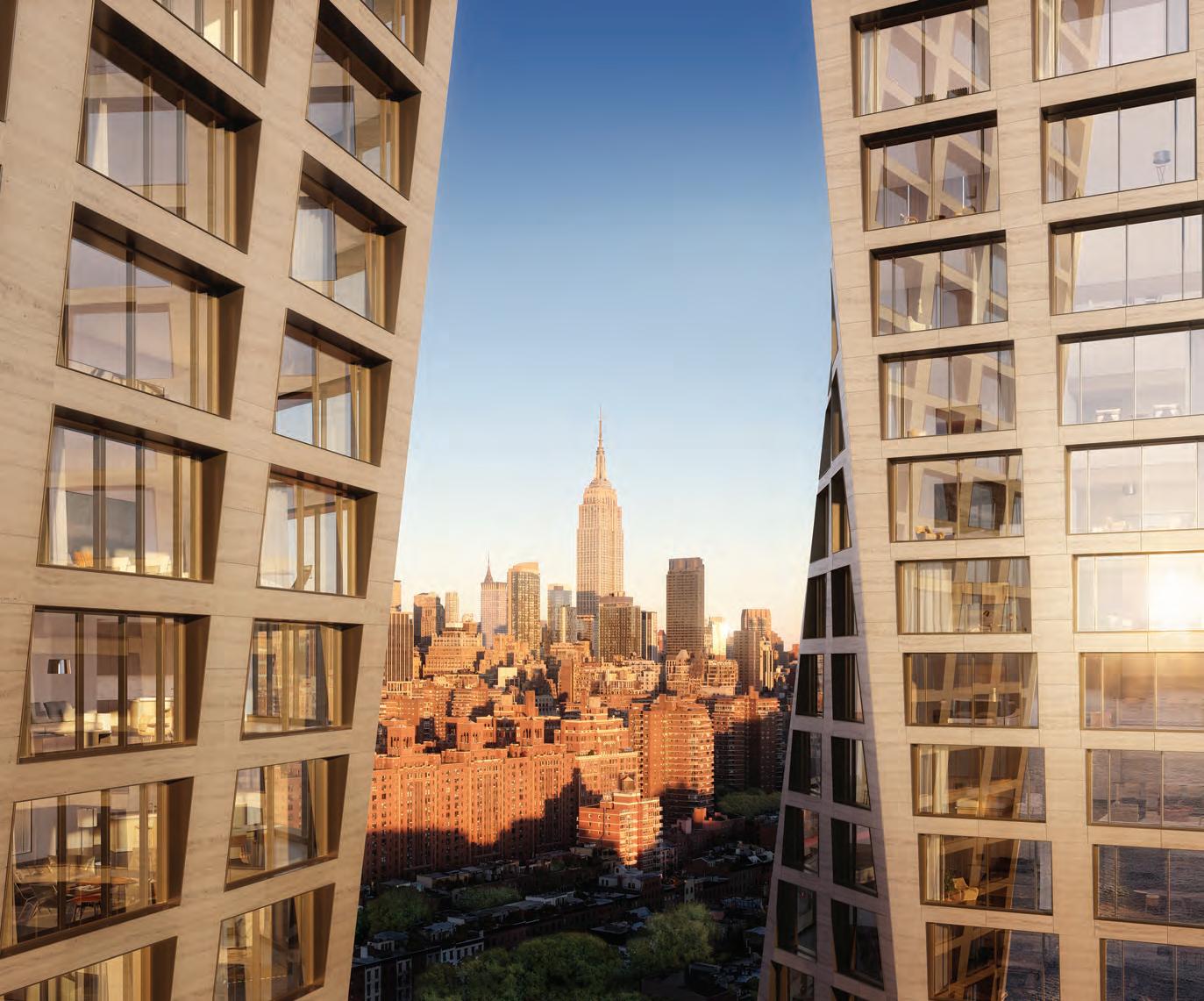
COURTESY OF THE CORCORAN GROUP
ONE HIGH LINE, The Corcoran Group
94 AVENUE MAGAZINE | SEPTEMBER—OCTOBER 2023
Pamela Liebman The Corcoran Group President & Chief Executive Officer
“We are in a rising market. People are rushing to buy before prices go up. We are very bullish on New York. We have had an influx of foreign buyers, including über-wealthy Chinese, who, in truth, never really went away. They are looking at high-end condos as investments for themselves and their college-age children. We also have buyers from California and Florida. Mixed in with international and national buyers are New Yorkers. New Yorkers in the past looked at prewar co-ops. Today they want brand new, turnkey condos with a high level of amenities. It is important to pick the right building. Early buyers to 220 Central Park South are reaping big rewards—resales have far exceeded purchase prices. Strict board codes and a lack of amenities have led traditional Upper East and Upper West Side buyers to new developments that offer multi-bedroom layouts with views and services that rival hotel living. Examples are 180 East 88th Street which offers full-floor and half-floor residences and 20 East End Avenue, a Robert A.M. Stern-designed building, that embodies the heritage of prewar architecture from its striking exterior to maisonettes and triplex town houses and six-room residences overlooking the East River. Another example is the Wales on Carnegie Hill. Once a hotel and a prewar landmark, now reimagined as a limited collection of gracious residences. One of the best-selling projects in the country is One High Line—with sales ranging from $2 million to a $52 million penthouse.”
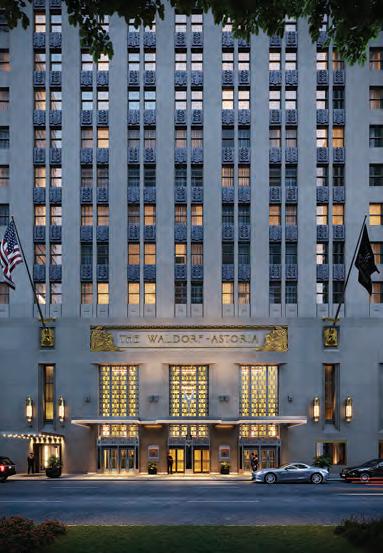 Kelly Mack Corcoran Sunshine Marketing Group President
Kelly Mack Corcoran Sunshine Marketing Group President
“People who recently bought or refinanced are hesitant to buy or sell. Manhattan is facing record high rents which has led to an uptick in first-time buyers, despite the mortgage rates. Another uptick is in the way we value private outdoor space. Residences that include terraces sell for more and quicker. They are the units buyers purchase first, even before completion. Buildings in the planning stages are accommodating this because it is not a trend, it is here to stay. We are seeing movement into neighborhoods purchasers might not have considered. Two examples: 130 Williams, the Sir David Adjaye building in the Financial District, and the Robert A.M. Stern building 100 Claremont in Morningside Heights. Both have large, multibedroom residences, many with private outdoor
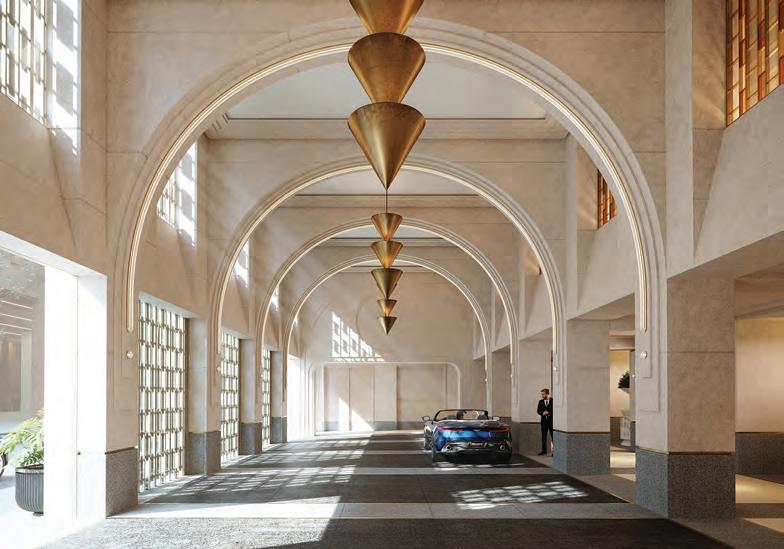
space. Another neighborhood seeing strong interest is West Chelsea, and the most exciting project there is One High Line, a luxury condo building spanning a full city block. One High Line is two sculptural, twisting travertine towers designed by Danish architect Bjarke Ingels. Each tower provides unobstructed views across the Hudson River and New York City skyline. With a private porte-cochère entrance, lushly landscaped courtyard, and over 18,000 square feet of amenities, including a 75-foot lap pool with cabanas; fitness studio with private training rooms; a glassenclosed double-height bridge lounge; golf simulator and virtual gaming studio; and private dining with catering kitchen, One High Line has everyone talking. It is also the future home of the five-star Faena New York hotel, where residents will get access to Faena’s exclusive members club and a 17,000-square-foot spa.”
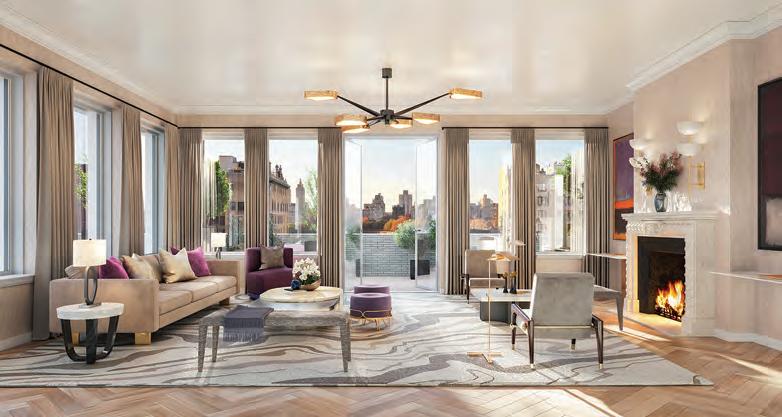
THE WALES: RENDERINGS BY VMI STUDIO; WALDORF: NOË & ASSOCIATES/COURTESY OF THE BOUNDARY SEPTEMBER—OCTOBER 2023 | AVENUE MAGAZINE 95
THETOWERSOFTHEWALDORFASTORIA,DouglasElliman
THE WALES, The Corcoran Group
Hall F. Willkie
Brown Harris Stevens President, New York City, Director of Important Residential Properties, Director of BHS Partnering Worldwide
“This is a great time to buy. Sixty-five percent of the existing housing stock in New York are co-ops. I only know of one co-op that converted to a condo, which means they are here to stay. If you want to live on the Upper East or West Side, you must consider co-ops. The condo inventory is low and what is available is limited to the very top of the market. Co-ops are adjusting—they have added gyms and other amenities. The boards are loosening up. And while there have been adjustments, the prices have not dropped dramatically like the first wave of luxury condos. People holding off because of uncertainties in the market are now feeling confident. There has never been a better time to buy. You can no longer wait for the bottom because you cannot predict it. By the time it happens, it is over. There is confidence in the economy and more confidence in the world. New York restaurants are full. The streets are busy. People are feeling better.”
Stephen Kliegerman Brown Harris Stevens Development Marketing, President
“We have two new developments on the Upper West Side, both spectacular, both in desirable historic locations: the Vandewater in Morningside Heights, home to Columbia University and Riverside Church and nestled between some of
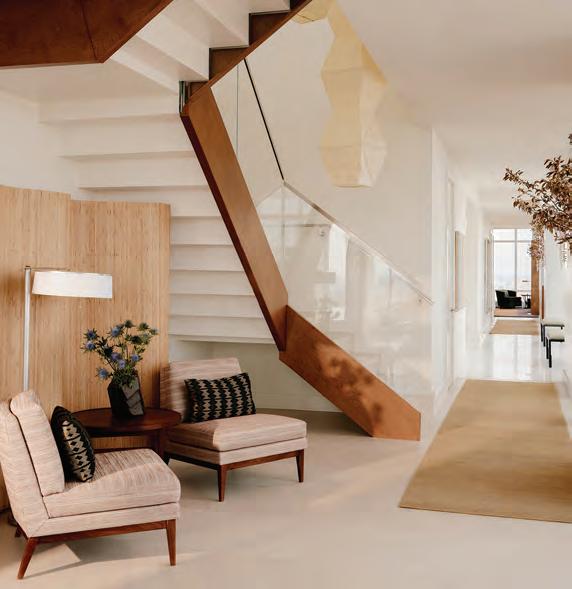
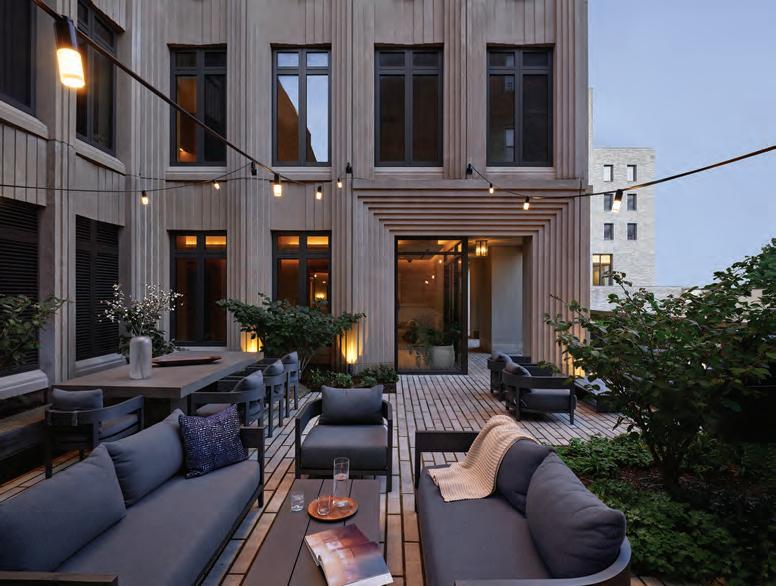
the city’s most beloved parks; and 200 Amsterdam, at the nexus of Lincoln Center and Central Park. These are traditional residential neighborhoods with leading cultural institutions, great schools, and universities, Central and Riverside Park, fine dining, and historic architecture. Post-Covid, a lot of executives are returning to the office. Our buyers are New Yorkers moving within the city or who have been asked by corporate headquarters to return. These are now their primary residences. With both the Vandewater and 200 Amsterdam, we also see empty nesters buying to be close to their adult children and grandchildren. Art Deco-inspired and elegant, 200 Amsterdam offers gracious layouts and heightened ceilings. The living and dining areas offer corner wraparound, floor-to-ceiling windows with views of Central Park and the Hudson River, bathing the space in light. The Vandewater takes its cues from the neighborhood, with a fresh take on neo-Gothic architecture with a cobblestone motor court, entertaining terraces, and peaceful gardens inspired by nearby Central Park. Oversized windows and a selection of private, setback terraces overlook the park and the river. Buyers are looking for spectacular amenity packages. At the Vandewater that means 24,000 square feet with a pool, gym, full-catering kitchens, dining room, club room, practice room, teen room (with private, soundproof study areas), children’s playroom, private garden, and on-site attended parking. At 200 Amsterdam there are three full floors of amenities, ranging from a spa and pool to a “Little Composers” room for children, a multi-sports simulator, private club, virtual offices,
and more. Both buildings offer a sense of security and community with knowledgeable on-site staff, and programming for all ages. Both buildings reflect a trend of referencing history in modern architecture with a deep respect for the storied legacy of both the neighborhood and the city.”
Scott Durkin
Douglas Elliman President & Chief Executive Officer
“There are two distinct buyers: condo and co-op. Co-op buyers are afforded great value because much of what is on the market needs renovation or redesign. People are afraid to buy co-ops along Central Park West, Park, and Fifth Avenue if they need work. As a result, the co-op market is the best value in terms of size and selection. The condo buyer is looking for the bow on the box, a product that has not been lived in, that is being delivered fresh, new, and designed by a star architect. Amenities are key right now, as people are working from home more than ever. They want an amenity floor with a gym, playroom, spa, restaurant, pool, golf simulator, doggie accommodations—all of it. They are looking for a lifestyle inside as well as out. The floor plan of today looks nothing like the floor plan of a decade ago. You have open kitchens leading to the dining room, to the living room, and den—it is all connected. Bedrooms are in a separate wing connected by galleries and hallways. In glass curtain buildings wall space is limited, so having grand entrée galleries and hallways creates spaces to display art collections.
96 AVENUE MAGAZINE | SEPTEMBER—OCTOBER 2023
200 AMSTERDAM, Brown Harris Stevens
THE VANDEWATER: ALICE GAO; 200 AMSTERDAM: WILLIAM LAIRD
THE VANDEWATER, Brown Harris Stevens
Many residences in new developments have five and six bedrooms, and this is also not their only home. They own in two or three locations: the Hamptons, Florida, Colorado, LA. What’s interesting is that they like to replicate what they have from one home to the next. The playbook has changed. People are making their home their escape. The upper end of the market is very healthy. Residences over 3,000 square feet are moving. And there are bidding wars on rentals now. People are more confident. We are seeing buyers selling their large homes in Connecticut, Westchester, and Long Island and buying in New York City. Honestly, can you think of a better place to retire?”
Susan de França Douglas Elliman
President & Chief Executive Officer, Development Marketing
“The new development market has experienced an uptick in 2023. Sales below $3 million dominated, but we have also realized activity at the top of the market, with eight sales exceeding $20 million. The demand for trophy properties
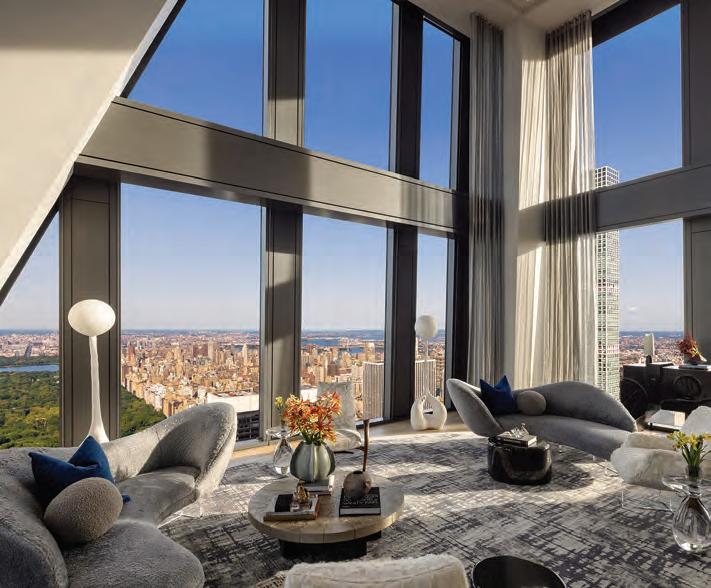
remains strong given their limited supply. There is an increase in international buyers. New York is still a top market for high-net-worth individuals. In this post-Covid world, we have noticed a desire for larger spaces to accommodate working from home, and a desire for outdoor space, and amenity programs that focus on living well and wellness. The Waldorf Astoria Residences will have access to over 50,000 square feet of private amenities, ranging from a 25-meter pool with skylight, opulent private spa, and numerous entertaining spaces. This is the first-ever opportunity to own a residence within the Waldorf Astoria, an Art Deco icon. The unprecedented restoration is by Skidmore, Owings & Merrill, with landmark status that extends through the public spaces. The residential interiors and amenities by designer Jean-Louis Deniot range from gracious studios to opulent four bedrooms and penthouses, many with unique floor plans and private outdoor space. The chance to own a pied-à-terre or primary residence with hotel services in a historic New York property appeals to both international and local buyers. We have seen an uptick of activity in Midtown. Another example is 53 West 53, a
striking condo tower by architect Jean Nouvel, with interiors by Thierry Despont. Rising 82 stories above the Museum of Modern Art, the 161 residences include full-floor homes and duplex penthouses with private elevators. Thirty-thousand square feet of amenities, staffed and activated to provide five-star-hotel-level service, make this one of the most luxurious residential buildings in the world. The lavish full-floor wellness center includes a gym, separate high-and-low-energy fitness studios, spa facilities, a 65-foot lap pool, cold plunge pool, and hot tub. Other amenities include a private formal dining room overlooking Central Park, a library, and a double-height oenology suite for wine tasting with temperature-controlled wine storage vaults.”
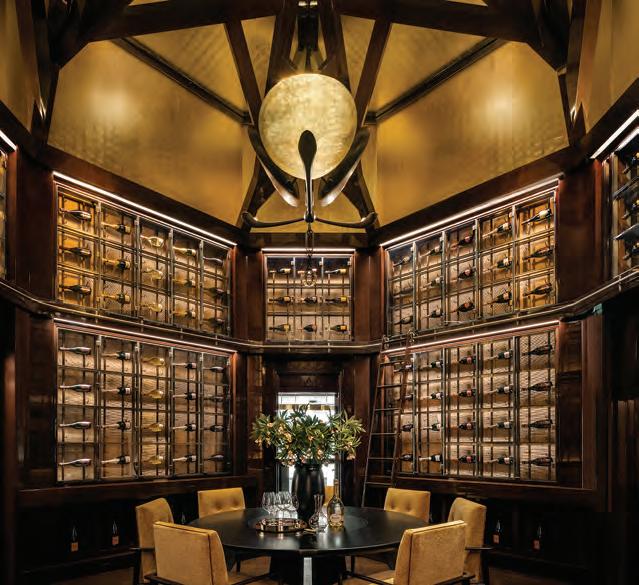
SEPTEMBER—OCTOBER 2023 | AVENUE MAGAZINE 97 LEFT: EVAN JOSEPH; RIGHT: GILES ASHFORD
53 WEST 53, Douglas Elliman
53 WEST 53, Douglas Elliman
“THE PLAYBOOK HAS CHANGED. PEOPLE ARE MAKING THEIR HOME THEIR ESCAPE.”
–SCOTT DURKIN, DOUGLAS ELLIMAN
Marissa Ghesquiere Sotheby’s International Realty Executive Vice President of Sales, New York City
“Location, location, location. The most important thing is why somebody wants to live anywhere. The best locations in New York are the beautiful, landmarked co-ops and town houses along the historic thoroughfares with Central and Riverside Park as your backyards. There are many beautiful condos, but you cannot replace the Majestic, the Dakota, or 740 Park Avenue. The bones and the floor plans are timeless. There is a division between the public and private rooms, separated by galleries. People are shying away from the open floor plan and looking towards that timeless quality. Even if a preference is for renovated homes, there is an understanding that you can always renovate— but you cannot move an apartment that is on Third Avenue to Fifth Avenue. There are other positives to co-ops. Real estate is an important asset class within any portfolio. When you think of the co-op purchaser, the goal of the board is to provide financial and community stability. You may have condo owners who are buyingfor investment or income purposes, which is perfectly logical, but it is hard to create community around that. We are seeing a return to the Upper East and West Sides, to neighborhoods to put down roots, to the idea of generational homes. Co-ops are not only most of the housing stock, there is not a lot of new development in the pipeline. There is also the Upper East and West Side town house market. Is there a greater luxury in life than a single-family home in the city? You have privacy, the garden, sometimes multiple
outdoor spaces, and you have the separation of the family on the floors. It is a unique opportunity to really make something your own.”
 Erin Boisson Aries Douglas Elliman Associate Real Estate Broker
Erin Boisson Aries Douglas Elliman Associate Real Estate Broker
“Over the last decade, luxury hotel-branded residences in Manhattan offering turnkey living experiences became very successful business models. There was always a need for an alternative to temporary housing, accentuated during the pandemic. Our customer was looking for a short-term home in residential neighborhoods that mimicked the design quality and feel of their primary residences. The Fasano brand is widely recognized throughout South America, with 26 restaurants and 11 hotels. They really reinvented the concept of understated luxury. Fasano Fifth Avenue is their first step into the American market. At 815 Fifth Avenue, the Fasano New York private, members-only boutique hotel appears as if it has always been there. Understated and elegant, conceived of by Gero Fasano and Thierry Despont, it is a collection of threebedroom duplexes and full-floor suites. Facing Central Park, the residences are individually designed with Despont’s eye for hand-selected pieces from collectable mid-century furniture to serious art, photography, and objects, lined in Loro Piana cashmere wallpaper. The duplexes are 3,600 square feet, with the main floor including a formal dining room, eat-in kitchen, and a generous living room with huge windows, a working fireplace, and 10-foot ceilings. The Fasano café, a chic venue with a world-renowned chef, provides
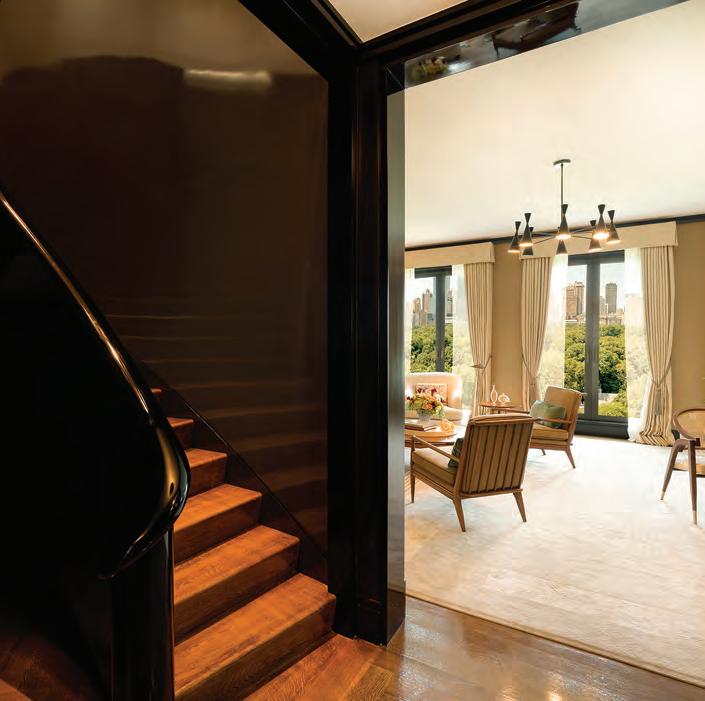
in-room dining. There is a 30-day stay minimum, although many members opted for one-tothree-year stays at record prices that exceed $120,000 a month. This was not what we anticipated; we thought the average stay would be three months. Due to the overwhelming success of this first venue, if the right opportunity presents itself, Fasano would like to expand in New York and they are currently at work on a new hotel in Miami.”
Cathy Taub
Sotheby’s International Realty
Senior Global Real Estate Advisor, Associate Broker
“Location, proximity, turnkey, amenities, the beautiful bones of a prewar with the advantages of a condo. On a boulevard of prewar co-ops, 555 West End Avenue, a Beaux-Arts gem within the Riverside-West End Historic District, stands out. Originally built as a private school in 1908, it is an outstanding architectural landmark with soaring ceilings and towering windows. Meticulously restored and reimagined as a boutique condo with 13 one-of-a-kind three- to five-bedroom residences, elegant materials and timeless details recall the classic style of grand prewar residences. Complete with an amenity package that includes a state-of-the-art gym, recreation room, and residence lounge. The Solarium Penthouse, formerly the school gymnasium, features dramatic architecture; its Great Room has a 19-foot arched ceiling with a full glass wall opening to a terrace that can accommodate large outdoor dinner parties. The 3,420 square feet, three-bedroom Solarium Penthouse is a once in a lifetime apartment.”
98 AVENUE MAGAZINE | SEPTEMBER—OCTOBER 2023 555 WEST END AVANUE: HAYES DAVIDSON LTD.; FASANO FIFTH AVENUE: RINZE VAN BRUG
555 WEST END AVENUE, Sotheby’s International Realty
FASANO FIFTH AVENUE, Douglas Elliman
Cathy Franklin The Corcoran Group Licensed Salesperson
“People are less location specific. It is more about the property and their lifestyle, whether it be a co-op, condo, or town house. I have the penthouse at 150 East 78th Street on the market, the top two floors of the brand-new Robert A.M. Stern building. With views that encompass the skyline and Central Park and 7,288 square feet of meticulously designed interior space, the penthouse exudes grandeur and refinement. The three terraces, totaling 1,462 square feet, invite outdoor living and entertainment. There are six bedrooms, seven full baths, and two powder rooms. The interior by Robert Couturier boasts 10-foot-seven-inch ceilings, two working fireplaces, and a master Christopher Peacock kitchen. This qualifies as a trophy apartment. Then there are the amenities: a rooftop terrace, ‘The Parlor,’ a wood-paneled residence salon, and ‘The Athletic Club,’ with squash and basketball court. The other trend is the town house. I have one at 40 West 74th Street, better described as a palatial 25-foot-wide neo-Georgian limestone and brick mansion, dating to 1906—it is an architectural masterpiece. Designed by Percy Griffin, 18 neo-Georgian town houses were built on this historical block by the Clark family, who also built the Dakota. With a total of 1,349 square feet of outdoor space, including a south-facing garden, a large terrace off the dining room, a roof garden, and south-facing terrace, this masterpiece is configured as a two-family home boasting many original prewar architectural details. The interior features six stories, over 11,000 square feet with a windowed finished basement, five bedrooms, and five full baths. The grand-scale entertaining rooms
include a salon, three living rooms, two formal dining rooms, a parlor, eat-in kitchen with windowed breakfast room, a second kitchen, a library, media room, an entertainment room, a windowed home gym, laundry room, and an elevator. Throughout the residence are ceilings up to 13 feet, original restored moldings, custom millwork, and new windows.”
Serena Boardman
Sotheby’s International Realty
Senior Global Real Estate Advisor, Associate Broker
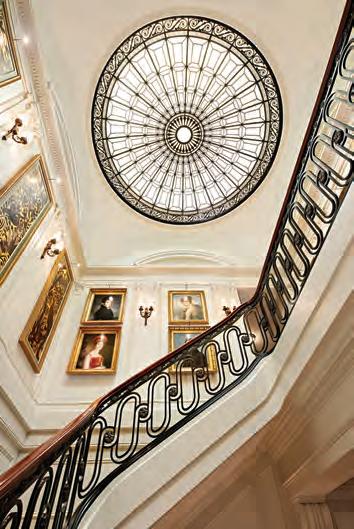
“Confidence is returning to the market. As a native New Yorker, I can feel a sense of normality and rhythm. As New Yorkers return to Manhattan, we are also seeing a great uptick in the pied-à-terre market. New Yorkers who have relocated to Florida still love New York. Co-ops continue to be much of our business. One component of New York real estate that has remained sought-after through the centuries are legacy properties. I would classify 4 East 79th Street as one of the most impressive on the market today. Commissioned by James E. Nichols in 1898, 4 East 79th Street is an important, architecturally significant limestone mansion that was a key component in the initial development of railroad industrialist Henry H. Cook’s prescient acquisition of the block between East 78th and 79th Streets and Fifth and Madison Avenues. Superbly designed by its original architect, C.P.H. Gilbert, known for his opulent, château-inspired François Ier style, it has undergone a masterful and complete renovation by its most recent steward, the late businessman and philanthropist, Aso O. Tavitian. With the expertise of architectural and design professionals, including Peter Pennoyer and Theodore Prudon, among others, who used original detail and research as their inspiration and guide, this 35-foot-wide mansion offers
15,000 square feet of interior living space. Large west-facing windows allow for exposures on three sides and benefits from divine light as well as Central Park views. Throughout, high ceilings and impressively scaled rooms are complemented by extraordinary detail, such as solid mahogany doors and windows, marble paneling and floors, English brown oak paneling, parquet de Versailles and herringbone white oak floors, and carved plaster crown moldings. With an eye to the legacy of the design, only top-quality methods and materials have been selected. A passenger elevator services all floors, and a service elevator additionally supports all but the top three levels. Two sets of impressive bronze and glass doors open to a gallery anchored by a wide grand staircase rising four stories. From the gallery, a marblepaneled hall leads to a reception room, with English brown oak paneling and a wood-terrace with limestone walls and a hornbeam-tree border. The parlor level, with ceilings over 13 feet, is comprised of a grand landing gallery and two impressive entertaining rooms, the living room and dining room. These rooms are a tour de force of exuberant proportions and detail. Both are enhanced by wood-burning fireplaces with marble mantles, as well as plaster cornices exactingly modeled on those original to Boston’s Nichols House. The north-facing living room and the south-facing dining room have gently curving west-facing walls, each with two tall windows offering outlooks to the courtyard and to Central Park. For entertaining, this floor is supported by a pantry with service elevator to the residence kitchen on the third floor and the catering kitchen on the lower level. This remarkable single-family residence is visually resplendent and exceptional in every way.”
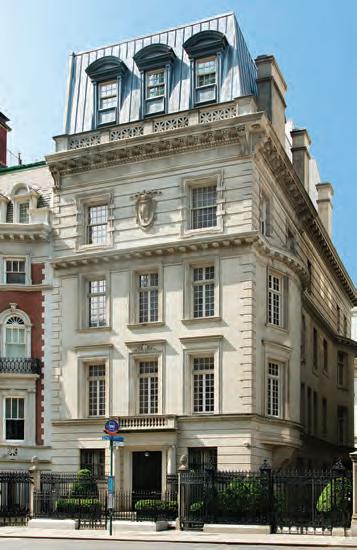
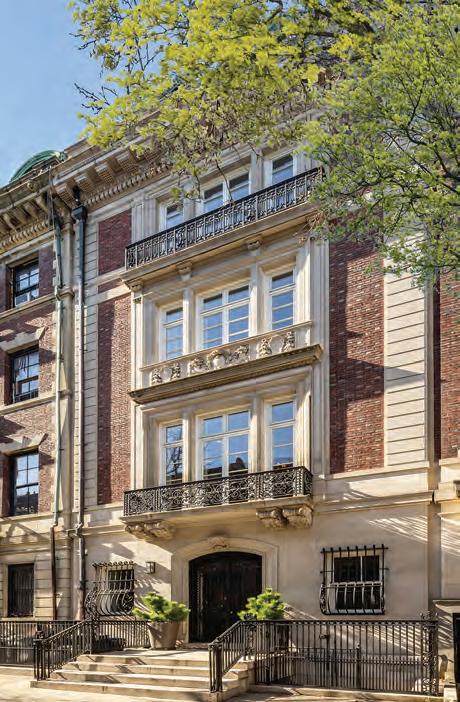
SEPTEMBER—OCTOBER 2023 | AVENUE MAGAZINE 99 40 WEST 74TH STREET: THE CORCORAN GROUP; 4 EAST 79TH STREET: YOO JEAN HAN FOR SOTHEBY’S INTERNATIONAL REALTY
40 WEST 74TH STREET, The Corcoran Group
4 EAST 79TH STREET, Sotheby’s International Realty
4 EAST 79TH STREET, Sotheby’s International Realty
Douglas Elliman
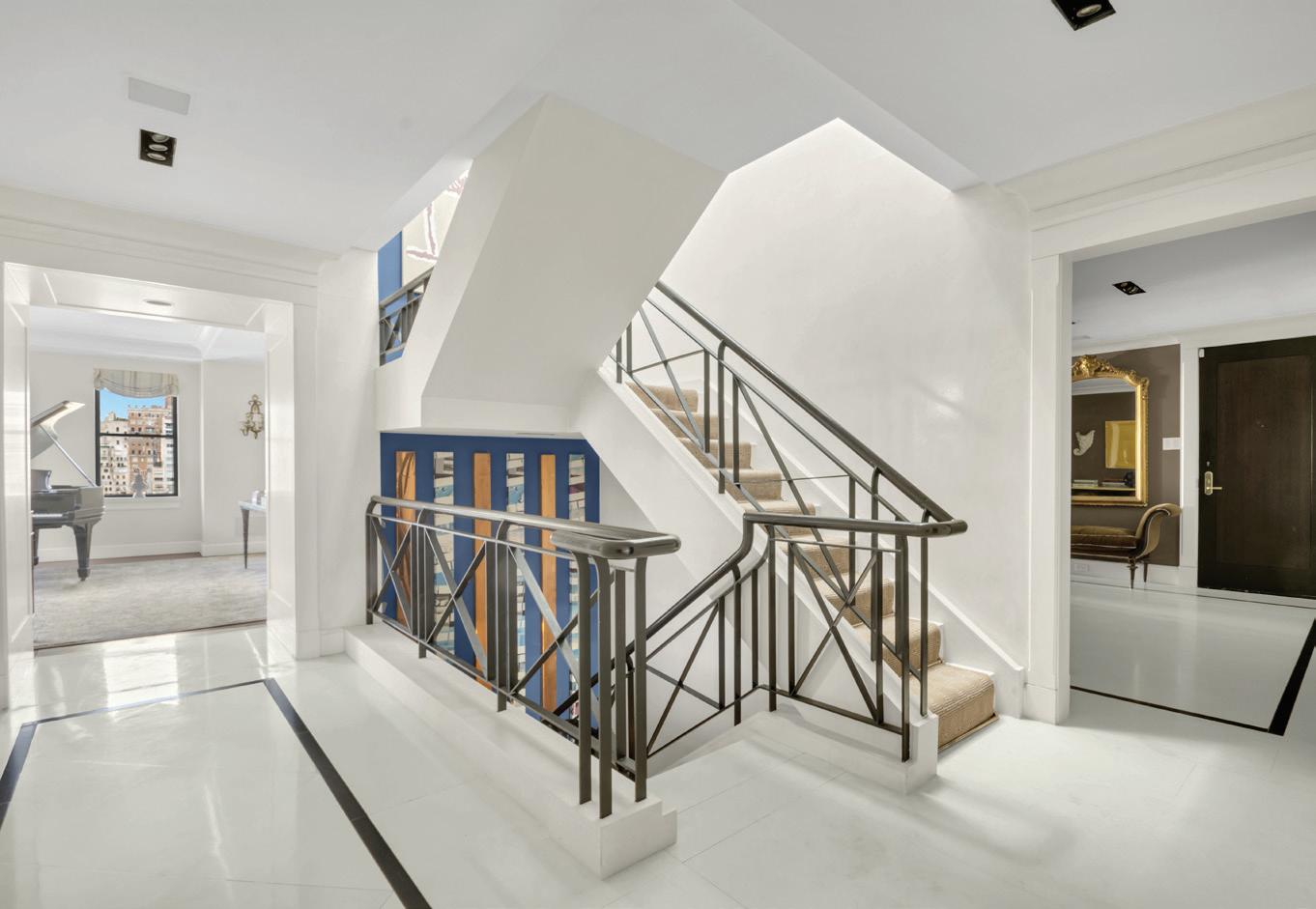
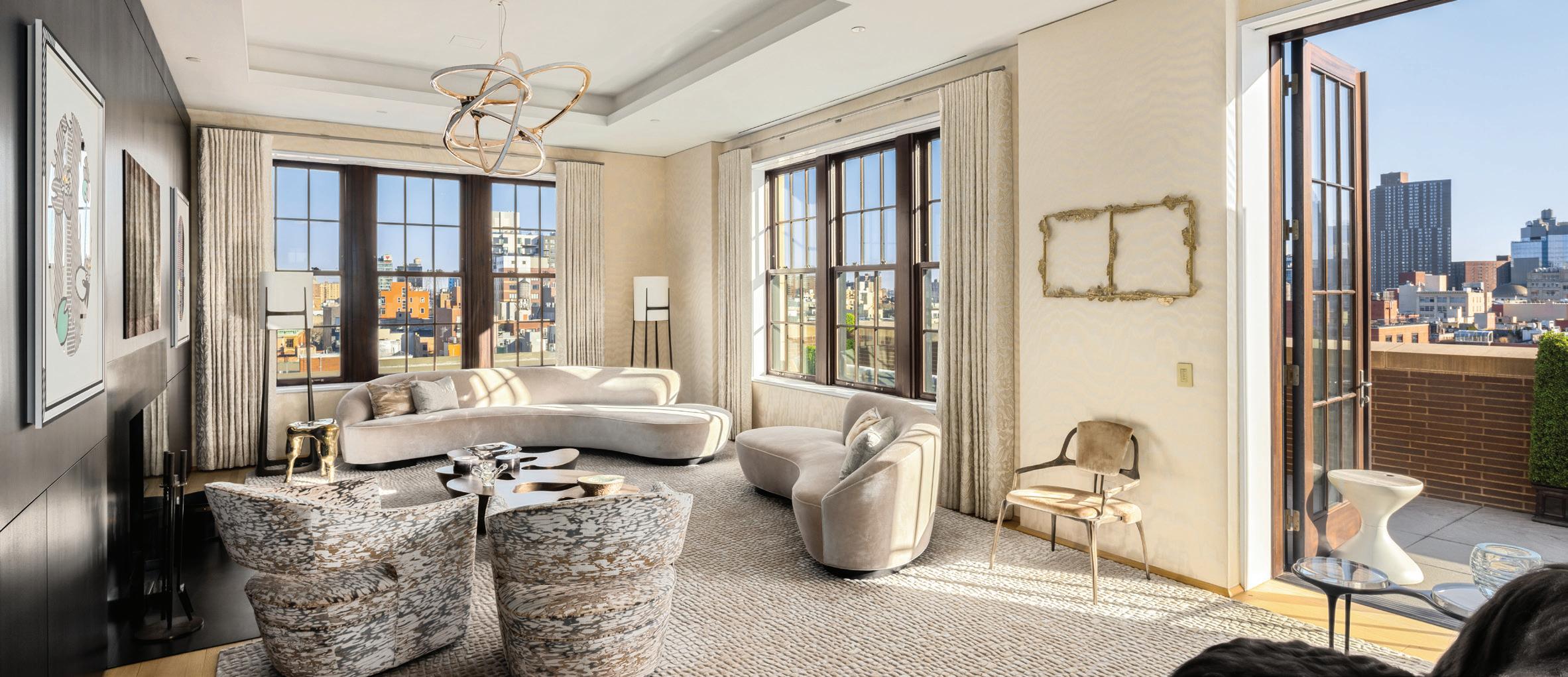
Real Estate Agent, New York City
“Buyers are ready, they do not want to renovate. They want turnkey with minimal personal changes. The cost of doing work has gone up and the time it takes to renovate has in some cases doubled. Newer condos provide anonymity, and fewer complications. One example is 224 Mulberry, located on one of the oldest, most charming streets in Manhattan in Nolita, is a stunning six-unit building that has the solid structure of a prewar with the rare combination of privacy and amenities.”
Lisa K. Lippman
Brown Harris Stevens
Associate Real Estate Broker
“As James Carville said, ‘It’s the economy, stupid.’ It all comes down to price. There are exceptions—fantastic town houses and condos sell for more than you would think, and sometimes someone just must have it because it is so fabulous, but that is not happening with co-ops. If you are willing to renovate, and you found a great deal, the seller must be willing to negotiate. There are a lot of people from around the country that are excited about living in New York—from the Midwest, Texas, Florida, and many from California. And New Yorkers are back. Families still want to raise their children here. We also see the second generation, young people whose parents made their fortunes in finance. They are spending 10, 20, and upwards of $40 million on apartments, mostly downtown. The co-ops that are moving are in mint condition in trophy locations. That’s a great investment because you cannot recreate a prewar building in a great location. I have a listing at the Prasada at 50 Central Park West that my clients purchased in 2016. We priced it for a small amount more than what they paid for it in 2016. They paid $22.5 million. We turned down offers higher than where we are priced now. Unfortunately, that is the case with a lot of properties, especially co-ops. But I think the tide is changing and buyers will be retuning to well renovated coops because there is SO much value there. 50 Central Park West is a great example of real value! Exquisitely renovated, 5,000 square feet, a combination of dramatic architecture with classic contemporary renovations—is a rare, triple-mint Gilded Age mansion in the sky.”
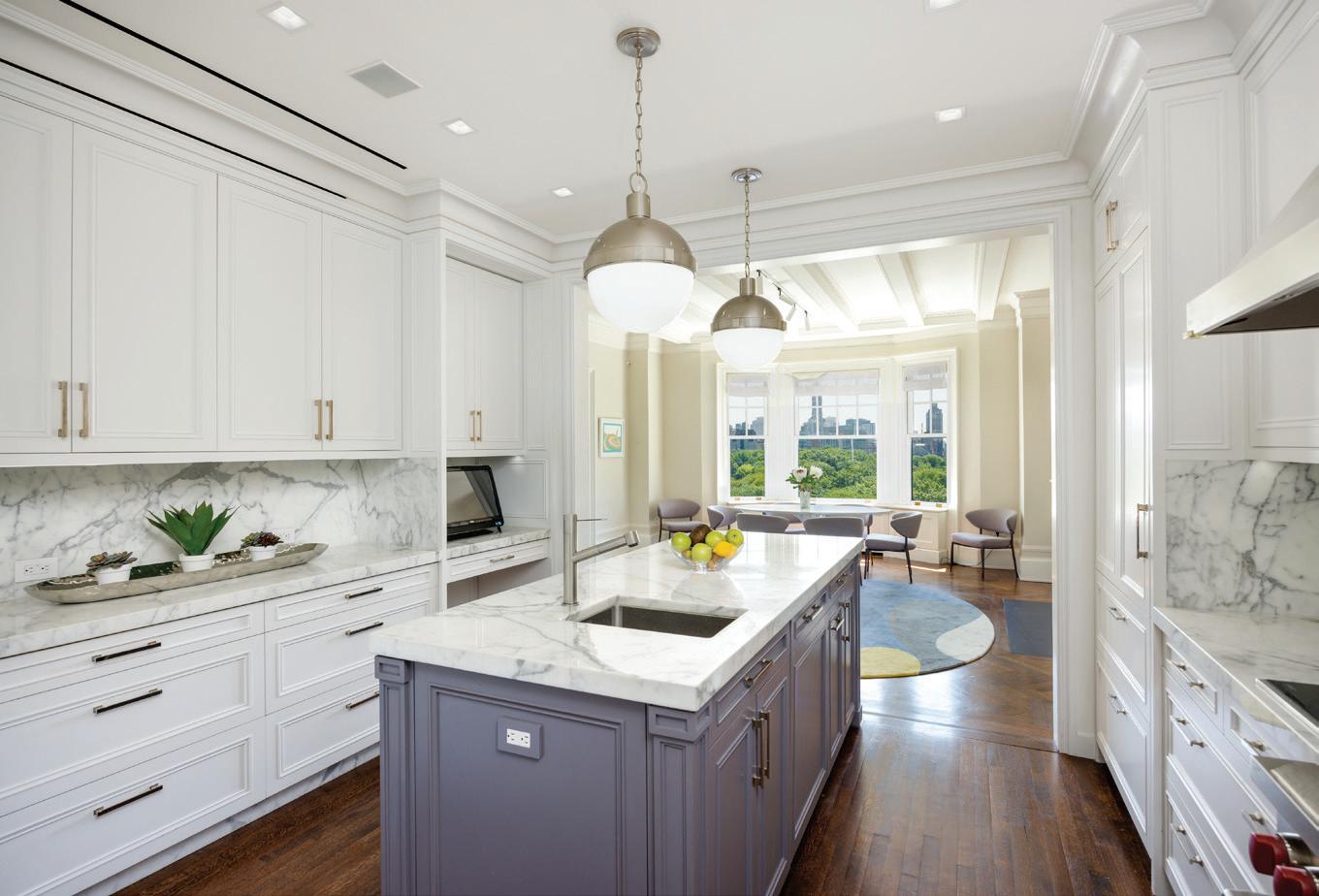
100 AVENUE MAGAZINE | SEPTEMBER—OCTOBER 2023
Lauren Muss
224
MULBERRY: EVAN JOSEPH; 50 CENTRAL PARK WEST: COURTESY OF BROWN HARRIS STEVENS; 610 PARK AVENUE: TINA GALLO
224 MULBERRY, Douglas Elliman
50 CENTRAL PARK WEST, Brown Harris Stevens
610 PARK AVENUE, Douglas Elliman
Noble Black Douglas Elliman Associate Real Estate Broker
“The last few years people were cautious, but now they have come back to the market. The mortgage rates are baked in, and the fear of recession seems to have dissipated. The younger generation is less concerned with prestige, they prefer a large primary bath and amenities galore. The Mayfair Regent at 610 Park Avenue has a storied history. Designed in 1925 by James Carpenter, one of New York’s premier architects, this elegant building was converted to a condo in 1998. The penthouse is the epitome of sophisticated living. A triplex residence, it offers 7,700 square feet of interior space and a private outdoor oasis spanning over 1,400 square feet with a foyer that leads to a living room with vistas of Central Park, a coffered ceiling, and a grand, wood-burning fireplace, off which is a chic library, a state-of-the-art kitchen, a prewar scaled dining room, and media room. On the 15th floor are the sleeping quarters: four en suite bedrooms, and the primary suite with expansive views, two walk-in closets, and a spa-like bath. The 17th floor opens to a sunroom which leads seamlessly to the private, landscaped, rooftop terrace. The Mayfair Regency is a full-service, white-glove building in the truest sense and was once the location of the famed Le Cirque, where Daniel Boulud was the chef, and where, in 1993, he opened his eponymous restaurant Daniel, which to this day remains amongst Manhattan’s finest.”
Richard Steinberg Compass Real Estate Agent
“If I were a young family with children, I would not consider any other neighborhood than the Upper East Side. If you want to send your children to private school, you have the largest concentration on the Upper East Side. There was a migration of New Yorkers to Florida, but they are coming back. It was appealing during Covid, but it is not New York. They worried about the educational opportunities for their children, and they missed the museums and galleries, the theater, the pace. There is great value on the Upper East Side. People whose children are now adults no longer need those very large apartments, and they realize that if they want to sell, they must come down. I think the classic apartments will hold their value long term. The problem with many of these new, amenity-rich buildings is that they will not age like the classic prewar apartments on Fifth and Park. I have a listing at 755 Park Avenue, on the top floor, the most desirable line. There are no interior rooms—the entire apartment wraps around the building’s corner, so every room faces out. This eight-room residence was meticulously designed by Vicente Wolf. The entrance gallery is bright and beautiful, leading to the bedroom wing, the library, and powder room. The living room, with 10-foot ceilings and oversized windows, flows into a dining room made for entertaining, and a windowed chef’s kitchen. The bedroom wing includes two en suite baths and walk-in closets, and there is a staff room off the kitchen.
Prewar apartments were designed to be homes where you could sleep in one wing and entertain in the other.”
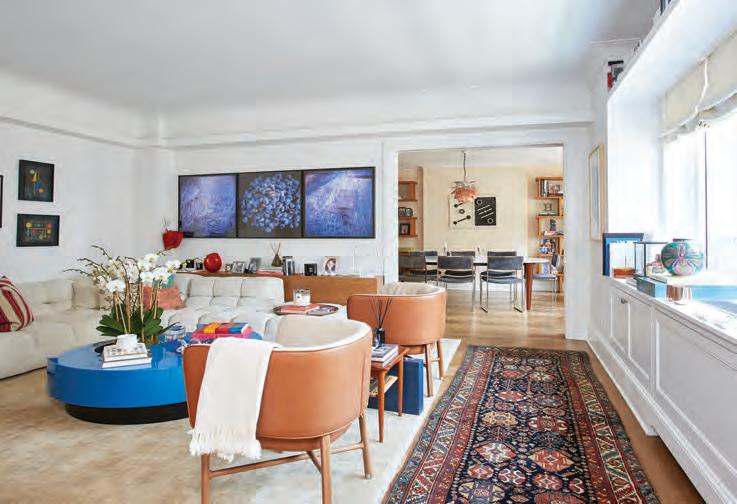
 Richard Ziegelasch
Richard Ziegelasch
The Corcoran Group
Associate Real Estate Broker
“I sold two apartments recently, one at 150 Charles and the other at 165 Charles. They sold for a tremendous amount of money. They were trophy apartments. They cannot be recreated. People are willing to pay because there is nothing else like them. If it is a trophy apartment, regardless of where it is, it will sell, and price will not be an issue. If it is not, then in this market everyone is a value buyer. I have an apartment now at 530 Park Avenue in a rare prewar condo that
is beautifully renovated. The owners are a nonU.S. family who wanted a five-bedroom apartment and bought another condo on Park Avenue. I would say it is a trophy apartment—a beautifully renovated duplex, prewar condo on Park Avenue in the 60s, with amenities, that is priced to sell. It is elegantly done by an AD100 designer, William T. Georgis, with four bedrooms, four baths, a spacious living room, formal dining room with views onto Park Avenue from every window, chef’s kitchen, and primary suite with two additional bedrooms on the same floor. What I love about these sellers is they believe in New York. They traded up. I am so sick of people saying that everyone is leaving New York. I just closed two apartments for over $150 million and most of my buyers are New Yorkers.”
SEPTEMBER—OCTOBER 2023 | AVENUE MAGAZINE 101 530 PARK AVENUE: MIKE TAUBER ;755 PARK AVENUE: RISE MEDIA
755 PARK AVENUE, Compass
530 PARK AVENUE, The Corcoran Group
WHOLE NEW YOU
DERMATOLOGIST DR. PAUL JARROD FRANK
The dermatologist is reclining on a sofa in his new office on the Upper East Side. It’s a decidedly fashion-forward space: the treatment rooms feel like expensive hotel suites. There is flattering recessed lighting throughout and a monochromatic color scheme with pops of gold and brass. A blackand-white photograph by Steven Klein hangs in his office. The result is like a combination of a luxury yacht and a high-end designer boutique. It’s the antithesis of the generic, white-walled med spas sprouting around the city faster than marijuana dispensaries, which surely goes over well with his fashion industry clientele, like Anna Wintour and Marc Jacobs.
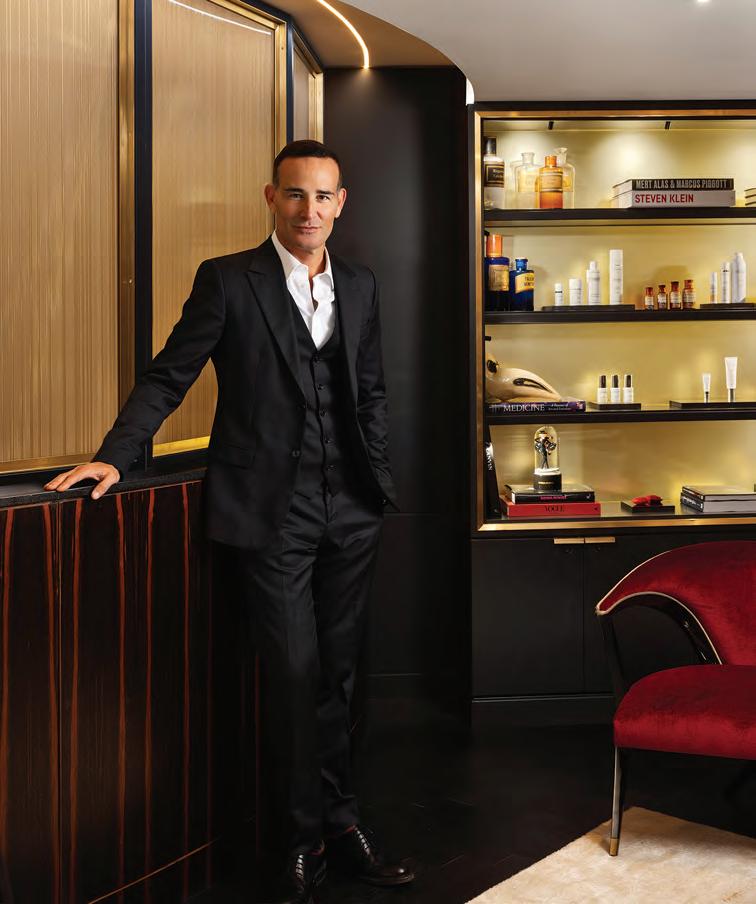
“I created an experiential environment to make people feel like when you go into a Chanel or Tom Ford store,” he explains. “[It feels] like everything is turning into Zara. What is missing is the higher-end type of service. That’s what I want to be as I continue to expand my business.”
At his uptown beauty factory—his second in Manhattan, the other being in the West Village—Dr. Frank has four board-certified dermatologists (in addition to himself), nine nurses, and over 30 lasers. He still treats patients himself, jetting to Florida during the winter to see clients in Miami and Palm Beach, and to the Hamptons every summer. “I still haven’t figured out a way to grow more arms or to be in two places at once,” he jokes.
Dr. Frank’s booming skin and body business— which utilizes everything from Botox to body sculpting, and new technologies like Emface (a muscular stimulation device that keeps facial structure the same as one ages) and Ellacor (which can remove skin without the recovery time of excisions)—caters to a growing population eager to look great, regardless of the price. “We live in
DONNA DOTAN 102 AVENUE MAGAZINE | SEPTEMBER—OCTOBER 2023
“I ALWAYS WANTED TO BE THE LVMH OF THE BEAUTY INDUSTRY,” DR. FRANK ANNOUNCES PROUDLY.
THE DOCTOR WILL SEE YOU NOW Paul Jarrod Frank, MD, is expanding his beauty business.
FROM TAILORS TO DERMATOLOGISTS AND MORE, NEW YORK HAS A NEW CROP OF LUXURY SERVICES AND PROVIDERS DEDICATED TO KEEPING YOU LOOKING YOUR BEST
a world where everyone looks at themselves as a visible brand,” he explains, noting a recent rise in younger patients and men. “Whether you’re an actor or you make candlesticks, everyone is on social media. Everyone is selling their brand through the visual aspects of not only what they do, but themselves. People must look good to be successful.”
Despite this, Dr. Frank dissuades his patients from going under the knife as long as possible. As one might expect, he is revered for making patients look natural and never over-filled or over-injected. “One of the greatest advancements we are seeing is technologies and preventative treatments that will keep people off the plastic surgeon’s table.”—Peter
davis
STAR BARBER MOSES RUBINOV
Well-heeled and often demanding business titans (and their sons) have been fiercely loyal to master barber Moshe “Moses” Rubinov for years. At just 32, Rubinov—who is tall, lean, and handsome—is the star barber of the Upper East Side, with clients like Michael J. Fox who’s been sitting in his chair for over six years.

After a year toiling in accounting at Pepsi, Rubinov—recently married with a small child— joined Paul Molé, the old-world barbershop on East 74th Street which opened in 1913. “It was very hard for me to sit in a box all day at Pepsi,” Rubinov confesses. “I need to see people and interact. And I could make more money cutting hair than I was at Pepsi.”
But recently, the venerable Paul Molé has become a hotbed of scandal and legal warring. Longtime owner Adrian Wood and onetime romantic and business partner Susan Rooney sharpened their scissors and sued each other. After a protracted and ugly lawsuit, Paul Molé closed shop. Rubinov, Paul Molé’s favorite barber, had been itching to break out on his own. The timing was perfect: he left Paul Molé a month before they were evicted. With the help and guidance of a mentor, he opened his own business just three blocks away on Lexington Avenue, taking over Delta Men’s Hairstylists. Rubinov kept the name (the previous owners were Greek) but completely renovated the space, which first opened in 1963. “It was full of mirrors and looked old,” he says, sitting in the new shop which has a masculine, minimalist black, white, and gray color scheme. “We wanted it modern and clean.” Rubinov lured over four barbers, one of whom, Guido, had been at Paul Molé for 25 years. And, with his all-star team of barbers, came the loyal customers. “All the clients came here,” he reports proudly with a beaming smile. “They love the new place. We have more barbers than chairs.” Delta, like the old Paul Molé, has always been a go-to snip shop for boys from Buckley and Trinity and other local schools. “We get three generations now,” Rubinov reports. “The grandfather, the father, and the son.”
By early afternoon, Delta is literally buzzing, every chair occupied. Rubinov, who wears a tie every day, darts his eyes left and right and mentions there are plans to expand. “I want the
THE CITY
option of offering private rooms. A lot of clients want to get their haircut and don’t want to be seen by anyone.”
So often men find a barber they like and trust and stick with them for life. (Rubinov gets his own dark-brown locks cut by a cousin in Long Island who he’s been going to since he was 13.) “The most important thing in this business is to listen to what the client wants. My clients come back because I’m detailed.” Rubinov understands the key to enduring success is that diehard customer. He starts cutting the hair of a man in a tailored navy-blue suit who gets a trim every two weeks like
clockwork. “I must cut hair,” Rubinov declares, like a call to arms. “Most of my clients come here for me, not for my barbershop. I’ll lose them if I don’t take care of them.” —Pd
HELLO TAILOR’S CHARMAINE BURDEN
Former fashion stylist Charmaine Burden was frustrated. Her clothes never fit perfectly; her closet had become out of control and she could never find the perfect tailor. So, this year, she decided to
SEPTEMBER—OCTOBER 2023 | AVENUE MAGAZINE 103 ALEXANDER THOMPSON
THE HAIR APPARENT Barber Moses Rubinov opens shop on the Upper East Side.
take matters into her own hands, launching Hello Tailor, an on-demand service for all things needing altering. It’s Uber for fashion fanatics.
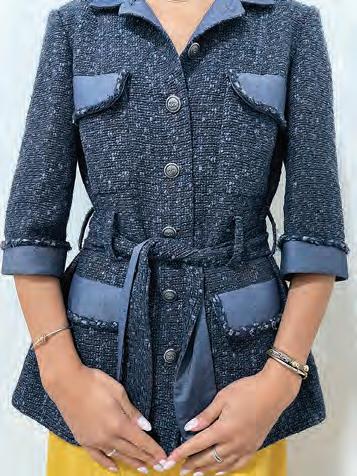
“I am not a perfect size,” Burden admits with a shrug from her office. The mother of two, who is also the step-granddaughter of Babe Paley, routinely visited tailors for everything from eveningwear to T-shirts. Despite it being such a big part of her sartorial life, she could never find a shop she could rely on. “Two tailors I used went out of business during Covid. One was on the Upper East Side, and I live in Tribeca. It was a nightmare to go there. The last straw was going for a pickup one day, and what I needed wasn’t ready as promised. It was all such a waste of time.”
And time, as we know, is a New Yorker’s most valuable commodity. Burden’s mission was to eliminate the search for someone talented within a convenient radius. The only way to do so was to bring the tailor to the client, rather than the other way around.
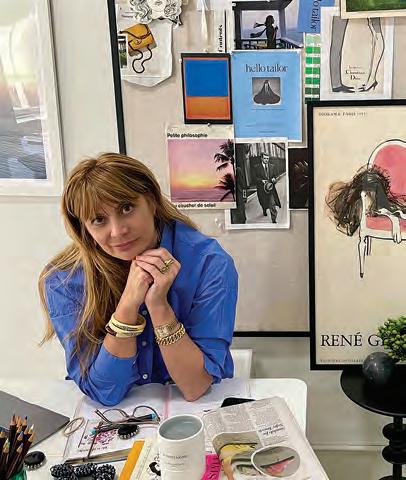
Hello Tailor will arrive to your home or office to try on and pick up your garments. Everything from alterations and repairs to custom monograming and embroidery is on offer, from craftspeople who know the difference between Givenchy and the Gap. “Once you get used to having a great tailor, you see a huge difference,” Burden says. “The quality of work speaks for itself. What they do is like open heart surgery.” The team then steams items and returns them in a recyclable garment bag.
The company will also take any unwanted clothes sitting in the back of your closet and give them to a good cause. After mending them to ready-to-wear condition, they are donated to 100 Suits (an organization that provides the underprivileged with resources to elevate their employment opportunities) and Dress for Success (which supports women in their journey to financial autonomy). Meanwhile, for every $500 Hello Tailor makes, a tree gets planted by the nonprofit organization, One Tree Planted.
Burden’s many clients, which include Vogue editors and black-tie gala regulars, are hooked. “When you get clothes fitted and tailored, everything in your closet is an option. There’s a huge amount of self-confidence that comes with a closet filled with choices,” she says. “What may start out as an indulgence becomes a necessity.”
LULU LARKIN
WEMPE KEEPS WATCHES SAFE
Watch collectors have Wempe—the Fifth Avenue luxury timepiece boutique—on speed dial for that impossible-to-find Rolex Daytona or the $325,265 Grand Complications Men’s Patek Philippe. And with any mouth-watering, über-expensive watch collection comes the task of storing your pieces in safety and style. Wempe has that covered, too. Slip downstairs to the private lounge-cum-showroom (which feels more like a member’s club) and behold the dazzling array of Buben & Zörweg watch winding safes. Founded in Germany in 1995 by childhood chums Harald Buben and Christian Zörweg (who developed the “Time Mover” tech-
nology in 1998), the watch winding cabinets can be custom-built to house dozens of priceless pieces along with enviable add-ons, like a state-of-the-art stereo system; high-precision tourbillon clocks; humidors, bars, and hidden compartments for jewelry; and motion-activated, high-security safes. Buben & Zörweg cabinets are stylish works of art in themselves, with luxurious finishes in wood,
lacquer, glass, and stainless steel. Buben & Zörweg can custom-make the watch winding safe of your wildest dreams—there is even a cabinet in pink quilted leather for the Barbie obsessed and, for $127,600, you can store your watches in the Collector Deluxe Ebony Grigio—a masterpiece in black semi-gloss with inlays of ebony. As they say, time is money. —PD
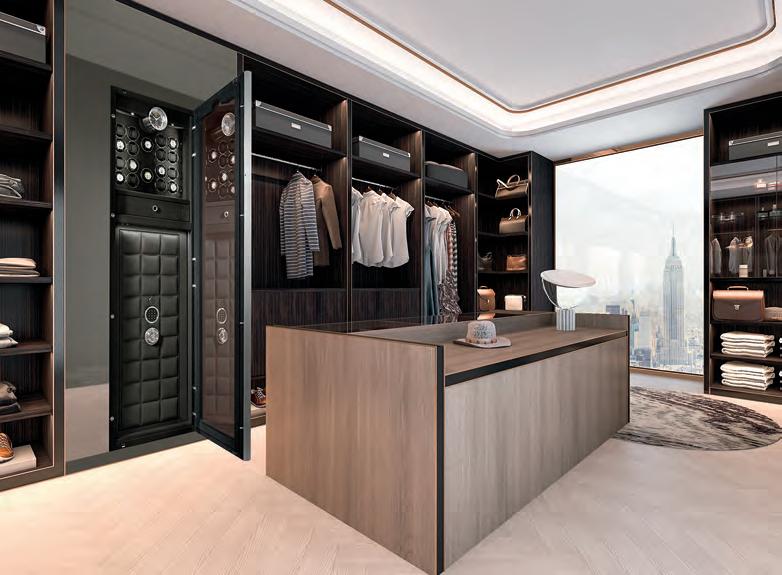
HELLO TAILOR TEAM; WEMPE 104 AVENUE MAGAZINE | SEPTEMBER—OCTOBER 2023
ABOUT TIME Wempe and Buben & Zörweg ensure watches are stored safely and stylishly.
THE PERFECT CUT Charmaine Burden’s new business, Hello Tailor, brings cut-and-sew masters to your home.
BLAKE ANDING OF CLASSIC SOFA
In 2012, Blake Anding saved Classic Sofa from financial ruin. Founded in 1982, the venerable furniture company was being mismanaged and on the verge of bankruptcy. A former financial advisor, Anding paid off the debt and reimagined the business on the fundamentals of marrying beauty, functionality, and old-world craftmanship.
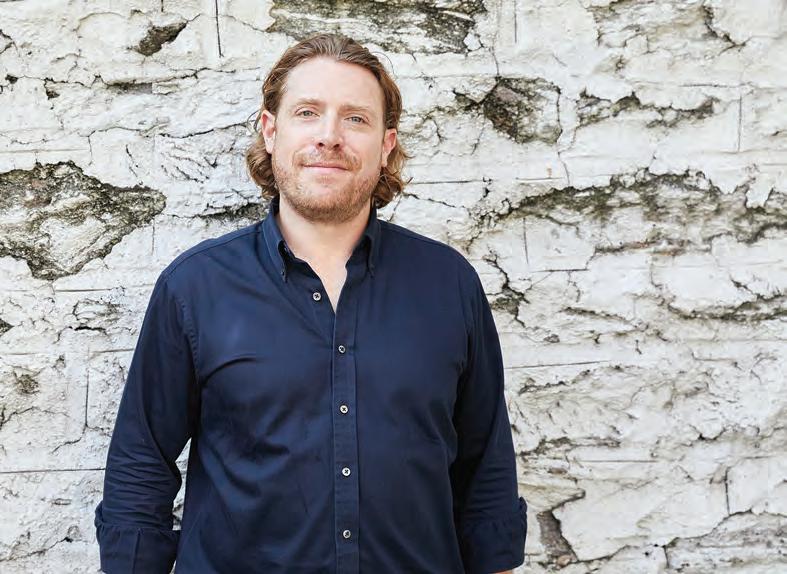
“It is important to understand how the body is going to fit a piece ergonomically and have anthropometric designs to truly tailor to the body,” Anding says of the craft. “We take time to get to know the client. I always ask, ‘How is it going to be used? How are you going to be comfortable?’” He adds, “There is no problem we don’t have a solution for.”
Classic Sofa provides woodwork and upholstery to both residential and commercial clients that not only includes furniture, but also framing and cushioning, all with exquisite fabrics. “Our ethos is in old-world manufacturing, handmade by master artisans to create unique pieces of art. We try to embody the philosophy of Hepplewhite and Chippendale’s never-ending pursuit of classical, timeless perfection through a dynamic, modern lens,” Anding explains.
With lead times of just three to four weeks, Classic Sofa promises to deliver pieces that will last a lifetime. “Making a difference in people’s lives is more rewarding than any job I’ve had,” he admits. “I receive emails, pictures, and videos of our pieces
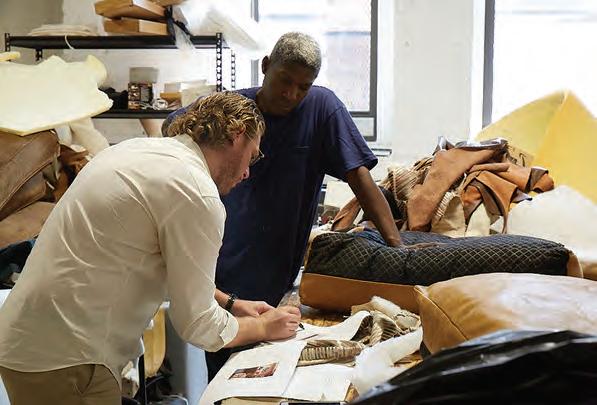
THE CITY
being lived in and used.” Anding cares deeply about relationships with everyone in the process, from clients to designers and artisans. “They are all my family,” he beams. “I love these guys.”
Classic Sofa works with all the top interior designers, like Carrier and Company, Richard Keith Langham, and Sara Bengur, to name just a few. No job is too big to tackle, like a modern and decidedly unconventional 20-by-20-by-20
foot, seven-piece, U-shaped couch with zero breaks, which underwent three sitting tests and a retailoring of the arms before it was built and installed in an apartment by 12 craftsmen. “We are giving creative clients and designers a tool that they never had before,” Anding concludes proudly. “What we offer is no bullshit. Designers want what they want, when they want it. We get things done.”
HIBBARD NASH SEPTEMBER—OCTOBER 2023 | AVENUE MAGAZINE 105
HAVE A SEAT Blake Anding, who saved Classic Sofa from financial ruin, is hands-on with his work.
LL
“IT IS IMPORTANT TO UNDERSTAND HOW THE BODY IS GOING TO FIT A PIECE...” ANDING SAYS OF HIS CRAFT.
The Gilded Age Grifter
Jim Fisk’s financial crimes nearly took down a presidency. But his comeuppance came from an unusual source: his mistress’s new boyfriend. Aria Darcella untangles the dirty deeds of the robber baron lost to time, and the affair that undid him
As the saying goes, bad things happen to good people. Thanks to karma, bad things happen to bad people, too. Or, at least, a bad thing happened to the financier James “Jubilee Jim” Fisk Jr. While the Gilded Age robber baron never faced repercussions for creating a panic on gold in 1869, he did die at the hands of a jilted business partner, with whom he was in a bitter love triangle. And thus, his murder completely overshadowed his dirty business dealings—even the one that almost besmirched a presidential office.
Fisk was born on April Fool’s Day in Pownal, Vermont, in 1835. The son of a humble peddler, he ran away from home at 15 to join the circus, only to eventually return and settle down. At 19, he married Lucy Moore and, like his father, became a salesman. Later, during the Civil War, he made money selling fabric to the government. But his financial situation didn’t take a turn until the war
was over, when he used a hot tip to make some quick cash.
Upon learning that the war was coming to an end, Fisk sent an agent to London to short sell Confederate stocks. This entailed loaning stocks from a broker only to immediately sell them. When the stock prices crashed (as Fisk knew they would), he bought them back at a much lower price, returned them to the broker for the original loan price, and pocketed the difference. It was a 19th-century version of The Big Short—and it wouldn’t be the last time Fisk tried the trick.
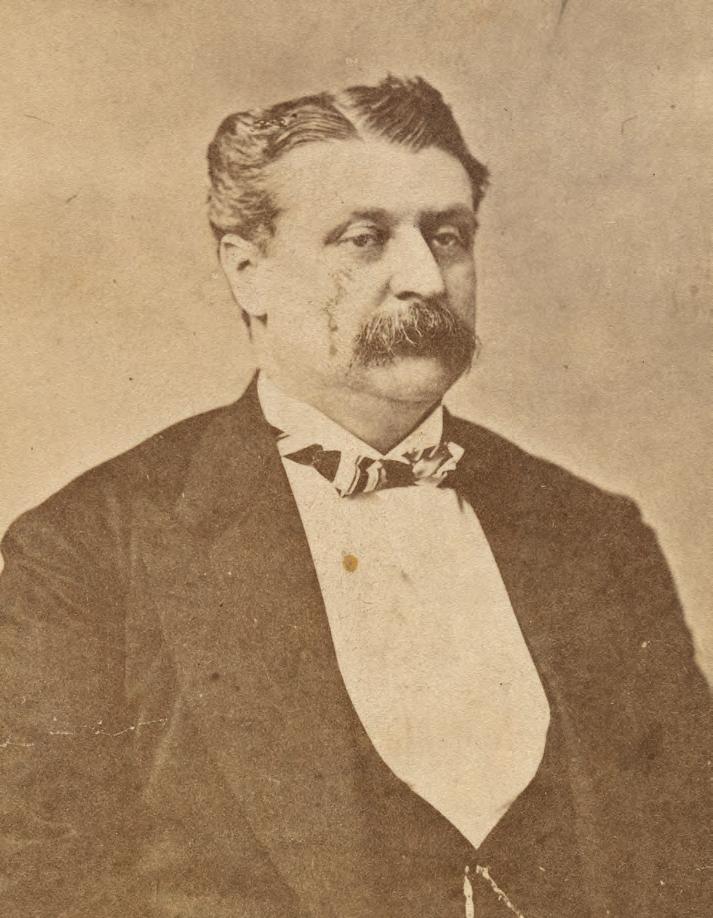
By 1864 Fisk had moved to New York to work as a stockbroker, landing in the offices of Daniel Drew, famously helping him wrestle the Erie Railroad away from Cornelius Vanderbilt by manipulating the company’s stocks. While there, Fisk met Jay Gould, and a terrible twosome was born. The duo bribed judges and legislators and colluded with politicians. But their biggest scheme involved gold and the president of the United States. It was a disaster that became known as “Black Friday.”

106 AVENUE MAGAZINE | SEPTEMBER—OCTOBER 2023 NATIONAL PORTRAIT GALLERY/SMITHSONIAN INSTITUTION
NOTORIOUS NEW YORKERS
FRISKY BUSINESS Left: the death of Jim Fisk in 1872 was splashed all over New York’s papers. Right: Fisk in 1870, when he was still on top of the world.
When Ulysses S. Grant assumed the presidency, the economy was in near shambles, and the country was in debt. To fix this, the treasury began selling off its gold, putting it into public circulation. Fisk and Gould hatched a plan to slow the government’s gold sale, while also buying as much of it as possible. This would drive up demand, and thus its value, earning Fisk and Gould a hefty return on investment.
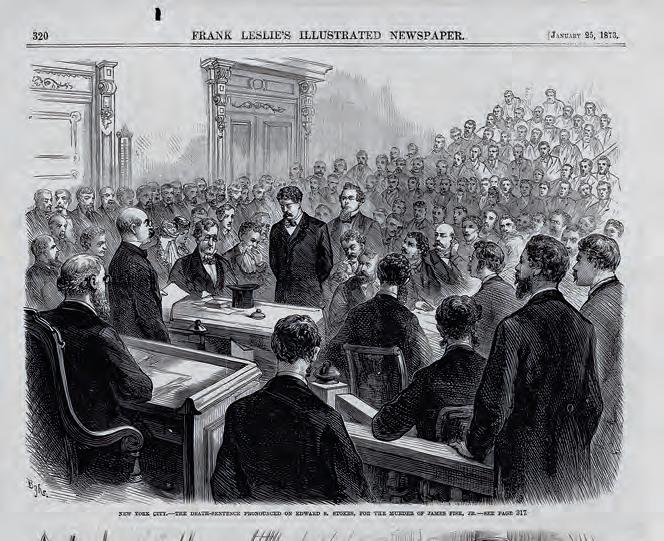
They teamed up with a man named Abel Corbin, who was married to President Grant’s younger sister, to gain access to the president in an effort to manipulate him into stopping the sale of government gold. Grant didn’t fall for it. To make matters worse, when he eventually found out about the scheme, he released $4 million worth of the government’s gold into the market. Gold prices plunged, taking the rest of the stock market—and the economy—down with them.
The entire debacle became a massive blight on Grant’s time in office. A congressional investigation was held, and because of the Corbin connection and that Grant had been seen with Fisk and Gould, many believed he was in on their plans (although he was officially declared innocent). Thanks to a team of lawyers, Fisk also avoided consequences— but his luck was about to run out.
During his rise in New York as a stockbroker, Fisk was something of a ladies’ man, who flirted by passing out $100 bills (the equivalent of giving $2,000 to a cute stranger at a bar today). His wife, who lived in Boston (and with whom he was very close), didn’t mind his philandering. It is believed she had a girlfriend of her own.
At the home of a mutual friend, he met Josie Mansfield, a struggling actress and divorcée in dire financial straits. She successfully wooed him by rejecting his usual $100 bill trick, but eventually got him to subsidize her rent, fill her closet with new dresses, outfit her with a variety of jewels, and fork over cold, hard cash. It was a very lavish, very public romance that was gossip fodder for high society at the time.
Sadly, her affections waned in 1870 when she fell in love with Edward Stiles Stokes, a married associate of Fisk’s. Mansfield and Stokes left their respective partners to be together, but not even love could make up for Fisk’s money.
Mansfield attempted to extort funds from her former beau by threatening to publish their private correspondence, which she claimed proved his business malpractices. Stokes also threatened to blackmail Fisk, but the financier wouldn’t budge. He instead began a legal battle for the return
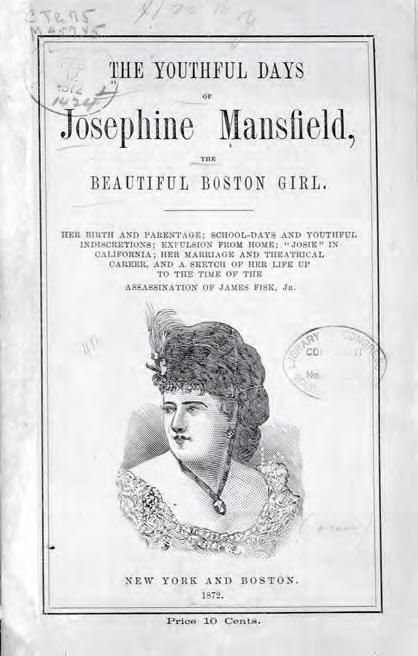
of his letters, and for Stokes’s share of stocks in a Brooklyn oil refinery they were in business together on. Fisk won both suits, enraging Stokes.
On the afternoon of January 6, 1872, Stokes confronted Fisk at the then-new Grand Central Hotel in the East Village and shot him twice. According to the Library of Congress, Fisk shouted, “For God’s sake, will no one save me?” as he fell. It was a slow, painful death (Fisk didn’t pass away until the following morning), but it ensured he was able to identify Stokes as the shooter, who was apprehended quickly.
By many accounts, Fisk was a notable rogue of the Gilded Age, villainized by high society for his scandalous affairs, brazen manipulation of the stock market, and the garish way he displayed his wealth. But, ultimately, save for being immortalized in the 1937 film The Toast of New York (which played fast and loose with the facts), he didn’t achieve the legacy that his fellow robber barons—like John Jacob Astor, J.P. Morgan, John D. Rockefeller, and Vanderbilt—did. Perhaps if he had lived longer (Fisk was only 36 when he died), he would have had ample time to build a more lasting legacy. Or, at least, add a few more high-profile crimes to his CV.
The New York Times’s account of the murder summed his life up best: “Here is a man who for years the world has called by the hardest and most opprobrious names, sent with scarcely a moment’s warning to his endless doom, and by one who, to say the least of it, is no better than he should be.”
SEPTEMBER—OCTOBER 2023 | AVENUE MAGAZINE 107
CORBIS HISTORICAL/GETTY IMAGES
FISK WAS A NOTABLE ROGUE OF THE GILDED AGE, VILLAINIZED BY HIGH SOCIETY FOR HIS SCANDALOUS AFFAIRS, BR AZEN MANIPULATION OF THE STOCK MARKET, AND THE GARISH WAY HE DISPLAYED HIS WEALTH.
ROGUE-ISH COMPANY After his death and the trial of Edward Stokes (Fisk’s killer and former friend), Fisk’s mistress, Josie Mansfield, also became tabloid fodder.
CHRISTIAN SIRIANO

In 2007, the designer won Project Runway, launching his career in fashion and gaining him a huge celebrity following. These days, the 37-year-old juggles red-carpet gowns with a booming interior design business. To celebrate his 15th anniversary in the industry, Peter Davis speaks to him about furniture, his famous friends, and why you will never catch him in a pair of Crocs.
Were you into interiors as a child?
My mom would make her own tapestries. I would go with her to fabric and furniture stores growing up. I was very involved in that process—building a home or a room with my mom. Fashion came after that. I was a ballet dancer. That was exciting to me: the world of costumes and transformation.
Do you still dance?
I don’t, sadly. But I want to start taking ballet classes again. This fashion week collection is my 15th anniversary and is going to have a lot of ballet inspiration to bring back things I loved when I was a kid.
I bet your childhood room was decorated to the nines.
It was pretty eclectic. As a kid I loved going to flea markets and antique stores. I love a vase. I love a bowl. But I had my band posters. Britney and NSYNC were hanging on my wall.
You have a chic house in Westport now. I live half the time in Westport and in Tribeca. Westport is an ultimate kind of getaway. We have a beautiful pool and three acres, and I have my store there, which has been exciting. Some weeks I want to be in Connecticut all the time, and then other weeks I want to be in the city all the time.
Does your boyfriend influence your interior design?
He’s really into interiors. I’ve rubbed off on him. He loves going antiquing all over the world. We were in Milan recently, and he was like, “Let’s go find some really cool art.” I thought all he would want to do is shop for clothes.
Any interiors trends that you loathe?
I love chinoiserie wallpaper and all that, but I am more modern. The world of interiors isn’t as judgmental as fashion. Well, they are, but they’re not as tough on you if
you’re wearing Crocs. I don’t think there’s the equivalent to Crocs or sweatpants in a home. Maybe a La-Z-Boy chair, which is rude to say. Sorry, but I don’t want a big recliner in my living room.
Clients can be needy when you’re decorating a house.
I don’t know if I handle it very well. With clients that come to us for clothes, they’re just excited to get something beautiful. With people’s homes, they are so much more emotional about it. A chair can really make somebody have a breakdown. You’re kind of a therapist. But I’m good at reading people. My goal always, whether it’s a dress or a piece of furniture or a rug, is to make people feel great about themselves and their world.
Fifteen years in fashion. Congratulations! Your front row is always so star-studded. We’re still hanging on, so that’s good. I have a lot of famous clients and friends. Oprah was one of the first people I ever dressed. I was dressing Lady Gaga before anyone knew who Lady Gaga was. I was Lizzo’s first fashion show and Cardi B’s first fashion show.
Furniture and fashion seem to go hand in hand for you.
There is definitely overlap. I just reupholstered these amazing chairs in this beautiful shearling fabric that I bought from an Italian mill for a coat three seasons ago that I never used.
Your store is a veritable Siriano mecca, with furniture, clothes, fragrance–it’s a one-stop style destination.
I missed the old Barney’s and Jeffrey and all the cool multi-brand stores that were interesting and unique. That’s where I fell in love with fashion. I did it in Connecticut because, especially in Westport, there is such a need. There are a million stores in New York, we don’t really need any more.
108 AVENUE MAGAZINE | SEPTEMBER—OCTOBER 2023
MARK SAGLIOCCO/GETTY IMAGES
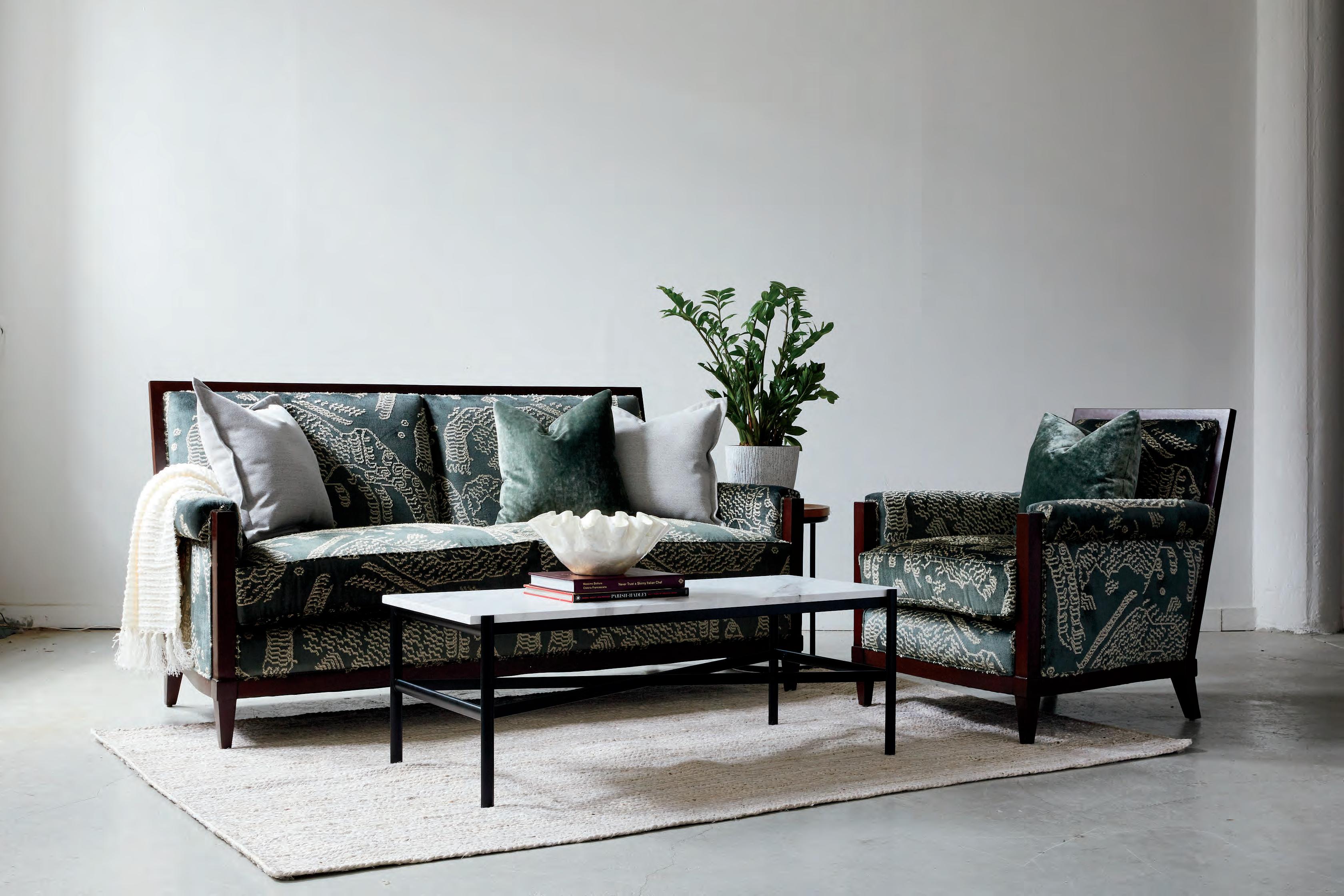
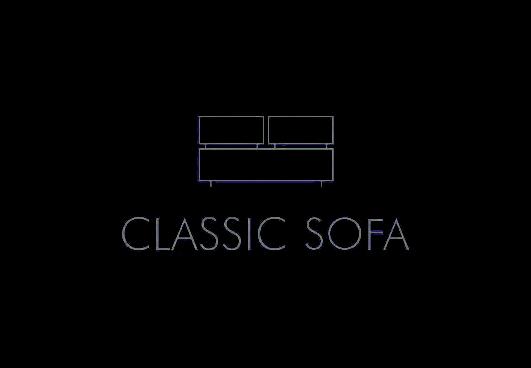
made in New York City | www.classicsofa.com | @classicsofa
classic never goes out of style
AT CLASSIC SOFA, CUSTOM MEANS QUALITY, NOT LONG LEAD TIMES. DELIVERED IN 4-5 WEEKS
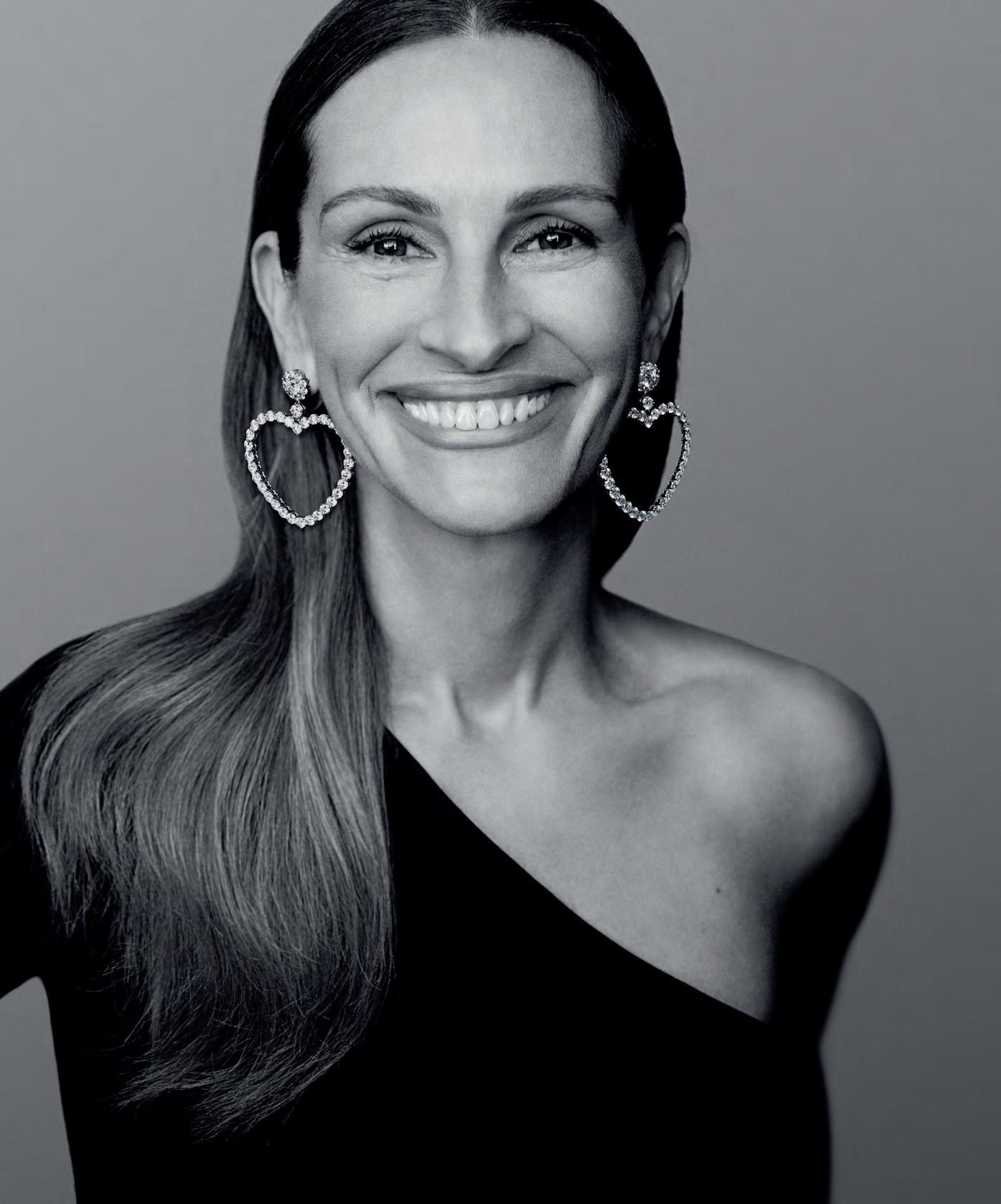


HAUTE JOAILLERIE CHOPARD BOUTIQUES NEW YORK 730 Fifth Avenue – MIAMI Bal Harbour Shops – COSTA MESA South Coast Plaza 1-800-CHOPARD www.chopard.com





 BY PETER DAVIS
BY PETER DAVIS

































 —CIARAN MC GUIGAN
—CIARAN MC GUIGAN










 I AM WOMAN, HEAR ME ROAR Artist Ashley Longshore is ready for the ride.
I AM WOMAN, HEAR ME ROAR Artist Ashley Longshore is ready for the ride.








 BY ANNABEL KEENAN
BY ANNABEL KEENAN



























 © 2012,Rick Lewis, Jinni
© 2012,Rick Lewis, Jinni






























 Sofa Bellissimo Brioche Pillows Bellissimo Nickel Wall Panels (top to bottom) Bellissimo Nickel, Porcini and Tiramisu
Sofa Bellissimo Brioche Pillows Bellissimo Nickel Wall Panels (top to bottom) Bellissimo Nickel, Porcini and Tiramisu






 The Nick Cave Collection
The Nick Cave Collection








 ted hildner
ted hildner








 POWER OF NATURE Organic works from the group show “Green World” earlier this year at Emma Scully Gallery.
POWER OF NATURE Organic works from the group show “Green World” earlier this year at Emma Scully Gallery.






 STRIKE A POSE The daily yoga class on a deck perched above Indonesia’s Bukit Peninsula.
STRIKE A POSE The daily yoga class on a deck perched above Indonesia’s Bukit Peninsula.













 HYDROTHERAPEUTIC HAMPTONS A healing pool at the spa.
BATHING BEAUTY
A Japanese hinoki ofuro tub is in every suite.
TEA TIME Shou Sugi Ban House’s serene scene.
WATER MILL AWAKENING
HYDROTHERAPEUTIC HAMPTONS A healing pool at the spa.
BATHING BEAUTY
A Japanese hinoki ofuro tub is in every suite.
TEA TIME Shou Sugi Ban House’s serene scene.
WATER MILL AWAKENING







 Kelly Mack Corcoran Sunshine Marketing Group President
Kelly Mack Corcoran Sunshine Marketing Group President






 Erin Boisson Aries Douglas Elliman Associate Real Estate Broker
Erin Boisson Aries Douglas Elliman Associate Real Estate Broker








 Richard Ziegelasch
Richard Ziegelasch
















